disintermediation
description: removal of intermediaries from a supply chain
177 results

The Digital Party: Political Organisation and Online Democracy
by
Paolo Gerbaudo
Published 19 Jul 2018
They are therefore positioned as intermediaries that connect multiple users: customers, advertisers, service providers, manufacturers ... and even physical objects’.149 Namely, although these companies promise to do away with middlemen, bottlenecks, impediments and barriers to participation, they are in and of themselves intermediaries of sorts. Counter to what libertarian techno-evangelists would want us to believe, disintermediation does not stop at the level of erasing existing structures and hierarchies. Disintermediation always implies an act of re-intermediation: while eliminating old brokers, digital companies are themselves brokers introducing new higher-level intermediations.150 The ideological function of the discourse of disintermediation is obfuscating this reality of re-intermediation and the power relations that are involved in it. The higher-level intermediation offered by platforms revolves around standardisation: the definition of a number of protocols and rules regulating interactions.
…
Besides using available commercial platforms, these parties have also developed their own dedicated online participation platforms, which provide a space for members/users to be involved in deliberations and ratifications. This transformation revolves around the attempt of updating the political party to leverage the power of digital technologies. The disintermediation achieved by FAANGs in several areas of information, culture, knowledge, commerce, entertainment, is being translated by digital parties in the promise of a more direct democracy that would disintermediate between voters and representatives. By tapping into the affordances of digital platforms, these parties aim at doing away with the bureaucratic ‘third element’, which – as we discussed at the end of chapter 1 – was considered central to the operation of the mass party and which is now considered not only an unnecessary intermediary but also as a bias factor in projecting the will of the people.
…
These structural features can be better understood when approaching the functional logic of digital companies and the disintermediation process which lies at their core. Indeed, these companies’ justification narrative revolves around the promise to allow users to do directly things that before had to be mediated by a number of middlemen; for example publishing their thoughts directly on their Facebook wall instead of sending a letter to the local newspaper, or calling a taxi on the Uber app instead of using a mini-cab company. Disintermediation is thereby associated with customisation, convenience and ultimately personal freedom, with the promise of making everyday life easier and more creative.
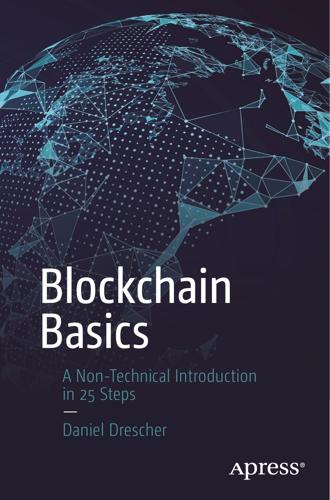
Blockchain Basics: A Non-Technical Introduction in 25 Steps
by
Daniel Drescher
Published 16 Mar 2017
Hence, the argument that explains the excitement about and the potential of the blockchain is: Purely distributed peer-to-peer systems have a huge com- mercial potential as they can replace centralized systems and change whole industries due to disintermediation. Since purely distributed peer-to-peer systems may use the blockchain for achieving and maintaining integrity, the blockchain becomes important as well. However, the major fact that excites people is the disintermediation. The blockchain is only a means to an end that helps to achieve that. ■ Note The excitement about the blockchain is based on its ability to serve as a tool for achieving and maintaining integrity in purely distributed peer-to-peer systems that have the potential to change whole industries due to disintermediation. Outlook This step explained what peer-to-peer systems are and highlighted their potential to change whole industries due to disintermediation.
…
The evolution of the Internet and its impact on our society not only confirm that wisdom, but it also shows that estimating long-term effects of technical innovations is hard. However, the following aspects are promising candidates for becoming the long-term accomplishments of the blockchain: • Disintermediation • Automation • Standardization • Streamlining processes • Increased processing speed • Cost reduction • Shift toward trust in protocols and technology • Making trust a commodity • Increased technology awareness Disintermediation The blockchain does not destroy the role of the middleman but instead it establishes itself as a digital and strictly rule-following middleman. Replacing one middleman with another may not be a big deal, but replacing a human organization that relies on the trust of its customers with a software system that encodes trust is a huge achievement.
…
Hence, the review of existing business processes and redesigning and streamlining them could be another accomplishment of the blockchain that may persist. Increased Processing Speed Disintermediation, standardization, streamlined processes, and automation lead to a significant speed up of processes. Hence, one can expect that the more the blockchain is used, the more timely transactions and interactions between contracting parties will be executed. The speeding up of processes that once involved time-consuming manually performed tasks could be another long-term contribution of the blockchain. Cost Reduction The economic consequence of automation, disintermediation, and standardization is often a reduction of costs.
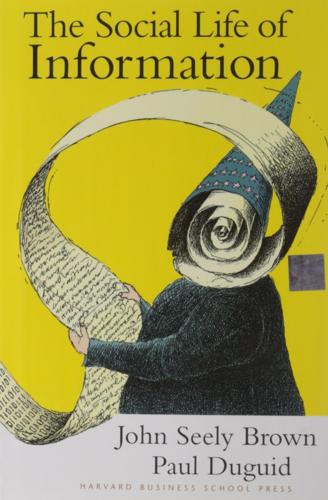
Social Life of Information
by
John Seely Brown
and
Paul Duguid
Published 2 Feb 2000
The direction of organizational change is especially hard to discern. The 6-Ds present it as a foregone conclusion. Page 28 More Dimensions Similarly, despite talk of disintermediation and decentralization, the forces involved are less predictable and unidirectional than a quick glance might suggest. 32 First, the evidence for disintermediation is far from clear. Organizations, as we shall see, are not necessarily becoming flatter. And second, where it does occur, disintermediation doesn't necessarily do away with intermediaries. Often it merely puts intermediation into fewer hands with a larger grasp. The struggle to be one of those few explains several of the takeovers that we mentioned above.
…
Each of these examples points not to the dwindling significance but to the continuing importance of mediation on the 'Net (as does the new term infomediary, another case of infoprefixation). Moreover this kind of limited disintermediation often leads to a centralization of control. These two Ds, then, are often pulling not together, but against one another. Not Flatter. Francis Fukuyama and Abram Shulsky conducted a RAND study in 1997 into the relationship between disintermediation, flat organizations, and centralization on behalf of the army. They began by studying the private sector. Here they give little hope for any direct link between information technology and flatter organizations.
…
Similarly, those who talk about having direct, unmediated access to the news sometimes sound equally oblivious to how news is made. They sound as if to find the "real" news on Russia, for example, they would expect to pick up the phone and get Boris Yeltsin on the other end of the line. But it requires a profoundly naïve belief in "disintermediation" (see chapter 1) to assume that all the links that fall between Yeltsin and the news are somehow interference in the information channel. Rather, it is in these stepsfrom sources to reporters to editors and news organizationsthat news is made. Without them, again, there would be no story. Nonetheless, when information takes center stage and lights dim on the periphery, it's easy to forget these necessary intermediaries.

The Measure of Progress: Counting What Really Matters
by
Diane Coyle
Published 15 Apr 2025
See also human capital capital services, 209 care economy, 107 chained indices, 202–3 Chinese data markets, 148 class mean inputation, 189 climate mitigation, natural capital accounting and, 223 cloud computing, 88–92; global trade and, 166–71; price of in UK, 196, 197; productivity measurement and, 90 cloud computing stack, 169 balance sheet: comprehensive, 214–15, 215; needed in measurement of economic welfare, 260 banking, online, 111–12 297 298 communication technology: alternative production structures and, 75–76; global trade and, 154–55 competition: for consumer attention and time, 69; in digital markets, 59; productivity growth and, 59 competitive advantage of firms, productivity and, 36 Competitive Advantage of Nations, The (Porter), 36 complementarities, in comprehensive wealth framework, 249, 250 comprehensive wealth framework, 210–12, 239, 247–50; capabilities and, 243, 250–51; classifying components of, 212–16, 215; human capital and, 225 computation, business cost of carrying out, 196–97 conflicts of interest, algorithms and, 29–30 constant elasticity of substitution (CES), 110 constant utility construct, measuring inflation and, 192–93 construction, digitisation of large-scale, 86–87 consumer content delivery timeline, 114 consumer-facing digital innovation, economic value of, 41 consumer price indices (CPIs), 181, 185; overstatement of inflation in, 190–91; problems with, 182–88 consumer surplus/consumer value, estimates of, 138 consumer welfare: effect of digital revolution in consumption on, 133–37; stated preference methods and, 133–37 consumption: digital revolution and, 133–37; measurement of economic welfare and distribution of, 260; time use and, 65–66, 105, 123–24, 256–58 consumption-equivalent welfare, 242–43 Consumption Takes Time (Steedman), 123, 258 contingent (gig) employment, 105, 116–20 contingent valuation methods, to estimate shadow prices, 217–18 i n de x contract manufacturing, 75, 75; factoryless goods production and, 76–81, 81 cost-of-living index, 187 COVID lockdowns, effect on online behaviour, 135–36 cross-border trade, 154–56; data and the cloud, 166–71, 169, 171; digitally enabled services, 162–65; digital stack and digital public infrastructure, 171–75, 176; e-commerce, 165–66; global production networks, 157–62 dark web, prices for personal data on, 148, 148 dashboard approach to measuring economic progress, 244–47 data: characteristics affecting value of, 147; global trade and, 166–71; typology of data valuations, 151–52, 152; valuing, 145–52, 147, 148, 151, 152; valuing digital, 129 data bias, 29–30 data brokerage market, 146 data-driven decision-making, automating, 27–31 data localisation, 91, 169–70 data loop, 146–47 data trading countries, categories of, 170–71, 171 Day Reconstruction Method, 234 debt, comprehensive wealth framework and, 249 decomposition, 59; comparing methods of, 48–52 deflation, 178–79 deflators, 203; price indices and, 181; producer prices and GDP, 195–96; quality- adjusting, 46; significance of problems with, 190–95 degrowth movement, 219–21 dematerialisation, 72–98; cloud computing, 88–92; factoryless goods production, 73, 74, 75, 75, 76–81, 881; services, 93–97; servitisation, 73–74, 75, 75, 81–85; sources of economic value, 85–88 Democracy in America (Toqueville), 221 i n de x democratic institutions, living standards and increasing, 221 diamond-water paradox, 126 digital disintermediation, 104–5; gig employment and, 116–20; time saving and, 121 digital intermediation, 101–2; household capital and, 113–16 digitally disintermediated activities, 108–12 digitally enabled services, 22, 162–65, 164. See also “free” digital services digitally intermediated services, production boundary and, 104–5 digital nomad visas, 163 digital platforms: enabling hybrid and remote work, 120–21; subscription economy and, 93–97 digital products, user-generated, 142–45 digital public infrastructure (DPI), 171–76, 248; components of, 172, 173 digital rights management (DRM), 95–96 digital stack, 171–76, 173 digital technology: changes in economic activity, 18, 20; effect on time-use, 257–58; time to produce and, 66–67 digital tools, highest productivity firms and, 52–53 digital trade, conceptual framework for, 175, 176 digitisation: alternative production structures and, 75–76; as driver of FGP and servitisation, 85–88; shifting transactions out of market into household, 99–102 digitised information, as intangible asset, 229 domestic capital, gig work and, 119–20 Donut Economics (Raworth), 220 Dyson, use of contract manufacturers, 77 Easterlin paradox, 236–37 e-commerce, 99–101, 112, 165–66, 166 econometric estimation, 189–90 economic activities, measuring economic progress and classification of, 253–55 economic competencies, as intangible asset, 229, 231 299 Economic Consequences of the Peace, The (Keynes), 155–56 economic discontent, extremist politics and, 5–6 economic geography, 21–22, 255–56 economic growth: measuring, 11–15; productivity growth and, 37.
…
. | BISAC: BUSINESS & ECONOMICS / Statistics | POLITICAL SCIENCE / Public Policy / Economic Policy Classification: LCC HB139 .C69 2025 (print) | LCC HB139 (ebook) | DDC 330.9—dc23/eng/20240823 LC record available at https://lccn.loc.gov/2024036081 LC ebook record available at https://lccn.loc.gov/2024036082 British Library Cataloging-in-Publication Data is available Editorial: Hannah Paul, Josh Drake Production Editorial: Elizabeth Byrd Jacket: Karl Spurzem Production: Erin Suydam Publicity: James Schneider (US), Kate Farquhar-Thomson (UK) Copyeditor: Christina Roth Jacket Credit: Pixel-Shot / Shutterstock This book has been composed in Arno Printed in the United States of America 10 9 8 7 6 5 4 3 2 1 c on t e n t s Figures and Tables vii Introduction 1 1 “Political Arithmetick” 9 2 Productivity without Products 34 3 Dematerialisation 72 4 (Dis)intermediation 99 5 Free 126 6 Borders 154 7 Value 178 8 Wealth 205 9 A New Framework? 240 References 265 Acknowledgements 293 Index 297 v l i s t of f igu r e s a n d t a bl e s Images 1.1. Harvard Economics Department summer picnic, 1982. 10 1.2. Holding a copy of William Petty’s Political Arithmetick (1690) at Chetham’s Library, Manchester. 23 3.1.
…
It does not argue that the slowdown is a mirage due to mismeasurement but rather that the role of digital innovation is at the heart of productivity growth and its absence, and this has consequences for what statistics are needed for economic policy and business decisions. Chapters 3 to 5 then look in detail at measurement challenges due to digitalisation: the dematerialisation of economic value, the disintermediation of activities and business model changes, and the provision of free products. Chapter 6 follows up with a focus on globalisation (itself possible thanks to digitalisation) and the impossibility of “P o l i t i c a l A r i t h m e t i c k ” 33 understanding flows of value across borders.

Nerds on Wall Street: Math, Machines and Wired Markets
by
David J. Leinweber
Published 31 Dec 2008
News systems are seeing something of a revival now, and those evaluating them can perhaps extract some ideas from this work. Pre-News and Disintermediation The democratization and disintermediation of information is a key part of the explanation of why news is largely reflected in prices before it appears in the newspapers and their electronic outlets. People can do for themselves much of what reporters have traditionally done. News organizations feel the same kind of pressure as brokers from disintermediated customers. People can eliminate the middlemen, and go directly to primary sources. These are the same sources used by reporters to write the “just the facts” stories that have been the mainstay of the news business.
…
The information is now impounded in prices in less than one day (i.e., minutes to hours), and the leakage is even larger for negative surprises. This is an early example of the democratization of information brought about by the Web. The Internet is a threat to people who make their living as intermediaries. Direct market access has disintermediated brokers, many of whom are now in other lines of work. Direct access to primary sources of financially relevant information is disintermediating reporters, who now have to provide more than just a conduit to earn their keep. We would be hard-pressed to find more innovation than we see today on the Web. Google Finance, Yahoo! Finance, and their brethren have made more advanced information retrieval and analysis tools available for free than could be purchased for any amount in the notso-distant past.
…
; Genetic Algorithms; Evolving Financial Models; An Early Lesson; Arbitrage and Predictive Strategies; Maximizing Predictability; Chromosomes for Forecasting Models; Fitness Functions for Forecasting Models; Use of the GA for Coping with a Combinatoric Explosion of Models; Genetically Optimized Forecasting Models in Hindsight; Genetic Algorithm Warning Label Chapter 9: The Text Frontier: AI, IA, and the New Research 203 Ten Pounds of News in a Five-Pound Bag; Pre-News and Disintermediation; More Pre-News on the Internet Contents ix Chapter 10: Collective Intelligence, Social Media, and Web Market Monitors 227 Investing with Crowds; Never Met a Data Vendor I Didn’t Like; Santa Claus Is Coming to Town; Counting Messages; Whisper Numbers—Ruined by Success; Monitoring Web Activity; More Web, More Warnings Chapter 11: Three Hundred Years of Stock Market Manipulations: From the Coffeehouse to the World Wide Web 253 The Power of Manipulation; A Classic Market Manipulation; The Very Model of a Modern Market Manipulator; Bluffing; How Communication Changes Market Manipulation; Anatomy of a Successful Manipulation; The Internet Era; Cyber-Manipulations; It’s Not Just Micro-Caps; Where Are We Headed?

The Filter Bubble: What the Internet Is Hiding From You
by
Eli Pariser
Published 11 May 2011
A New Middleman New York Times critic Jon Pareles calls the 2000s the disintermediation decade. Disintermediation—the elimination of middlemen—is “the thing that the Internet does to every business, art, and profession that aggregates and repackages,” wrote protoblogger Dave Winer in 2005. “The great virtue of the Internet is that it erodes power,” says the Internet pioneer Esther Dyson. “It sucks power out of the center, and takes it to the periphery, it erodes the power of institutions over people while giving to individuals the power to run their own lives.” The disintermediation story was repeated hundreds of times, on blogs, in academic papers, and on talk shows.
…
Eliminating the evil middleman sitting between us and what we want sounds good. In a way, disintermediation is taking on the idea of media itself. The word media, after all, comes from the Latin for “middle layer.” It sits between us and the world; the core bargain is that it will connect us to what’s happening but at the price of direct experience. Disintermediation suggests we can have both. There’s some truth to the description, of course. But while enthrallment to the gatekeepers is a real problem, disintermediation is as much mythology as fact. Its effect is to make the new mediators—the new gatekeepers—invisible.
…
id=uqqp-sDCjo4C&pg=PA392&lpg=PA392&dq=public+opinion+poll+on+dan+rather+controversy&source=bl&ots=CPGu03cpsn&sig=9XT-li8ar2GOXxfVQWCcGNHIxTg&hl=en&ei=uw_7TLK9OMGB8gb3r72ACw&sa=X&oi=book_result&ct=result&resnum=1&ved=0CBcQ6AEwAA#v=onepage&q=public%20opinion%20poll%20on%20dan%20rather%20controversy&f=true. 54 “a crisis in journalism”: Lippmann, Liberty and the News, 64. 56 at this point that newspapers came to carry: This section was informed by the wonderful Michael Schudson, Discovering the News: A Social History of American Newspapers (New York: Basic Books, 1978). 57 “They goose-stepped it”: Lippmann, Liberty and the News, 4. 57 “what [the average citizen] shall know”: Ibid., 7. 58 “distinctive member of a community”: John Dewey, Essays, Reviews, and Miscellany, 1939–1941, The Later Works of John Dewey, 1925–1953, vol. 2 (Carbondale: Southern Illinois University Press, 1984), 332. 59 calls the 2000s the disintermediation decade: Jon Pareles, “A World of Megabeats and Megabytes,” New York Times, Dec. 30, 2009, accessed Dec. 11, 2010, www.nytimes.com/2010/01/03/arts/music/03tech.html. 59 Disintermediation—the elimination of middlemen: Dave Winer, Dec. 7, 2005, Dave Winer’s blog, Scripting News, accessed Dec. 11, 2010, http://scripting.com/2005/12/07.html#. 59 “It sucks power out of the center”: Esther Dyson, “Does Google Violate Its ‘Don’t Be Evil’ Motto?

Shadow Work: The Unpaid, Unseen Jobs That Fill Your Day
by
Craig Lambert
Published 30 Apr 2015
This form of shadow work provides companies with free market research—and essentially guarantees a certain number of sales, as consumers are nearly certain to buy a product they have helped invent, or customized to their preferences. Disintermediation will also grow as producers sell directly to their customers, eliminating middlemen in venues ranging from farmers’ markets to warehouse stores like Costco. Once inside the stores, customers will deploy their smartphones to become their own salespeople, researching products and their prices without bothering the staff. Retail sales personnel may drop out of the equation, as they have already largely done at big-box stores. Internet commerce makes disintermediation effortless: Consumers buy directly from the site without ever seeing the inside of a store.
…
No change needed to be made, and there was no tipping. Though I didn’t know it at the time, I was performing shadow work. THE KIOSK ARMY Shadow work often comes into play when a technological innovation enables a business, like a restaurant, to remove one or more employees from transactions. It’s a form of disintermediation, a long piece of business jargon that means removing an intermediary—taking out the middleman. Customers can deal directly with the technology instead of an employee. This produces payroll savings for the business, and shadow work for the consumer. The Horn & Hardart Automats used mechanical technology to remove hostesses, waitresses, and cashiers from restaurant dining.
…
The Horn & Hardart Automats used mechanical technology to remove hostesses, waitresses, and cashiers from restaurant dining. Ingenious as they were, the Automats came into being long before the advent of computers and the information revolution. Today’s digital technologies have opened a far wider range of opportunities for this kind of disintermediation, with a consequent explosion of shadow work. Venues and activities that provide some of our more enjoyable hours—restaurants, travel, and, for many, shopping—are evolving in ways that foster shadow work. Robotics are shaping the service industries, displacing human exchanges with kiosk touchscreens.

The Future of the Professions: How Technology Will Transform the Work of Human Experts
by
Richard Susskind
and
Daniel Susskind
Published 24 Aug 2015
If it is not more valuable, then intermediaries will, in due course, be disintermediated, which means they will be removed from the supply chain in which they work. Just as it is now commonplace for travel arrangements to be made and insurance policies purchased without the involvement of human agents, then so too with professionals—if recipients of their services can secure a more affordable, higher-quality, or more convenient service online, then professionals will face the prospect of being disintermediated. For example, to some extent at least, tax advisers are already being disintermediated by online tax preparation software, lawyers by document assembly systems, doctors by diagnostic apps, teachers by MOOCs, architects by online CAD systems, and journalists by bloggers.
…
keyword=k77982&tabgroupid=icb.tabgroup143448> (accessed 7 March 2015). 92 <https://www.duolingo.com>. 93 Larry Summers, ‘What You (Really) Need to Know’, New York Times, 20 Jan. 2012 <http://www.nytimes.com> (accessed 27 March 2015). 94 Saad Rizvi, Katelyn Donnelly, and Michael Barber, ‘An Avalanche is Coming’, IPPR, 11 Mar. 2013. 95 Jonathan Rose, The Intellectual Life of the British Working Classes (2001), 13. 96 Marc MacWilliams, ‘Techno-Ritualization—The Gohonzon Controversy on the Internet’, Heidelberg Journal of Religions on the Internet, 2.01 (2006) <http://archiv.ub.uni-heidelberg.de/volltextserver/6959/> (accessed 7 March 2015). 97 <https://twitter.com> (accessed 7 March 2015). 98 Bianca Bosker, ‘Hook of Mormon: Inside the Church’s Online-Only Missionary Army’, Huffington Post, 4 Sept. 2014 <http://www.huffingtonpost.co.uk> (accessed 7 March 2015). 99 Rick Gladstone and Vindu Goel, ‘ISIS Is Adept on Twitter, Study Finds’, New York Times, 5 Mar. 2015 <http://www.nytimes.com> (accessed 7 March 2015). 100 Brian Johnson, ‘This Week in the Future: Religion & Tech: A Match Made in Heaven’, Shelly Palmer Blog, 13 Dec. 2012 <http://www.shellypalmer.com/2012/2012/12/twtf-religion-and-tech> (accessed 27 March 2015). 101 We are grateful to Rabbi Gideon Sylvester for this point. Thus, the orthodox rabbi can never be ‘disintermediated’ (see Ch. 3). 102 Heidi Campbell (ed.), Digital Religion: Understanding Religious Practice in New Media Worlds (2013). 103 Heidi Campbell, ‘Considering the Performance of Religious Indentity Online’, Presentation at Faith 2.0: Religion and the Internet, The Royal Society of Arts, 14 Apr. 2011. 104 The Anglican Cathedral of Second Life <https://slangcath.wordpress.com> (accessed 14 April 2015). 105 Heinz Scheifinger, ‘Hindu Worship Online and Offline’, in Digital Religion, ed.
…
Patterns and trends The end of an era • the move from bespoke service • the bypassed gatekeepers • shift from reactive to proactive • the more-for-less challenge Transformation by technology • automation • innovation Emerging skills and competences • different ways of communicating • mastery of data • new relationships with technology • diversification Professional work reconfigured • routinization • disintermediation and reintermediation • decomposition New labour models • labour arbitrage • para-professionalization and delegation • flexible self-employment • new specialists • users • machines More options for recipients • online selection • online self-help • personalization and mass customization • embedded knowledge • online collaboration • realization of latent demand Preoccupations of professional firms • liberalization • globalization • specialization • new business models • fewer partnerships and consolidation Demystification Many of the patterns and trends that are noted in this chapter challenge mainstream thinking about professional work and professional service.
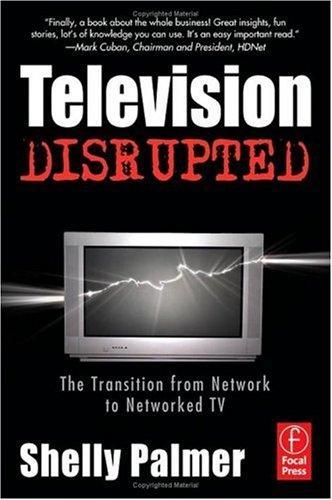
Television disrupted: the transition from network to networked TV
by
Shelly Palmer
Published 14 Apr 2006
To succeed and prosper during and after this technological transition, almost every organization along the value chain will have to fundamentally change how they do business. For example, as previously described, almost all producers are manufacturers/wholesalers. u Producers will need new Their sales relationships are with distributors.In a networked television world, the technology allows skills and new infrastructure to for a significant disintermediation of the master take advantage of networked tele- distributors. vision’s new business rules and In a non-linear universe, the broadcast network interactive technology. brands become almost meaningless to consumers. After all, people watch shows, not networks. The programs are the brands, and producers are empowered to become B2C companies.
…
As a practical matter, the public Internet could not be used instead of the Fox Television Network to watch an NFL football game on a typical Sunday afternoon. Were millions of viewers to attempt to watch it streamed live or even delayed a few minutes so it could be progressively downloaded, the public Internet would go “tilt.” That being said, networked television has the opportunity and the available technology to substantially disintermediate entire distribution verticals. Copyright © 2006, Shelly Palmer. All rights reserved. 161 12-Television.Chap Twelve v3.qxd 3/20/06 7:28 AM Page 162 162 C H A P T E R 1 2 Television Disrupted Content Contact Branded Network Satellite Wireless Telephone Voice Company Studio Content Cabler Video Aggregator Content Operator Viewer Creator Internet Access to Video Service Public Voice Provider Internet Data Analog Unbranded Television Broadcast Broadcast Affiliate Network Digital Television P2P FIGURE 12.1 Consumer Media Choices in the Networked Television Era.
…
Personal Networked Television One probable future is the advent of a GUI that will enable viewers to easily search for content and automatically create adaptive playlists that relate to personal preferences or behaviors. An interface like this would create the equivalent of personal television networks for each individual viewer. It would combine VOD, DVR, search, P2P and high-speed Internet access to significantly disintermediate the existing cable, telephone and satellite infrastructure. Controlling Access by Limiting Bandwidth To combat this probable future, systems operators who offer Internet access may try to limit bandwidth outside the walled gardens. Limiting bandwidth can have an impact on certain types of P2P networks.

The Truth Machine: The Blockchain and the Future of Everything
by
Paul Vigna
and
Michael J. Casey
Published 27 Feb 2018
What’s more, there are plenty of situations in which it’s simply not economically viable for these costly, inefficient institutions to resolve whatever particular trust deficit is preventing people from doing business with each other. So, if we bypass those intermediaries, we will not only save money but also open up previously impossible business models. The Internet put us on this disintermediating path some time ago, well before the blockchain came along. But it’s worth noting that at the heart of each new Internet application that cuts out some incumbent middleman there has typically been a technology that helps humans deal with their perennial mistrust issues. Who would have thought a decade ago that people would feel comfortable riding in the car of some stranger they’d just discovered on their phones?
…
If the first phases of the Internet created huge opportunities for wealth creation and new business models by helping people jump the fences and get on the playing field, this next one promises to remove the fences altogether. In theory, it means that everyone with access to a device and the Internet can participate directly in the global economy. Thus, the hope is that we will greatly expand the pool of open-source innovation from which all sorts of powerful ideas will emerge. Think of how disintermediation has already transformed the global economy in the earlier Internet era and you get a sense of how sweeping this next phase could be. Consider, for example, how the outsourcing of technical advice, Web design, and even accounting services disrupted jobs in Western countries and fostered economic growth in places like Bangalore, India.
…
Or think of how Craigslist, which allowed people to post ads for anything at zero cost on a site that had global reach, completely decimated the classified ads business and, ultimately, shuttered hundreds of local newspapers. If blockchain technology lives up to its promise to decentralize and disintermediate so much of our economy, these prior disruptions may seem minuscule by comparison. As we’ll discuss in the pages ahead, there’s still much work to do to get this technology ready for prime time. In fact, it may never be scalable to the size needed to make a difference. Nonetheless, people across every industry are coming to recognize its potential power.

Human + Machine: Reimagining Work in the Age of AI
by
Paul R. Daugherty
and
H. James Wilson
Published 15 Jan 2018
Moreover, conversational bots are designed to be dynamic—able to learn and change—so companies must also determine what boundaries to set as their bots evolve over time. The Curious Incident of the Disintermediated Brand An intriguing effect has emerged as more and more companies have deployed solutions using AI platforms like Siri, Watson, Cortana, and Alexa. It’s a phenomenon called brand disintermediation. Since 1994, Amazon has connected with its customers almost exclusively through their eyes; the company’s easy-to-navigate website, and later its mobile applications, made it simple to find what you needed (or didn’t know you needed) and buy it.
…
In the past, companies like Domino’s, Capital One, and Delta owned the entire customer experience, but now, with Alexa, Amazon owns part of the information exchange as well as the fundamental interface between the companies and the customer, and it can use that data to improve its own services. Brand disintermediation had taken hold. Disintermediated brands appear in other contexts, too. For instance, Facebook creates no content, yet it brokers content for billions of individuals and thousands of media markets; Uber owns almost no vehicles, yet it is the world’s largest taxi service. In a hyper-networked world where mobile phones, speakers, thermostats, and even exercise clothes are connected to the internet and potentially each other, brands have to learn to play well with each other or give up a certain amount of control to those that own the most popular interfaces.
…
FUSION SKILL #3: Judgment Integration Definition: The judgment-based ability to decide a course of action when a machine is uncertain about what to do. When a machine is uncertain about what to do, or lacks necessary business or ethical context in its reasoning model, people must be smart about sensing where, how, and when to step in. “With machine learning you are really disintermediating the human judgment, and the human’s fault in the decision-making,” says Adam Wenchel, Capital One’s vice president of data innovation. “You are actually pulling them further and further out, and I think this is part of a shift that has been going on for a while.”8 To bring human judgment back in the loop, Wenchel’s team is applying and developing both statistical and soft skills.
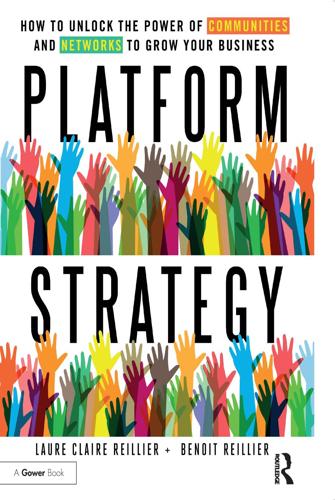
Open for Business Harnessing the Power of Platform Ecosystems
by
Lauren Turner Claire
,
Laure Claire Reillier
and
Benoit Reillier
Published 14 Oct 2017
Now that the platform has reached critical mass and that network effects are in full swing, the platform can optimize how much of the excess value delivered to customers can be captured during the core transaction. This may translate into more refined pricing structures and levels. The key things to watch out for at this stage are disintermediation and leakage. For example, Upwork changed its pricing structure in June 2016 to reduce leakage from its most profitable freelancers. Based on their choice of payment method, clients now either pay a processing fee of 2.75% when paying by credit cards, or no processing fee if they choose a low cost payment method like an Automated Clearing House (ACH).
…
There Table 10.2 Examples of performance metrics at platform maturity New markets and ongoing growth • • • • Product/geographic market coverage (e.g. Airbnb: cities served as % of total universe) Growth of users switching sides Effectiveness of notifications for prompting transactions % of existing users total business (e.g. How much are users multihoming? How much do producers sell through other channels?) • Disintermediation metrics (e.g. measures of repeat business between the same user and producer) Search/match optimization • Proactive and predictive search/match analytics • Individual customization of offers, marketing, etc. Monetization/profitability • Revenue/profit per core transaction, customer lifetime value • Customer acquisition costs • Organic vs paid growth (e.g.
…
How can platforms both support rapid user growth and generate revenues with minimum friction to maximize network effects? How can platforms use pricing to ensure the communities are balanced in terms of supply and demand? How do platforms maximize the quality of customer interactions and experiences? How can platforms use pricing models that minimize the risk of ‘disintermediation’ and ‘leakages’ (i.e. transactions moving ‘off-platform’)? How to best transition from one pricing model to another (in particular, transition from free to a paying model)? We’ll review these questions in turn. Let’s start by looking at key pricing governance questions. 140 Platform pricing How to ensure ‘producers’ pricing creates a good customer experience for ‘users’ A platform architect must consider not only the impact of the platform’s own pricing strategies on interactions, but also the impact of producers’ pricing structures.

Mastering Blockchain, Second Edition
by
Imran Bashir
Published 28 Mar 2018
This mechanism came into play with Bitcoin, and it enables a user to agree on something via a consensus algorithm without the need for a central, trusted third party, intermediary, or service provider. Methods of decentralization Two methods can be used to achieve decentralization: disintermediation and competition (Contest-driven decentralization). These methods will be discussed in detail in the sections that follow. Disintermediation The concept of disintermediation can be explained with the aid of an example. Imagine that you want to send money to a friend in another country. You go to a bank who, for a fee, will transfer your money to the bank in that country. In this case, the bank maintains a central database that is updated, confirming that you have sent the money.
…
With blockchain technology, it is possible to send this money directly to your friend without the need for a bank. All you need is the address of your friend on the blockchain. This way, the intermediary; that is, the bank, is no longer required, and decentralization is achieved by disintermediation. It is debatable, however, how practical decentralization through disintermediation is in the financial sector due to massive regulatory and compliance requirements. Nevertheless, this model can be used not only in finance but in many different industries as well. Contest-driven decentralization In the method involving competition, different service providers compete with each other in order to be selected for the provision of services by the system.
…
The first question simply asks you to identify what system is being decentralized. This can be any system, such as an identity system or a trading system. The second question asks you to specify the level of decentralization required by examining the scale of decentralization as discussed earlier. It can be full disintermediation or partial disintermediation. The third question asks developers to determine which blockchain is suitable for a particular application. It can be Bitcoin blockchain, Ethereum blockchain, or any other blockchain that is deemed fit for the specific application. Finally, a fundamental question that needs to be addressed is how the security of a decentralized system will be guaranteed.
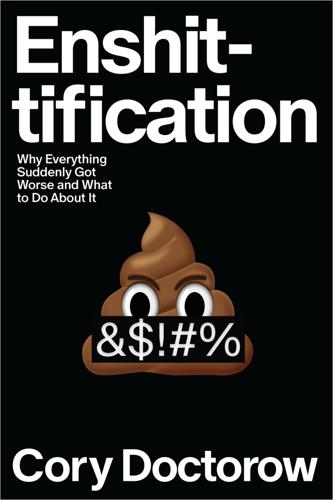
Enshittification: Why Everything Suddenly Got Worse and What to Do About It
by
Cory Doctorow
Published 6 Oct 2025
We’d heard the horror stories of how these big intermediaries treated their suppliers—be they small businesses, creative workers, or manufacturers—and we yearned for a way to cut out the middleman and do business directly with the people who made and did the things we loved, or at least the things we needed. There was a time when disintermediation seemed to be living up to its promise. Small businesses popped up to supply us with online goods and services, and while some of them were founded explicitly as fast-growing startups with global ambitions, some of the most successful disintermediators—like Craigslist—were basically hobbies that accidentally turned into hugely disruptive businesses, serving as a vessel that people with something to offer and people seeking out those offers could fill up. But the internet’s early blush of disintermediation faded quickly. Waves of mergers and acquisitions consolidated the internet into “five giant websites, each filled with screenshots of the other four.”2 Meanwhile, the non-tech intermediaries were also consolidating: most of the key sectors of the global economy shrank to five or fewer firms, and the most pronounced consolidation took place with intermediary sectors like shipping and finance.
…
The platform has emerged as the endemic form of online enterprise, which is weird, because another word for platform is middleman. If you’re old enough to remember the early excitement about the coming digital age, you’ll recall how enthusiastic we were about the prospect of disintermediation—that is, cutting out the middleman. It’s not that middlemen (also called intermediaries, which is where we get disintermediation from) are intrinsically evil. Take books (like this one!): I have worked in printing, bookselling, publishing, and pre-press, and obviously, I also write books. Even though I am knowledgeable and skilled in many of the arts needed to bring this book to you, I voluntarily and enthusiastically work with publishers like Farrar, Straus and Giroux, because they can accomplish this work better than I can, because they offer a fair deal, and because doing so lets me prioritize writing books, which I enjoy much more than doing that other stuff.
…
Intermediaries are part of the solution to the age-old problem of connecting people with one another—but they become part of the problem when they grow so powerful that they can act as gatekeepers who can usurp the relationship between the two sides of their markets.1 That’s why the early days of the internet were so concerned with disintermediation. We had a sense that our intermediaries had gotten too big for their britches: we were tired of a few big retailers deciding what we could buy, a dozen big publishers and studios deciding what we could read and watch, and half a dozen big labels deciding what music we heard. We’d heard the horror stories of how these big intermediaries treated their suppliers—be they small businesses, creative workers, or manufacturers—and we yearned for a way to cut out the middleman and do business directly with the people who made and did the things we loved, or at least the things we needed.

The Fourth Industrial Revolution
by
Klaus Schwab
Published 11 Jan 2016
http://www.automotiveworld.com/analysis/automotive-grade-graphene-clock-ticking/ 7 Sarah Laskow, “The Strongest, Most Expensive Material on Earth”, The Atlantic, http://www.theatlantic.com/technology/archive/2014/09/the-strongest-most-expensive-material-on-earth/380601/ 8 Some of the technologies are described in greater detail in: Bernard Meyerson, “Top 10 Technologies of 2015”, Meta-Council on Emerging Technologies, World Economic Forum, 4 March 2015. https://agenda.weforum.org/2015/03/top-10-emerging-technologies-of-2015-2/ 9 Tom Goodwin, “In the age of disintermediation the battle is all for the consumer interface”, TechCrunch, March 2015. http://techcrunch.com/2015/03/03/in-the-age-of-disintermediation-the-battle-is-all-for-the-customer-interface/ 10 K.A. Wetterstrand, “DNA Sequencing Costs: Data from the NHGRI Genome Sequencing Program (GSP)”, National Human Genome Research Institute, 2 October 2015. http://www.genome.gov/sequencingcosts/ 11 Ariana Eunjung Cha, “Watson’s Next Feat?
…
Many senior executives expect industry convergence to be the primary force impacting their business in the next three to five years.39 Once a customer has established a track record of trust and confidence on the platform, it becomes easy for the digital provider to offer other products and services. Fast-moving competitors provoke a disaggregation of the more traditional industry silos and value chains, and also disintermediate the existing relationship between businesses and their customers. New disruptors can rapidly scale at a much lower cost than the incumbents, generating in the process a rapid growth in their financial returns through network effects. Amazon’s evolution from a bookseller to a $100 billion a year retail conglomerate shows how customer loyalty, combined with insights on preferences and solid execution can lead to selling across multiple industries.
…
In “The Robot Reality: Service Jobs Are Next to Go”, Blaire Briody, 26 March 2013, The Fiscal Times, http://www.cnbc.com/id/100592545 Shift 16: Bitcoin and the Blockchain The tipping point: 10% of global gross domestic product (GDP) stored on blockchain technology By 2025: 58% of respondents expected this tipping point to have occurred Bitcoin and digital currencies are based on the idea of a distributed trust mechanism called the “blockchain”, a way of keeping track of trusted transactions in a distributed fashion. Currently, the total worth of bitcoin in the blockchain is around $20 billion, or about 0.025% of global GDP of around $80 trillion. Positive impacts – Increased financial inclusion in emerging markets, as financial services on the blockchain gain critical mass – Disintermediation of financial institutions, as new services and value exchanges are created directly on the blockchain – An explosion in tradable assets, as all kinds of value exchange can be hosted on the blockchain – Better property records in emerging markets, and the ability to make everything a tradable asset – Contacts and legal services increasingly tied to code linked to the blockchain, to be used as unbreakable escrow or programmatically designed smart contracts – Increased transparency, as the blockchain is essentially a global ledger storing all transactions The shift in action Smartcontracts.com provides programmable contracts that do payouts between two parties once certain criteria have been met, without involving a middleman.
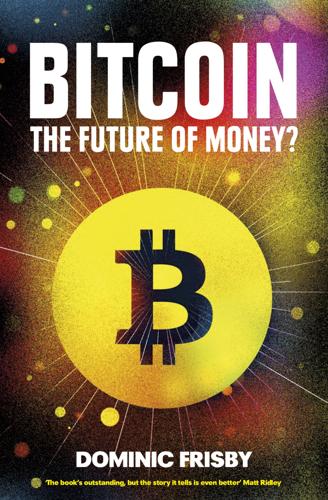
Bitcoin: The Future of Money?
by
Dominic Frisby
Published 1 Nov 2014
You can do decentralized Dropbox, so instead of having all your files stored on a server; you can actually store them in a decentralized network and instead provide them with a token system just like Bitcoin. That’s what we’re working on to do with Ethereum. ‘Bitcoin was an exploration of how can we build a decentralized value system. And if you want to call it money, call it money – but a decentralized money system where we dis-intermediate the government from the generation of money, okay. Ethereum is extracting that and saying what else can we dis-intermediate? Can we remove Dropbox from storage? Can we remove Rackspace and Amazon from hosting? Can we remove Las Vegas from gambling? Can we remove Wall Street from finance? And instead can we run these things in a decentralized way? ‘It’s a continuation of that experiment and we’re seeing how many other things in society we can actually decentralize in nature so that they’re not controlled by any one actor.
…
‘It’s a continuation of that experiment and we’re seeing how many other things in society we can actually decentralize in nature so that they’re not controlled by any one actor. We want to let people choose and program whatever disintermediation they want.’ It’s revolutionary stuff. The implications to existing internet business models are substantial. What kind of progress has been made? ‘We came up with the idea back in November of last year, there was a white paper drafted by a gentleman named Vitalik Buterin, who is the co-founder of Bitcoin Magazine and a pretty big figure in the space. And since then we’ve released five proof of concepts and we’re just about ready to begin a sale to fund the project’s development.
…
‘And so that’s our hope, that’s what we want to do. And the app catalogue is totally decentralized just like the network. So even we don’t control it – so we can’t take apps down or anything and the government can’t take apps down or something like that. So, that’s what we’re trying to do: mainstream this dis-intermediation technology’. The implications of Ethereum – if it takes off – are clearly enormous. For more information about Ethereum, visit ethereum.org. 10 Should You Buy In? You can’t stop things like Bitcoin. It’s like trying to stop gunpowder. It will be everywhere and the world will have to readjust.

The Financial Crisis and the Free Market Cure: Why Pure Capitalism Is the World Economy's Only Hope
by
John A. Allison
Published 20 Sep 2012
Also, unions and government pension plans (for example, CalPERS) and university investment arms wanted higher and higher returns and were willing to dramatically increase their alternative investment portfolios, driving assets from the commercial banking system. To the degree that this disintermediation process was driven by market forces, it is a rational allocation of resources. To the degree that the disintermediation was driven by regulatory policy and politically motivated public employee pension plans, it is unhealthy from an economic perspective. As an observer of the process, I believe that regulatory policy and political allocations were the primary drivers, although I cannot prove this point.
…
Since the early 1970s, regulated financial institutions have faced dramatically increased costs on a multitude of “politically correct” fronts. These costs have driven commercial banks to focus on areas with higher levels of profits, such as real estate lending, which can also be more risky. Another factor has been the disintermediation of deposits caused by money market mutual funds. These funds often pay higher interest rates on deposits than banks pay. The money market funds also claimed to be as low risk as bank certificates of deposit. Of course, when the financial crisis started, many money funds were under water because in fact they had taken more risk.
…
Accounting: loan loss reserves, 152–154 principles-based, 109 private accounting systems, 177–178 rules-based, 109 (See also Fair-value accounting) AEI (American Enterprise Institute), 64 Affordable housing efforts, 43, 216 Afghanistan, 198 African Americans, 43, 55 AIG: bailout, 128–130, 164 CDSs of, 126–127 TARP funds for, 168 Ally Financial, 178 Alt-A portfolios, 64 Altruism, 215–218, 222–223, 252 Ambac, 86 American Enterprise Institute (AEI), 64 Antitrust laws, 174–175 Argentina, 8 Arthur Andersen, 109 Asian Americans, 43 Assets, valuation of, 106–108 Atlas Shrugged (Ayn Rand), 225 Auction-rate municipal bond market, 85–87 Authority, of regulatory agencies, 46–47 Auto finance market, 178–180 Bank bailout (see Troubled Asset Relief Program (TARP)) Bank of America, 116, 150, 237 counterparty risk at, 124 credit decisions at, 238 funding of shadow banking system, 120 “too-big-to-fail” firms, 173 Bank runs, 75–76 Banking industry, 67–72 competition with risk-taking financial institutions, 39–40 economic role of, 67–69 and Federal Reserve, 22–23 fractional reserve banking, 69–70 in Great Depression vs. recent financial crisis, 70–72 (See also Shadow banking system) Banking industry reforms, 187–193 Dodd-Frank bill, 193 and Federal Reserve, 187–188 and gold standard, 188–189 reducing risk of economic cycles with, 189–193 Banking regulation, 133–147 in Bush administration, 133–136 effects on small businesses, 144–147 impact of, 147 and lending policies of banks, 138–146 and mathematical modeling for risk management, 136–138 reform of, 190 Bankruptcy, 8, 124 Banks: capital requirements for, 190 economic forecasting by, 28 FDIC and risk-taking by, 38–41 healthy, effects of TARP on, 172–174 lending policies of, 138–146 leverage ratios of, 70–72 misinvestment effects on, 12–14 private, 97–99, 187–188 self-insurance at, 48–52 start-up, 38–39 stress tests for, 171 (See also Investment banks) Barclays Bank, 164 Basel Accords, 51, 71, 125, 137, 151 BB&T Corporation, 23–24 and AIG bailout, 128 auditors of, 134 in auto finance market, 178 bonds of, 76, 84–85 competition with risk-taking financial institutions, 39–40, 98 conservatism of, 30 culture of, 240–241 failed bank takeover by, 38–39, 47–48 financial crisis for, 1–2 and flight to quality, 87, 105 home mortgages by, 97–98 and Lehman Brothers failure, 162–163 and liquidity crisis, 105–106 loan loss reserves of, 153–154 and mathematical modeling, 136–137 and misinvestment in residential real estate, 12–14 mortgage servicing rights, 111–112 and pick-a-payment mortgages, 91–92 post-crisis lending policies, 139–140, 142–145 racial discrimination in lending accusation, 42–45 selling of mortgages by, 113 TARP participation by, 170–172 trader principle of, 223 underwriting standards of, 141 use of derivatives, 122, 123 wellness program of, 202–203 Bear Stearns, 70, 71 bailout of, 104, 162 Cdss on bonds of, 127–128 counterparty risk at, 124 derivatives from, 123 financial “innovations” of, 101 Bernanke, Ben: and 2008 panic, 164, 167 and development of TARP, 76, 169–171 monetary policy of, 27–31, 33, 35, 40, 125, 213 response to financial crisis, 7, 70 Blair, Tony, 164 Bond insurance, 86–87 bonds: auction-rate municipal bond market, 85–87 effects of FDIC for, 40–41 fair-value accounting for, 105 subprime mortgage, 82–84 of Washington Mutual, 75–76 Borrowers: CRA, 56–57 of pick-a-payment mortgages, 90–91 post-crisis treatment of, 142–145 and racial discrimination in lending, 42–45 regulated changes in grading for, 140–141 Borrowing for consumption, 57–58 Boston Federal Reserve bank, 42 Budget, federal, 182–183 Bush, George W., and administration: action in financial panic, 161, 167 banking regulations, 133–136 economic proposals, 15 Patriot Act, 45, 46 regulation of Fannie Mae and Freddie Mac, 63 California, 21, 74, 90 CalPERS (California Public Employees’ Retirement System), 93, 116, 121, 131 Canada, 192 Capital: against GSE loans, 137 and leverage, 70–71 and loan loss reserves, 153 misinvestment of, 9–11, 14 wasting of, 159–160 Capital markets, 85–87, 101 Capital standards: for banks, 190 for loans, 51–52 and TARP, 170–171 Capitalism: crony, 6, 102, 129, 179 and freedom, 253–254 at universities, 231–233 Capitalism (Alan Greenspan), 32 Carter, Jimmy, 161, 179 Cash basis accounting, 110 Cash flows, 106–107, 115 Cato Institute, 201 CDOs (collateralized debt obligations), 124–126 CDSs (credit default swaps), 126–128 CEOs (Chief Executive Officers): behavior of, 2–3 decisions of Federal Reserve vs., 34 and rules-based accounting, 109 wage rates of, 210 China: currency standard, 77 demographics, 205 education, 230 GDP of U.S. vs., 183 government debt in, 200 manufacturing in, 10, 25–26, 161 market-based pricing in, 34 military spending in, 198 stimulus fund use, 181–182 trade with, 204–205 U.S. investment by, 29, 159 Chrysler, 130, 179–180 Citigroup: bailout of, 50, 104, 130, 177 CDOs of, 125–126 credit decisions, 238 crony capitalism, 6 funding of shadow banking system, 120 long-term debt of, 71 and panic during financial crisis, 163 pragmatism at, 217–218 reason at, 245 “too-big-to-fail” firms, 173 Clearing, 104 Clinton, Bill: lending reforms, 42–44, 56 subprime lending requirements, 58–60 Collateralized debt obligations (CDOs), 124–126 Colonial Bank, 47–48 Commercial real estate, 11, 97 Common good, 215–216 Community Reinvestment Act (CRA), 42, 55–57, 59 Compensation, 50, 83–84, 197–198 Confidence, 84–87, 184–185 Conservatives, 108 Consumer compliance, 193 Consumer Price Index (CPI), 26–27 Consumption: borrowing for, 57–58 housing as, 9–12, 54–55, 73–74 Contagion risk, 123 Corporate debt, 107 Counterparty risk, 123, 124 Countrywide: crony capitalism at, 6 and fair-value accounting change, 114, 118 and FDIC insurance, 39, 41, 46 necessary failure of, 159 pick-a-payment mortgages of, 91–93 subprime business at, 99 thrift history of, 98 CPI (see Consumer Price Index) CRA (see Community Reinvestment Act) Creativity, 7, 247 Credit default swaps (CDSs), 126–128 Credit rating agencies (see Rating agencies) Crony capitalism, 6, 102, 129, 179 Cross-guarantor insurance fund, 48–52 Cuba, 34, 247, 252 Cuomo, Andrew, 58 Currency, debasing, 22 Debt, 21–22, 107 Declaration of Independence, 220, 252 Defaults, 90–91, 126–128 Defense spending, 198–199, 227 Deflation, 22 Demand, supply and, 104, 185, 209, 210 Department of Housing and Urban Development (HUD), 15, 58 Deposits, disintermediation of, 120–121 Derivatives, 3, 120, 122–124 Disclosure requirements, 150–152 Dodd, Christopher, 7, 46, 61, 63, 64 Dodd-Frank Wall Street Reform and Consumer Protection Act: deficiencies of, 193 introduction of, 63–64, 183 as misregulation, 147 results of, 130 and TARP, 173, 174 Dollar, U.S., 77, 188, 229 Durbin amendment, 193 Earnings, operating, 103–106 East Germany, 34, 247 Eastern Europe, 34, 252 Economic cycles, 108, 189–193 Economic health, 159–161 Economic recovery, 1, 207–208 Economy, banking industry in, 67–69 Edison, Thomas, 19, 158–159 Education, 230–235, 247 Egypt, ancient, 230 Elitism, 7 Ely, Bert, 48 Employee Retirement Income Security Act (ERISA), 82, 149 Enron, 60, 109, 133, 149 Entitlement programs, reforms for, 199–204 Equal Credit Opportunity Act, 42, 55 ERISA (Employee Retirement Income Security Act), 82, 149 Ethical incentives, lending, 57–58 Euro, 189 European banking crisis, 51–52, 137 Expensing (stock options), 114–117 Experiential learners, 244–245 Fair Housing Act, 55 Fair-value accounting, 103–118 asset valuation in, 106–108 and expensing of stock options, 114–117 and losses on CDSs, 126–127 private accounting systems vs., 177–178 SEC involvement in, 151–152 for selling vs. servicing mortgages, 113–114 Fannie Mae: accounting scandal, 112–113, 149 in current environment, 251 and disintermediation of deposits, 121 failure of, 61–65, 164 and fair-value accounting, 118 in housing policy, 58–61 misallocation of resources by, 14 misleading of rating agencies by, 83 mortgage lending by, 97–101 reforms for, 190–192 selling mortgages to, 113–114 subprime lending by, 58, 99–101 FASB (see Financial Accounting Standards Board) FDIC (see Federal Deposit Insurance Corporation) FDIC insurance, 37–52 and bank liquidity, 171 and failing banks, 140 and fractional reserve banking, 68–69 and pick-a-payment mortgages, 91 reform of, 190 and S&L failures, 97 Federal Deposit Insurance Corporation (FDIC), 37–38 as external auditors, 134 and failing banks, 47–48 misallocation of resources by, 14 and pick-a-payment mortgages, 91 as regulator, 41–48, 143 take over of Washington Mutual, 75–77 Federal Housing Administration (FHA), 15, 190–192, 252 Federal Reserve, 22–23, 102, 189 antitrust policy, 174 bailouts by, 120–121, 190, 192 and banking industry reforms, 187–188 as external auditors, 134 and federal debt, 21–22 and leverage, 72 mathematical modeling by, 136 misallocation of resources by, 14, 208 misleading information from, 46, 83, 101, 125 monetary policy of, 17–20, 31–35, 96 overreaction by, 154 stimulus from, 152, 153, 208 and TARP, 165, 167–168, 171 and unemployment, 213 and Washington Mutual, 75 Federal Reserve Board, 18 Federal Reserve Open Market Committee, 31 Federal Savings and Loan Insurance Corporation (FSLIC), 37–38, 50, 96 FHA (see Federal Housing Administration) Financial Accounting Standards Board (FASB), 105, 106, 114–117 Financial crisis (2007-2009), 1–3, 251–254 banking industry in, 70–72 derivatives in, 122–124 Freddie Mac and Fannie Mae in, 65 free-market response to, 177–186 and Great Depression, 25 lessons from, 251–252 SEC role in, 154–155 Financial reporting requirements, SEC, 150–152 Financial Services Roundtable (FSR), 32, 61–62 First Horizon, 237 Fitch, John Knowles, 150 Fitch Ratings: investor confidence in, 84–87 misratings by, 82–84, 101, 125, 126 and SEC, 81–82, 149–150 Flat tax, 197 Forbes, Steve, 197 Ford, 179 Foreclosure laws, 77–80 Fractional reserve banking, 69–70 Frank, Barney, 7, 61, 63, 64 Fraud, 109–113 Freddie Mac: accounting scandal, 112–113, 149 current environment, 251 and disintermediation of deposits, 121 failure of, 61–65, 164 in housing policy, 58–61 misallocation of resources by, 14 misleading information from, 83 mortgage lending by, 97–101 reforms for, 190–192 selling mortgages to, 113–114 subprime lending by, 58, 99–101 Free markets: experimentation in, 19 justice in, 92, 177 market corrections in, 157–159 and monetary policy, 31–35 risk taking by banks in, 40–41 wage rates in, 210–211 Free trade, 204–205 Friedman, Milton, 20, 189 FSLIC (see Federal Savings and Loan Insurance Corporation) FSR (Financial Services Roundtable), 32, 61–62 GAAP accounting, 116, 117 Gates, Bill, 216 GDP, 183, 197–199 General Electric, 168, 169 General Motors (GM), 169, 178–180 General Theory of Employment, Interest and Money, The (Keynes), 181 Germany, 52 GM (General Motors), 169, 178–180 GMAC, 168, 169, 178–180 Gold standard: and deflation, 25–26 and economic future of U.S., 188–189 Greenspan’s view of, 32 Golden West, 39, 91, 92, 98, 159 Goldman Sachs, 71, 173 as AIG counterparty, 128–129 bailout of, 104, 164, 179 CDSs of, 126 counterparty risk at, 124 crony capitalism at, 6 financial “innovations” of, 101 Government policy: as cause of financial crisis, 1, 5–6, 251 and residential real estate bubble, 6 (See also Housing policy; Policy reforms) Government regulation, 5–8, 41–48, 204 Government spending, 180–183, 197–199 Government-sponsored enterprises (GSEs), 59, 64–65, 98, 137 (See also Fannie Mae; Freddie Mac) Great Depression: and avoidance of stock market, 74 banking industry in, 70–72 economic policies after, 161 and Federal Reserve, 19–20, 24, 188 and gold standard, 188 and government interference, 170 and Smoot-Hawley Tariff Act, 205 Great Recession, 1, 251–254 and Federal Reserve, 188 Freddie Mac and Fannie Mae in, 65 and interest-rate variation, 33 market corrections and depth of, 160 and monetary policy, 17 and residential real estate, 9–15 Great Society, 6, 55, 96 Greece, 51, 52, 137, 228 Greenspan, Alan, 23–30, 32, 33, 160 Gross domestic product, 183, 197–199 Hamilton, Alexander, 19 Harvard University, 43, 131 Hayek, Friedrich, 31 Health insurance, 201–202 High-net-worth shareholders, 93 Home Builders Association, 60 Home foreclosure laws, 77–80 Homeownership, 53–55 Hoover, Herbert, 24, 161, 205 Housing: as consumption, 9–12, 54–55, 73–74 government support of, 12 Housing policy, 53–65 HUD (Department of Housing and Urban Development), 15, 58 Human Action (von Mises), 238 Immigration, 19, 205–206 India, 10, 25, 205 IndyMac, 39, 75, 98 Inflation: CPI as indicator of, 26–27 and fair-value accounting, 103 and Federal Reserve, 21–22 and prices, 24–25 (See also Monetary policy) Initial public offerings, 150 Insurance: bond, 86–87 cross-guarantor, 48–52 FDIC (see FDIC insurance) health, 201–202 private deposit, 48–52 self-insurance at banks, 48–52 unemployment, 212–213 Interest rates, 26–27, 31–35 Inverted yield curves, 27–29 Investment banks: disclosure requirements for, 151 government bailout of, 162 “innovations” of, 101–102 leverage ratios of, 71–72 IPOs, 150 Iran, 198, 199, 227 Iraq, 198 Ireland, 77 Isaac, Bill, 107–108, 161–162 Italy, 51, 52 Japan, 159, 200, 205 Jefferson, Thomas, 19, 220 Johnson, Lyndon Baines, 6, 55, 96, 161, 188 JPMorgan Chase, 75 and Bear Stearns, 162 and shadow banking system, 120 as “too-big-to-fail” firm, 173 and Washington Mutual, 163 Keynes, John Maynard, 181 Labor: allocation of, 10–11, 14 minimum-wage laws, 209–212 Lehman Brothers, 71, 76, 101, 104, 129, 164 and Bear Stearns bailout, 162–163 corporate debt at, 107 counterparty risk at, 124 derivatives from, 123 Limited government, 182–183, 195, 231, 253 Liquidity: of banks, 68–69 and FDIC insurance, 171 and financial crises, 70–72 and housing prices, 74–75 and TARP, 171–172 Loan loss reserves accounting, 152–154 Loans: capital standards for, 51–52 qualified, 98 substandard, 140–141 Madoff, Bernie, 149, 225 March of Dimes, 241 Market corrections, 157–165 Federal Reserve’s prevention of, 23, 32 prevention of, 13 residential real estate, 78 and response to financial crisis, 177–180 Market discipline, 21, 38 Market-based monetary policy, 31–35 Market-clearing price, 209 Mathematical modeling: for loan loss reserves, 152–153 by ratings agencies, 82–83 for risk management, 136–138 MBIA, 86 Medicaid, 6, 55, 201 Medicare, 6, 8, 55, 201, 203 Meltdown (Michaels), 35 Merrill Lynch, 101, 124–125 Michaels, Patrick J., 35 Microsoft, 217 Military spending, 198–199, 227 Minimum-wage laws, 209–212 Mises, Ludwig von, 34, 238 Monetary policy, 17–35 of Bernanke, 27–31, 33, 35, 40, 125, 213 and federal debt, 21–22 and Federal Reserve, 17–23 of Greenspan, 23–27 market-based, 31–35 and unemployment, 208–209 Money market mutual funds, bailout of, 120–121, 192 Money supply, 21–22, 24, 189 Moody, John, 83, 150 Moody’s, 81–87 investor confidence in, 84–87 misratings by, 82–84, 101, 125, 126 and SEC, 81–82, 149–150 Morgan Stanley, 71, 101, 124, 173 Mortgage lending, 95–102 by Fannie Mae and Freddie Mac, 97–101 and investment bank innovations, 101–102 prime, 59, 97–99 by private banks, 97–99 savings and loan industry in, 95–97 subprime, 43, 56–57, 99–101 Mortgages: by BB&T Corporation, 97–98 jumbo, 62 pick-a-payment (see Pick-a-payment mortgages) selling vs. servicing, 113–114 Mozilo, Angelo, 46 Multiplier effect, 181 Naked shorting, 127–128, 151 Nationally recognized statistical rating organizations, 82 Negative real interest rates, 26–27 Neo-Keynesian response to financial crisis, 185–186 Neutral taxes, 197 New Deal, 53, 170, 232 Nixon, Richard, 96, 161, 188 North Korea, 34, 198, 227, 247, 252 NRSROs, 82 Obama administration, 142–144: and Dodd-Frank Act, 64 economic policies of, 15, 161 healthcare bill, 183, 201 and Patriot Act, 45 stimulus plan, 181–182 Office of the Comptroller of the Currency (OCC), 40, 154 Office of Thrift Supervision, 40, 41, 45–46 Operating earnings, 103–106 OTS, 40, 41, 45–46 Panics, 137–138, 161–165 Patriot Act, 45, 46, 48, 133–136, 147 Paulson, Henry: in 2008 panic, 164, 167 and AIG bailout, 128, 129 credibility of, 164 development of TARP, 76, 168–170, 172 Pick-a-payment mortgages, 89–93 borrowers using, 90–91 and FDIC, 91 and rise of Fannie Mae/Freddie Mac, 98 Policy reforms, 195–206 for entitlement programs, 199–204 and free trade, 204–205 and government regulations, 204 for government spending, 197–199 for immigration, 205–206 for political system, 206–207 and tax rate, 196–197 Politics: in banking regulation, 42–46 and crony capitalism, 129 and failure of Fannie Mae/Freddie Mac, 59–62 and Federal Reserve appointments, 18 policy reforms for, 206–207 Poor, Henry Varnum, 150 Portugal, 51 Price fixing, 31, 193 Price setting, 31–32 Prime lending, 59, 97–99 Prince, Charlie, 217 Principles-based accounting, 109 Privacy Act, 133, 135 Private accounting systems, 177–178 Private banks, 97–99, 187–188 Private deposit insurance, 48–52 Public schools, 228, 233–235 Racial discrimination (in lending), 42–45 Raines, Frank, 59 Rand, Ayn, 225, 231 Rating agencies, 81–87 investor confidence in, 84–87 mathematical modeling by, 136 and subprime mortgage bonds, 82–84 and “too-big-to-fail” firms, 173 and SEC, 81–82, 149–150 Real estate: commercial, 11, 97 residential (see Residential real estate market) Recessions, 28, 29, 160 Recovery (see Economic recovery) Reforms: banking industry (see Banking industry reforms) government policy (see Policy reforms) Regions Bank, 237 Regulation: of banking industry (see Banking regulation) by government (see Government regulation) Reporting, financial, 150–152 Reserve currency, U.S. dollar as, 77, 188, 229 Residential real estate market: economics of, 73–74 misinvestment in, 9–15 Residential real estate market bubble, 73–80 and government policy, 6 international impact of, 77 and job creation, 80 and state home foreclosure laws, 77–80 Risk: contagion, 123 counterparty, 123, 124 with derivatives, 122–124 diversification of, 67–69 and economic cycles, 189–193 and FDIC insurance, 38–41 and government regulation, 50–51 liquidity, 68–70 mathematical modeling for, 136–138 and “originate and sell” model, 100 systemic, 50–51 RMBS (residential mortgage-backed securities), 81 Roman empire, fall of, 230 Roosevelt, Franklin D., 24, 37, 103, 161 Rules-based accounting, 109 Russia, 198 Samuelson, Paul, 238 Sarbanes-Oxley Act, 133–134 and fair-value accounting, 106 and Fannie Mae/Freddie Mac, 99 misregulation by, 48, 147 and SEC, 150 violations of, 136 SARs (Suspicious Activity Reports), 136 Satchwell, Jack, 57 Savings and loan (S&L) industry, 95–97, 110, 191 Securities and Exchange Commission (SEC), 149–155 capital ratio guidelines, 71–72 and complexity of accounting rules, 116–117 and expensing of stock options, 114, 115 loan loss reserves accounting for, 152–154 misallocation of resources by, 14 and rating agencies, 81–82, 149–150 requirements for shorting stock, 127–128, 151 and rules-based accounting, 109, 110 and Sarbanes-Oxley Act, 150 Self-insurance, 48–52 Selgin, George, 189 Senate Banking Committee, 46 Shadow banking system, 119–131 and AIG bailout, 128–130 credit default swaps in, 126–128 and derivatives, 122–124 Federal Reserve’s role in, 30 losses from, 131 S&L industry, 95–97, 110, 191 Small businesses, 144–147, 183–184 Smoot-Hawley Tariff Act, 205 Social Security, 8, 199–204 South Financial, 237 South Korea, 247 Soviet Union, 34, 195–196, 252, 254 S&P (see Standard & Poor’s) Spain, 51, 52, 77 Spitzer, Eliot, 71, 134–135, 151 Stagflation, 181, 208 Standard & Poor’s (S&P), 81–87 investor confidence, 84–87 misratings by, 82–84, 101, 125, 126 and SEC, 81–82, 149–150 Standard of living, 6–7, 10, 161, 177 Start-up banks, 38–39 State home foreclosure laws, 77–80 Stimulus plan, 181–182 Stock options, expensing of, 114–117 Stocks, shorting, 127–128, 151 Stress tests, banks, 171 Subprime lending: and CRA, 56–57 by Fannie Mae and Freddie Mac, 99–101 and racial discrimination in lending study, 43 Subprime mortgage bonds, 82–87 Substandard loans, 140–141 SunTrust, 152, 237 Suspicious Activity Reports (SARs), 136 Tails (mathematical models), 137 TARP (see Troubled Asset Relief Program) Tax rate, 196–197 Tea Party Movement, 218, 231 Technology industry, 5 “Too-big-to-fail” firms, 130, 173, 193 Trader principle, 92, 223–224 Troubled Asset Relief Program (TARP), 167–175 and 2008 panic, 165 and FDIC, 37 Underwriters Laboratories, 117, 150 Unemployment, 207–213 in economic recovery, 207–208 and minimum-wage laws, 209–212 and misinvestment in residential real estate, 10–11 and monetary policy, 208–209 Unemployment insurance, 212–213 Unions, 179, 180, 212 United Auto Workers, 179, 180 United States: demographic problem in, 228 economic future of, 8, 227–230, 252–253 educational system of, 230–235 founding concepts of, 219–220 as free trade zone, 204–205 GDP of China vs., 183 mixed economy of, 5–6 public schools of, 233–235 university system of, 230–233 United Way, 224, 241 University system, 230–233 U.S.
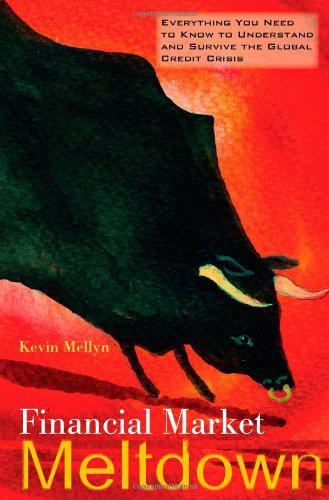
Financial Market Meltdown: Everything You Need to Know to Understand and Survive the Global Credit Crisis
by
Kevin Mellyn
Published 30 Sep 2009
The financial markets allow people with money and people who need money to contract directly with each other using financial instruments and thus reduce or avoid one-sided financial contracts with a bank intermediary. Perhaps believing that the profits of balance sheet intermediation were ordained by God, bankers coined an especially ugly The Financial Market Made Simple word—‘‘disintermediation’’—some thirty years ago to describe the process by which large and sophisticated corporate borrowers bypass them altogether to obtain funds from the public. In fact, over the last two generations or more, the story of finance in the United States and in the broader global economy has been one of the gradual but accelerating shift of financial contracting from banks to tradable financial instruments or contracts whose value (or lack thereof) is established in the market.
…
Even these needed commitment from banks to lend them the money to pay off their paper to get top ratings. Most of us have no idea what commercial paper is, but it was the most important financial instrument in bringing about our current financial crisis. It did so in two ways. First, it supercharged bank disintermediation. Big credit-worthy companies found it much cheaper 41 42 FINANCIAL MARKET MELTDOWN and easier to obtain the money they needed directly from the market using CP than by borrowing from banks. This led banks to search for new ways to make money. Twenty-five years of searching had gotten the banks to the poor position they are today, many of them circling the drain.
…
Because banking is a business in which you can never lose your job for doing 151 152 FINANCIAL MARKET MELTDOWN what all the other boys and girls are doing. Wriston was a conspicuous success. So was his bank. No big-time banker could ‘‘just say no’’ to the sovereign lending and be certain of keeping his job. DISINTERMEDIATION BITES One of the reasons that the largest U.S. banks turned to the Euromarkets for profit growth in the 1960s and 1970s was simply that the 3-6-3 business back home was getting killed. This was occurring for two reasons. First, Wall Street had made a comeback in the post-war decade and with it came more corporate bonds and equity financing for big companies.
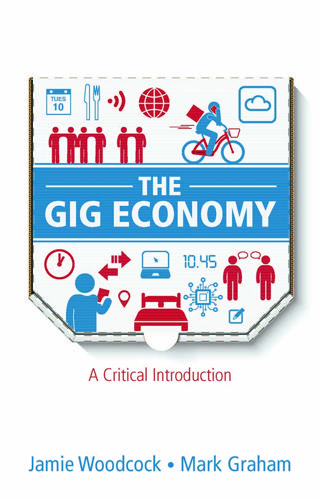
The Gig Economy: A Critical Introduction
by
Jamie Woodcock
and
Mark Graham
Published 17 Jan 2020
Instead, the client is hidden behind the interface of the platform. Delivery drivers may re-encounter some of the same customers, but those interactions tend to be fleeting. It therefore makes little sense for clients and workers to attempt to disintermediate the platform – repeating their interaction, but without the platform connecting to them. Ride-hail drivers may have long stretches of time with some customers, but – for them too – it makes little sense to attempt to disintermediate the operation of the platform. It is precisely the multi-sided nature of the platform (connecting workers and clients with many potential matches) that is of value to both clients and workers in that case.
…
It is precisely the multi-sided nature of the platform (connecting workers and clients with many potential matches) that is of value to both clients and workers in that case. With domestic and care work there is an entirely different calculation, however. Here there are both extended interactions between workers and clients and repeated interactions between those same workers and clients: leading to the danger of disintermediation for platforms. For those reasons, platforms such as Homejoy in the US have struggled. Yet some platforms in this line of work still thrive by reducing transaction costs and offering a mechanism for trust to be built between worker and client. Degree of explicit coordination We then see that geographically tethered platforms tend to exert a high degree of control over their workforce.
…
Gereffi, G., Humphrey, J. and Sturgeon, T. (2005) The governance of global value chains. Review of International Political Economy, 12(1): 78–104. Goodwin, T. (2015) The Battle Is for the Customer Interface. TechCrunch, 3 March. Available at: https://techcrunch.com/2015/03/03/in-the-age-of-disintermediation-the-battle-is-all-for-the-customer-interface/ Goos, M. and Manning, A. (2007) Lousy and lovely jobs: The rising polarization of work in Britain. Review of Economics and Statistics, 89(1): 118–33. Graeber, D. (2018) Bullshit Jobs: A Theory. London: Allen Lane. Graham, M. and Anwar, M.A. (2018) Digital labour.

The Internet Is Not the Answer
by
Andrew Keen
Published 5 Jan 2015
The speeches—or the “conversation,” to use the digitally correct term—were all variations upon a single theme. What can help us create a better world in the digital age? everyone at FOO Camp asked. The Internet was the answer, they all agreed, because it “democratized” media, giving a voice to everyone, thereby making it more diverse. By “disintermediating” traditional media, FOO Campers all agreed, Web 2.0 companies like YouTube, Flickr, Blogger, and Wikipedia circumvented what they pejoratively called “the gatekeepers”—those guys like Larry Kay, my old boss at Fi, who had historically controlled the printing presses, recording studios, and movie studios.
…
In Spain, eighteen thousand people used Twitter in May 2014 to post tweets with a hateful anti-Semitic hashtag after a Madrid team was beaten by Maccabi Tel Aviv in the final of the European basketball tournament.32 It wasn’t, of course, supposed to turn out this way. According to Internet evangelists like Jay Rosen, Tim O’Reilly, and the FOO Camp unestablishment, the Internet’s so-called disintermediation of media gatekeepers would inspire a democratic enlightenment in which anyone could voice their opinion online through free networks like Reddit, Twitter, or Facebook. The old media, they said, was parochial, self-interested, and sexist; new media, in contrast, would reflect a broad diversity of opinion outside the stuffy old elites at the New York Times, the BBC, and CNN.
…
Back then, you’ll remember, it was believed that networked technology could enable anyone to become the owner of a vast record store. Now, with 3-D printers, we can supposedly set up factories in our own homes and, with the appropriate software, create anything we like. Technology is once again the great liberator. And, inevitably, Chris Anderson has written a book hyping a revolution that supposedly “empowers” us to “disintermediate” the industrial factory and manufacture our own products. In his 2012 manifesto, Makers, Anderson, spouting an unholy mashup of libertarianism and Marxism, argues that this “new industrial revolution” democratizes the tools of invention and production. Now that the digital revolution has “reached the workshop, the lair of Real Stuff,” Anderson breathlessly promises us, it will have “its greatest impact yet.”63 Makers of the world unite!
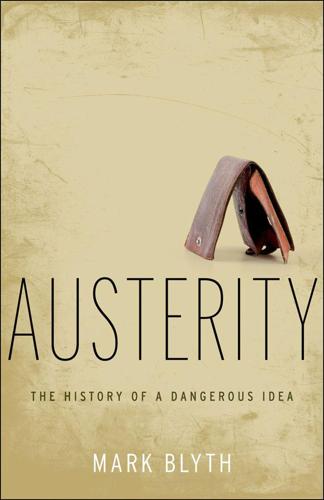
Austerity: The History of a Dangerous Idea
by
Mark Blyth
Published 24 Apr 2013
The repo market emerged in the 1980s when traditional banks lost market share because of a process called “disintermediation.”6 Banks, as intermediaries, traditionally sit in the middle of someone else’s prospective business, connecting borrowers and lenders, for example, and charging fees for doing so. Before disintermediation, banks engaged in what was often called “3-6-3 banking”: they would borrow at 3 percent, lend at 6 percent, and hit the golf course by 3 p.m. It was safe, steady, and dull. But as financial markets became more deregulated in the 1980s, large corporations began to use their own cash reserves, lending them to one another directly—they disintermediated—bypassing banks and squeezing bank profits.
…
But if the whole system had melted down as was feared, the immediate cost could have been the sum of those bank assets, some 61 percent of GDP, which does not factor in the secondary costs in lost output, unemployment, and the damage that you can do with 70 million handguns. The crisis started in America because this system had become too big to fail. Banking was transformed from its sleepy 3-6-3 origins. Disintermediation, securitization, and the rise of repo markets made funding cheaper and lending more plentiful but riskier. Those risks were supposed to be controlled by financial derivatives and risk-management tools, but instead these technologies seemed to amplify and spread, rather than reduce and control, the risk in the system.
…
The End of Banking The story of the crisis reconstructed in chapters 2 and 3 can, and perhaps should, be seen in a bigger context. At the end of the Bretton Woods era, when the United States finally went off gold in 1971, states around the world had to adjust to what Eric Helleiner has called “the reemergence of global finance.”3 Floating exchange rates, deregulation, disintermediation, and the rest, which made finance the most profitable sector of the American and British economies by the 2000s, was the new order of things. But what was it all really based upon? After all, finance is most properly thought of as a part of the information system of the economy: linking borrowers and lenders while sitting in the middle collecting a fee.
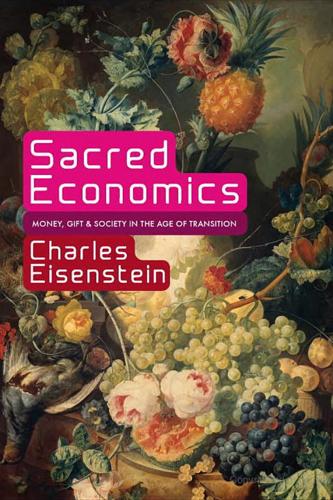
Sacred Economics: Money, Gift, and Society in the Age of Transition
by
Charles Eisenstein
Published 11 Jul 2011
With more vibrant public spaces, people also have less need to live in huge private spaces. People living in community depend less on externally produced entertainment and have more occasion to share and assist each other. All of that means a decrease in money-mediated activity. DISINTERMEDIATION AND THE P2P REVOLUTION Another source of economic shrinkage is the disintermediation that the internet has made possible. Disintermediation refers to the elimination of intermediaries: agents, brokers, middlemen, and so forth. Consider the example of Craigslist, which according to one estimate has destroyed $10 billion of annual revenue from classified ads, replacing it with only $100 million of its own revenues.5 Google has also made advertising more efficient (cheaper), not only seizing ad revenue from existing media but also reducing total industrywide advertising expenditures.
…
The same is true of travel agency, stock brokerage, and many other industries where brokers and agents are no longer necessary. All of these factors contribute to economic deflation. Disintermediation and open source software are both part of a more general phenomenon: the peer-to-peer (P2P) revolution. The older hierarchical and centralized structures of distribution, circulation, and production required a lot of money and human effort to administer. Moreover, their very nature isolated people from each other within narrow specialties, making gift exchange impossible. Disintermediation is even affecting the credit system and subverting banks’ traditional role as financial intermediaries connecting investors and borrowers.
…
TABLE OF CONTENTS Cover Title Page Copyright Dedication Author’s Note Introduction PART I: THE ECONOMICS OF SEPARATION Chapter 1: The Gift World Chapter 2: The Illusion of Scarcity Chapter 3: Money and the Mind Chapter 4: The Trouble with Property Chapter 5: The Corpse of the Commons Cultural and Spiritual Capital The Strip-Mining of Community The Creation of Needs The Money Power Chapter 6: The Economics of Usury An Economic Parable The Growth Imperative The Concentration of Wealth Wealth Redistribution and Class War Inflation More for You Is Less for Me Chapter 7: The Crisis of Civilization Chapter 8: The Turning of the Age Money: Story and Magic Humanity’s Coming-of-Age Ordeal PART II: THE ECONOMICS OF REUNION Chapter 9: The Story of Value Chapter 10: The Law of Return Chapter 11: Currencies of the Commons Chapter 12: Negative-Interest Economics History and Background Modern Application and Theory The Debt Crisis: Opportunity for Transition Thinking for the Future More for Me Is More for You Chapter 13: Steady-State and Degrowth Economics Sustainability Reconsidered Transition to Steady-State: Bump or Crash? Shrinking Money, Growing Wealth Disintermediation and the P2P Revolution Chapter 14: The Social Dividend The Paradox of Leisure The Obsolescence of “Jobs” The Will to Work Who Shall Remove the Garbage? Chapter 15: Local and Complementary Currency The Catch-22 of Local Currency Experiments in Local Money Reclaiming the Credit Commons Chapter 16: Transition to Gift Economy Chapter 17: Summary and Roadmap 1.
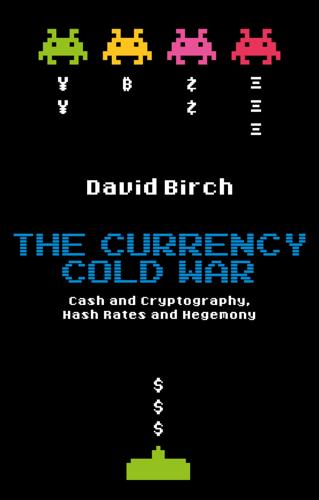
The Currency Cold War: Cash and Cryptography, Hash Rates and Hegemony
by
David G. W. Birch
Published 14 Apr 2020
Locating central bank digital currency (CBDC). No matter how beneficial it might be to society, CBDC has two well-understood problems that are identified in figure 10. The first is that it would disintermediate banks, and the second is that it might destroy banks (because bank deposits would be traded for zero-risk central bank money). Central bankers, being naturally somewhat conservative, do not want to either disintermediate or destroy banks in the same way that Bitcoiners do; so, they will look for what are generally called two tier solutions, in which the central bank creates and monitors the digital money but commercial banks manage it.
…
Either way, the shift towards digital fiat will restructure the financial system, and therefore it needs careful planning. If people start using digital fiat instead of banknotes and move money from their (to a certain extent risk-free) bank accounts to their central bank digital fiat balances, then this could set in motion a disintermediation of the banking sector as a whole. This is why economists distinguish between digital fiat that substitutes for banknotes and digital fiat that substitutes for bank deposits. As you can see from figure 11, bank deposits account for almost half of bank funding requirements in the eurozone, and at low cost.
…
If you take these away, you have to have a plan for the banks. As Lael Brainard, a member of the Board of Governors of the Federal Reserve, pointed out in an October 2019 speech, population-scale public or private digital currencies challenge current commercial bank business models and could both disintermediate the role of banks in payments and affect their sources of funds (Brainard 2019). Moreover, the widespread use of such currencies would reduce the visibility of transactions data for banks, thereby hindering their ability to price risk. This is an issue that has long been recognized in China, where the rise of non-bank mobile app payments at the expense of credit and debit cards has restricted commercial banks’ access to customer data: access that is crucial to emerging business models (Wildau 2016).

Life After Google: The Fall of Big Data and the Rise of the Blockchain Economy
by
George Gilder
Published 16 Jul 2018
Saifedean Ammous, the author of The Bitcoin Standard, contends: “The fact that Ethereum could be rolled back means that all blockchains smaller than Bitcoin’s are essentially centralized databases under the control of their operators.”5 The key difference between the bitcoin and Ethereum blockchains is that bitcoin focuses on security and simplicity while Ethereum focuses on capability and functionality. Ethereum’s superior functionality is transforming a number of industries. As Buterin puts it, “The Internet tended to displace workers doing routine work on the edge of the system; the blockchain tends to disintermediate executives in the center.” Smart contracts may disintermediate lawyers, accountants, and bankers who do not get aboard. As Buterin says, “The Internet displaced the jobs of taxi drivers; the blockchain may displace Uber.” Indeed, an Ethereum company called Swarm is attempting to enable cab-drivers to transact directly with their customers through a cooperative scheme on the blockchain.
…
Put together these projects failed to reach Google’s modest target of five million subscribers. Google began as an Internet company crawling the World Wide Web with its miraculous search capabilities. Today, as Eric Schmidt declares, it is moving from “search” to “suggest,” using artificial intelligence to disintermediate the Web. Rather than being referred to a Web page by Google’s system, you are increasingly provided with Google’s own targeted response honed by its deep learning systems, its super-intelligent adaptation to your every whim. All these Google ambitions depend on the rapid expansion of bandwidth through 5G and other ventures that are going to entail hundreds of billions of dollars of investment.
…
The premise of the cryptocurrency movement is the recognition that the old bureaucracies of socialism and crony-capitalism have failed. That is the problem, not the solution. A source of the confusion is Stinchcombe’s notion, fostered by the crypto-movement itself, that smart contracts and global currencies are something entirely new. He implies that the disintermediation of trusted third parties is a radical departure fostered by a blockchain apocalypse. But every advance for mechanization and industry, from the loom to the sewing machine, the linotype, the metal cutter, the telephone switch, and the Internet router to the World Wide Web, has required relinquishing some measure of human control to machine languages of various kinds.
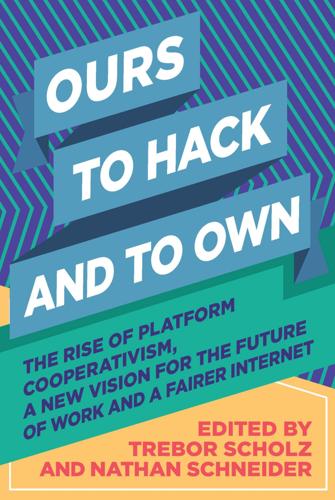
Ours to Hack and to Own: The Rise of Platform Cooperativism, a New Vision for the Future of Work and a Fairer Internet
by
Trebor Scholz
and
Nathan Schneider
Published 14 Aug 2017
COUNTERANTIDISINTERMEDIATION On her blog, Wendy M. Grossman writes, “‘Disintermediation’ was one of the buzzwords of the early 1990s. The Net was going to eliminate middlemen by allowing us all to deal with each other directly.” Today, the landscape is dominated by many fewer, much larger ISPs whose fixed connections are far more trackable and controllable. We thought a lot about encryption as a protector of privacy and, I now think, not enough about the unprecedented potential for endemic wiretapping that would be enabled by an increasingly centralized Internet. The idea of disintermediation was central to the emancipatory visions of the Internet, yet the landscape today is more mediated than ever before.
…
Those of us who are striving to organize workers in the online economy have to build a theory for reputation portability and protection into our other organizing work. We can’t let reputation management become disaggregated from the platforms on which workers get work. So build a better mousetrap. We should take a lesson from Dave’s union too, and build organizations that can evolve as the technology work evolves. 12. COUNTERANTI-DISINTERMEDIATION DMYTRI KLEINER In Chapter 33 of Capital, Karl Marx introduces us to the character of Mr. Peel, recounted from E. G. Wakefield’s England and America: A Comparison of the Social and Political State of Both Nations. Although Mr. Peel’s story is one of early nineteenth-century colonialism, it helps us understand what has become of the Internet and the so-called sharing economy.
…
The idea of disintermediation was central to the emancipatory visions of the Internet, yet the landscape today is more mediated than ever before. If we want to think more about the consequences of an increasingly centralized Internet, we need to start by addressing the cause of this centralizing. The Internet was colonized by capitalist platforms; centralization is required to capture profit. Disintermediating platforms were ultimately reintermediated by capitalist investors dictating that communications systems be built to capture profit. The flaw was, to some degree, a result of the architecture of the early Internet. The systems that people used in the early Internet were mainly cooperative and decentralized, but they were not end-to-end.

To Save Everything, Click Here: The Folly of Technological Solutionism
by
Evgeny Morozov
Published 15 Nov 2013
As far as intermediaries go, this sounds very impressive: a single Californian company makes decisions over what counts as hate speech and profanity for some of the world’s most popular sites without anyone ever examining whether its own algorithms might be biased or excessively conservative. Instead of celebrating the mythical nirvana of disintermediation, we should peer inside the black boxes of Impermium’s spam algorithms. The belief in the emancipatory potential of disintermediation is most pronounced in the vast literature on the future of book publishing, a field that is itself constantly defying the trends it predicts (someone ought to publish a book about the doomsayers who keep publishing books about the end of publishing).
…
,” Slate, March 5, 2012, http://www.slate.com/articles/business/moneybox/2012/03/apple_vs_google_the_war_over_third_party_cookies_.html. 164 “in a world of user tracking”: ibid. 165 easily one of the ugliest words in the English language: I’ve discussed the myth of disintermediation in a Slate column, from which this section partly draws. See Evgeny Morozov, “Muzzled by the Bots,” Slate, October 26, 2012, http://www.slate.com/articles/technology/future_tense/2012/10/disintermediation_we_aren_t_seeing_fewer_gatekeepers_we_re_seeing_more.html . 165 The company claims to have developed a technology: Mark Risher, “The Dark Side of Social: Protect Your Brand from Abusive Social Spam,” The Allied Front (Impermium’s corporate blog), October 10, 2012, http://www.impermium.com/blog/2012/10/10/the-dark-side-of-social-protect-your-brand-from-abusive-social-spam. 166 “is chock-full of books”: Jeff Bezos, “The Power of Invention,” SEC.gov, April 2012, http://sec.gov/Archives/edgar/data/1018724/000119312512161812/d329990dex991.htm. 167 The Shock of the Old: David Edgerton, Shock of the Old: Technology and Global History Since 1900 (London: Profile Books, 2011), 35. 167 A study by a team of Scandinavian researchers: Karl-Erik Sveiby, Pernilla Gripenberg, and Beata Segercrantz, eds., “The Unintended and Undesirable Consequences: Neglected by Innovation Research,” in Challenging the Innovation Paradigm (London: Routledge, 2012). 168 “The innovator was a heretic”: Benoit Godin, “Kοτομία: An Old Word for a New World, or the De-Contestation of a Political and Contested Concept,” in ibid., Challenging the Innovation Paradigm, 37. 168 “Innovation got a positive hearing”: ibid., 53. 169 “Depending on what is created”: Allen Buchanan, Tony Cole, and Robert O.
…
“Down with the Gatekeepers!” . . . Say the Gatekeepers Faith in the neutrality, objectivity, and self-evidence of filters and algorithms is not the high point of cybernaïveté, though. That dubious honor goes to the widespread belief that “the Internet” is ridding us of gatekeepers and intermediaries. “Disintermediation”—easily one of the ugliest words in the English language—is often heralded as the defining feature of the digital age. Thanks to innovative new technologies, middlemen of all stripes are believed to be going the way of the dodo. Once editors, publishers, and bookstores wither, the story goes, our public life will finally be liberated from their biases, inefficiencies, and hidden agendas.

Likewar: The Weaponization of Social Media
by
Peter Warren Singer
and
Emerson T. Brooking
Published 15 Mar 2018
When the internet first began to boom in the 1990s, internet theorists proclaimed that the networked world would lead to a wave of what they called “disintermediation.” They described how, by removing the need for “in-between” services, the internet would disrupt all sorts of longstanding industries. Disintermediation soon remade realms ranging from retail stores (courtesy of Amazon) and taxi companies (courtesy of Uber) to dating (courtesy of Tinder). Athar’s tale showed how the business of information gathering had undergone the same kind of disintermediation. No longer did a reporter need to be a credentialed journalist working for a major news organization.
…
lang=en. 54 Twitter follower count jumped: Steve Myers, “How 4 People and Their Social Network Turned an Unwitting Witness to bin Laden’s Death Into a Citizen Journalist,” Poynter, May 3, 2011, http://www.poynter.org/2011/how-4-people-their-social-network-turned-an-unwitting-witness-to-bin-ladens-death-into-a-citizen-journalist/130724/. 54 Local journalists sped: Mullen, “Whatever Happened to Guy?” 54 only way that Athar: Ibid. 54 “disintermediation”: Robert Gellman, “Disintermediation and the Internet,” Government Information Quarterly 13, no. 1 (1996): 1–8. 55 just 6 percent: “Internet Users (Per 100 People): Pakistan,” UNdata, http://data.un.org/Data.aspx?d=WDI&f=Indicator_Code%3AIT.NET.USER.P2. 55 “Secrets now come”: Authors’ interview with CIA official, northern Virginia, September 10, 2016. 55 “Welcome to America”: “George Allen Introduces Macaca,” YouTube video, 01:02, uploaded by zkman, August 15, 2006, https://www.youtube.com/watch?
…
See information data localization, 89 Dawkins, Richard, 189, 190 de Tocqueville, Alexis, 121 deaths Chicago gangs, 13–14 Duterte’s “drug war,” 15 Gaza City, 194, 196 ISIS and, 153 Nairobi’s Westgate mall, 235 Russia and Ukraine, 201–2, 204 Turkey coup, 91–92 deep fakes, 253 deep learning, 249, 250, 256 deep web, 52 democracy (vs. trolls), 211, 241, 262–63, 265–66 Denver Guardian (fake newspaper), 132 Dewey, Caitlin, 137 Digital Forensic Research Lab, 138 Digital Millennium Copyright Act (DMCA), 225–26 digital trail, 60–61, 66 digital wildfires, 137 digital world war, 172 DigitaShadow, 213 diplomacy, 15, 202 discrediting anti-vaxxers, 124–25 campaigners, 116 of information, 123 journalists and activists, 15, 114 of truth, 140 See also trolls and trolling disinformation, 103–14, 137 botnets, 141–47 cybersecurity, 241 dangers of, 261 Russian botnets, 144–45 See also fake news; propaganda disintermediation, 54–55 diversity, 101 Dixson, Angee, 138–39, 140 Dogood, Silence, 29 Domino’s Pizza, hack, 195 Donbass News International (DNI), 108 Dorsey, Jack, 48 dot-com bubble, 44 Drew, Lori, 227–28 Ducca, Lauren, 116 Dumbledore’s Army, 172 Dupin, C. Auguste, 110 Durov, Pavel, 94 Duterte, Rodrigo, 15 E eBay, 41 Egypt, revolution in, 85 8chan, 191–92 Eisenhower, Dwight D., 259 El Salvadoran drug gangs, 14, 136 elections botnets, 142 future of, 264 interference in, 242 in Iran, 84 U.S. midterm (2006), 55–56 U.S. midterm (2010), 142 U.S. midterm (2018), 58 U.S. presidential election (2016), 111–14, 119, 128, 135 Electronic Frontier Foundation, 83 Eliot, T.
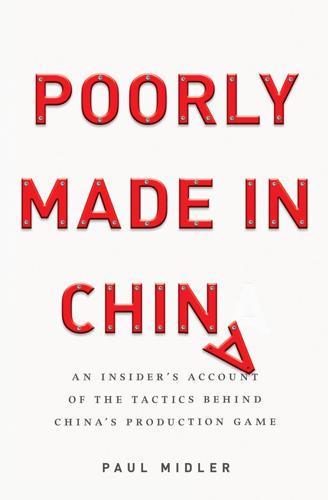
Poorly Made in China: An Insider's Account of the Tactics Behind China's Production Game
by
Paul Midler
Published 18 Mar 2009
Johnson Carter was working with most of the biggest retailers in the country. This included supermarkets, drugstores, and discount chains—all of which were willing to sell soap and shampoo products made in China. The factory wanted access to these players; at the same time, retailers also got it in their heads that they could disintermediate or remove the importer. When disintermediation took place, it tended to benefit the Chinese company more often. An importer who was purchasing a product at $2.25, for example, might have sold that product to a retailer for $4.40. The retailer then got the idea: I’ll go around the importer, straight to his supplier, and I’ll pick up the same product for $2.25.
…
Chinese factories could take any product and move it quickly into production (“All we need is your sample”), and they showed an incredible willingness and enthusiasm for getting a relationship started. Many of those new importers streaming into China did not necessarily have prior experience in international trade. They were in some cases retailers and distributors who decided to disintermediate those agents who had previously sourced merchandise for them. Others were coming from completely unrelated industries. Many were leaving professional careers to jump into the trade game. To do business in China required no special business license or certification. China manufacturing required no tests or qualifications, and traders were arriving—and often staying—on simple tourist visas that could be extended without difficulty.
…
Johnson Carter had customers that were looking to go around it to purchase direct, but the importer held a key advantage that its customers did not; it had buying power. In the area of private label soap and shampoo products, Johnson Carter bought in larger volumes than any one of its customers. Companies that disintermediated the middleman quite often suffered, if only because they did not have as much volume. Manufacturers naturally welcomed the possibility of customers losing buying power because it gave them the chance to charge more for their products. Manufacturers entered into business relationships where they earned almost no profit, knowing that they could find a profit opportunity down the road.
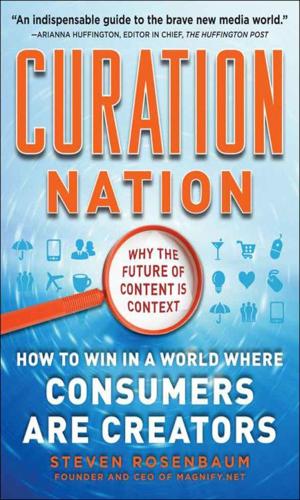
Curation Nation
by
Rosenbaum, Steven
Published 27 Jan 2011
Okay, maybe not a full-blown stream, but a revenue trickle; when these microcareers are knit together, your curated knowledge can evolve from a hobby to an avocation to one of the many gigs that pay the rent, keep your kitty in cat food, or help you save for a college tuition. Which is to say, curation is about something different than disintermediation. In fact, it’s about re-mediation. It’s about adding quality back into the equation and putting a human filter between you and the overwhelming world of content abundance that is swirling around us every day. Curation replaces noise with clarity. And it’s the clarity of your choosing; it’s the things that people you trust help you find.
…
THE FUTURE OF JOURNALISM Every formerly powerful editorial structure, it seems, is having a fit over loss of its centralized control: how dare people without history degrees pick what they like, or how dare those without journalism degrees share what they know! The nerve! If you are wondering why there’s so much hand-wringing over the future of journalism in a curated world and less Sturm and Drang over, for example, how Etsy is disintermediating the local arts and crafts fair, there’s a simple answer. Journalists who see themselves as victims of technology have the currently dominant media outlets to broadcast kvetching. Clay Shirky is the ideal observer of all this noisy change. An actual adult who’s almost preter-naturally youthful, he teaches at New York University’s interactive telecommunications program (ITP).
…
And Jeff Jarvis, the founding editor of Entertainment Weekly, has pretty strong feelings about TV as well. Jarvis sees the “exploding” of TV in a number of critical ways. First, he proclaims, “At some point, soon, content producers will get rid of all middlemen,” and there’s lots of reasons to believe this is true. After all, the Web is disintermediating lots of businesses that used to have middlemen. But Jarvis goes on to connect all this to Madison Avenue, seeing a battle ensuing between old-media companies moving online and emerging complete new-media outlets. Says Jarvis, “What excites me most is that reduced cost of production. That’s really what drove Weblogs: history’s cheapest publishing tool reduced the barrier to entry-to-media and allowed anyone to produce and distribute text content.
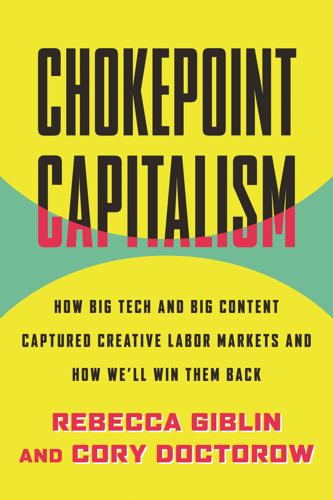
Chokepoint Capitalism
by
Rebecca Giblin
and
Cory Doctorow
Published 26 Sep 2022
or Baila Reggaeton or Rock Classics, the more streaming comes to mimic radio. The difference is that with radio there were thousands of DJs deciding what to play, including many that were passionate about breaking new local talent. With streaming, just one faceless global giant programs each channel. This trend threatens to disintermediate artists and labels, just as Amazon sought to disintermediate publishers by encouraging writers to publish direct. Liz Pelly has been warning of this danger for years: “A music culture dependent on playlists is dependent on Spotify, whereas a music culture dependent on albums is dependent on record labels.”9 Passive listeners are less likely to form connections with the musicians who make it or seek out their gigs.
…
The strategy was obvious to writers like Charlie Stross as far back as 2012: “By foolishly insisting on DRM, and then selling to Amazon on a wholesale basis, the publishers handed Amazon a monopoly on their customers—and thereby empowered a predatory monopsony.”27 Once publishers saw the trap they’d fallen into, they became desperate to get out. Amazon had already been demanding ever greater concessions as its grip over the physical book market grew tighter, and publishers knew it would do the same with ebooks. They also feared that Amazon might “disintermediate” them from the equation altogether, by negotiating directly with authors and agents for rights and selling books directly to the public.28 Indeed, as we’ll show, this is exactly what happened! Publishers became fixated on raising prices from $9.99, which they thought was devaluing their products, undercutting physical sales, and threatening the viability of their non-Amazon sellers.
…
Not even the biggest publisher thought it could force Amazon’s hand alone. Amazon got wind of the deal shortly before the Apple agreements were actually signed. It retaliated straight away, announcing that authors who self-published via Kindle would now get 70 percent royalties in the US market, about double their previous cut.29 This was the disintermediation push publishers had feared. Traditional publishing usually pays authors about 10 percent on physical copies and 25 percent on ebooks, and they knew 70 percent royalties would lure away some of their most profitable authors. Nonetheless, those five of the Big Six publishers went ahead and signed agency agreements with Apple.
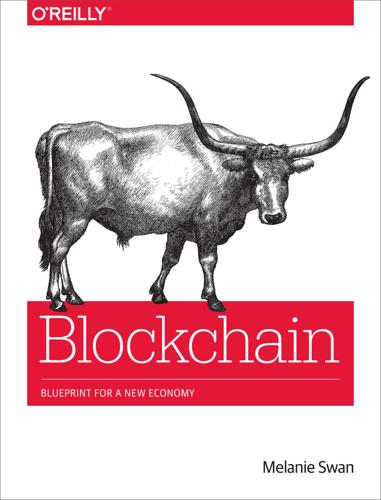
Blockchain: Blueprint for a New Economy
by
Melanie Swan
Published 22 Jan 2014
Beyond these situations in which a public interest must transcend governmental power structures, other industry sectors and classes can be freed from skewed regulatory and licensing schemes subject to the hierarchical power structures and influence of strongly backed special interest groups on governments, enabling new disintermediated business models. Even though regulation spurred by the institutional lobby has effectively crippled consumer genome services,3 newer sharing economy models like Airbnb and Uber have been standing up strongly in legal attacks from incumbents.4 In addition to economic and political benefits, the coordination, record keeping, and irrevocability of transactions using blockchain technology are features that could be as fundamental for forward progress in society as the Magna Carta or the Rosetta Stone.
…
Users can trust the system of the public ledger stored worldwide on many different decentralized nodes maintained by “miner-accountants,” as opposed to having to establish and maintain trust with the transaction counterparty (another person) or a third-party intermediary (like a bank). The blockchain as the architecture for a new system of decentralized trustless transactions is the key innovation. The blockchain allows the disintermediation and decentralization of all transactions of any type between all parties on a global basis. The blockchain is like another application layer to run on the existing stack of Internet protocols, adding an entire new tier to the Internet to enable economic transactions, both immediate digital currency payments (in a universally usable cryptocurrency) and longer-term, more complicated financial contracts.
…
The blockchain is fundamentally a new paradigm for organizing activity with less friction and more efficiency, and at much greater scale than current paradigms. It is not just that blockchain technology is decentralized and that decentralization as a general model can work well now because there is a liquid enough underlying network with the Web interconnecting all humans, including for disintermediated transactions: blockchain technology affords a universal and global scope and scale that was previously impossible. This can be true for resource allocation, in particular to allow for increasingly automated resource allocation of physical-world assets and also human assets. Blockchain technology facilitates the coordination and acknowledgment of all manner of human interaction, facilitating a higher order of collaboration and possibly paving the way for human/machine interaction.
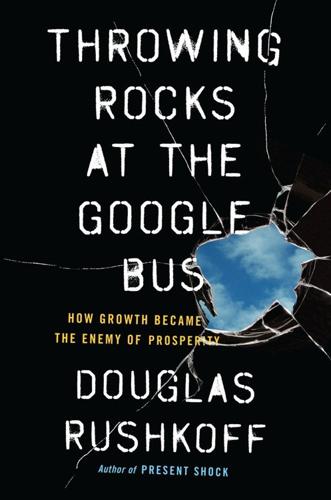
Throwing Rocks at the Google Bus: How Growth Became the Enemy of Prosperity
by
Douglas Rushkoff
Published 1 Mar 2016
Favor banks and LETS systems are great for those who are willing to work and keep working, but does escaping the growth trap mean that regular people lose any ability to invest and accumulate capital for the long term? Initially, it appeared that digital technologies would be a boon for the individual investor—the little guy. The net would make markets more transparent, spread financial information more democratically, and let people trade for themselves, just like the pros. It should provide a way to disintermediate the bankers and brokers—cutting out the middlemen and keeping more autonomy and cash for oneself. Digitally powered trading seems to be further along an ever-improving continuum of agency for individual investors. But for all this to be true, we have to accept the underlying premise that individuals taking charge of their own future security is a winning proposition.
…
In others, early backers pay a premium in return for a souvenir, a token of thanks, or some other confirmation of their participation in the project. They get the satisfaction of driving production—of tastemaking and participation—instead of simply pulling from the consumption side of things. They have a share in the greater enterprise. From a business perspective, the lender has been disintermediated. Instead of pitching their ideas to a banker, creators get to pitch directly to their audiences. (Yes, it helps to have an audience in the first place—but more than a few talents and products have been discovered through these platforms, which let users spread news of worthy campaigns easily on social media.)
…
Startups funded by venture capital do about the reverse, with more than 90 percent of fully funded enterprises failing.59 The same crowdsourcing dynamics that Upwork or 99designs* use to shift risk onto freelancers can also shift risk off the table altogether. The less risk, the less money is owed to the risk taker. So, used appropriately, the net disintermediates the funder, eliminates the need to abandon ongoing productivity in favor of a quick exit, spares the marketplace from having to pay back investors, keeps cash in circulation instead of being extracted, and gives regular people the opportunity to put their money toward what they want to see happen.
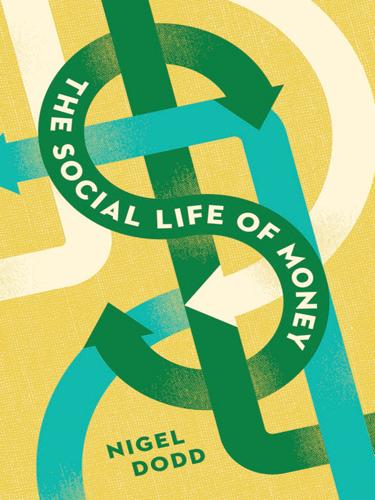
The Social Life of Money
by
Nigel Dodd
Published 14 May 2014
Critics of such a system advocate a horizontal arrangement. Proudhon’s proposal for a Bank of the People is a good example. His arguments are intriguing because they touch upon one of the most prominent and controversial themes in contemporary discussions of financial regulation and monetary reform, namely, the issue of disintermediation. Proudhon proposed his scheme for two banks—a Bank of Exchange and a Bank of the People—in Solution of the Social Problem, completed one year after the 1848 revolutions in France. Although he had participated in those revolutions, Proudhon had misgivings about the provisional government, which he believed was neglecting vital economic questions.
…
At around the same time, Nick Szabo developed the notion of “bit gold” (Szabo 2008), widely seen as the precursor to Bitcoin. Like B-money, bit gold sought to use secure cryptography that made it possible to combine anti-inflationary monetary creation (it would be strictly limited and controlled) with the principle of disintermediation. In other words, bit gold as Szabo conceived it would consist of valuable electronic bits (created through a “proof of work” generated from a public string of bits, called a challenge string) that cannot be forged, and whose creation is both finite and independent of any third party such as government or a central bank.
…
The very feature of Bitcoin that renders it attractive as an open and democratic monetary system that is free from asymmetrical power structures—the software that controls exactly how many Bitcoins will be produced—undermines its operation as a form of money. Reflecting some of these concerns, a new variant of Bitcoin is under development, which exploits its perceived virtue of disintermediation while specifically seeking to avoid hoarding.40 This is Freicoin, which is essentially Bitcoin plus demurrage. The new currency is being promoted through the Freicoin Foundation, which is linked to Occupy Wall Street. Although having such an organization at the “center” of a P2P currency seems odd, its organizers claim that there is no other way of dispersing coins across society.41 Freicoin uses a combination of organizational modes: vertically, the foundation distributes coins through grants; horizontally, the coins are mined through a network of rigs.
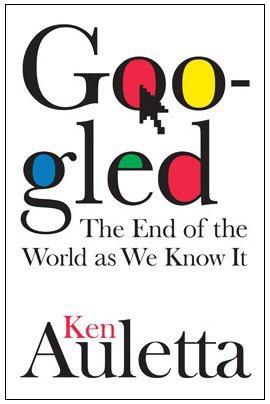
Googled: The End of the World as We Know It
by
Ken Auletta
Published 1 Jan 2009
It was largely overlooked at the time that automated AdSense cut out the advertising middleman. Or as Wojcicki told me, “It changed the way content providers think about their business. They know they can generate revenues without having their own sales team.” In the online world, Google was potentially dis-intermediating not just the media buying agency but the sales forces of content companies. AdWords and AdSense would solve the mystery of how Google could monetize its search engine. For the first time, in 2001, Google turned a profit: $7 million on revenues of $86 million. The next year, revenues more than quadrupled to $439 million, and profits jumped to $100 million.
…
While Google warily watched Facebook, a real skirmish broke out between Google and the bear that is the advertising industry. Ad executives had been uneasy for some time that Google would displace media-buying agencies. But there were additional concerns. How many more ad dollars would Google siphon from traditional media companies? Would Google disintermediate the sales forces of these companies? Might Google bypass advertising agencies and develop a direct relationship with advertisers? If Google’s automated auction system brought the cost efficiencies Larry Page touted, would it not inevitably lower old media’s advertising rates as well as the fees ad agencies charged clients?
…
“We want an open network where we can ensure quality,” he said. “Google’s vision of Android is Microsoft’s vision of owning the operating system in every PC,” Seidenberg said. “Guys like me want to make sure that there is a distribution of platforms and devices. Is it in Google’s interest to disintermediate us? Yeah.” He let his voice trail off, not wanting to engage in verbal warfare. But he said his job is to “make sure we are never out-positioned,” never a “captive.” Neither Seidenberg’s power nor Schmidt’s skepticism deterred Google from plunging ahead. (In late 2008, T-Mobile ordered two million units in the hope that its Google-powered smart phone could rival iPhone.)
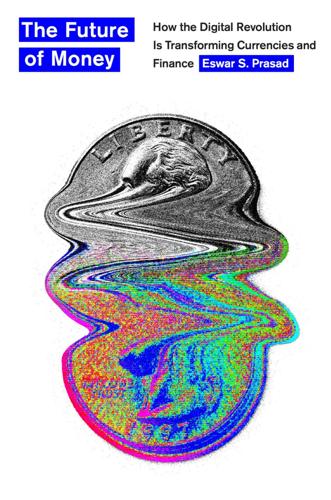
The Future of Money: How the Digital Revolution Is Transforming Currencies and Finance
by
Eswar S. Prasad
Published 27 Sep 2021
This harkens back to an important policy debate about whether a public institution such as a central bank should even be in the business of doing something that the private sector is perfectly capable of doing well. Thus, a CBDC inevitably raises a thorny and ineluctable set of questions about the appropriate role of the state in the economy. Disintermediation of Banks A central bank could pay interest on its retail CBDC accounts. After all, if a CBDC can be subject to a negative interest rate in difficult times, it can equally well provide a positive interest rate in normal times. This would put the CBDC in direct competition with bank deposits, in turn threatening the viability of commercial banks.
…
This allows financial institutions to compete and innovate on the technological aspects of e-CNY-based transactions. Holders of the e-CNY receive no interest from the central bank unless the money is deposited into a bank account, where it earns the normal rate. Thus, the e-CNY does not compete with commercial bank deposits, reducing the risk of disintermediation of the banking system. In more technical terms, the e-CNY constitutes “a full reserve system with no derivative deposits or money multiplier effects.” To promote the broad use of the e-CNY and to further allay concerns about privacy, it is based on a “loosely coupled” design that allows fund transfers without the need for a bank account.
…
There are ways to attain the benefits of a CBDC while avoiding many of the undesirable side effects. The dual-layer (or two tiered) approach, in which the central bank creates the digital version of its currency but leaves the distribution of that currency and the maintenance of CBDC wallets to existing financial intermediaries, has many virtues. This approach lessens the risk of disintermediation of banks, allows the private sector to build innovations on top of the CBDC infrastructure managed by the central bank, and keeps the central bank removed from direct involvement in managing the front-end of payments or creating credit. The intermediaries can also handle regulatory issues such as know-your-customer requirements, alleviating concerns that the CBDC accounts can be used for illicit purposes, such as money laundering.

Platform Revolution: How Networked Markets Are Transforming the Economy--And How to Make Them Work for You
by
Sangeet Paul Choudary
,
Marshall W. van Alstyne
and
Geoffrey G. Parker
Published 27 Mar 2016
During the first stage of Internet-driven disruption, many business commentators predicted that the biggest impact of the new information and communication technologies would be widespread disintermediation—the elimination of middlemen, or intermediate layers, from industries, establishing direct connections between producers and consumers. Experts pointed to the decline of traditional businesses like travel agents and insurance brokers, as consumers learned to shop for airline tickets and insurance policies without intermediaries. The same process of disintermediation was expected to sweep many other industries over time. The reality has proven to be somewhat different. Across numerous industries, platforms have repeatedly re-intermediated markets, introducing new kinds of middlemen rather than simply eliminating layers of market participants.
…
Bill Gurley, “A Rake Too Far: Optimal Platform Pricing Strategy,” Above the Crowd, April 18, 2013, http://abovethecrowd.com/2013/04/18/a-rake-too-far-optimal-platformpricing-strategy/. 2. Thomas Steenburgh, Jill Avery, and Naseem Dahod, “HubSpot: Inbound Marketing and Web 2.0,” Harvard Business School Case 509-049, 2009. 3. Tom Goodwin, “The Battle Is for the Customer Interface,” TechCrunch, March 3, 2015, http://techcrunch.com/2015/03/03/in-the-age-of-disintermediation-the-battle-is-all-for-the-customer-interface/. CHAPTER 2: NETWORK EFFECTS 1. Aswath Damodaran, “Uber Isn’t Worth $17 Billion,” FiveThirty- EightEconomics, June 18, 2014, http://fivethirtyeight.com/features/uber-isnt-worth-17-billion/. 2. Bill Gurley, “How to Miss By a Mile: An Alternative Look at Uber’s Potential Market Size,” Above the Crowd, July 11, 2014, http://abovethecrowd.com/2014/07/11/how-to-miss-by-a-mile-an-alternative-look-at-ubers-potential-market-size/. 3.
…
B., 54–55 classified ads, 49, 63, 120, 131, 133–34 click-throughs, 190, 197 cloud-based networking, 30, 56 cloud-based storage, 54, 56, 56, 59, 102, 177–78 cloud computing, 145, 155, 209 Coase, Ronald, 234–35 Coca-Cola, 198–99 code, computer, 53, 79–80, 131–32, 140, 143, 166, 170, 172, 240, 254–55, 267 coffee machines, 143, 157–58, 159 colleges and universities, 8–9, 91, 97–99, 265–68 community-driven curation, 67–68, 78 comparative advantage, 188–89 competition complexities, 210–13 computer programming, 52, 99, 131–32, 267 Confinity, 80, 83 Congress, U.S., 248–49 connectivity platforms, 200–201, 285, 289 consulting firms, 8, 194 consumer relationship management (CRM), 11, 96, 174 consumer-to-consumer marketplace, 2–3, 29 contact information, 163, 190 contracts, 142, 166, 172, 197, 225–26 control systems, 164–65 convex growth, 20, 295, 297 Cook, Tim, 148 co-opetition (co-creation), 194, 212, 227 copyright, 57, 167, 208, 258, 259 core developers, 141–42 corporations, 157–58 governance by, 164, 256–60 image ads for, 229–30 sponsorship by, 137, 139–40 corruption, 160, 236–37 cosmetics industry, 206 Coursera, 8, 265, 266, 267 Craigslist, 47, 49, 91–92, 101, 103, 165, 193, 224 credit, 170, 175, 243–44, 263, 275–76, 277 credit cards, 37, 81, 83, 84, 137, 139–40, 175, 226, 243, 275 credit reports, 243–44 crime, 165, 231, 257 critical assets, 220–21 critical mass, 97, 112, 188, 195, 201–2 Croll, Alistair, 191, 196 cross-side effects, 29, 30, 34, 295 crowd curation, 167–70 crowdfunding, 40, 51, 92, 96, 102, 111 crowdsourcing, 12, 267 Cryptography, 171 currency, 5, 15, 36, 37–38, 46, 159, 173–74 customized ads, 244 Cusumano, Michael A., 58, 178–79 Damodaran, Aswath, 16–18 data: accountability based on, 253–56 aggregators for, 141, 145–46, 244–48, 254, 255, 262–63, 278 big, 11, 247–48, 276 brokers of, 244–45 capture and collection of, 218–19, 264, 296 in communications, 176–78 flow of, 170, 246–48 leveraging of, 217–20 manipulation of, 251–53 in nationalism, 247–48, 260 platforms for, 200 profiles derived from, 48, 119, 127 security of, 230, 243–46, 260 software for, 91–92, 107, 255, 269, 270–71, 275, 276–77, 278, 284, 286 storage of, 54, 56, 56, 59, 102, 171–73, 177–78 strategic, 217–20 tactical, 217–18 tools for, 10–11, 48, 49, 71 databases, 24–25, 42–44, 63, 72–75, 76, 91–92, 107 “Data Brokers: A Call for Transparency and Accountability,” 245 Data.gov, 283 Data Jams, 282 dating services, 26–28, 30, 93, 97–98, 120, 123, 166, 194 De Beers, 208–9 decentralization, 159, 171–73, 272–74 deep design, 179–80 defaults, 170, 263, 276 Delicious, 95–96 demand-side economies of scale, 18–20, 32, 34, 226 democracy, 149–50, 257, 283 department stores, 264, 287 designers, graphic, 66, 72, 106, 118–19, 267 design structure matrices, 57–58 diabetes, 269–70 diamond industry, 208–9 digital currency, 171, 274–78 digital message deliveries, 94–95 digital real estate, 174–75, 216 digital rights management (DRM), 31 Diners Club, 84 direct-to-consumer channels, 264 discounts, 22, 25–26 disintermediation, 68–69, 71–72, 78, 161–62, 170–71, 298 disk defragmentation, 200 dispute resolution, 169–70 Djankov, Simeon, 238, 239 doctors, 263, 268, 269, 271, 279 Dorsey, Jack, 97 dot-com bubble, x, 22, 79, 80, 113, 288 Dribbble, 37, 66, 118–19 driverless cars, 284 driver ratings, 254, 264 driving records, 232–33, 277 Dropbox, 32, 102, 109 Drucker, Peter, 210 drug trafficking, 162 Duhigg, Charles, 146 Duracell, 162 DVDs, 63, 111, 139 e-commerce, 56, 91, 111, 124–25, 145, 204–5 Earth Class Mail, 94–95 eBay, vii, ix, 2, 3, 17, 24, 36, 38, 40, 83–84, 85, 91, 93, 111, 112–13, 125, 135, 161–62, 163, 169–71, 172, 173, 196n, 205, 206, 207, 215, 262 economics, 72, 78, 230, 234–39 economies of scale, 18–20, 206 Edison, Thomas, 19, 284 editors, 7, 10, 68, 72, 93, 129–30, 262 education, 7–8, 77, 96, 111, 122, 124, 212, 233, 261, 263, 265–68, 269, 288, 289 education platforms, 96, 111, 265–68, 289 Eisenmann, Thomas R., ix, 130 electric lighting, 19, 285 electric power, 19, 69, 247, 284–85 Electronic Arts (EA), 94, 124, 240 electronic health records, 270 electronics, 75, 178, 206 email, 81, 85, 101–4, 185 Encyclopaedia Britannica, 10–11 encyclopaedias, 10–11, 129–30, 133, 149–51 Endomondo, 75 end-to-end design principle, 52–54 energy: efficiency of, 254, 284–85, 286 industry for, 261, 272–74, 289 resources of, 69–70, 254, 272–74 enhanced access, 112, 118, 119–21, 126, 127, 296 enhanced curation, 121–22, 126–27 enhanced design, 223–24 enterprise management, 173–75 enterprise resource planning (ERP), 11 entrepreneurs, 79–83, 86, 96, 111, 205, 282 environmental issues, 62, 70–71, 233, 237, 272, 274 Equal Credit Opportunity Act (1974), 243–44 Equity Bank, 277–78 e-readers, 178 eToys, 22 Etsy, 65, 73, 149, 212, 262, 299 European Union (EU), 242, 247–48 events listings, 112–15, 126 Excel, 216 excess inertia, 241, 296 exclusive access, 213–15 expert networks, 30, 36, 68, 93, 96, 99, 117–18 extension developers, 141, 142–45, 147, 148–49, 153–54 external networks, 100–101, 102, 103–4, 105 Facebook, 3, 12, 20, 32, 33, 37, 39, 41–50, 66, 90–91, 98–103, 104, 112, 121, 126, 131–35, 132, 133, 145, 151, 159, 163, 168, 181, 184, 185, 197, 204, 216–18, 221, 226, 245, 251–52, 267, 270–71 Fair Credit Reporting Act (1970), 175 fairness, 179–81, 230 fair use doctrine, 259 farm prices, 42–44, 60 FarmVille, 221 Fasal, 42–44 Federal Reserve, 174 Federal Trade Commission (FTC), 242, 243–44, 245 FedEx, 61, 249–50, 278 feedback loops, 21, 28, 45–46, 68, 71, 72, 100–101, 108, 139, 167–70, 218–19, 223, 296 feet on street (FOS) sales forces, 43–44, 91 files, 63, 166 encryption of, 200 formats for, 29–30 film industry, 9, 66, 138–39, 163, 178, 259, 267 filters, 38–41, 42, 59, 133, 295, 296–97 financial crash of 2008, 178, 230 financial services industry, 11, 16–18, 33, 164, 171–73, 178, 230, 261, 274–78, 289 fitness and sports activities, 74–76, 245, 270–71 five forces model, 207–10, 212, 213, 221 500px, 37, 47 Fiverr, 116, 193 fixed costs, 9–10, 209, 224–25, 278 follow-the-rabbit strategy, 89–91, 105 food industry, 76, 254, 255, 278 Ford, Henry, 19, 32 Ford Motor Co., 19 Fortune 500, 65 Foursquare, 97, 98 fragmented industries, 131, 262, 265, 268–69, 289 fraud, 175, 196–97, 255, 257, 276 Free: The Future of a Radical Price (Anderson), 22 freelancers (independent contractors), 21, 36, 37, 64, 65, 117–18, 193–94, 196, 210, 213, 233–34, 249–51, 279, 280, 287, 297, 299 free trade, 205, 206, 235 Friedersdorf, Conor, 236 Friendster, 98 FuelBand, 74, 75 full-time employees, 249–50 FUSE Labs, 252–53 games, gaming, 94, 103, 124, 132, 159, 163, 178, 211, 212, 217, 221, 240 “Gangnam Style,” 84, 147 gatekeepers, 7–8, 151–52, 171–73, 243, 253, 262, 265, 268, 275–76, 281, 289, 298 Gawer, Annabelle, 58, 178–79 Gebbia, Joe, 1–2 General Electric (GE), 4, 13, 19, 76, 78, 86, 110, 201, 204, 208, 247, 284 Generally Accepted Accounting Principles, 238–39 geographic focus, 98–99, 271 Germany, 96–97, 161, 205 Gillette, King, 109–10 Global 500, 209–10 Go-Jek, 278 Goldberg, Whoopi, 23 Goodwin, Tom, 11–12 Google, vii, 3–7, 21–25, 30–33, 49–50, 55, 58, 64, 72, 111, 112, 120, 121, 125, 134, 137, 140–41, 148, 153–54, 159, 198–99, 214–17, 226, 240, 242, 250, 267, 270–71 Google AdWords, 72, 120, 121, 125 Google Maps, 49–50, 55, 148, 200 Google Play, 154 government platforms, 261, 281–83, 289 graphical processing units (GPUs), 56, 57, 58 graphic design, 67, 226 Great Britain, 160, 205 gross domestic product (GDP), 160, 161 Grossman, Nick, 253, 254, 255, 256 Guardian, 144–45 Gurley, Bill, 16–18, 21 Haber-Bosch process, 19 Hachette Book Group, 251 Haier Group, vii, 76, 125, 198–99, 222 Halo, 94, 240 Halo: Combat Evolved, 94 Hammurabi, Code of, 274 hard drives (HDs), 56, 57, 58 hardware, 56, 57–58, 136, 152–53, 178–79 Harvard University, 98–99, 266 hashtags, 58, 104 Havas Media, 11–12 health care, 32–33, 35, 69, 71, 77, 200, 233, 234, 238, 245, 261, 263, 265, 268–72, 277, 280, 289 health insurance, 234, 263, 271–72, 277, 280 Heiferman, Scott, 113–14, 126 heirlooms, 161–62 Here, 49–50 Hertz, 9 heuristics, 123–24 Hilton Hotels, 8, 64 Hipstamatic, 100 homeowners’ insurance, 175, 232 horizontal integration, 33, 74–76, 208 hospitals, 69, 71, 233, 270, 271–72 hosting sites, 88, 198, 223–24 hotel industry, 1–2, 8–9, 10, 12, 64, 67, 101, 111, 142–43, 198, 224, 229–33, 236, 253, 287 Hotmail, 103, 104 Houghton Mifflin Harcourt, 204, 208, 225 HTTP, 177 Huffington Post, 90 human resources, 14, 39 human rights, 159, 160–61 hypercompetition, 209–10, 213 IBM, x, 137, 152, 179, 284 iCloud, 75 identity theft, 244 InCloudCounsel, 279 income streams, 139–41, 143, 144, 215 India, 73, 91 Indiegogo, 96, 124 Indonesia, 278 Industrial Awakening, 285–86 industrial development, 205–10, 224–25, 268 industrial-era firms, 19, 32, 34, 256, 285, 288 Industrial Revolution, 288 Industry Standard Architecture (ISA), 58 information, 40, 42 agencies for, 243–44 age of, 253, 256, 260 asymmetries of, 161–62, 164, 181, 182, 220, 228, 258–59, 262–63, 265, 269, 281, 289 exchange of, 36, 37, 39, 41, 47–48, 51, 134 intensive need for, 262–63, 265, 268, 281, 289 mis-, 129–30 platforms for, 190, 200, 287 units of, 296–97 initial public offerings (IPOs), ix, 91, 204–5 Instagram, 3, 13, 32, 46, 47, 66, 85, 100, 102–3, 104, 204, 217, 218, 299 instant messaging, 131, 198, 211 insurance industry, 9, 62, 71, 142, 164, 175–76, 232, 268, 277 integrated systems, 33, 74, 131 Intel, vii, x, 57–58, 89, 137, 178–81, 270–71, 284 Intel Architecture Labs (IAL), 179–81 intellectual property (IP), 33, 57, 167, 174–75, 180, 258 interaction failures, 190, 192, 196–97 Interbrand, 198–99 interest rates, 170, 244, 276 Internal Revenue Service (IRS), 93 internal transparency, 176–79 International Financial Reporting Standards, 238–39 Internet, 24–25, 32, 60–63, 76–79, 95–96, 107–13, 121, 167, 201, 204, 205, 209, 244, 249, 250, 263, 264, 283–89, 299 Internet of things, 76, 201, 204, 283–86, 289 inventory, 9, 11–12, 25, 42, 141, 184, 186, 262 investment, ix, 16, 63, 164, 168–69, 184–86, 209, 278 iPads, 95 iPhone, 3, 6–7, 72, 131, 140, 147, 148, 178, 211, 213–14, 222 iStockphoto, 167–68, 173 iTunes, 75, 131, 142, 153, 164, 214, 231 Japan, 66, 205–6 Jassy, Andrew, 177–78 Java programming language, 140 Jawbone, x, 77, 245 job listings, 39, 49, 50, 51, 63, 111, 118–19, 120, 131, 133–34, 137, 184–86, 196, 201, 218 Jobs, Steve, viii, 53, 131, 214 joint venture model, 137, 138 judiciary, 237, 238, 250 JVC, 138–39 Kalanick, Travis, 18, 62 Kelley, Brian P., 157 Kenya, 277–78 Kercher, Meredith, 129–30, 149–50 Keurig Green Mountain, 143, 157–58, 159, 181 Kickstarter, 40, 92, 96, 102, 111 Kindle, 7, 10, 67, 140, 154, 243 Kindle Fire, 140 Knox, Amanda, 129–30, 149–50 Korengold, Barry, 61 Kozmo, 22–23 Kretschmer, Tobias, 257 Kuraitis, Vince, 270, 271 labor: child, 164 division of, 280 market for, 39, 49, 50, 51, 63, 111, 118–19, 120, 131, 133–34, 137, 196, 201, 218, 235 platforms for, 200, 201, 213, 233–34, 248–51, 279–81, 289 regulation of, 230, 249–51, 260, 288 self-employed, 21, 36, 37, 64, 65, 117–18, 193–94, 196, 210, 213, 233–34, 249–51, 279, 280, 287, 297, 299 unions for, 280, 288 Laffont, Jean-Jacques, 235, 237 law firms, 8, 204, 279 laws and legal systems, 88, 164–70, 182, 230, 247–49, 257, 258, 260, 281 lead generation, 113, 117 Lean Analytics (Croll and Yoskovitz), 191, 196 lean startups, 199, 201–2 Lee Kuan Yew, 160–61 LegalZoom, 204, 225 Lending Club, 77, 275, 276 Lessig, Lawrence, 164–65, 166 Levchin, Max, 79–81 Lexis, 204, 225 liability coverage, 175, 232 libertarianism, 79, 80, 236, 238 licensing fees, 61, 131, 258–59 licensing model, 136–37, 138, 139, 214, 235, 296 lightbulbs, 284–85 linear value chains (pipelines), 6, 183–84, 297, 298 LinkedIn, 39, 41–42, 48, 50–51, 103, 111, 119, 170, 173, 184, 197, 218–19, 223, 226, 245 Linux, 137, 138, 154, 200 liquidity, 189–91, 193, 194–95, 201–2, 297 local content regulations, 246–47 logos (icons), 82, 83 “long tail” (software adoption), 216–17, 219 Lyft, 49, 50–51, 67, 213, 227, 250–51, 297 Ma, Jack, 125, 206, 215 MacCormack, Alan, 57 magazines, 72, 151, 197, 244, 264, 275 magnetic resonance imaging (MRI), 69, 71 mail, 63, 94–95, 171 MailChimp, 109 Malaysia, 160 Management Science (MacCormack and Baldwin), 57 mandis (market-makers), 42–44 Manghani, Ravi, 273–74 manufacturing efficiencies, 208, 209, 261 MapMyFitness, 75 mapping services, 49–50, 55, 148, 200 marginal economics, 72, 78 Marini, Rick, 184–85 marketing, 14, 19, 25, 52–53, 72, 73–74, 84–85, 100, 101, 105, 183–84, 209–10, 267 Marketplace Fairness Act (2013), 249 marketplaces, 60, 91, 190, 204, 249 markets: access to, 87–88, 98, 194, 215, 218, 220 aggregation of, 68–69, 72–73, 78, 262, 297 controls for, 164–65 data on, 42–44 emerging, 210–11 entry barriers to, 207–8, 215, 219–20 expansion of, 4, 20, 31–32 failure of, xiii, 161–63, 164, 170–71, 182, 234–35, 256, 257, 258–59, 263, 289 free, 149, 161–65, 173–76, 180, 182, 234–36 frictionless entry into, 25–26, 34, 81, 107–8, 111, 117, 124–25, 130, 168, 206, 297 incumbent advantage in, 86, 218, 261, 263 late-mover problem in, 87–88, 98 liquidity of, 171, 196 local, 70–71, 117–18, 264 manipulation of, 238, 251–53, 260, 287 micro-, 98–99, 105 multi-sided, 159, 164 new entrants to, 207–10, 262, 296 niche, 88, 216, 223–24, 228, 300 one-sided, 157–58, 159 share of, 16–22, 33, 53, 60–62, 65, 81, 87–88, 112–13, 131–33, 132, 133, 137–40, 152–53, 157, 222–26, 260, 287 strategy for, viii, xi, 10, 16–18, 20, 21, 31–32, 33, 42–44, 57–58, 69–73, 77, 78, 89, 111, 124, 173, 210–11, 272–74, 278 supply and demand in, 69–71, 173, 210–11, 272–74, 278 “thickness” of, 164, 171, 173 two-sided, 81, 89, 93, 110, 119, 175, 196, 215, 218, 295, 298 winner-take-all, viii, 224–27, 228, 279–80, 300 marquee strategy, 94–95, 105 Marriott Hotels, 8–9 massive open online courses (MOOCs), 266–67 mass media, 40, 63, 72, 77, 262, 264 MasterCard, 226, 275 matching services, 17, 47–48 Matharu, Taran, 4–5 McCormick Foods, 76 McGraw-Hill, 204, 208 Mechanical Turk, 249, 280 Medicare, 250 Medicast, 269, 279 Medium, 71–72 Meetup, 113–15, 126 Megaupload, 87–88 membership fees, 123, 125 Mercateo, 96–97 mergers and acquisitions, 208, 216, 220–21, 228 Metcalfe, Robert, 20, 297 Metcalfe’s law, 20, 21, 295, 297 metering tools, 272–73 Microsoft, vii, x, 3, 13, 20, 29, 33, 52–53, 94, 103–4, 110, 124, 131, 140, 152–53, 179, 181, 200, 211, 216, 226, 240, 241, 252, 267, 270–71 Microsoft Outlook, 103–4 Microsoft Vista, 52–53 Microsoft Windows, 30, 53, 140, 152–53, 200, 222, 240 Microsoft Windows XP, 53 middlemen, 68–69, 71–72, 78, 161–62, 170–71, 298 Minerva Project, 268 mining, 225, 263 mislabeled bargains, 161–62, 170–71 MIT, ix–x, xi, 214, 266, 267 MIT Initiative on the Digital Economy, ix–x MIT Platform Strategy Summit, xi, 214 moderators, 151–52 modular design, 54–57, 221 monetary policy, 159, 173–74 monetization, 38, 63, 106–27, 188, 215 MonkeyParking, 233, 234 monopolies, 18–19, 162, 163, 172–73, 182, 208–9, 227, 237, 238, 240–41, 242 Monster, 218–19, 223, 226 mortgages, 237, 243, 263 Mount, David, 285–86 MP3 players, 178 multidirectional platforms, 272–74 multihoming, 213–15, 223–28, 250–51, 297, 300 multinational corporations, 246–48 multi-sponsor decision-making, 139–40 multi-user feedback loop, 46, 100–101 music industry, 63, 71, 75, 87, 111, 134–35, 147, 178, 213, 226, 231, 258, 287, 297 MyFitnessPal, 75, 245 Myspace, 87, 92, 98, 125–26, 131–34, 132, 133, 135, 143, 204, 221, 226 Nakamoto, Satoshi, 171–73 Nalebuff, Barry J., 212 NASDAQ, ix, 80 National Transportation Safety Board (NTSB), 237 navigation tools, 191, 297 NBC, 204, 225 negative cross-side effects, 30–32, 34, 295 negative externalities, 163, 229–34, 257, 287 negative feedback, 28, 157–58, 166–67 negative network effects, 17, 26–32, 34, 47, 49, 51, 68, 112–15, 120, 121, 123, 126, 151, 229–34, 287, 298 negative same-side effects, 30, 298 Nest, 204, 225 Netflix, 63, 163, 204, 225 Netscape, 62, 110 network matching, 26–28 network orchestrators, 32 News Corp., 126 news feeds, 121, 168, 251–52 newspapers, 63, 144–45, 264, 287 New York City, 61, 113, 123, 229–30, 231, 258–59 New York State, 69–70, 274 New York Stock Exchange, 55, 171 New York Times, 205 NeXT, 53 Nigeria, 247 Nike, 4, 74–76, 78, 205, 271 9/11 attacks, 113 99designs, 66, 106 Nintendo, 94, 211, 240 noise, 28, 114, 120, 199, 200 Nokia, 49–50, 64, 131, 226 Novel Writing Month, 4–5 NTT, 89 oDesk, 201 oil and gas industry, 225, 235, 259, 263, 272 OkCupid, xi, 26–28, 30, 195–96 oligopolies, 209, 238 on-boarding effect, 90–91, 97 online courses, 96, 111, 265–68, 289 Open Data, 282 “open in” vs.
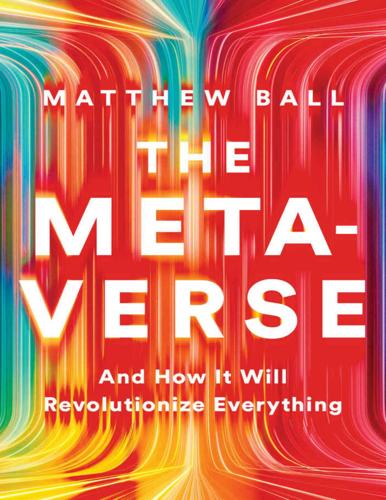
The Metaverse: And How It Will Revolutionize Everything
by
Matthew Ball
Published 18 Jul 2022
For example, anyone with an internet connection could build a website in minutes and at no cost using pure HTML, and even faster using a platform like GeoCities. A single version of this site was (or at least could be) accessed by every device, browser, and user connected to the internet. In addition, no user or developer needed to be disintermediated—they could produce content for, and speak to, anyone they wanted. The use of common standards also meant that it was easier and cheaper to hire and work with outside vendors, integrate third-party software and apps, and repurpose code. The fact that so many of these standards were free and open-source meant that individual innovations often benefited the entire ecosystem, while placing competitive pressures on paid, proprietary standards, and helping to check the rent-seeking tendencies of platforms sitting between the web and its users (e.g., device manufacturers, operating systems, browsers, and ISPs).
…
“Sidechains,” meanwhile, allow tokens to be moved on and off of Ethereum as needed, serving a bit like a petty cash drawer versus a locked safe. Some argue that Layer 2s are a patchwork solution—that developers and users would be better off working on higher performance Layer 1s. They might be right. Yet it’s significant that a developer can use a Layer 1 to jumpstart their own blockchain, and then disintermediate that Layer 1 from its users, developers, and network operators by using, or even building, a Layer 2 blockchain. What’s more, the trustless and permissionless programming of Layer 1s mean that competing Layer 1s can “bridge” into it, enabling developers and users to forever shift their tokens to another blockchain.
…
In addition, Samsung had become increasingly aggressive with its alterations to the “stock” version of Android, producing and marketing its own interface (TouchWiz), while also preloading its devices with its own suite of apps, many of which competed with those offered by Google. Samsung even added its own mobile app store. Samsung’s success as an Android manufacturer is inarguably connected to these investments, but their approach is not dissimilar from “forking” it. Regardless, Samsung’s de facto TouchWiz OS threatened to disintermediate Google from its developers and users, while also serving as the true “reference device.” The arc of Android is important to any understanding of the future of the Metaverse. The Metaverse offers the opportunity to disrupt today’s gatekeepers, such as Apple or Google, but many fear that we’ll just end up with new ones—maybe Roblox Corporation, or Epic Games.

The People's Platform: Taking Back Power and Culture in the Digital Age
by
Astra Taylor
Published 4 Mar 2014
It wasn’t supposed to be this way. One natural consequence of Web-based technologies was supposed to be the elimination of middlemen, or “disintermediation.” “The great virtue of the Internet is that it erodes power,” the influential technologist Esther Dyson said. “It sucks power out of the center, and takes it to the periphery, it erodes the power of institutions over people while giving to individuals the power to run their lives.”26 The problem, though, is that disintermediation has not lived up to its potential. Instead, it has facilitated the rise of a new generation of mediators that are sometimes difficult to see.
…
Instead of lifetime employment, the new system valorized adaptability, mobility, and risk; in the place of full-time employment, there were temporary contracts and freelance instability. In this context, the wish for expressive, worthwhile work, the desire to combine employment and purpose, took on a perverse form. New-media thinkers, with their appetite for disintermediation and creative destruction, implicitly endorse and advance this transformation. The crumbling and hollowing out of established cultural institutions, from record labels to universities, and the liberation of individuals from their grip is a fantasy that animates discussions of amateurism. New technologies are hailed for enabling us to “organize without organizations,” which are condemned as rigid and suffocating and antithetical to the open architecture of the Internet.
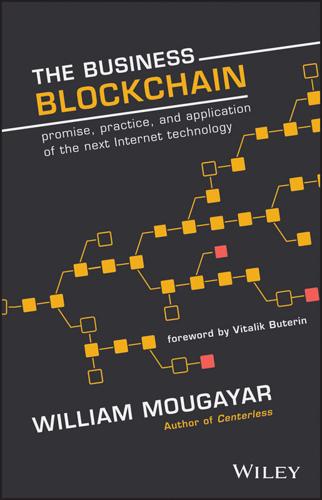
The Business Blockchain: Promise, Practice, and Application of the Next Internet Technology
by
William Mougayar
Published 25 Apr 2016
The central question is: can the blockchain give us Trust 2.0, a better form of trust that does not always depend on central intermediaries who may have become too big to fail, too bureaucratic to see risk, or too slow to change? Here are seven principles that we will need to believe in, if we are to believe in the future of decentralized trust: It would be inaccurate to label blockchains as a tool for the disintermediation of trust. In reality, they only enable a re-intermediation of trust. Blockchains enable a degree of trust unbundling. The blockchain challenges the roles of some existing trust players and reassigns some of their responsibilities, sometimes weakening their authority. The blockchain does not eliminate trust.
…
At the risk of not naming all of them, here are the largest segments that will affected: Bonds Swaps Derivatives Commodities Unregistered/Registered securities Over-the-counter markets Collateral management Syndicated loans Warehouse receipts Repurchase market STRATEGIC QUESTIONS FOR FINANCIAL SERVICES Theme 1: Blockchains Touch the Core of Banking, Can They React? In Chapter 2, we introduced the word ATOMIC as a way to remember the programmability aspect of blockchains along six interrelated areas: Assets, Trust, Ownership, Money, Identity, Contracts. Add to these concepts the fact the blockchain is about decentralization, disintermediation, and distributed ledgers, and you quickly realize that these subjects are very much part of the core of banking. When a single technology touches almost every core part of your business model, you need to pay attention, as it will be a challenging encounter. Banks will be required to apply rigorous thinking to flush out their plans and positions vis-à-vis each one of these major blockchain parameters.

Blockchain Revolution: How the Technology Behind Bitcoin Is Changing Money, Business, and the World
by
Don Tapscott
and
Alex Tapscott
Published 9 May 2016
The protocols also include a method for reclaiming disk space so that all nodes can efficiently store the full blockchain. Finally, the blockchain is public. Anyone can see transactions taking place. No one can hide a transaction, and that makes bitcoin more traceable than cash. Satoshi sought not only to disintermediate the central banking powers but also to eliminate the ambiguity and conflicting interpretations of what happened. Let the code speak for itself. Let the network reach consensus algorithmically on what happened and record it cryptographically on the blockchain. The mechanism for reaching consensus is critical.
…
“That’s really cool,” he said, “because I could actually pay you for the pen right now, you would see the money instantly, you would put the pen in the mail, and I could get a verification of that. It’s much more likely that we can do business.” The law profession is slowly plugging into this opportunity. Like everyone in the middle, lawyers may become subject to disintermediation and will eventually need to adapt. Expertise in smart contracts could be a big opportunity for law firms that want to lead innovation in contract law. However, the profession isn’t known for breaking new ground. Legal expert Aaron Wright, coauthor of a new book about the blockchain, told us, “Lawyers are laggards.”21 Multisignature: Smart Complex Contracts But, you say, wouldn’t the costs of complex and time-consuming negotiations of smart contracts outweigh the benefits of open boundaries?
…
Why do those people wait in line to send money via a physical point of sale using decades-old technology instead of what they have at their fingertips? Dollars are a lot less data intensive than HD video. In fact, according to Skype, video calling consumes 500 kilobits per second.43 Sending one bitcoin takes about 500 bits, or roughly one one-thousandth the data consumption of one second of video Skype! By disintermediating traditional third parties and radically simplifying processes, blockchain can finally enable instant, frictionless payments, so that people don’t wait in line for an hour or more, travel great distances, or risk life and limb venturing into dangerous neighborhoods at night just to send money.
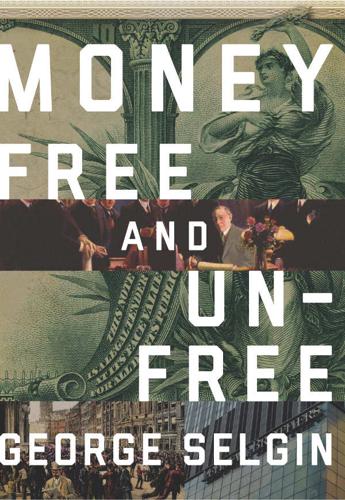
Money Free and Unfree
by
George A. Selgin
Published 14 Jun 2017
Rather than reduce banks’ likelihood of failure, deposit-rate ceilings have tended to have just the opposite effect by limiting their ability to bid for funds when threatened by a disintermediation or other liquidity crisis. This was dramatically evident in the 1960s, when banks and later thrifts were racked by a series of disintermediation crises. The trouble started in October 1959, when (as a result of slowly mounting inflation) Treasury bill rates rose to 5 percent—well above the 3 percent Regulation Q limits on time deposits. Banks then faced a disintermediation crisis that was a portent of further troubles to come. As inflation and short-term money rates continued to rise (in part as a result of the escalating costs of theVietnam War), the Fed found it necessary to allow one-step increases in rate ceilings on certificates of deposit for every year from 1962 to 1965 to avoid a recurrence of the 1959 crisis.
…
Finally, in August 1966, the Fed reversed its monetary policy again, this time to “rescue” the banks from its own misguided policies. The banking crisis of 1966—the first “financial crisis” (to adopt the conventional, hyperbolic vernacular) in the United States since the Great Depression—was a direct consequence of Regulation Q restrictions combined with erratic Fed monetary policy. This was also true of later disintermediation crises, including the thrift crisis of 1969. If rate restrictions had been absent then as they are today, these crises would not have happened and there would not have been any need for last-resort lending by the Fed. Deposit Insurance. The absence of crises is, however, not necessarily evidence of a strong banking system.
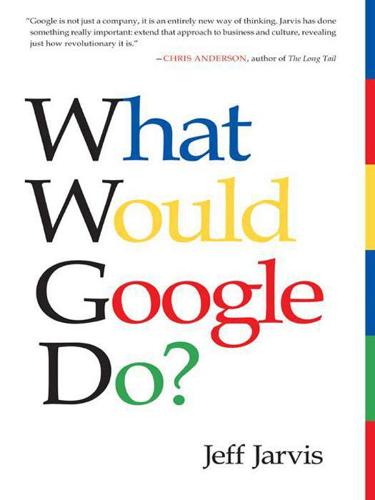
What Would Google Do?
by
Jeff Jarvis
Published 15 Feb 2009
All that, of course, assumes that I have an abundance of money. I don’t. Oh, well. The First Bank of Google: Markets minus middlemen Banking is the ultimate middleman business, pooling money and need and profiting on the connections. In small ways—as in small is the new big—the internet is already disintermediating the industry by making direct connections. Take peer-to-peer lending. At Prosper.com, as of 2008, 750,000 members had borrowed and lent more than $150 million in amounts as small as $50, supporting anything from launching new businesses to paying off college loans to getting out from under credit card debt.
…
I’m sure lawyers and PR people—like real-estate agents—will be glad to tell me where I’m wrong and I welcome that discussion on my blog: Let’s have at it, and if there are ways to Googlify these trades, then congratulations. In the meantime, both fields need to watch out, for the tools of Google and the internet enable others to disintermediate, undercut, and expose them. The law and its execution are aided by obfuscation. The internet can fix that. A small number of volunteers could, Wikipedia-like, publish simple, clear, and free explanations of laws and legal documents online. All it takes is one generous lawyer—not an oxymoron—to ruin the game for a thousand of them.
…
Patents are online now, and Google has made them searchable (go to google.com/patents and, for entertainment, look up pooper scooper—aka “Apparatus for the sanitary gathering and retention of animal waste for disposal” or “perpetual motion machine” or Google itself). Laws, regulations, and government documents are prime meat for Google’s disintermediation. Sometimes lawyers are employed merely to intimidate—but now the internet’s power to gather flash mobs enables those targeted by attorneys to return the intimidation. I’ve seen many cases of bloggers pleading openly for help against big organizations that are threatening or suing them. They received offers of pro bono representation from lawyers, often thanks to the Media Bloggers Association.
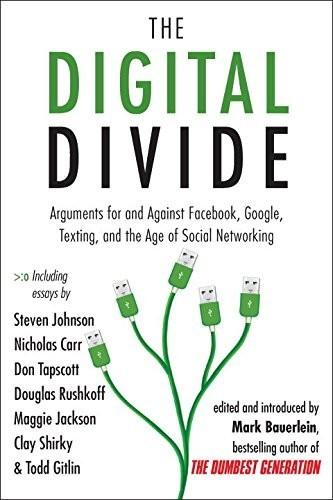
The Digital Divide: Arguments for and Against Facebook, Google, Texting, and the Age of Social Netwo Rking
by
Mark Bauerlein
Published 7 Sep 2011
The major political parties, along with labor unions, are part of the hierarchical framework of American politics that is under great pressure in the digital era. Even as traditional hierarchies are breaking apart, powerful, consolidated interests still play a disproportionate role in politics, especially in America. Strong brands still have it in their power to make or break candidates. As in the commercial space, the Internet often causes first disintermediation, then reintermediation. The forums are slightly different in the digital age and modestly more diverse. Cable networks like Fox and CNN have expanded the group of networks with the power to influence elections; people like Glenn Reynolds of Instapundit, Markos Moulitsas Zúniga of the Daily Kos, Matt Drudge of the Drudge Report, Charles Johnson of Little Green Footballs, and Arianna Huffington and her colleagues at the Huffington Post are giving the mainstream newspapers a run for their money in the online text media world; and even small bloggers and video creators can become stars with the power to move discussions in elections.
…
See also Net Geners activism by attention in education by attention spans of brains of civic engagement by cognitive differences of communication culture of Digital Immigrant accent and educational methodologies for information skills of participatory media and politics and reflection and as students thinking patterns in “Digital Natives, Digital Immigrants” (Prensky) Digital piracy Digital production Digital singularity Discman Disintermediation Distributed parallel-processing computers DNS Doom (video game) Dot-com collapse Dot-com dropouts DoubleClick Dougherty, Dale Dove Drudge, Matt eBay E-commerce development of dot-com collapse growth of as pyramid scheme social interaction displaced by Education attention and computer games for by Digital Immigrants Digital Natives in Digital Natives methodologies for freedom and legacy and future content in Net Geners and Wales, J., on Edwards, John Eliot, T.
…
Hypertext minds IBM Ibuka, Masaru Icebox ICQ Identity Individualism Industrial Revolution Information architecture Information cascades Infosys Technologies Innovation, Net Geners and Instant messaging Instapundit Institute for the Future of the Book Integrity Intel Intellectual technologies Interactivity Internet academic scholarship and activism on advertising on brain impact from cognition and collaboration through commerce displacing social interaction on creation of as direct-marketing platform disintermediation and reintermediation through do-it-yourself mentality and evolving rule systems and freedom through grassroots campaigns on interactivity and isolation and in Kenya loneliness and mainstream culture and medium absorbed by participatory media and participatory nature of political media and politics and post-Gutenberg economics and radio stations on reading and research skills and Sleeper Curve and social interaction channels in social side effect of social value of teen use of television series fan sites on time spent using traditional media changed by transparency and as universal medium Wikipedia impact on Internet Explorer Internet Project Kosovo (IPKO) Interruption science iPhone iPhoto IPKO.

A New History of the Future in 100 Objects: A Fiction
by
Adrian Hon
Published 5 Oct 2020
For a while UCS was the darling of the world, swiftly popularizing new courier systems such as the Silver Retriever, a six-legged “packbot” that could be deployed from larger couriers to carry goods across uneven ground or up and down stairs, and the Storks, copters that specialized in time-sensitive deliveries. Yet less than two decades after it was founded, UCS itself had become obsolete. Deliverbot manufacturers began to directly rent their vehicles to customers using an open-delivery protocol, and then even the vehicle designs were open-sourced. Just as UCS had disintermediated shipping, open standards disintermediated UCS. 11 THE CONVERSATION BROKERS Dhaka, Bangladesh, 2024 I can’t go outside without being streamed. I can’t visit a shop without people downvoting me. At home I get all sorts of mail through the door, and now you’re telling me I can’t even have a private conversation in a restaurant?
…
UCS’s success in fulfilling those contracts attracted more business, and before long they were offering subscription plans across North America and Europe. People were becoming positively affectionate toward the bright yellow vehicles. But UCS’s vehicles were only part of the picture. What UCS delivered wasn’t merely goods but the disintermediation of supply. Before deliverbots, getting goods to customers was too costly for most producers. Instead, they had to work with middlemen such as distributors, shops, supermarkets, and warehouses, all of whom took fees that increased the sale price. UCS changed that world completely by giving producers a direct route to their customers’ front door, at a lower cost than ever.

Barefoot Into Cyberspace: Adventures in Search of Techno-Utopia
by
Becky Hogge
,
Damien Morris
and
Christopher Scally
Published 26 Jul 2011
Apparently, I’d rather spend my time thinking about freedom in the abstract, talking to nice, safe hippies about the dreams some of them had once and what happened to them. I don’t regret my decision to write myself out of this story, to decline the invitation to Reykjavik. It turns out I’m not any kind of revolutionary. The hopes that many held for the redemptive potential of the internet lay in the fact that the internet was a disintermediating force. The many-to-many communications environment would allow individuals to bypass outmoded cultural gatekeepers and to smash corrupt institutions. The assumption was twofold – that those institutions would be unable to fight back, and that the ordinary people at the bottom of society, the edges of the network, were somehow worthier than the centralised elites at the top.
…
Just as the Screen Actors Guild and Equity stipulate that no two of their members may have the same stage name to avoid confusion, Facebook and Twitter make sure no two of their users have the same handle or identifying code, meaning you can always find the exact Ethan Zuckerman or Becky Hogge you’re looking for. What all this means is that although the rhetoric behind the ’net was one of radical decentralisation, disintermediation and the chance at a truly plural public sphere, the reality of it pens us into what are essentially a handful of corporate pseudo-public spaces. “It’s terrifying,” says Ethan. “And the reason it’s terrifying is that much of the thinking that we’ve done about the internet is thinking about open standards, autonomous agents, all able to make our own decisions.

Stigum's Money Market, 4E
by
Marcia Stigum
and
Anthony Crescenzi
Published 9 Feb 2007
The sale by former bank borrowers of commercial paper, a trend that developed swiftly from the early 1960s on, was the first wave of disinter-mediation, induced by securitization, to wash away a part of the banks’ traditional lending base. Securitization has been particularly prevalent in the mortgage market, where there was roughly $6.2 trillion in mortgage-related securities outstanding as of June 2006 compared to $9.3 trillion in home mortgages outstanding. Subsequent to this first wave of disintermediation and the securitization trend that induced it, and thanks in part to the trend seen both domestically and worldwide toward deregulation—a trend that made capital markets freer and securities issuance ever easier—other waves of disintermediation followed, each wave further eroding the banks’ lending base.
…
Since that time, this volume grew exponentially; then it tapered off (Figure 21.1), especially beginning in 1984 when the Federal Reserve said that it would no longer accept bankers’ acceptances as collateral for the repurchase agreements it uses in its daily open market operations. Other factors have also contributed to the decline in the market for bankers’ acceptances, including the shift to alternative financing vehicles, decreased market liquidity, and disintermediation, among other factors, which are discussed in more detail later in the chapter. FIGURE 21.1 Bankers’ acceptances outstanding (in billions of dollars) THE INSTRUMENT A bankers’ acceptance (BA) is a time draft; that is, an order to pay a specified amount of money to the acceptance holder on a specified date.
…
Borrowers have many more choices for financing their international transactions, their inventory investments, or whatever, and are now able to obtain financing through a wider variety of channels, many of which are in the banking sector. The vast majority of the financing, however, is now done outside the banks. This disintermediation has increased over the years, with institutional borrowers opting for funding in the commercial paper (CP) market where funding costs are lower and the borrowing process is far less cumbersome than it is for BAs. We show in Figure 21.1 the decline in the amount of BAs outstanding. In contrast, Figure 21.5 shows the very large growth that has occurred in the CP market.
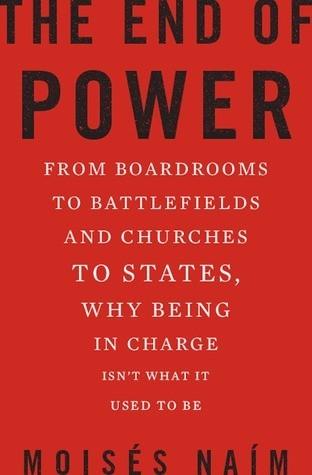
The End of Power: From Boardrooms to Battlefields and Churches to States, Why Being in Charge Isn’t What It Used to Be
by
Moises Naim
Published 5 Mar 2013
Global norms have achieved a new reach, and individual aspirations and expectations have been turbo-charged by social media, fiber optics, satellite dishes, and smartphones. It is as if a political centrifuge had taken the elements that constituted politics as we knew it and scattered them across a new and broader frame. Here are a few of its key effects. Disintermediating Parties For centuries, politics operated on the premise that it channels the interests of the masses (expressed through votes, or asserted by rulers) into coherent outcomes. Representative government meant the channeling of the public will up from the neighborhood or town level, through regions or provinces, and, ultimately, to the sovereign state.
…
It also means the bypassing of the traditional diplomatic establishment—foreign ministries, embassies and their staff, national aid agencies, and other bilateral services—that has controlled the terms of engagement across borders. Diplomats were once the gatekeepers and guardians of certain norms of interaction. Now they have been disinter-mediated, and the advantages of traditional statecraft blunted, in a landscape of small-country initiatives, promotion by nonstate actors, and channels of direct access to overseas public opinion. The edifice of cooperation and deterrence built in the last seven decades has been strong enough to see through decolonization, ward off invasions and conquests, and limit secessions.
…
As Tom Munnecke, head of Uplift Academy and a pioneer in new philanthropy, put it to a British newspaper: “Instead of having to go to one big, centralized bureaucracy such as the Red Cross or Oxfam, we can now go to the edge and take control.”35 At the edge, donors forged in Silicon Valley–style venture capitalism apply a broad range of tools from that milieu to vet projects, while would-be recipients make their proposals in the knowledge that they are competing with peers around the world. The boards and program officers of the big foundations and bureaucrats of large aid agencies have seen their influence lessened—whether by the new tools that aim to disintermediate them or by the celebrity activists, such as U2 frontman Bono or Senegalese singer Youssou N’Dour, who have used global media and communications platforms to advance their own views and priorities. That said, the lines are not completely rigid, and the traditional players are capable of adapting—or at least trying to adapt.
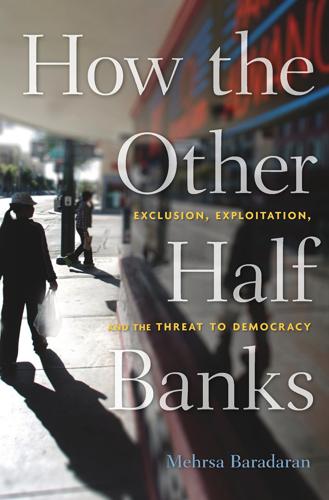
How the Other Half Banks: Exclusion, Exploitation, and the Threat to Democracy
by
Mehrsa Baradaran
Published 5 Oct 2015
Unit banking and the restrictions and prohibitions of the fifty years following the Great Depression had allowed banks to profit modestly by keeping their balance sheets focused on deposits and loans. But suddenly, technological advances, financial innovation, capital markets, and commercial paper markets started to offer safe and enticing alternatives to banks. Banks started hemorrhaging customers, a process called disintermediation, which means cutting out the middleman. Deposits went directly to high-yield markets and sidestepped highly regulated banks.99 Concerns about banks’ waning profitability led to growing pressure on the government to deregulate banks and allow them to compete more freely with other institutions.
…
For example, a central tenet of Professor Muhammad Yunus’s microcredit model is that “credit is a fundamental right.” See, e.g., Randeep Ramesh, “Credit is a Basic Human Right,” Guardian, January 5, 2007, accessed March 19, 2015, www.theguardian.com/world/2007/jan/05/outlook.development. 99. Disintermediation describes the elimination of financial intermediaries, such as banks, resulting from high inflation rates and stagnant interest offered by banks (due to regulatory caps). Depositors can get better returns by investing in mutual funds or securities and thus, banks lose customers and revenue. 100.
…
See also Federal Deposit Insurance Corporation Deposit interest rates, deregulation of, 52 Deposits, 13–14, 231nn12,13 Depression. See Great Depression Deregulation, 7, 52–63, 64, 91–94, 146 Derivatives, 246n101 Desjardins, Alphonse, 65–66 Dickens, Charles, 107 DiLorenzo, Thomas, 156 Discrimination, 49, 50–52, 284n35, 290n86. See also credit access, inequality in; redlining Disintermediation, 52, 245n99 Disparate impact, 50–51 Distrust, of banks, 190, 191, 202, 203, 218 Dodd-Frank Wall Street Reform and Consumer Protection Act, 147–148 DOJ (Department of Justice), 50, 127–129, 160, 290n86 Dostoyevsky, Fyodor, 107 Douglas, Paul, 145, 146 Douglas Amendment, 145 Douglass, Frederick, 81, 82–83, 185 Dual plan, 96, 262n164 Du Bois, W.
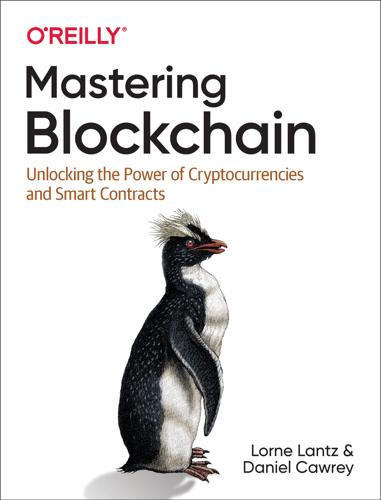
Mastering Blockchain: Unlocking the Power of Cryptocurrencies and Smart Contracts
by
Lorne Lantz
and
Daniel Cawrey
Published 8 Dec 2020
And these are just technology companies. Well-known hacks at Target, Marriott, Home Depot, and JPMorgan, among others, have taken user data and put it in the hands of those who try to use that information for nefarious purposes. Blockchain technology is promising in that it has the ability to disintermediate various industries, many perhaps quite quickly. Some experimentation has already begun. Industries including technology, finance, jobs, and gaming are ripe for disruption. The technical “scaffolding” is being built today for users to have more control over their data. The ultimate realization of this idea is the concept of self-sovereign identity, where individuals generate their own unique identifiers and store and control access to their own personal information, using public/private key pairs.
…
Byzantine agreement, Other Concepts for Consensus Byzantine fault-tolerant agreement, RippleHotStuff algorithm, Borrowing from Existing Blockchains C Cardano, Blockchains to Watch Casper algorithm (proof-of-stake), Ethereum Scaling CCXT (CryptoCurrency eXchange Trading Library), Open Source Trading Tech cell phone porting attacks, Security Fundamentals central bank digital currencies (CBDCs), Central Bank Digital Currencies centralizationcaused by proof-of-work consensus on Bitcoin, Ripple and Stellar decentralization versus, Decentralization Versus Centralization distributed versus centralized versus decentralized systems, Distributed Versus Centralized Versus Decentralized-Bitcoin Predecessors Libra's centralization challenge, Novi centralized exchanges, Decentralized Exchange Contracts, The Role of Exchanges, Jurisdictiondecentralized exchanges versus, Decentralized Versus Centralized Exchanges-Scalabilitycustody and counterparty risk, Custody and counterparty risk exchange rate, Exchange rate infrastructure, Infrastructure Know Your Customer (KYC) rules, Know your customer scalability, Scalability token listing, Token listing infrastructure differences from decentralized exchanges, Decentralized Exchange Contracts CFTC (Commodity Futures Trading Commission), FinCEN Guidance and the Beginning of Regulation Chainalysis, Analytics channels (Lightning), Lightning Chaum, David, DigiCash Chia, Alternative methods Chicago Mercantile Exchange (CME), partnership with Royal Mint, The Royal Mint China, central bank cryptocurrency, China Coburn, Zachary, Skirting the Laws Coin ATM Radar website, Evolution of the Price of Bitcoin Coinbase, Wallet Types: Custodial Versus Noncustodial, Custody Coinbase Pro, ExchangesAPI example, BTC/USD ticker call, Exchange APIs and Trading Bots arbitrage trading on, Arbitrage Trading-Float Configuration 3 custody solutions, robust, Counterparty Risk example order book, Slippage coinbase transaction, Storing Data in a Chain of Blocks, The Coinbase TransactionBitcoin Genesis block, Achieving Consensus Coincheck, Coincheck CoinDesk, Information coins, DigiCash Coinye, More Altcoin Experiments cold storage wallets, Counterparty Risk cold wallets, Wallet Type Variations collisions, cryptographic hashes and, Hashes colored coins, NXT, Colored Coins and Tokens Commodity Exchange Act (CEA), Wash Trading Commodity Futures Trading Commission (CFTC), FinCEN Guidance and the Beginning of Regulation conferences on blockchain industry, Information confidential assets, Liquid confirmations, Confirmations confirmed transactions, Transactionsconfirmed by miner, Transaction life cycle confirmed by network on Bitcoin, Transaction life cycle consensus, Consensus-Alternative methodsAvalanche mechanism, Avalanche in Bitcoin network, Compelling Components-Generating transactions Corda, Corda consensus in decentralized systems, Distributed Versus Centralized Versus Decentralized Libra mechanism for, Borrowing from Existing Blockchains, How the Libra Protocol Works other concepts for, Other Concepts for Consensus proof-of-stake, Proof-of-Stake-Proof-of-Stake proof-of-work, Proof-of-Work-Confirmationsblock discovery, Block discovery confirmations by miners of block to include in blockchain, Confirmations mining process on Bitcoin, The mining process transaction life cycle, Transaction life cycle SCP protocol, Stellar XRP Consensus Protocol, Ripple ConsenSys, ConsenSysTruffle Suite tools for smart contracts, Authoring a smart contract contentious hard forks, Understanding Forks-Replay attacksreplay attacks vulnerability, Replay attacks Corda, Corda-Corda languageconsensus, Corda consensus how it works, How Corda works ledger, Corda ledger network, The Corda network programming language, Corda language Counterparty blockchain, Counterparty counterparty risk, Counterparty Riskon centralized versus decentralized exchanges, Custody and counterparty risk reduced, on decentralized exchanges, Decentralized Exchange Contracts cross-shard communication complexity, Other Altchain Solutions crypto laundering, The Evolution of Crypto Laundering-The Evolution of Crypto Launderinghow funds are laundered, The Evolution of Crypto Laundering cryptocurrencies, Cryptocurrency Fundamentals-Summaryadditional, Mastercoin introducing notion of, Mastercoin and Smart Contracts backing DAI multi-collateral token, DAI and blockchain, leading to new platforms for the web, Web 3.0 blockchain systems and unit of account, Storing Data in a Chain of Blocks consensus, Consensus-Alternative methodsother concepts for, Other Concepts for Consensus proof-of-stake, Proof-of-Stake-Proof-of-Stake proof-of-work, Proof-of-Work-Confirmations cryptographic hashes, Hashes-Custody: Who Holds the Keys custody, Custody: Who Holds the Keys-Security Fundamentals ICOs or fundraising for projects, Use Cases: ICOs illegal uses of, Catch Me If You Can methods of buying and selling, Evolution of the Price of Bitcoin mining, Mining-Block Generation privacy-focused, Privacy-Focused Cryptocurrencies public and private keys in systems, Public and Private Keys in Cryptocurrency Systems-Public and Private Keys in Cryptocurrency Systems regulatory bodies in the US, FinCEN Guidance and the Beginning of Regulation security, Security Fundamentals-Recovery Seed stablecoins based on, Crypto-Based Stablecoins-Tether stakeholders in ecosystem, Stakeholders-Informationanalytics services, Analytics brokerages, Brokerages custody solutions, Custody exchanges, Exchanges information services, Information theft from ownersexchange hacks, Exchange Hacks-NiceHash other hacks, Other Hacks-Summary transactions in, Transactions-Bitcoin Transaction Security UTXO model for Bitcoin transactions, The UTXO Model-The UTXO Model cryptocurrency ATMs, Evolution of the Price of Bitcoin CryptoCurrency eXchange Trading Library (CCXT), Open Source Trading Tech cryptographyBitcoin's use on transactions, Introducing the Timestamp Server cryptographic hashes, Hashes-Custody: Who Holds the Keys ECDSA encryption, signing and verifying transactions, Signing and Validating Transactions enabling proof-of-work on Hashcash, Hashcash public/private key, Bitcoin's use of, Public/private key cryptography-Generating keys use by DigiCash, DigiCash CryptoKitties, ERC-721-ERC-777causing scaling problems on Ethereum, Challenges in Developing Dapps digital cats as nonfungible tokens, Fungible and Nonfungible Tokens CryptoLocker and ransomware, CryptoLocker and Ransomware CryptoNote protocol, Monero currencies, exchanges for, Exchanges(see also exchanges) custodial wallets, Wallet Types: Custodial Versus Noncustodial(see also wallets) custody, Custody: Who Holds the Keys-Security Fundamentalscounterparty risk with exchanges, Counterparty Risk, Custody and counterparty risk crypto custody solutions, Custody custody providers, Counterparty Risk cyberbucks, DigiCash D DAGs (directed acyclic graphs), DAGs DAI stablecoin, DAIsavings rates for, Savings Dai, Wei, B-Money DAML, DAML DAOs (decentralized autonomous organizations), Decentralized Autonomous Organizations-Other Ethereum forks, Important DefinitionsThe DAO project on Ethereum, Initial Coin Offerings dapps (see decentralized applications) Dash, Dash database management systems (DBMSs), Databases and Ledgers databasesbackend/database differences between centralized exchanges and Uniswap, Infrastructure and ledgers, Databases and Ledgers decentralizationversus centralization, Decentralization Versus Centralization decentralizing the web, Web 3.0 distributed versus centralized versus decentralized systems, Distributed Versus Centralized Versus Decentralized-Bitcoin Predecessors decentralized applications (dapps), Ether and Gas, Decentralized Applications (Dapps)-Challenges in Developing Dappsbuilding decentralized web frameworks, Web 3.0 challenges in developing, Challenges in Developing Dapps Corda, Corda language running on top of a blockchain, Deploying and Executing Smart Contracts in Ethereum use cases, Use Cases decentralized autonomous organizations (DAOs), Decentralized Autonomous Organizations-Other Ethereum forks, Important DefinitionsThe DAO project on Ethereum, Initial Coin Offerings decentralized exchange contracts, Decentralized Exchange Contracts-Summary decentralized exchanges, The Role of Exchanges, Decentralized Exchanges-Scalabilityversus centralized exchanges, Decentralized Versus Centralized Exchanges-Scalabilitycustody and counterparty risk, Custody and counterparty risk exchange rate, Exchange rate infrastructure, Infrastructure Know Your Customer (KYC) rules, Know your customer scalability, Scalability token listing, Token listing decentralized finance (DeFi), Decentralizing Finance and the Web-Derivativesflash loans, Flash Loans-The Fulcrum Exploitcreating the flash loan smart contract, Creating a Flash Loan Contract-Deploying the Contract deploying the contract, Deploying the Contract executing a loan, Executing a Flash Loan-Executing a Flash Loan Fulcrum attack, The Fulcrum Exploit important definitions, Important Definitions privacy and information security, Privacy-Ring Signaturesring signatures, Ring Signatures Zcash, Zcash zero-knowledge proof, Zero-Knowledge Proof zk-SNARKs, zk-SNARKs redistribution of trust, Redistribution of Trust-Naming Servicesidentity and dangers of hacking, Identity and the Dangers of Hacking naming services, Naming Services services, DeFi Services-Derivativesderivatives, Derivatives lending, Lending savings, Savings stablecoins, Stablecoins-KYC and pseudonymity traditional versus decentralized financial system, Decentralizing Finance DeFI Pulse website, DeFi Services delegated proof-of-stake, Alternative methods deposit contracts, Ethereum Scaling depth charts, Depth Chartssell wall on, Whales derivatives, Derivativesin decentralized finance, Derivatives derivatives exchanges, The Role of Exchanges desktop wallets, Wallet Type Variations DEXes (see decentralized exchanges; exchanges) dictionary attacks on passwords, Zero-Knowledge Proof difficulty of discovering valid block hash, Block discovery DigiCash, DigiCash digital bonds, Banking digital money, Bitcoin Predecessors(see also cryptocurrencies) creation of, in B-Money, B-Money use of hashing to limit double spend, Hashcash digital signaturesmultisignature system, Hash Time Locked Contracts, Lightning Schnorr algorithm, Privacy signing transactions, Signing and Validating Transactions Digix, Digix directed acyclic graphs (DAGs), DAGs disintermediation, Identity and the Dangers of Hacking distributed ledger technology (DLT), Databases and Ledgers distributed systems, Decentralized Applications (Dapps)Bitcoin, Compelling Components distributed versus centralized versus decentralized systems, Distributed Versus Centralized Versus Decentralized-Bitcoin Predecessors Dogecoin, More Altcoin Experiments Domain Name System (DNS), decentralized version of, Altcoins dot-com crash, Tulip Mania or the internet?

API Marketplace Engineering: Design, Build, and Run a Platform for External Developers
by
Rennay Dorasamy
Published 2 Dec 2021
One of the most significant risks faced by banks is disintermediation. Third-party providers may reduce the bank’s role, potentially leading to partial loss of customer relationships, which could in turn lead to loss of revenue. Open Banking, like ATM, online or app-based banking, is a channel that a customer uses to interact with the bank. A strong bank-customer relationship will help establish loyalty and trust. Banks can use customer data and activity, via any channel, to better understand behavior to provide personalized products and services. The potential of disintermediation could be viewed as motivation for banks to raise their game to retain the customer relationship.

Red-Blooded Risk: The Secret History of Wall Street
by
Aaron Brown
and
Eric Kim
Published 10 Oct 2011
The government certainly didn’t know, not even the quasi-governmental Federal Reserve Board. So everyone was forced to do business with banks, on the banks’ terms. The monopoly was broken in the 1970s, but that didn’t mean information hoarding went away. Today it is done by a variety of institutions in different ways. Competition, also known as disintermediation, has brought costs down dramatically. For example, in the 1960s an individual would typically pay 3 percent more interest on a mortgage loan than he could earn on his savings account backed by mortgage loans. The difference was net revenue to the bank. It was protected by information hoarding.
…
The slices are instead pasted together with other slices, more like making plywood than cutting vegetables. Logs in a sawmill are bathed before thin veneers for plywood are cut with a lathe. So “bathed and lathed” makes more sense than “sliced and diced.” I can also live with “hewed and glued” or “plied and dried.” Securitization takes the institution out of finance—disintermediation is the technical term. Providers and users of capital are linked directly. The reason that requires financial engineering is most providers of capital want to provide a different type of capital than most users need. Providers want diversified, liquid instruments that pay off cash at predictable times.
…
See Bayesians/Bayesian concepts; Frequency vs. degree of belief Demon of Our Own Design, A, (Bookstaber) Derivatives/derivative money: capital creation and clearinghouses definition derivative money energy sector and exposure from derivatives liquidity and as the new money numeraire and spread trade and as store of value Derivatives Models on Models (Haug) Derman, Emanuel Desrosières, Alain Dexter, Andrew Diogenes Disintermediation Dissertation (Brown) Dorner, Dietrich Drobny, Steven Druckenmiller, Stanley Duffie, Darrell Earle, Timothy Economic Function of Futures Markets, The (Williams) Economics of Risk and Time, The (Gollier) Econophysics Education of a Speculator, The (Niederhoffer) Efficient markets hypothesis (EMH) Efficient markets theory: empirical evidence equilibrium price and father of efficient markets generally market inefficiencies and misrepresentations and myth about Efron, Brad Eichengreen, Barry Einhorn, David Eisenhower, Dwight Emergence of Probability, The (Hacking) EMH.
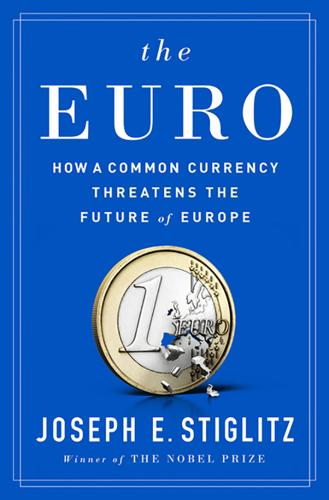
The Euro: How a Common Currency Threatens the Future of Europe
by
Joseph E. Stiglitz
and
Alex Hyde-White
Published 24 Oct 2016
It is that the financial markets have failed in their basic task of recycling the savings, making sure that the savings are used productively. This function is referred to as “intermediation”—intermediating between savings and investment. Financial systems in both Europe and America have failed to perform this key role well. Indeed, in the United States, the financial sector has been engaged in disintermediation, taking money out of the corporate sector, resulting in fewer funds available for investment. Huge amounts, for instance, are leaving firms in the form of share buybacks—in 2014, some 4 percent of GDP, and in 2015, 3.5 percent. Moreover, much of the savings is being done by “long-term savers,” those saving for their retirement or money put aside by countries in their sovereign wealth funds.
…
Africa, 10, 95, 381 globalization and, 51 aggregate demand, 98, 107, 111, 118–19, 189, 367 deflation and, 290 lowered by inequality, 212 surpluses and, 187, 253 tech bubble slump in, 250 as weakened by imports, 111 aggregate supply, 99, 104, 189 agricultural subsidies, 45, 197 agriculture, 89, 224, 346 airlines, 259 Akerlof, George, 132 American Express, 287 Apple, 81, 376 Argentina, 18, 100, 110, 117, 371 bailout of, 113 debt restructuring by, 205–6, 266, 267 Arrow-Debreu competitive equilibrium theory, 303 Asia, globalization and, 51 asset price bubbles, 172 Athens airport, 191, 367–68 austerity, xvi–xvii, 9, 18–19, 20, 21, 28–29, 54, 69–70, 95, 96, 98, 97, 103, 106, 140, 150, 178, 185–88, 206, 211, 235, 316–17 academics for, 208–13 debt restructuring and, 203–6 design of programs of, 188–90 Germany’s push for, 186, 232 government investment curtailed by, 217 opposition to, 59–62, 69–70, 207–8, 315, 332, 392 private, 126–27, 241–42 reform of, 263–65 Austria, 331, 343 automatic destabilizers, see built-in destabilizers automatic stabilizers, 142, 244, 247–48, 357 flexible exchange rate as, 248 bail-ins, 113 bailouts, 91–92, 111, 112–13, 201–3, 354, 362–63, 370 of banks, 127–28, 196, 279, 362–63 of East Asia, 202 of Latin America, 202 of Mexico, 202 of Portugal, 178–79 of Spanish banks, 179, 199–200, 206 see also programs balanced-budget multiplier, 188–90, 265 Balkans, 320 bank capital, 284–85 banking system, in US, 91 banking union, 129–30, 241–42, 248, 263 and common regulations, 241 and deposit insurance, 241, 242, 246 Bank of England, 359 inflation target of, 157 Bank of Italy, 158 bankruptcies, 77, 94, 102, 104, 346, 390 super–chapter 11 for, 259–60 banks, 198–201 bailouts of, 127–28, 196, 279, 362–63 capital requirements of, 152, 249 closing of, 378 credit creation by, 280–82 development, 137–38 evolution of, 386–87 forbearance of regulations on, 130–31 Greek, 200–201, 228–29, 231, 270, 276, 367, 368 lending contracted by, 126–27, 246, 282–84 money supply increased by, 277 restructuring of, 113 small, 171 in Spain, 23, 186, 199, 200, 242, 270, 354 too-big-to-fail, 360 bank transfers, 49 Barclays, 131 behavioral economics, 335 Belgium, 6, 331, 343 belief systems, 53 Berlin Wall, 6 Bernanke, Ben, 251, 351, 363, 381 bilateral investment agreement, 369 Bill of Rights, 319 bimetallic standard, 275, 277 Blanchard, Olivier, 211 bonds, 4, 114, 150, 363 confidence in, 127, 145 Draghi’s promise to support, 127, 200, 201 GDP-indexed, 267 inflation and, 161 long-term, 94 restructuring of, 159 bonds, corporate, ECB’s purchase of, 141 borrowing, excessive, 243 Brazil, 138, 370 bailout of, 113 bread, 218, 230 Bretton Woods monetary system, 32, 325 Brunnermeier, Markus K., 361 Bryan, William Jennings, xii bubbles, 249, 381 credit, 122–123 real estate, see real estate bubble stability threatened by, 264 stock market, 200–201 tech, 250 tools for controlling, 250 budget, capital, 245 Buffett, Warren, 287, 290 built-in destabilizers, 96, 142, 188, 244, 248, 357–58 common regulatory framework as, 241 Bulgaria, 46, 331 Bundesbank, 42 Bush, George W., 266 Camdessus, Michel, 314 campaign contributions, 195, 355 Canada, 96 early 1990s expansion of, 209 in NAFTA, xiv railroad privatization in, 55 tax system in, 191 US’s free trade with, 45–46, 47 capital, 76–77 bank, 284–85 human, 78, 137 return to, 388 societal vs. physical, 77–78 tax on, 356 unemployment increased by, 264 capital adequacy standards, 152 capital budget, 245 capital controls, 389–90 capital flight, 126–34, 217, 354, 359 austerity and, 140 and labor flows, 135 capital flows, 14, 15, 25, 26, 27–28, 40, 116, 125, 128, 131, 351 economic volatility exacerbated by, 28, 274 and foreign ownership, 195 and technology, 139 capital inflows, 110–11 capitalism: crises in, xviii, 148–49 inclusive, 317 capital requirements, 152, 249, 378 Caprio, Gerry, 387 capture, 158–60 carbon price, 230, 260, 265, 368 cash, 39 cash flow, 194 Catalonia, xi CDU party, 314 central banks, 59, 354, 387–88 balance sheets of, 386 capture of, 158–59 credit auctions by, 282–84 credit creation by, 277–78 expertise of, 363 independence of, 157–63 inequality created by, 154 inflation and, 153, 166–67 as lender of last resort, 85, 362 as political institutions, 160–62 regulations and, 153 stability and, 8 unemployment and, 8, 94, 97, 106, 147, 153 CEO compensation, 383 Chapter 11, 259–60, 291 childhood poverty, 72 Chile, 55, 152–53 China, 81, 98, 164, 319, 352 exchange-rate policy of, 251, 254, 350–51 global integration of, 49–50 low prices of, 251 rise of, 75 savings in, 257 trade surplus of, 118, 121, 350–52 wages controlled in, 254 as world’s largest economy, 318, 327 chits, 287–88, 290, 299–300, 387, 388–389 Citigroup, 355 climate change, 229–30, 251, 282, 319 Clinton, Bill, xiv, xv, 187 closing hours, 220 cloves, 230 cognitive capture, 159 Cohesion Fund, 243 Cold War, 6 collateral, 364 collective action, 41–44, 51–52 and inequality, 338 and stabilization, 246 collective bargaining, 221 collective goods, 40 Common Agricultural Policy, 338 common regulatory framework, 241 communism, 10 Community Reinvestment Act (CRA), 360, 382 comparative advantage, 12, 171 competition, 12 competitive devaluation, 104–6, 254 compromise, 22–23 confidence, 95, 200–201, 384 in banks, 127 in bonds, 145 and structural reforms, 232 and 2008 crisis, 280 confirmation bias, 309, 335 Congress, US, 319, 355 connected lending, 280 connectedness, 68–69 Connecticut, GDP of, 92 Constitutional Court, Greek, 198 consumption, 94, 278 consumption tax, 193–94 contract enforcement, 24 convergence, 13, 92–93, 124, 125, 139, 254, 300–301 convergence criteria, 15, 87, 89, 96–97, 99, 123, 244 copper mines, 55 corporate income tax, 189–90, 227 corporate taxes, 189–90, 227, 251 corporations, 323 regulations opposed by, xvi and shutdown of Greek banks, 229 corruption, 74, 112 privatization and, 194–95 Costa, António, 332 Council of Economic Advisers, 358 Council of State, Greek, 198 countercyclical fiscal policy, 244 counterfactuals, 80 Countrywide Financial, 91 credit, 276–85 “divorce”’s effect on, 278–79 excessive, 250, 274 credit auctions, 282–84 credit bubbles, 122–123 credit cards, 39, 49, 153 credit creation, 248–50, 277–78, 386 by banks, 280–82 domestic control over, 279–82 regulation of, 277–78 credit default swaps (CDSs), 159–60 crisis policy reforms, 262–67 austerity to growth, 263–65 debt restructuring and, 265–67 Croatia, 46, 331, 338 currency crises, 349 currency pegs, xii current account, 333–34 current account deficits, 19, 88, 108, 110, 120–121, 221, 294 and exit from euro, 273, 285–89 see also trade deficit Cyprus, 16, 30, 140, 177, 331, 386 capital controls in, 390 debt-to-GDP ratio of, 231 “haircut” of, 350, 367 Czech Republic, 46, 331 debit cards, 39, 49 debtors’ prison, 204 debt restructuring, 201, 203–6, 265–67, 290–92, 372, 390 of private debt, 291 debts, xx, 15, 93, 96, 183 corporate, 93–94 crisis in, 110–18 in deflation, xii and exit from eurozone, 273 with foreign currency, 115–18 household, 93–94 increase in, 18 inherited, 134 limits of, 42, 87, 122, 141, 346, 367 monetization of, 42 mutualization of, 242–43, 263 place-based, 134, 242 reprofiling of, 32 restructuring of, 259 debt-to-GDP ratio, 202, 210–11, 231, 266, 324 Declaration of Independence, 319 defaults, 102, 241, 338, 348 and debt mutualization, 243 deficit fetishism, 96 deficits, fiscal, xx, 15, 20, 93, 96, 106, 107–8, 122, 182, 384 and balanced-budget multiplier, 188–90, 265 constitutional amendment on, 339 and exit from euro, 273, 289–90 in Greece, 16, 186, 215, 233, 285–86, 289 limit of, 42, 87, 94–95, 122, 138, 141, 186, 243, 244, 265, 346, 367 primary, 188 problems financing, 110–12 structural, 245 deficits, trade, see trade deficits deflation, xii, 147, 148, 151, 166, 169, 277, 290 Delors, Jacques, 7, 332 democracy, lack of faith in, 312–14 Democracy in America (Tocqueville), xiii democratic deficit, 26–27, 35, 57–62, 145 democratic participation, xix Denmark, 45, 307, 313, 331 euro referendum of, 58 deposit insurance, 31, 44, 129, 199, 301, 354–55, 386–87 common in eurozone, 241, 242, 246, 248 derivatives, 131, 355 Deutsche Bank, 283, 355 devaluation, 98, 104–6, 254, 344 see also internal devaluation developing countries, and Washington Consensus, xvi discretion, 262–63 discriminatory lending practices, 283 disintermediation, 258 divergence, 15, 123, 124–44, 255–56, 300, 321 in absence of crisis, 128–31 capital flight and, 126–34 crisis policies’ exacerbation of, 140–43 free mobility of labor and, 134–36, 142–44, 242 in public investment, 136–38 reforms to prevent, 243 single-market principle and, 125–26 in technology, 138–39 in wealth, 139–40 see also capital flows; labor movement diversification, of production, 47 Dodd-Frank Wall Street Reform and Consumer Protection Act, 355 dollar peg, 50 downsizing, 133 Draghi, Mario, 127, 145, 156, 158, 165, 269, 363 bond market supported by, 127, 200, 201 Drago, Luis María, 371 drug prices, 219 Duisenberg, Willem Frederik “Wim,” 251 Dynamic Stochastic Equilibrium model, 331 East Asia, 18, 25, 95, 102–3, 112, 123, 202, 364, 381 convergence in, 138 Eastern Europe, 10 Economic Adjustment Programme, 178 economic distortions, 191 economic growth, xii, 34 confidence and, 232 in Europe, 63–64, 69, 73–74, 74, 75, 163 lowered by inequality, 212–13 reform of, 263–65 and structural reforms, 232–35 economic integration, xiv–xx, 23, 39–50 euro and, 46–47 political integration vs., 51–57 single currency and, 45–46 economic rents, 226, 280 economics, politics and, 308–18 economic security, 68 economies of scale, 12, 39, 55, 138 economists, poor forecasting by, 307 education, 20, 76, 344 investment in, 40, 69, 137, 186, 211, 217, 251, 255, 300 electricity, 217 electronic currency, 298–99, 389 electronics payment mechanism, 274–76, 283–84 emigration, 4, 68–69 see also migration employment: central banks and, 8, 94, 97 structural reforms and, 257–60 see also unemployment Employment Act (1946), 148 energy subsidies, 197 Enlightenment, 3, 318–19 environment, 41, 257, 260, 323 equality, 225–26 equilibrium, xviii–xix Erasmus program, 45 Estonia, 90, 331, 346 euro, xiv, 325 adjustments impeded by, 13–14 case for, 35–39 creation of, xii, 5–6, 7, 10, 333 creation of institutions required by, 10–11 divergence and, see divergence divorce of, 272–95, 307 economic integration and, 46–47, 268 as entailing fixed exchange rate, 8, 42–43, 46–47, 86–87, 92, 93, 94, 102, 105, 143, 193, 215–16, 240, 244, 249, 252, 254, 286, 297 as entailing single interest rate, 8, 85–88, 92, 93, 94, 105, 129, 152, 240, 244, 249 and European identification, 38–39 financial instability caused by, 131–32 growth promised by, 235 growth slowed by, 73 hopes for, 34 inequality increased by, xviii interest rates lowered by, 235 internal devaluation of, see internal devaluation literature on, 327–28 as means to end, xix peace and, 38 proponents of, 13 referenda on, 58, 339–40 reforms needed for, xii–xiii, 28–31 risk of, 49–50 weakness of, 224 see also flexible euro Eurobond, 356 euro crisis, xiii, 3, 4, 9 catastrophic consequences of, 11–12 euro-euphoria, 116–17 Europe, 151 free trade area in, 44–45 growth rates in, 63–64, 69, 73–74, 74, 75, 163 military conflicts in, 196 social models of, 21 European Central Bank (ECB), 7, 17, 80, 112–13, 117, 144, 145–73, 274, 313, 362, 368, 380 capture of, 158–59 confidence in, 200–201 corporate bonds bought by, 141 creation of, 8, 85 democratic deficit and, 26, 27 excessive expansion controlled by, 250 flexibility of, 269 funds to Greece cut off by, 59 German challenges to, 117, 164 governance and, 157–63 inequality created by, 154–55 inflation controlled by, 8, 25, 97, 106, 115, 145, 146–50, 151, 163, 165, 169–70, 172, 250, 256, 266 interest rates set by, 85–86, 152, 249, 302, 348 Ireland forced to socialize losses by, 134, 156, 165 new mandate needed by, 256 as political institution, 160–62 political nature of, 153–56 quantitative easing opposed by, 151 quantitative easing undertaken by, 164, 165–66, 170, 171 regulations by, 249, 250 unemployment and, 163 as unrepresentative, 163 European Commission, 17, 58, 161, 313, 332 European Court of Human Rights, 45 European Economic Community (EEC), 6 European Exchange Rate Mechanism (ERM), 30, 335 European Exchange Rate Mechanism II (ERM II), 336 European Free Trade Association, 44 European Free Trade Association Court, 44 European Investment Bank (EIB), 137, 247, 255, 301 European Regional Development Fund, 243 European Stability Mechanism, 23, 246, 357 European Union: budget of, 8, 45, 91 creation of, 4 debt and deficit limits in, 87–88 democratic deficit in, 26–27 economic growth in, 215 GDP of, xiii and lower rates of war, 196 migration in, 90 proposed exit of UK from, 4 stereotypes in, 12 subsidiarity in, 8, 41–42, 263 taxes in, 8, 261 Euro Summit Statement, 373 eurozone: austerity in, see austerity banking union in, see banking union counterfactual in, 235–36 double-dip recessions in, 234–35 Draghi’s speech and, 145 economic integration and, xiv–xx, 23, 39–50, 51–57 as flawed at birth, 7–9 framework for stability of, 244–52 German departure from, 32, 292–93 Greece’s possible exit from, 124 hours worked in, 71–72 lack of fiscal policy in, 152 and move to political integration, xvi, 34, 35, 51–57 Mundell’s work on dangers of, 87 policies of, 15–17 possible breakup of, 29–30 privatization avoided in, 194 saving, 323–26 stagnant GDP in, 12, 65–68, 66, 67 structure of, 8–9 surpluses in, 120–22 theory of, 95–97 unemployment in, 71, 135, 163, 177–78, 181, 331 working-age population of, 70 eurozone, proposed structural reforms for, 239–71 common financial system, see banking union excessive fiscal responsibility, 163 exchange-rate risks, 13, 47, 48, 49–50, 125, 235 exchange rates, 80, 85, 288, 300, 338, 382, 389 of China, 251, 254, 350–51 and competitive devaluation, 105–6 after departure of northern countries, 292–93 of euro, 8, 42–43, 46–47, 86–87, 92, 93, 94, 102, 105, 215–16, 240, 244, 249, 252, 254, 286, 297 flexible, 50, 248, 349 and full employment, 94 of Germany, 254–55, 351 gold and, 344–45 imports and, 86 interest rates and, 86 quantitative easing’s lowering of, 151 real, 105–6 and single currencies, 8, 42–43, 46–47, 86–87, 92, 93, 94, 97–98 stabilizing, 299–301 and trade deficits, 107, 118 expansionary contractions, 95–96, 208–9 exports, 86, 88, 97–99, 98 disappointing performance of, 103–5 external imbalances, 97–98, 101, 109 externalities, 42–43, 121, 153, 301–2 surpluses as, 253 extremism, xx, 4 Fannie Mae, 91 farmers, US, in deflation, xii Federal Deposit Insurance Corporation (FDIC), 91 Federal Reserve, US, 349 alleged independence of, 157 interest rates lowered by, 150 mandate of, 8, 147, 172 money pumped into economy by, 278 quantitative easing used by, 151, 170 reform of, 146 fiat currency, 148, 275 and taxes, 284 financial markets: lobbyists from, 132 reform of, 214, 228–29 short-sighted, 112–13 financial systems: necessity of, xix real economy of, 149 reform of, 257–58 regulations needed by, xix financial transaction system, 275–76 Finland, 16, 81, 122, 126, 292, 296, 331, 343 growth in, 296–97 growth rate of, 75, 76, 234–35 fire departments, 41 firms, 138, 186–87, 245, 248 fiscal balance: and cutting spending, 196–98 tax revenue and, 190–96 Fiscal Compact, 141, 357 fiscal consolidation, 310 fiscal deficits, see deficits, fiscal fiscal policy, 148, 245, 264 in center of macro-stabilization, 251 countercyclical, 244 in EU, 8 expansionary, 254–55 stabilization of, 250–52 fiscal prudence, 15 fiscal responsibility, 163 flexibility, 262–63, 269 flexible euro, 30–31, 272, 296–305, 307 cooperation needed for, 304–5 food prices, 169 forbearance, 130–31 forecasts, 307 foreclosure proposal, 180 foreign ownership, privatization and, 195 forestry, 81 France, 6, 14, 16, 114, 120, 141, 181–82, 331, 339–40, 343 banks of, 202, 203, 231, 373 corporate income tax in, 189–90 euro creation regretted in, 340 European Constitution referendum of, 58 extreme right in, xi growth in, 247 Freddie Mac, 91 Freefall (Stiglitz), 264, 335 free mobility of labor, xiv, 26, 40, 125, 134–36, 142–44, 242 Friedman, Milton, 151, 152–53, 167, 339 full employment, 94–97, 379 G-20, 121 gas: import of, 230 from Russia, 37, 81, 93 Gates Foundation, 276 GDP-indexed bonds, 267 German bonds, 114, 323 German Council of Economic Experts, 179, 365 Germany, xxi, 14, 30, 65, 108, 114, 141, 181–82, 207, 220, 286, 307, 331, 343, 346, 374 austerity pushed by, 186, 232 banks of, 202, 203, 231–32, 373 costs to taxpayers of, 184 as creditor, 140, 187, 267 debt collection by, 117 debt in, 105 and debt restructuring, 205, 311 in departure from eurozone, 32, 292–93 as dependent on Russian gas, 37 desire to leave eurozone, 314 ECB criticized by, 164 EU economic practices controlled by, 17 euro creation regretted in, 340 exchange rate of, 254–55, 351 failure of, 13, 78–79 flexible exchange of, 304 GDP of, xviii, 92 in Great Depression, 187 growing poverty in, 79 growth of, 78, 106, 247 hours worked per worker in, 72 inequality in, 79, 333 inflation in, 42, 338, 358 internal solidarity of, 334 lack of alternative to euro seen by, 11 migrants to, 320–21, 334–35, 393 minimum wage in, 42, 120, 254 neoliberalism in, 10 and place-based debt, 136 productivity in, 71 programs designed by, 53, 60, 61, 202, 336, 338 reparations paid by, 187 reunification of, 6 rules as important to, 57, 241–42, 262 share of global employment in, 224 shrinking working-age population of, 70, 78–79 and Stability and Growth Pact, 245 and structural reforms, 19–20 “there is no alternative” and, 306, 311–12 trade surplus of, 117, 118–19, 120, 139, 253, 293, 299, 350–52, 381–82, 391 “transfer union” rejected by, 22 US loans to, 187 victims blamed by, 9, 15–17, 177–78, 309 wages constrained by, 41, 42–43 wages lowered in, 105, 333 global financial crisis, xi, xiii–xiv, 3, 12, 17, 24, 67, 73, 75, 114, 124, 146, 148, 274, 364, 387 and central bank independence, 157–58 and confidence, 280 and cost of failure of financial institutions, 131 lessons of, 249 monetary policy in, 151 and need for structural reform, 214 originating in US, 65, 68, 79–80, 112, 128, 296, 302 globalization, 51, 321–23 and diminishing share of employment in advanced countries, 224 economic vs. political, xvii failures of, xvii Globalization and Its Discontents (Stig-litz), 234, 335, 369 global savings glut, 257 global secular stagnation, 120 global warming, 229–30, 251, 282, 319 gold, 257, 275, 277, 345 Goldman Sachs, 158, 366 gold standard, 148, 291, 347, 358 in Great Depression, xii, 100 goods: free movement of, 40, 143, 260–61 nontraded, 102, 103, 169, 213, 217, 359 traded, 102, 103, 216 Gordon, Robert, 251 governance, 157–63, 258–59 government spending, trade deficits and, 107–8 gravity principle, 124, 127–28 Great Depression, 42, 67, 105, 148, 149, 168, 313 Friedman on causes of, 151 gold standard in, xii, 100 Great Malaise, 264 Greece, 14, 30, 41, 64, 81, 100, 117, 123, 142, 160, 177, 265–66, 278, 307, 331, 343, 366, 367–68, 374–75, 386 austerity opposed by, 59, 60–62, 69–70, 207–8, 392 balance of payments, 219 banks in, 200–201, 228–29, 231, 270, 276, 367, 368 blaming of, 16, 17 bread in, 218, 230 capital controls in, 390 consumption tax and, 193–94 counterfactual scenario of, 80 current account surplus of, 287–88 and debt restructuring, 205–7 debt-to-GDP ratio of, 231 debt write-offs in, 291 decline in labor costs in, 56, 103 ECB’s cutting of funds to, 59 economic growth in, 215, 247 emigration from, 68–69 fiscal deficits in, 16, 186, 215, 233, 285–86, 289 GDP of, xviii, 183, 309 hours worked per worker in, 72 inequality in, 72 inherited debt in, 134 lack of faith in democracy in, 312–13 living standards in, 216 loans in, 127 loans to, 310 migrants and, 320–21 milk in, 218, 223, 230 new currency in, 291, 300 oligarchs in, 16, 227 output per working-age person in, 70–71 past downturns in, 235–36 pensions in, 16, 78, 188, 197–98, 226 pharmacies in, 218–20 population decline in, 69, 89 possible exit from eurozone of, 124, 197, 273, 274, 275 poverty in, 226, 261, 376 primary surplus of, 187–88, 312 privatization in, 55, 195–96 productivity in, 71, 342 programs imposed on, xv, 21, 27, 60–62, 140, 155–56, 179–80, 181, 182–83, 184–85, 187–88, 190–93, 195–96, 197–98, 202–3, 205, 206, 214–16, 218–23, 225–28, 229, 230, 231, 233–34, 273, 278, 308, 309–11, 312, 315–16, 336, 338 renewable energy in, 193, 229 social capital destroyed in, 78 sovereign spread of, 200 spread in, 332 and structural reforms, 20, 70, 188, 191 tax revenue in, 16, 142, 192, 227, 367–368 tools lacking for recovery of, 246 tourism in, 192, 286 trade deficits in, 81, 194, 216–17, 222, 285–86 unemployment in, xi, 71, 236, 267, 332, 338, 342 urgency in, 214–15 victim-blaming of, 309–11 wages in, 216–17 youth unemployment in, xi, 332 Greek bonds, 116, 126 interest rates on, 4, 114, 181–82, 201–2, 323 restructuring of, 206–7 green investments, 260 Greenspan, Alan, 251, 359, 363 Grexit, see Greece, possible exit from eurozone of grocery stores, 219 gross domestic product (GDP), xvii decline in, 3 measurement of, 341 Growth and Stability Pact, 87 hedge funds, 282, 363 highways, 41 Hitler, Adolf, 338, 358 Hochtief, 367–68 Hoover, Herbert, 18, 95 human capital, 78, 137 human rights, 44–45, 319 Hungary, 46, 331, 338 hysteresis, 270 Iceland, 44, 111, 307, 354–55 banks in, 91 capital controls in, 390 ideology, 308–9, 315–18 imports, 86, 88, 97–99, 98, 107 incentives, 158–59 inclusive capitalism, 317 income, unemployment and, 77 income tax, 45 Independent Commission for the Reform of International Corporate Taxation, 376–377 Indonesia, 113, 230–31, 314, 350, 364, 378 industrial policies, 138–39, 301 and restructuring, 217, 221, 223–25 Industrial Revolution, 3, 224 industry, 89 inequality, 45, 72–73, 333 aggregate demand lowered by, 212 created by central banks, 154 ECB’s creation of, 154–55 economic performance affected by, xvii euro’s increasing of, xviii growth’s lowering of, 212 hurt by collective action, 338 increased by neoliberalism, xviii increase in, 64, 154–55 inequality in, 72, 212 as moral issue, xviii in Spain, 72, 212, 225–26 and tax harmonization, 260–61 and tax system, 191 inflation, 277, 290, 314, 388 in aftermath of tech bubble, 251 bonds and, 161 central banks and, 153, 166–67 consequences of fixation on, 149–50, 151 costs of, 270 and debt monetization, 42 ECB and, 8, 25, 97, 106, 115, 145, 146–50, 151, 163, 165, 169–70, 172, 255, 256, 266 and food prices, 169 in Germany, 42, 338, 358 interest rates and, 43–44 in late 1970s, 168 and natural rate hypothesis, 172–73 political decisions and, 146 inflation targeting, 157, 168–70, 364 information, 335 informational capital, 77 infrastructure, xvi–xvii, 47, 137, 186, 211, 255, 258, 265, 268, 300 inheritance tax, 368 inherited debt, 134 innovation, 138 innovation economy, 317–18 inputs, 217 instability, xix institutions, 93, 247 poorly designed, 163–64 insurance, 355–356 deposit, see deposit insurance mutual, 247 unemployment, 91, 186, 246, 247–48 integration, 322 interest rates, 43–44, 86, 282, 345, 354 in aftermath of tech bubble, 251 ECB’s determination of, 85–86, 152, 249, 302, 348 and employment, 94 euro’s lowering of, 235 Fed’s lowering of, 150 on German bonds, 114 on Greek bonds, 4, 114, 181–82 on Italian bonds, 114 in late 1970s, 168 long-term, 151, 200 negative, 316, 348–49 quantitative easing and, 151, 170 short-term, 249 single, eurozone’s entailing of, 8, 85–88, 92, 93, 94, 105, 129, 152, 240, 244, 249 on Spanish bonds, 114, 199 spread in, 332 stock prices increased by, 264 at zero lower bound, 106 intermediation, 258 internal devaluation, 98–109, 122, 126, 220, 255, 388 supply-side effects of, 99, 103–4 International Commission on the Measurement of Economic Performance and Social Progress, 79, 341 International Labor Organization, 56 International Monetary Fund (IMF), xv, xvii, 10, 17, 18, 55, 61, 65–66, 96, 111, 112–13, 115–16, 119, 154, 234, 289, 309, 316, 337, 349, 350, 370, 371, 381 and Argentine debt, 206 conditions of, 201 creation of, 105 danger of high taxation warnings of, 190 debt reduction pushed by, 95 and debt restructuring, 205, 311 and failure to restore credit, 201 global imbalances discussed by, 252 and Greek debts, 205, 206, 310–11 on Greek surplus, 188 and Indonesian crisis, 230–31, 364 on inequality’s lowering of growth, 212–13 Ireland’s socialization of losses opposed by, 156–57 mistakes admitted by, 262, 312 on New Mediocre, 264 Portuguese bailout of, 178–79 tax measures of, 185 investment, 76–77, 111, 189, 217, 251, 264, 278, 367 confidence and, 94 divergence in, 136–38 in education, 137, 186, 211, 217, 251, 255, 300 infrastructure in, xvi–xvii, 47, 137, 186, 211, 255, 258, 265, 268, 300 lowered by disintermediation, 258 public, 99 real estate, 199 in renewable energy, 229–30 return on, 186, 245 stimulation of, 94 in technology, 137, 138–39, 186, 211, 217, 251, 258, 265, 300 investor state dispute settlement (ISDS), 393–94 invisible hand, xviii Iraq, refugees from, 320 Iraq War, 36, 37 Ireland, 14, 16, 44, 113, 114–15, 122, 178, 234, 296, 312, 331, 339–40, 343, 362 austerity opposed in, 207 debt of, 196 emigrants from, 68–69 GDP of, 18, 231 growth in, 64, 231, 247, 340 inherited debt in, 134 losses socialized in, 134, 156–57, 165 low debt in, 88 real estate bubble in, 108, 114–15, 126 surplus in, 17, 88 taxes in, 142–43, 376 trade deficits in, 119 unemployment in, 178 irrational exuberance, 14, 114, 116–17, 149, 334, 359 ISIS, 319 Italian bonds, 114, 165, 323 Italy, 6, 14, 16, 120, 125, 331, 343 austerity opposed in, 59 GDP per capita in, 352 growth in, 247 sovereign spread of, 200 Japan, 151, 333, 342 bubble in, 359 debt of, 202 growth in, 78 quantitative easing used by, 151, 359 shrinking working-age population of, 70 Java, unemployment on, 230 jobs gap, 120 Juncker, Jean-Claude, 228 Keynes, John Maynard, 118, 120, 172, 187, 351 convergence policy suggested by, 254 Keynesian economics, 64, 95, 108, 153, 253 King, Mervyn, 390 knowledge, 137, 138–39, 337–38 Kohl, Helmut, 6–7, 337 krona, 287 labor, marginal product of, 356 labor laws, 75 labor markets, 9, 74 friction in, 336 reforms of, 214, 221 labor movement, 26, 40, 125, 134–36, 320 austerity and, 140 capital flows and, 135 see also migration labor rights, 56 Lamers, Karl, 314 Lancaster, Kelvin, 27 land tax, 191 Latin America, 10, 55, 95, 112, 202 lost decade in, 168 Latvia, 331, 346 GDP of, 92 law of diminishing returns, 40 learning by doing, 77 Lehman Brothers, 182 lender of last resort, 85, 362, 368 lending, 280, 380 discriminatory, 283 predatory, 274, 310 lending rates, 278 leverage, 102 Lichtenstein, 44 Lipsey, Richard, 27 liquidity, 201, 264, 278, 354 ECB’s expansion of, 256 lira, 14 Lithuania, 331 living standards, 68–70 loans: contraction of, 126–27, 246 nonperforming, 241 for small and medium-size businesses, 246–47 lobbyists, from financial sector, 132 location, 76 London interbank lending rate (LIBOR), 131, 355 Long-Term Refinancing Operation, 360–361 Lucas, Robert, xi Luxembourg, 6, 94, 142–43, 331, 343 as tax avoidance center, 228, 261 luxury cars, 265 Maastricht Treaty, xiii, 6, 87, 115, 146, 244, 298, 339, 340 macro-prudential regulations, 249 Malta, 331, 340 manufacturing, 89, 223–24 market failures, 48–49, 86, 148, 149, 335 rigidities, 101 tax policy’s correction of, 193 market fundamentalism, see neoliberalism market irrationality, 110, 125–26, 149 markets, limitations of, 10 Meade, James, 27 Medicaid, 91 medical care, 196 Medicare, 90, 91 Mellon, Andrew, 95 Memorandum of Agreement, 233–34 Merkel, Angela, 186 Mexico, 202, 369 bailout of, 113 in NAFTA, xiv Middle East, 321 migrant crisis, 44 migration, 26, 40, 68–69, 90, 125, 320–21, 334–35, 342, 356, 393 unemployment and, 69, 90, 135, 140 see also labor movement military power, 36–37 milk, 218, 223, 230 minimum wage, 42, 120, 254, 255, 351 mining, 257 Mississippi, GDP of, 92 Mitsotakis, Constantine, 377–78 Mitsotakis, Kyriakos, 377–78 Mitterrand, François, 6–7 monetarism, 167–68, 169, 364 monetary policy, 24, 85–86, 148, 264, 325, 345, 364 as allegedly technocratic, 146, 161–62 conservative theory of, 151, 153 in early 1980s US, 168, 210 flexibility of, 244 in global financial crisis, 151 political nature of, 146, 153–54 recent developments in theory of, 166–73 see also interest rates monetary union, see single currencies money laundering, 354 monopolists, privatization and, 194 moral hazard, 202, 203 mortgage rates, 170 mortgages, 302 multinational chains, 219 multinational development banks, 137 multinationals, 127, 223, 376 multipliers, 211–12, 248 balanced-budget, 188–90, 265 Mundell, Robert, 87 mutual insurance, 247 mutualization of debt, 242–43, 263 national development banks, 137–38 natural monopolies, 55 natural rate hypothesis, 172 negative shocks, 248 neoliberalism, xvi, 24–26, 33, 34, 98–99, 109, 257, 265, 332–33, 335, 354 on bubbles, 381 and capital flows, 28 and central bank independence, 162–63 in Germany, 10 inequality increased by, xviii low inflation desired by, 147 recent scholarship against, 24 Netherlands, 6, 44, 292, 331, 339–40, 343 European Constitution referendum of, 58 New Democracy Party, Greek, 61, 185, 377–78 New Mediocre, 264 New World, 148 New Zealand, 364 Nokia, 81, 234, 297 nonaccelerating inflation rate of unemployment (NAIRU), 379–80 nonaccelerating wage rate of unemployment (NAWRU), 379–80 nongovernmental organizations (NGOs), 276 nonperforming loans, 241 nontraded goods sector, 102, 103, 169, 213, 217, 359 North American Free Trade Agreement (NAFTA), xiv North Atlantic Treaty Organization (NATO), 196 Norway, 12, 44, 307 referendum on joining EU, 58 nuclear deterrence, 38 Obama, Barack, 319 oil, import of, 230 oil firms, 36 oil prices, 89, 168, 259, 359 oligarchs: in Greece, 16, 227 in Russia, 280 optimal currency area, 345 output, 70–71, 111 after recessions, 76 Outright Monetary Transactions program, 361 overregulate, 132 Oxfam, 72 panic of 1907, 147 Papandreou, Andreas, 366 Papandreou, George, xiv, 60–61, 184, 185, 220, 221, 226–27, 309, 312, 366, 373 reform of banks suggested by, 229 paradox of thrift, 120 peace, 34 pensions, 9, 16, 78, 177, 188, 197–98, 226, 276, 370 People’s Party, Portugal, 392 periphery, 14, 32, 171, 200, 296, 301, 318 see also specific countries peseta, 14 pharmacies, 218–20 Phishing for Phools (Akerlof and Shiller), 132 physical capital, 77–78 Pinochet, Augusto, 152–53 place-based debt, 134, 242 Pleios, George, 377 Poland, 46, 333, 339 assistance to, 243 in Iraq War, 37 police, 41 political integration, xvi, 34, 35 economic integration vs., 51–57 politics, economics and, 308–18 pollution, 260 populism, xx Portugal, 14, 16, 64, 177, 178, 331, 343, 346 austerity opposed by, 59, 207–8, 315, 332, 392 GDP of, 92 IMF bailout of, 178–79 loans in, 127 poverty in, 261 sovereign spread of, 200 Portuguese bonds, 179 POSCO, 55 pound, 287, 335, 346 poverty, 72 in Greece, 226, 261 in Portugal, 261 in Spain, 261 predatory lending, 274, 310 present discount value, 343 Price of Inequality, The (Stiglitz), 154 prices, 19, 24 adjustment of, 48, 338, 361 price stability, 161 primary deficit, 188, 389 primary surpluses, 187–88 private austerity, 126–27, 241–42 private sector involvement, 113 privatization, 55, 194–96, 369 production costs, 39, 43, 50 production function, 343 productivity, 71, 332, 348 in manufacturing, 223–24 after recessions, 76–77 programs, 17–18 Germany’s design of, 53, 60, 61, 187–88, 205, 336, 338 imposed on Greece, xv, 21, 27, 60–62, 140, 155–56, 179–80, 181, 182–83, 184–85, 187–88, 190–93, 195–96, 197–98, 202–3, 205, 206, 214–16, 218–23, 225–28, 229, 230, 231, 233–34, 273, 278, 308, 309–11, 312, 315–16, 336, 338 of Troika, 17–18, 21, 155–57, 179–80, 181, 182–83, 184–85, 187–93, 196, 202, 205, 207, 208, 214–16, 217, 218–23, 225–28, 229, 231, 233–34, 273, 278, 308, 309–11, 312, 313, 314, 315–16, 323–24, 346, 366, 379, 392 progressive automatic stabilizers, 244 progressive taxes, 248 property rights, 24 property taxes, 192–93, 227 public entities, 195 public goods, 40, 337–38 quantitative easing (QE), 151, 164, 165–66, 170–72, 264, 359, 361, 386 railroads, 55 Reagan, Ronald, 168, 209 real estate bubble, 25, 108, 109, 111, 114–15, 126, 148, 172, 250, 301, 302 cause of, 198 real estate investment, 199 real exchange rate, 105–6, 215–16 recessions, recovery from, 94–95 recovery, 76 reform, 75 theories of, 27–28 regulations, 24, 149, 152, 162, 250, 354, 355–356, 378 and Bush administration, 250–51 common, 241 corporate opposition to, xvi difficulties in, 132–33 of finance, xix forbearance on, 130–31 importance of, 152–53 macro-prudential, 249 in race to bottom, 131–34 Reinhardt, Carmen, 210 renewable energy, 193, 229–30 Republican Party, US, 319 research and development (R&D), 77, 138, 217, 251, 317–18 Ricardo, David, 40, 41 risk, 104, 153, 285 excessive, 250 risk markets, 27 Rogoff, Kenneth, 210 Romania, 46, 331, 338 Royal Bank of Scotland, 355 rules, 57, 241–42, 262, 296 Russia, 36, 264, 296 containment of, 318 economic rents in, 280 gas from, 37, 81, 93, 378 safety nets, 99, 141, 223 Samaras, Antonis, 61, 309, 377 savings, 120 global, 257 savings and loan crisis, 360 Schäuble, Wolfgang, 57, 220, 314, 317 Schengen area, 44 schools, 41, 196 Schröeder, Gerhard, 254 self-regulation, 131, 159 service sector, 224 shadow banking system, 133 shareholder capitalism, 21 Shiller, Rob, 132, 359 shipping taxes, 227, 228 short-termism, 77, 258–59 Silicon Valley, 224 silver, 275, 277 single currencies: conflicts and, 38 as entailing fixed exchange rates, 8, 42–43, 46–47, 86–87, 92, 93, 94, 97–98 external imbalances and, 97–98 and financial crises, 110–18 integration and, 45–46, 50 interest rates and, 8, 86, 87–88, 92, 93, 94 Mundell’s work on, 87 requirements for, 5, 52–53, 88–89, 92–94, 97–98 and similarities among countries, 15 trade integration vs., 393 in US, 35, 36, 88, 89–92 see also euro single-market principle, 125–26, 231 skilled workers, 134–35 skills, 77 Slovakia, 331 Slovenia, 331 small and medium-sized enterprises (SMEs), 127, 138, 171, 229 small and medium-size lending facility, 246–47, 300, 301, 382 Small Business Administration, 246 small businesses, 153 Smith, Adam, xviii, 24, 39–40, 41 social cohesion, 22 Social Democratic Party, Portugal, 392 social program, 196 Social Security, 90, 91 social solidarity, xix societal capital, 77–78 solar energy, 193, 229 solidarity fund, 373 solidarity fund for stabilization, 244, 254, 264, 301 Soros, George, 390 South Dakota, 90, 346 South Korea, 55 bailout of, 113 sovereign risk, 14, 353 sovereign spreads, 200 sovereign wealth funds, 258 Soviet Union, 10 Spain, 14, 16, 114, 177, 178, 278, 331, 335, 343 austerity opposed by, 59, 207–8, 315 bank bailout of, 179, 199–200, 206 banks in, 23, 186, 199, 200, 242, 270, 354 debt of, 196 debt-to-GDP ratio of, 231 deficits of, 109 economic growth in, 215, 231, 247 gold supply in, 277 independence movement in, xi inequality in, 72, 212, 225–26 inherited debt in, 134 labor reforms proposed for, 155 loans in, 127 low debt in, 87 poverty in, 261 real estate bubble in, 25, 108, 109, 114–15, 126, 198, 301, 302 regional independence demanded in, 307 renewable energy in, 229 sovereign spread of, 200 spread in, 332 structural reform in, 70 surplus in, 17, 88 threat of breakup of, 270 trade deficits in, 81, 119 unemployment in, 63, 161, 231, 235, 332, 338 Spanish bonds, 114, 199, 200 spending, cutting, 196–98 spread, 332 stability, 147, 172, 261, 301, 364 automatic, 244 bubble and, 264 central banks and, 8 as collective action problem, 246 solidarity fund for, 54, 244, 264 Stability and Growth Pact, 245 standard models, 211–13 state development banks, 138 steel companies, 55 stock market, 151 stock market bubble, 200–201 stock market crash (1929), 18, 95 stock options, 259, 359 structural deficit, 245 Structural Funds, 243 structural impediments, 215 structural realignment, 252–56 structural reforms, 9, 18, 19–20, 26–27, 214–36, 239–71, 307 from austerity to growth, 263–65 banking union, 241–44 and climate change, 229–30 common framework for stability, 244–52 counterproductive, 222–23 debt restructuring and, 265–67 of finance, 228–29 full employment and growth, 256–57 in Greece, 20, 70, 188, 191, 214–36 growth and, 232–35 shared prosperity and, 260–61 and structural realignment, 252–56 of trade deficits, 216–17 trauma of, 224 as trivial, 214–15, 217–20, 233 subsidiarity, 8, 41–42, 263 subsidies: agricultural, 45, 197 energy, 197 sudden stops, 111 Suharto, 314 suicide, 82, 344 Supplemental Nutrition Assistance Program (SNAP), 91 supply-side effects: in Greece, 191, 215–16 of investments, 367 surpluses, fiscal, 17, 96, 312, 379 primary, 187–88 surpluses, trade, see trade surpluses “Swabian housewife,” 186, 245 Sweden, 12, 46, 307, 313, 331, 335, 339 euro referendum of, 58 refugees into, 320 Switzerland, 44, 307 Syria, 321, 342 Syriza party, 309, 311, 312–13, 315, 377 Taiwan, 55 tariffs, 40 tax avoiders, 74, 142–43, 227–28, 261 taxes, 142, 290, 315 in Canada, 191 on capital, 356 on carbon, 230, 260, 265, 368 consumption, 193–94 corporate, 189–90, 227, 251 cross-border, 319, 384 and distortions, 191 in EU, 8, 261 and fiat currency, 284 and free mobility of goods and capital, 260–61 in Greece, 16, 142, 192, 193–94, 227, 367–68 ideal system for, 191 IMF’s warning about high, 190 income, 45 increase in, 190–94 inequality and, 191 inheritance, 368 land, 191 on luxury cars, 265 progressive, 248 property, 192–93, 227 Reagan cuts to, 168, 210 shipping, 227, 228 as stimulative, 368 on trade surpluses, 254 value-added, 190, 192 tax evasion, in Greece, 190–91 tax laws, 75 tax revenue, 190–96 Taylor, John, 169 Taylor rule, 169 tech bubble, 250 technology, 137, 138–39, 186, 211, 217, 251, 258, 265, 300 and new financial system, 274–76, 283–84 telecoms, 55 Telmex, 369 terrorism, 319 Thailand, 113 theory of the second best, 27–28, 48 “there is no alternative” (TINA), 306, 311–12 Tocqueville, Alexis de, xiii too-big-to-fail banks, 360 tourism, 192, 286 trade: and contractionary expansion, 209 US push for, 323 trade agreements, xiv–xvi, 357 trade balance, 81, 93, 100, 109 as allegedly self-correcting, 98–99, 101–3 and wage flexibility, 104–5 trade barriers, 40 trade deficits, 89, 139 aggregate demand weakened by, 111 chit solution to, 287–88, 290, 299–300, 387, 388–89 control of, 109–10, 122 with currency pegs, 110 and fixed exchange rates, 107–8, 118 and government spending, 107–8, 108 of Greece, 81, 194, 215–16, 222, 285–86 structural reform of, 216–17 traded goods, 102, 103, 216 trade integration, 393 trade surpluses, 88, 118–21, 139–40, 350–52 discouragement of, 282–84, 299–300 of Germany, 118–19, 120, 139, 253, 293, 299, 350–52, 381–82, 391 tax on, 254, 351, 381–82 Transatlantic Trade and Investment Partnership, xv, 323 transfer price system, 376 Trans-Pacific Partnership, xv, 323 Treasury bills, US, 204 Trichet, Jean-Claude, 100–101, 155, 156, 164–65, 251 trickle-down economics, 362 Troika, 19, 20, 26, 55, 56, 58, 60, 69, 99, 101–3, 117, 119, 135, 140–42, 178, 179, 184, 195, 274, 294, 317, 362, 370–71, 373, 376, 377, 386 banks weakened by, 229 conditions of, 201 discretion of, 262 failure to learn, 312 Greek incomes lowered by, 80 Greek loan set up by, 202 inequality created by, 225–26 poor forecasting of, 307 predictions by, 249 primary surpluses and, 187–88 privatization avoided by, 194 programs of, 17–18, 21, 155–57, 179–80, 181, 182–83, 184–85, 187–93, 196, 197–98, 202, 204, 205, 207, 208, 214–16, 217, 218–23, 225–28, 229, 231, 233–34, 273, 278, 308, 309–11, 312, 313, 314, 315–16, 323–24, 348, 366, 379, 392 social contract torn up by, 78 structural reforms imposed by, 214–16, 217, 218–23, 225–38 tax demand of, 192 and tax evasion, 367 see also European Central Bank (ECB); European Commission; International Monetary Fund (IMF) trust, xix, 280 Tsipras, Alexis, 61–62, 221, 273, 314 Turkey, 321 UBS, 355 Ukraine, 36 unemployment, 3, 64, 68, 71–72, 110, 111, 122, 323, 336, 342 as allegedly self-correcting, 98–101 in Argentina, 267 austerity and, 209 central banks and, 8, 94, 97, 106, 147 ECB and, 163 in eurozone, 71, 135, 163, 177–78, 181, 331 and financing investments, 186 in Finland, 296 and future income, 77 in Greece, xi, 71, 236, 267, 331, 338, 342 increased by capital, 264 interest rates and, 43–44 and internal devaluation, 98–101, 104–6 migration and, 69, 90, 135, 140 natural rate of, 172–73 present-day, in Europe, 210 and rise of Hitler, 338, 358 and single currency, 88 in Spain, 63, 161, 231, 235, 332, 338 and structural reforms, 19 and trade deficits, 108 in US, 3 youth, 3, 64, 71 unemployment insurance, 91, 186, 246, 247–48 UNICEF, 72–73 unions, 101, 254, 335 United Kingdom, 14, 44, 46, 131, 307, 331, 332, 340 colonies of, 36 debt of, 202 inflation target set in, 157 in Iraq War, 37 light regulations in, 131 proposed exit from EU by, 4, 270 United Nations, 337, 350, 384–85 creation of, 38 and lower rates of war, 196 United States: banking system in, 91 budget of, 8, 45 and Canada’s 1990 expansion, 209 Canada’s free trade with, 45–46, 47 central bank governance in, 161 debt-to-GDP of, 202, 210–11 financial crisis originating in, 65, 68, 79–80, 128, 296, 302 financial system in, 228 founding of, 319 GDP of, xiii Germany’s borrowing from, 187 growing working-age population of, 70 growth in, 68 housing bubble in, 108 immigration into, 320 migration in, 90, 136, 346 monetary policy in financial crisis of, 151 in NAFTA, xiv 1980–1981 recessions in, 76 predatory lending in, 310 productivity in, 71 recovery of, xiii, 12 rising inequality in, xvii, 333 shareholder capitalism of, 21 Small Business Administration in, 246 structural reforms needed in, 20 surpluses in, 96, 187 trade agenda of, 323 unemployment in, 3, 178 united currency in, 35, 36, 88, 89–92 United States bonds, 350 unskilled workers, 134–35 value-added tax, 190, 192 values, 57–58 Varoufakis, Yanis, 61, 221, 309 velocity of circulation, 167 Venezuela, 371 Versaille, Treaty of, 187 victim blaming, 9, 15–17, 177–78, 309–11 volatility: and capital market integration, 28 in exchange rates, 48–49 Volcker, Paul, 157, 168 wage adjustments, 100–101, 103, 104–5, 155, 216–17, 220–22, 338, 361 wages, 19, 348 expansionary policies on, 284–85 Germany’s constraining of, 41, 42–43 lowered in Germany, 105, 333 wage stagnation, in Germany, 13 war, change in attitude to, 38, 196 Washington Consensus, xvi Washington Mutual, 91 wealth, divergence in, 139–40 Weil, Jonathan, 360 welfare, 196 West Germany, 6 Whitney, Meredith, 360 wind energy, 193, 229 Wolf, Martin, 385 worker protection, 56 workers’ bargaining rights, 19, 221, 255 World Bank, xv, xvii, 10, 61, 337, 357, 371 World Trade Organization, xiv youth: future of, xx–xxi unemployment of, 3, 64, 71 Zapatero, José Luis Rodríguez, xiv, 155, 362 zero lower bound, 106 ALSO BY JOSEPH E.
…
Africa, 10, 95, 381 globalization and, 51 aggregate demand, 98, 107, 111, 118–19, 189, 367 deflation and, 290 lowered by inequality, 212 surpluses and, 187, 253 tech bubble slump in, 250 as weakened by imports, 111 aggregate supply, 99, 104, 189 agricultural subsidies, 45, 197 agriculture, 89, 224, 346 airlines, 259 Akerlof, George, 132 American Express, 287 Apple, 81, 376 Argentina, 18, 100, 110, 117, 371 bailout of, 113 debt restructuring by, 205–6, 266, 267 Arrow-Debreu competitive equilibrium theory, 303 Asia, globalization and, 51 asset price bubbles, 172 Athens airport, 191, 367–68 austerity, xvi–xvii, 9, 18–19, 20, 21, 28–29, 54, 69–70, 95, 96, 98, 97, 103, 106, 140, 150, 178, 185–88, 206, 211, 235, 316–17 academics for, 208–13 debt restructuring and, 203–6 design of programs of, 188–90 Germany’s push for, 186, 232 government investment curtailed by, 217 opposition to, 59–62, 69–70, 207–8, 315, 332, 392 private, 126–27, 241–42 reform of, 263–65 Austria, 331, 343 automatic destabilizers, see built-in destabilizers automatic stabilizers, 142, 244, 247–48, 357 flexible exchange rate as, 248 bail-ins, 113 bailouts, 91–92, 111, 112–13, 201–3, 354, 362–63, 370 of banks, 127–28, 196, 279, 362–63 of East Asia, 202 of Latin America, 202 of Mexico, 202 of Portugal, 178–79 of Spanish banks, 179, 199–200, 206 see also programs balanced-budget multiplier, 188–90, 265 Balkans, 320 bank capital, 284–85 banking system, in US, 91 banking union, 129–30, 241–42, 248, 263 and common regulations, 241 and deposit insurance, 241, 242, 246 Bank of England, 359 inflation target of, 157 Bank of Italy, 158 bankruptcies, 77, 94, 102, 104, 346, 390 super–chapter 11 for, 259–60 banks, 198–201 bailouts of, 127–28, 196, 279, 362–63 capital requirements of, 152, 249 closing of, 378 credit creation by, 280–82 development, 137–38 evolution of, 386–87 forbearance of regulations on, 130–31 Greek, 200–201, 228–29, 231, 270, 276, 367, 368 lending contracted by, 126–27, 246, 282–84 money supply increased by, 277 restructuring of, 113 small, 171 in Spain, 23, 186, 199, 200, 242, 270, 354 too-big-to-fail, 360 bank transfers, 49 Barclays, 131 behavioral economics, 335 Belgium, 6, 331, 343 belief systems, 53 Berlin Wall, 6 Bernanke, Ben, 251, 351, 363, 381 bilateral investment agreement, 369 Bill of Rights, 319 bimetallic standard, 275, 277 Blanchard, Olivier, 211 bonds, 4, 114, 150, 363 confidence in, 127, 145 Draghi’s promise to support, 127, 200, 201 GDP-indexed, 267 inflation and, 161 long-term, 94 restructuring of, 159 bonds, corporate, ECB’s purchase of, 141 borrowing, excessive, 243 Brazil, 138, 370 bailout of, 113 bread, 218, 230 Bretton Woods monetary system, 32, 325 Brunnermeier, Markus K., 361 Bryan, William Jennings, xii bubbles, 249, 381 credit, 122–123 real estate, see real estate bubble stability threatened by, 264 stock market, 200–201 tech, 250 tools for controlling, 250 budget, capital, 245 Buffett, Warren, 287, 290 built-in destabilizers, 96, 142, 188, 244, 248, 357–58 common regulatory framework as, 241 Bulgaria, 46, 331 Bundesbank, 42 Bush, George W., 266 Camdessus, Michel, 314 campaign contributions, 195, 355 Canada, 96 early 1990s expansion of, 209 in NAFTA, xiv railroad privatization in, 55 tax system in, 191 US’s free trade with, 45–46, 47 capital, 76–77 bank, 284–85 human, 78, 137 return to, 388 societal vs. physical, 77–78 tax on, 356 unemployment increased by, 264 capital adequacy standards, 152 capital budget, 245 capital controls, 389–90 capital flight, 126–34, 217, 354, 359 austerity and, 140 and labor flows, 135 capital flows, 14, 15, 25, 26, 27–28, 40, 116, 125, 128, 131, 351 economic volatility exacerbated by, 28, 274 and foreign ownership, 195 and technology, 139 capital inflows, 110–11 capitalism: crises in, xviii, 148–49 inclusive, 317 capital requirements, 152, 249, 378 Caprio, Gerry, 387 capture, 158–60 carbon price, 230, 260, 265, 368 cash, 39 cash flow, 194 Catalonia, xi CDU party, 314 central banks, 59, 354, 387–88 balance sheets of, 386 capture of, 158–59 credit auctions by, 282–84 credit creation by, 277–78 expertise of, 363 independence of, 157–63 inequality created by, 154 inflation and, 153, 166–67 as lender of last resort, 85, 362 as political institutions, 160–62 regulations and, 153 stability and, 8 unemployment and, 8, 94, 97, 106, 147, 153 CEO compensation, 383 Chapter 11, 259–60, 291 childhood poverty, 72 Chile, 55, 152–53 China, 81, 98, 164, 319, 352 exchange-rate policy of, 251, 254, 350–51 global integration of, 49–50 low prices of, 251 rise of, 75 savings in, 257 trade surplus of, 118, 121, 350–52 wages controlled in, 254 as world’s largest economy, 318, 327 chits, 287–88, 290, 299–300, 387, 388–389 Citigroup, 355 climate change, 229–30, 251, 282, 319 Clinton, Bill, xiv, xv, 187 closing hours, 220 cloves, 230 cognitive capture, 159 Cohesion Fund, 243 Cold War, 6 collateral, 364 collective action, 41–44, 51–52 and inequality, 338 and stabilization, 246 collective bargaining, 221 collective goods, 40 Common Agricultural Policy, 338 common regulatory framework, 241 communism, 10 Community Reinvestment Act (CRA), 360, 382 comparative advantage, 12, 171 competition, 12 competitive devaluation, 104–6, 254 compromise, 22–23 confidence, 95, 200–201, 384 in banks, 127 in bonds, 145 and structural reforms, 232 and 2008 crisis, 280 confirmation bias, 309, 335 Congress, US, 319, 355 connected lending, 280 connectedness, 68–69 Connecticut, GDP of, 92 Constitutional Court, Greek, 198 consumption, 94, 278 consumption tax, 193–94 contract enforcement, 24 convergence, 13, 92–93, 124, 125, 139, 254, 300–301 convergence criteria, 15, 87, 89, 96–97, 99, 123, 244 copper mines, 55 corporate income tax, 189–90, 227 corporate taxes, 189–90, 227, 251 corporations, 323 regulations opposed by, xvi and shutdown of Greek banks, 229 corruption, 74, 112 privatization and, 194–95 Costa, António, 332 Council of Economic Advisers, 358 Council of State, Greek, 198 countercyclical fiscal policy, 244 counterfactuals, 80 Countrywide Financial, 91 credit, 276–85 “divorce”’s effect on, 278–79 excessive, 250, 274 credit auctions, 282–84 credit bubbles, 122–123 credit cards, 39, 49, 153 credit creation, 248–50, 277–78, 386 by banks, 280–82 domestic control over, 279–82 regulation of, 277–78 credit default swaps (CDSs), 159–60 crisis policy reforms, 262–67 austerity to growth, 263–65 debt restructuring and, 265–67 Croatia, 46, 331, 338 currency crises, 349 currency pegs, xii current account, 333–34 current account deficits, 19, 88, 108, 110, 120–121, 221, 294 and exit from euro, 273, 285–89 see also trade deficit Cyprus, 16, 30, 140, 177, 331, 386 capital controls in, 390 debt-to-GDP ratio of, 231 “haircut” of, 350, 367 Czech Republic, 46, 331 debit cards, 39, 49 debtors’ prison, 204 debt restructuring, 201, 203–6, 265–67, 290–92, 372, 390 of private debt, 291 debts, xx, 15, 93, 96, 183 corporate, 93–94 crisis in, 110–18 in deflation, xii and exit from eurozone, 273 with foreign currency, 115–18 household, 93–94 increase in, 18 inherited, 134 limits of, 42, 87, 122, 141, 346, 367 monetization of, 42 mutualization of, 242–43, 263 place-based, 134, 242 reprofiling of, 32 restructuring of, 259 debt-to-GDP ratio, 202, 210–11, 231, 266, 324 Declaration of Independence, 319 defaults, 102, 241, 338, 348 and debt mutualization, 243 deficit fetishism, 96 deficits, fiscal, xx, 15, 20, 93, 96, 106, 107–8, 122, 182, 384 and balanced-budget multiplier, 188–90, 265 constitutional amendment on, 339 and exit from euro, 273, 289–90 in Greece, 16, 186, 215, 233, 285–86, 289 limit of, 42, 87, 94–95, 122, 138, 141, 186, 243, 244, 265, 346, 367 primary, 188 problems financing, 110–12 structural, 245 deficits, trade, see trade deficits deflation, xii, 147, 148, 151, 166, 169, 277, 290 Delors, Jacques, 7, 332 democracy, lack of faith in, 312–14 Democracy in America (Tocqueville), xiii democratic deficit, 26–27, 35, 57–62, 145 democratic participation, xix Denmark, 45, 307, 313, 331 euro referendum of, 58 deposit insurance, 31, 44, 129, 199, 301, 354–55, 386–87 common in eurozone, 241, 242, 246, 248 derivatives, 131, 355 Deutsche Bank, 283, 355 devaluation, 98, 104–6, 254, 344 see also internal devaluation developing countries, and Washington Consensus, xvi discretion, 262–63 discriminatory lending practices, 283 disintermediation, 258 divergence, 15, 123, 124–44, 255–56, 300, 321 in absence of crisis, 128–31 capital flight and, 126–34 crisis policies’ exacerbation of, 140–43 free mobility of labor and, 134–36, 142–44, 242 in public investment, 136–38 reforms to prevent, 243 single-market principle and, 125–26 in technology, 138–39 in wealth, 139–40 see also capital flows; labor movement diversification, of production, 47 Dodd-Frank Wall Street Reform and Consumer Protection Act, 355 dollar peg, 50 downsizing, 133 Draghi, Mario, 127, 145, 156, 158, 165, 269, 363 bond market supported by, 127, 200, 201 Drago, Luis María, 371 drug prices, 219 Duisenberg, Willem Frederik “Wim,” 251 Dynamic Stochastic Equilibrium model, 331 East Asia, 18, 25, 95, 102–3, 112, 123, 202, 364, 381 convergence in, 138 Eastern Europe, 10 Economic Adjustment Programme, 178 economic distortions, 191 economic growth, xii, 34 confidence and, 232 in Europe, 63–64, 69, 73–74, 74, 75, 163 lowered by inequality, 212–13 reform of, 263–65 and structural reforms, 232–35 economic integration, xiv–xx, 23, 39–50 euro and, 46–47 political integration vs., 51–57 single currency and, 45–46 economic rents, 226, 280 economics, politics and, 308–18 economic security, 68 economies of scale, 12, 39, 55, 138 economists, poor forecasting by, 307 education, 20, 76, 344 investment in, 40, 69, 137, 186, 211, 217, 251, 255, 300 electricity, 217 electronic currency, 298–99, 389 electronics payment mechanism, 274–76, 283–84 emigration, 4, 68–69 see also migration employment: central banks and, 8, 94, 97 structural reforms and, 257–60 see also unemployment Employment Act (1946), 148 energy subsidies, 197 Enlightenment, 3, 318–19 environment, 41, 257, 260, 323 equality, 225–26 equilibrium, xviii–xix Erasmus program, 45 Estonia, 90, 331, 346 euro, xiv, 325 adjustments impeded by, 13–14 case for, 35–39 creation of, xii, 5–6, 7, 10, 333 creation of institutions required by, 10–11 divergence and, see divergence divorce of, 272–95, 307 economic integration and, 46–47, 268 as entailing fixed exchange rate, 8, 42–43, 46–47, 86–87, 92, 93, 94, 102, 105, 143, 193, 215–16, 240, 244, 249, 252, 254, 286, 297 as entailing single interest rate, 8, 85–88, 92, 93, 94, 105, 129, 152, 240, 244, 249 and European identification, 38–39 financial instability caused by, 131–32 growth promised by, 235 growth slowed by, 73 hopes for, 34 inequality increased by, xviii interest rates lowered by, 235 internal devaluation of, see internal devaluation literature on, 327–28 as means to end, xix peace and, 38 proponents of, 13 referenda on, 58, 339–40 reforms needed for, xii–xiii, 28–31 risk of, 49–50 weakness of, 224 see also flexible euro Eurobond, 356 euro crisis, xiii, 3, 4, 9 catastrophic consequences of, 11–12 euro-euphoria, 116–17 Europe, 151 free trade area in, 44–45 growth rates in, 63–64, 69, 73–74, 74, 75, 163 military conflicts in, 196 social models of, 21 European Central Bank (ECB), 7, 17, 80, 112–13, 117, 144, 145–73, 274, 313, 362, 368, 380 capture of, 158–59 confidence in, 200–201 corporate bonds bought by, 141 creation of, 8, 85 democratic deficit and, 26, 27 excessive expansion controlled by, 250 flexibility of, 269 funds to Greece cut off by, 59 German challenges to, 117, 164 governance and, 157–63 inequality created by, 154–55 inflation controlled by, 8, 25, 97, 106, 115, 145, 146–50, 151, 163, 165, 169–70, 172, 250, 256, 266 interest rates set by, 85–86, 152, 249, 302, 348 Ireland forced to socialize losses by, 134, 156, 165 new mandate needed by, 256 as political institution, 160–62 political nature of, 153–56 quantitative easing opposed by, 151 quantitative easing undertaken by, 164, 165–66, 170, 171 regulations by, 249, 250 unemployment and, 163 as unrepresentative, 163 European Commission, 17, 58, 161, 313, 332 European Court of Human Rights, 45 European Economic Community (EEC), 6 European Exchange Rate Mechanism (ERM), 30, 335 European Exchange Rate Mechanism II (ERM II), 336 European Free Trade Association, 44 European Free Trade Association Court, 44 European Investment Bank (EIB), 137, 247, 255, 301 European Regional Development Fund, 243 European Stability Mechanism, 23, 246, 357 European Union: budget of, 8, 45, 91 creation of, 4 debt and deficit limits in, 87–88 democratic deficit in, 26–27 economic growth in, 215 GDP of, xiii and lower rates of war, 196 migration in, 90 proposed exit of UK from, 4 stereotypes in, 12 subsidiarity in, 8, 41–42, 263 taxes in, 8, 261 Euro Summit Statement, 373 eurozone: austerity in, see austerity banking union in, see banking union counterfactual in, 235–36 double-dip recessions in, 234–35 Draghi’s speech and, 145 economic integration and, xiv–xx, 23, 39–50, 51–57 as flawed at birth, 7–9 framework for stability of, 244–52 German departure from, 32, 292–93 Greece’s possible exit from, 124 hours worked in, 71–72 lack of fiscal policy in, 152 and move to political integration, xvi, 34, 35, 51–57 Mundell’s work on dangers of, 87 policies of, 15–17 possible breakup of, 29–30 privatization avoided in, 194 saving, 323–26 stagnant GDP in, 12, 65–68, 66, 67 structure of, 8–9 surpluses in, 120–22 theory of, 95–97 unemployment in, 71, 135, 163, 177–78, 181, 331 working-age population of, 70 eurozone, proposed structural reforms for, 239–71 common financial system, see banking union excessive fiscal responsibility, 163 exchange-rate risks, 13, 47, 48, 49–50, 125, 235 exchange rates, 80, 85, 288, 300, 338, 382, 389 of China, 251, 254, 350–51 and competitive devaluation, 105–6 after departure of northern countries, 292–93 of euro, 8, 42–43, 46–47, 86–87, 92, 93, 94, 102, 105, 215–16, 240, 244, 249, 252, 254, 286, 297 flexible, 50, 248, 349 and full employment, 94 of Germany, 254–55, 351 gold and, 344–45 imports and, 86 interest rates and, 86 quantitative easing’s lowering of, 151 real, 105–6 and single currencies, 8, 42–43, 46–47, 86–87, 92, 93, 94, 97–98 stabilizing, 299–301 and trade deficits, 107, 118 expansionary contractions, 95–96, 208–9 exports, 86, 88, 97–99, 98 disappointing performance of, 103–5 external imbalances, 97–98, 101, 109 externalities, 42–43, 121, 153, 301–2 surpluses as, 253 extremism, xx, 4 Fannie Mae, 91 farmers, US, in deflation, xii Federal Deposit Insurance Corporation (FDIC), 91 Federal Reserve, US, 349 alleged independence of, 157 interest rates lowered by, 150 mandate of, 8, 147, 172 money pumped into economy by, 278 quantitative easing used by, 151, 170 reform of, 146 fiat currency, 148, 275 and taxes, 284 financial markets: lobbyists from, 132 reform of, 214, 228–29 short-sighted, 112–13 financial systems: necessity of, xix real economy of, 149 reform of, 257–58 regulations needed by, xix financial transaction system, 275–76 Finland, 16, 81, 122, 126, 292, 296, 331, 343 growth in, 296–97 growth rate of, 75, 76, 234–35 fire departments, 41 firms, 138, 186–87, 245, 248 fiscal balance: and cutting spending, 196–98 tax revenue and, 190–96 Fiscal Compact, 141, 357 fiscal consolidation, 310 fiscal deficits, see deficits, fiscal fiscal policy, 148, 245, 264 in center of macro-stabilization, 251 countercyclical, 244 in EU, 8 expansionary, 254–55 stabilization of, 250–52 fiscal prudence, 15 fiscal responsibility, 163 flexibility, 262–63, 269 flexible euro, 30–31, 272, 296–305, 307 cooperation needed for, 304–5 food prices, 169 forbearance, 130–31 forecasts, 307 foreclosure proposal, 180 foreign ownership, privatization and, 195 forestry, 81 France, 6, 14, 16, 114, 120, 141, 181–82, 331, 339–40, 343 banks of, 202, 203, 231, 373 corporate income tax in, 189–90 euro creation regretted in, 340 European Constitution referendum of, 58 extreme right in, xi growth in, 247 Freddie Mac, 91 Freefall (Stiglitz), 264, 335 free mobility of labor, xiv, 26, 40, 125, 134–36, 142–44, 242 Friedman, Milton, 151, 152–53, 167, 339 full employment, 94–97, 379 G-20, 121 gas: import of, 230 from Russia, 37, 81, 93 Gates Foundation, 276 GDP-indexed bonds, 267 German bonds, 114, 323 German Council of Economic Experts, 179, 365 Germany, xxi, 14, 30, 65, 108, 114, 141, 181–82, 207, 220, 286, 307, 331, 343, 346, 374 austerity pushed by, 186, 232 banks of, 202, 203, 231–32, 373 costs to taxpayers of, 184 as creditor, 140, 187, 267 debt collection by, 117 debt in, 105 and debt restructuring, 205, 311 in departure from eurozone, 32, 292–93 as dependent on Russian gas, 37 desire to leave eurozone, 314 ECB criticized by, 164 EU economic practices controlled by, 17 euro creation regretted in, 340 exchange rate of, 254–55, 351 failure of, 13, 78–79 flexible exchange of, 304 GDP of, xviii, 92 in Great Depression, 187 growing poverty in, 79 growth of, 78, 106, 247 hours worked per worker in, 72 inequality in, 79, 333 inflation in, 42, 338, 358 internal solidarity of, 334 lack of alternative to euro seen by, 11 migrants to, 320–21, 334–35, 393 minimum wage in, 42, 120, 254 neoliberalism in, 10 and place-based debt, 136 productivity in, 71 programs designed by, 53, 60, 61, 202, 336, 338 reparations paid by, 187 reunification of, 6 rules as important to, 57, 241–42, 262 share of global employment in, 224 shrinking working-age population of, 70, 78–79 and Stability and Growth Pact, 245 and structural reforms, 19–20 “there is no alternative” and, 306, 311–12 trade surplus of, 117, 118–19, 120, 139, 253, 293, 299, 350–52, 381–82, 391 “transfer union” rejected by, 22 US loans to, 187 victims blamed by, 9, 15–17, 177–78, 309 wages constrained by, 41, 42–43 wages lowered in, 105, 333 global financial crisis, xi, xiii–xiv, 3, 12, 17, 24, 67, 73, 75, 114, 124, 146, 148, 274, 364, 387 and central bank independence, 157–58 and confidence, 280 and cost of failure of financial institutions, 131 lessons of, 249 monetary policy in, 151 and need for structural reform, 214 originating in US, 65, 68, 79–80, 112, 128, 296, 302 globalization, 51, 321–23 and diminishing share of employment in advanced countries, 224 economic vs. political, xvii failures of, xvii Globalization and Its Discontents (Stig-litz), 234, 335, 369 global savings glut, 257 global secular stagnation, 120 global warming, 229–30, 251, 282, 319 gold, 257, 275, 277, 345 Goldman Sachs, 158, 366 gold standard, 148, 291, 347, 358 in Great Depression, xii, 100 goods: free movement of, 40, 143, 260–61 nontraded, 102, 103, 169, 213, 217, 359 traded, 102, 103, 216 Gordon, Robert, 251 governance, 157–63, 258–59 government spending, trade deficits and, 107–8 gravity principle, 124, 127–28 Great Depression, 42, 67, 105, 148, 149, 168, 313 Friedman on causes of, 151 gold standard in, xii, 100 Great Malaise, 264 Greece, 14, 30, 41, 64, 81, 100, 117, 123, 142, 160, 177, 265–66, 278, 307, 331, 343, 366, 367–68, 374–75, 386 austerity opposed by, 59, 60–62, 69–70, 207–8, 392 balance of payments, 219 banks in, 200–201, 228–29, 231, 270, 276, 367, 368 blaming of, 16, 17 bread in, 218, 230 capital controls in, 390 consumption tax and, 193–94 counterfactual scenario of, 80 current account surplus of, 287–88 and debt restructuring, 205–7 debt-to-GDP ratio of, 231 debt write-offs in, 291 decline in labor costs in, 56, 103 ECB’s cutting of funds to, 59 economic growth in, 215, 247 emigration from, 68–69 fiscal deficits in, 16, 186, 215, 233, 285–86, 289 GDP of, xviii, 183, 309 hours worked per worker in, 72 inequality in, 72 inherited debt in, 134 lack of faith in democracy in, 312–13 living standards in, 216 loans in, 127 loans to, 310 migrants and, 320–21 milk in, 218, 223, 230 new currency in, 291, 300 oligarchs in, 16, 227 output per working-age person in, 70–71 past downturns in, 235–36 pensions in, 16, 78, 188, 197–98, 226 pharmacies in, 218–20 population decline in, 69, 89 possible exit from eurozone of, 124, 197, 273, 274, 275 poverty in, 226, 261, 376 primary surplus of, 187–88, 312 privatization in, 55, 195–96 productivity in, 71, 342 programs imposed on, xv, 21, 27, 60–62, 140, 155–56, 179–80, 181, 182–83, 184–85, 187–88, 190–93, 195–96, 197–98, 202–3, 205, 206, 214–16, 218–23, 225–28, 229, 230, 231, 233–34, 273, 278, 308, 309–11, 312, 315–16, 336, 338 renewable energy in, 193, 229 social capital destroyed in, 78 sovereign spread of, 200 spread in, 332 and structural reforms, 20, 70, 188, 191 tax revenue in, 16, 142, 192, 227, 367–368 tools lacking for recovery of, 246 tourism in, 192, 286 trade deficits in, 81, 194, 216–17, 222, 285–86 unemployment in, xi, 71, 236, 267, 332, 338, 342 urgency in, 214–15 victim-blaming of, 309–11 wages in, 216–17 youth unemployment in, xi, 332 Greek bonds, 116, 126 interest rates on, 4, 114, 181–82, 201–2, 323 restructuring of, 206–7 green investments, 260 Greenspan, Alan, 251, 359, 363 Grexit, see Greece, possible exit from eurozone of grocery stores, 219 gross domestic product (GDP), xvii decline in, 3 measurement of, 341 Growth and Stability Pact, 87 hedge funds, 282, 363 highways, 41 Hitler, Adolf, 338, 358 Hochtief, 367–68 Hoover, Herbert, 18, 95 human capital, 78, 137 human rights, 44–45, 319 Hungary, 46, 331, 338 hysteresis, 270 Iceland, 44, 111, 307, 354–55 banks in, 91 capital controls in, 390 ideology, 308–9, 315–18 imports, 86, 88, 97–99, 98, 107 incentives, 158–59 inclusive capitalism, 317 income, unemployment and, 77 income tax, 45 Independent Commission for the Reform of International Corporate Taxation, 376–377 Indonesia, 113, 230–31, 314, 350, 364, 378 industrial policies, 138–39, 301 and restructuring, 217, 221, 223–25 Industrial Revolution, 3, 224 industry, 89 inequality, 45, 72–73, 333 aggregate demand lowered by, 212 created by central banks, 154 ECB’s creation of, 154–55 economic performance affected by, xvii euro’s increasing of, xviii growth’s lowering of, 212 hurt by collective action, 338 increased by neoliberalism, xviii increase in, 64, 154–55 inequality in, 72, 212 as moral issue, xviii in Spain, 72, 212, 225–26 and tax harmonization, 260–61 and tax system, 191 inflation, 277, 290, 314, 388 in aftermath of tech bubble, 251 bonds and, 161 central banks and, 153, 166–67 consequences of fixation on, 149–50, 151 costs of, 270 and debt monetization, 42 ECB and, 8, 25, 97, 106, 115, 145, 146–50, 151, 163, 165, 169–70, 172, 255, 256, 266 and food prices, 169 in Germany, 42, 338, 358 interest rates and, 43–44 in late 1970s, 168 and natural rate hypothesis, 172–73 political decisions and, 146 inflation targeting, 157, 168–70, 364 information, 335 informational capital, 77 infrastructure, xvi–xvii, 47, 137, 186, 211, 255, 258, 265, 268, 300 inheritance tax, 368 inherited debt, 134 innovation, 138 innovation economy, 317–18 inputs, 217 instability, xix institutions, 93, 247 poorly designed, 163–64 insurance, 355–356 deposit, see deposit insurance mutual, 247 unemployment, 91, 186, 246, 247–48 integration, 322 interest rates, 43–44, 86, 282, 345, 354 in aftermath of tech bubble, 251 ECB’s determination of, 85–86, 152, 249, 302, 348 and employment, 94 euro’s lowering of, 235 Fed’s lowering of, 150 on German bonds, 114 on Greek bonds, 4, 114, 181–82 on Italian bonds, 114 in late 1970s, 168 long-term, 151, 200 negative, 316, 348–49 quantitative easing and, 151, 170 short-term, 249 single, eurozone’s entailing of, 8, 85–88, 92, 93, 94, 105, 129, 152, 240, 244, 249 on Spanish bonds, 114, 199 spread in, 332 stock prices increased by, 264 at zero lower bound, 106 intermediation, 258 internal devaluation, 98–109, 122, 126, 220, 255, 388 supply-side effects of, 99, 103–4 International Commission on the Measurement of Economic Performance and Social Progress, 79, 341 International Labor Organization, 56 International Monetary Fund (IMF), xv, xvii, 10, 17, 18, 55, 61, 65–66, 96, 111, 112–13, 115–16, 119, 154, 234, 289, 309, 316, 337, 349, 350, 370, 371, 381 and Argentine debt, 206 conditions of, 201 creation of, 105 danger of high taxation warnings of, 190 debt reduction pushed by, 95 and debt restructuring, 205, 311 and failure to restore credit, 201 global imbalances discussed by, 252 and Greek debts, 205, 206, 310–11 on Greek surplus, 188 and Indonesian crisis, 230–31, 364 on inequality’s lowering of growth, 212–13 Ireland’s socialization of losses opposed by, 156–57 mistakes admitted by, 262, 312 on New Mediocre, 264 Portuguese bailout of, 178–79 tax measures of, 185 investment, 76–77, 111, 189, 217, 251, 264, 278, 367 confidence and, 94 divergence in, 136–38 in education, 137, 186, 211, 217, 251, 255, 300 infrastructure in, xvi–xvii, 47, 137, 186, 211, 255, 258, 265, 268, 300 lowered by disintermediation, 258 public, 99 real estate, 199 in renewable energy, 229–30 return on, 186, 245 stimulation of, 94 in technology, 137, 138–39, 186, 211, 217, 251, 258, 265, 300 investor state dispute settlement (ISDS), 393–94 invisible hand, xviii Iraq, refugees from, 320 Iraq War, 36, 37 Ireland, 14, 16, 44, 113, 114–15, 122, 178, 234, 296, 312, 331, 339–40, 343, 362 austerity opposed in, 207 debt of, 196 emigrants from, 68–69 GDP of, 18, 231 growth in, 64, 231, 247, 340 inherited debt in, 134 losses socialized in, 134, 156–57, 165 low debt in, 88 real estate bubble in, 108, 114–15, 126 surplus in, 17, 88 taxes in, 142–43, 376 trade deficits in, 119 unemployment in, 178 irrational exuberance, 14, 114, 116–17, 149, 334, 359 ISIS, 319 Italian bonds, 114, 165, 323 Italy, 6, 14, 16, 120, 125, 331, 343 austerity opposed in, 59 GDP per capita in, 352 growth in, 247 sovereign spread of, 200 Japan, 151, 333, 342 bubble in, 359 debt of, 202 growth in, 78 quantitative easing used by, 151, 359 shrinking working-age population of, 70 Java, unemployment on, 230 jobs gap, 120 Juncker, Jean-Claude, 228 Keynes, John Maynard, 118, 120, 172, 187, 351 convergence policy suggested by, 254 Keynesian economics, 64, 95, 108, 153, 253 King, Mervyn, 390 knowledge, 137, 138–39, 337–38 Kohl, Helmut, 6–7, 337 krona, 287 labor, marginal product of, 356 labor laws, 75 labor markets, 9, 74 friction in, 336 reforms of, 214, 221 labor movement, 26, 40, 125, 134–36, 320 austerity and, 140 capital flows and, 135 see also migration labor rights, 56 Lamers, Karl, 314 Lancaster, Kelvin, 27 land tax, 191 Latin America, 10, 55, 95, 112, 202 lost decade in, 168 Latvia, 331, 346 GDP of, 92 law of diminishing returns, 40 learning by doing, 77 Lehman Brothers, 182 lender of last resort, 85, 362, 368 lending, 280, 380 discriminatory, 283 predatory, 274, 310 lending rates, 278 leverage, 102 Lichtenstein, 44 Lipsey, Richard, 27 liquidity, 201, 264, 278, 354 ECB’s expansion of, 256 lira, 14 Lithuania, 331 living standards, 68–70 loans: contraction of, 126–27, 246 nonperforming, 241 for small and medium-size businesses, 246–47 lobbyists, from financial sector, 132 location, 76 London interbank lending rate (LIBOR), 131, 355 Long-Term Refinancing Operation, 360–361 Lucas, Robert, xi Luxembourg, 6, 94, 142–43, 331, 343 as tax avoidance center, 228, 261 luxury cars, 265 Maastricht Treaty, xiii, 6, 87, 115, 146, 244, 298, 339, 340 macro-prudential regulations, 249 Malta, 331, 340 manufacturing, 89, 223–24 market failures, 48–49, 86, 148, 149, 335 rigidities, 101 tax policy’s correction of, 193 market fundamentalism, see neoliberalism market irrationality, 110, 125–26, 149 markets, limitations of, 10 Meade, James, 27 Medicaid, 91 medical care, 196 Medicare, 90, 91 Mellon, Andrew, 95 Memorandum of Agreement, 233–34 Merkel, Angela, 186 Mexico, 202, 369 bailout of, 113 in NAFTA, xiv Middle East, 321 migrant crisis, 44 migration, 26, 40, 68–69, 90, 125, 320–21, 334–35, 342, 356, 393 unemployment and, 69, 90, 135, 140 see also labor movement military power, 36–37 milk, 218, 223, 230 minimum wage, 42, 120, 254, 255, 351 mining, 257 Mississippi, GDP of, 92 Mitsotakis, Constantine, 377–78 Mitsotakis, Kyriakos, 377–78 Mitterrand, François, 6–7 monetarism, 167–68, 169, 364 monetary policy, 24, 85–86, 148, 264, 325, 345, 364 as allegedly technocratic, 146, 161–62 conservative theory of, 151, 153 in early 1980s US, 168, 210 flexibility of, 244 in global financial crisis, 151 political nature of, 146, 153–54 recent developments in theory of, 166–73 see also interest rates monetary union, see single currencies money laundering, 354 monopolists, privatization and, 194 moral hazard, 202, 203 mortgage rates, 170 mortgages, 302 multinational chains, 219 multinational development banks, 137 multinationals, 127, 223, 376 multipliers, 211–12, 248 balanced-budget, 188–90, 265 Mundell, Robert, 87 mutual insurance, 247 mutualization of debt, 242–43, 263 national development banks, 137–38 natural monopolies, 55 natural rate hypothesis, 172 negative shocks, 248 neoliberalism, xvi, 24–26, 33, 34, 98–99, 109, 257, 265, 332–33, 335, 354 on bubbles, 381 and capital flows, 28 and central bank independence, 162–63 in Germany, 10 inequality increased by, xviii low inflation desired by, 147 recent scholarship against, 24 Netherlands, 6, 44, 292, 331, 339–40, 343 European Constitution referendum of, 58 New Democracy Party, Greek, 61, 185, 377–78 New Mediocre, 264 New World, 148 New Zealand, 364 Nokia, 81, 234, 297 nonaccelerating inflation rate of unemployment (NAIRU), 379–80 nonaccelerating wage rate of unemployment (NAWRU), 379–80 nongovernmental organizations (NGOs), 276 nonperforming loans, 241 nontraded goods sector, 102, 103, 169, 213, 217, 359 North American Free Trade Agreement (NAFTA), xiv North Atlantic Treaty Organization (NATO), 196 Norway, 12, 44, 307 referendum on joining EU, 58 nuclear deterrence, 38 Obama, Barack, 319 oil, import of, 230 oil firms, 36 oil prices, 89, 168, 259, 359 oligarchs: in Greece, 16, 227 in Russia, 280 optimal currency area, 345 output, 70–71, 111 after recessions, 76 Outright Monetary Transactions program, 361 overregulate, 132 Oxfam, 72 panic of 1907, 147 Papandreou, Andreas, 366 Papandreou, George, xiv, 60–61, 184, 185, 220, 221, 226–27, 309, 312, 366, 373 reform of banks suggested by, 229 paradox of thrift, 120 peace, 34 pensions, 9, 16, 78, 177, 188, 197–98, 226, 276, 370 People’s Party, Portugal, 392 periphery, 14, 32, 171, 200, 296, 301, 318 see also specific countries peseta, 14 pharmacies, 218–20 Phishing for Phools (Akerlof and Shiller), 132 physical capital, 77–78 Pinochet, Augusto, 152–53 place-based debt, 134, 242 Pleios, George, 377 Poland, 46, 333, 339 assistance to, 243 in Iraq War, 37 police, 41 political integration, xvi, 34, 35 economic integration vs., 51–57 politics, economics and, 308–18 pollution, 260 populism, xx Portugal, 14, 16, 64, 177, 178, 331, 343, 346 austerity opposed by, 59, 207–8, 315, 332, 392 GDP of, 92 IMF bailout of, 178–79 loans in, 127 poverty in, 261 sovereign spread of, 200 Portuguese bonds, 179 POSCO, 55 pound, 287, 335, 346 poverty, 72 in Greece, 226, 261 in Portugal, 261 in Spain, 261 predatory lending, 274, 310 present discount value, 343 Price of Inequality, The (Stiglitz), 154 prices, 19, 24 adjustment of, 48, 338, 361 price stability, 161 primary deficit, 188, 389 primary surpluses, 187–88 private austerity, 126–27, 241–42 private sector involvement, 113 privatization, 55, 194–96, 369 production costs, 39, 43, 50 production function, 343 productivity, 71, 332, 348 in manufacturing, 223–24 after recessions, 76–77 programs, 17–18 Germany’s design of, 53, 60, 61, 187–88, 205, 336, 338 imposed on Greece, xv, 21, 27, 60–62, 140, 155–56, 179–80, 181, 182–83, 184–85, 187–88, 190–93, 195–96, 197–98, 202–3, 205, 206, 214–16, 218–23, 225–28, 229, 230, 231, 233–34, 273, 278, 308, 309–11, 312, 315–16, 336, 338 of Troika, 17–18, 21, 155–57, 179–80, 181, 182–83, 184–85, 187–93, 196, 202, 205, 207, 208, 214–16, 217, 218–23, 225–28, 229, 231, 233–34, 273, 278, 308, 309–11, 312, 313, 314, 315–16, 323–24, 346, 366, 379, 392 progressive automatic stabilizers, 244 progressive taxes, 248 property rights, 24 property taxes, 192–93, 227 public entities, 195 public goods, 40, 337–38 quantitative easing (QE), 151, 164, 165–66, 170–72, 264, 359, 361, 386 railroads, 55 Reagan, Ronald, 168, 209 real estate bubble, 25, 108, 109, 111, 114–15, 126, 148, 172, 250, 301, 302 cause of, 198 real estate investment, 199 real exchange rate, 105–6, 215–16 recessions, recovery from, 94–95 recovery, 76 reform, 75 theories of, 27–28 regulations, 24, 149, 152, 162, 250, 354, 355–356, 378 and Bush administration, 250–51 common, 241 corporate opposition to, xvi difficulties in, 132–33 of finance, xix forbearance on, 130–31 importance of, 152–53 macro-prudential, 249 in race to bottom, 131–34 Reinhardt, Carmen, 210 renewable energy, 193, 229–30 Republican Party, US, 319 research and development (R&D), 77, 138, 217, 251, 317–18 Ricardo, David, 40, 41 risk, 104, 153, 285 excessive, 250 risk markets, 27 Rogoff, Kenneth, 210 Romania, 46, 331, 338 Royal Bank of Scotland, 355 rules, 57, 241–42, 262, 296 Russia, 36, 264, 296 containment of, 318 economic rents in, 280 gas from, 37, 81, 93, 378 safety nets, 99, 141, 223 Samaras, Antonis, 61, 309, 377 savings, 120 global, 257 savings and loan crisis, 360 Schäuble, Wolfgang, 57, 220, 314, 317 Schengen area, 44 schools, 41, 196 Schröeder, Gerhard, 254 self-regulation, 131, 159 service sector, 224 shadow banking system, 133 shareholder capitalism, 21 Shiller, Rob, 132, 359 shipping taxes, 227, 228 short-termism, 77, 258–59 Silicon Valley, 224 silver, 275, 277 single currencies: conflicts and, 38 as entailing fixed exchange rates, 8, 42–43, 46–47, 86–87, 92, 93, 94, 97–98 external imbalances and, 97–98 and financial crises, 110–18 integration and, 45–46, 50 interest rates and, 8, 86, 87–88, 92, 93, 94 Mundell’s work on, 87 requirements for, 5, 52–53, 88–89, 92–94, 97–98 and similarities among countries, 15 trade integration vs., 393 in US, 35, 36, 88, 89–92 see also euro single-market principle, 125–26, 231 skilled workers, 134–35 skills, 77 Slovakia, 331 Slovenia, 331 small and medium-sized enterprises (SMEs), 127, 138, 171, 229 small and medium-size lending facility, 246–47, 300, 301, 382 Small Business Administration, 246 small businesses, 153 Smith, Adam, xviii, 24, 39–40, 41 social cohesion, 22 Social Democratic Party, Portugal, 392 social program, 196 Social Security, 90, 91 social solidarity, xix societal capital, 77–78 solar energy, 193, 229 solidarity fund, 373 solidarity fund for stabilization, 244, 254, 264, 301 Soros, George, 390 South Dakota, 90, 346 South Korea, 55 bailout of, 113 sovereign risk, 14, 353 sovereign spreads, 200 sovereign wealth funds, 258 Soviet Union, 10 Spain, 14, 16, 114, 177, 178, 278, 331, 335, 343 austerity opposed by, 59, 207–8, 315 bank bailout of, 179, 199–200, 206 banks in, 23, 186, 199, 200, 242, 270, 354 debt of, 196 debt-to-GDP ratio of, 231 deficits of, 109 economic growth in, 215, 231, 247 gold supply in, 277 independence movement in, xi inequality in, 72, 212, 225–26 inherited debt in, 134 labor reforms proposed for, 155 loans in, 127 low debt in, 87 poverty in, 261 real estate bubble in, 25, 108, 109, 114–15, 126, 198, 301, 302 regional independence demanded in, 307 renewable energy in, 229 sovereign spread of, 200 spread in, 332 structural reform in, 70 surplus in, 17, 88 threat of breakup of, 270 trade deficits in, 81, 119 unemployment in, 63, 161, 231, 235, 332, 338 Spanish bonds, 114, 199, 200 spending, cutting, 196–98 spread, 332 stability, 147, 172, 261, 301, 364 automatic, 244 bubble and, 264 central banks and, 8 as collective action problem, 246 solidarity fund for, 54, 244, 264 Stability and Growth Pact, 245 standard models, 211–13 state development banks, 138 steel companies, 55 stock market, 151 stock market bubble, 200–201 stock market crash (1929), 18, 95 stock options, 259, 359 structural deficit, 245 Structural Funds, 243 structural impediments, 215 structural realignment, 252–56 structural reforms, 9, 18, 19–20, 26–27, 214–36, 239–71, 307 from austerity to growth, 263–65 banking union, 241–44 and climate change, 229–30 common framework for stability, 244–52 counterproductive, 222–23 debt restructuring and, 265–67 of finance, 228–29 full employment and growth, 256–57 in Greece, 20, 70, 188, 191, 214–36 growth and, 232–35 shared prosperity and, 260–61 and structural realignment, 252–56 of trade deficits, 216–17 trauma of, 224 as trivial, 214–15, 217–20, 233 subsidiarity, 8, 41–42, 263 subsidies: agricultural, 45, 197 energy, 197 sudden stops, 111 Suharto, 314 suicide, 82, 344 Supplemental Nutrition Assistance Program (SNAP), 91 supply-side effects: in Greece, 191, 215–16 of investments, 367 surpluses, fiscal, 17, 96, 312, 379 primary, 187–88 surpluses, trade, see trade surpluses “Swabian housewife,” 186, 245 Sweden, 12, 46, 307, 313, 331, 335, 339 euro referendum of, 58 refugees into, 320 Switzerland, 44, 307 Syria, 321, 342 Syriza party, 309, 311, 312–13, 315, 377 Taiwan, 55 tariffs, 40 tax avoiders, 74, 142–43, 227–28, 261 taxes, 142, 290, 315 in Canada, 191 on capital, 356 on carbon, 230, 260, 265, 368 consumption, 193–94 corporate, 189–90, 227, 251 cross-border, 319, 384 and distortions, 191 in EU, 8, 261 and fiat currency, 284 and free mobility of goods and capital, 260–61 in Greece, 16, 142, 192, 193–94, 227, 367–68 ideal system for, 191 IMF’s warning about high, 190 income, 45 increase in, 190–94 inequality and, 191 inheritance, 368 land, 191 on luxury cars, 265 progressive, 248 property, 192–93, 227 Reagan cuts to, 168, 210 shipping, 227, 228 as stimulative, 368 on trade surpluses, 254 value-added, 190, 192 tax evasion, in Greece, 190–91 tax laws, 75 tax revenue, 190–96 Taylor, John, 169 Taylor rule, 169 tech bubble, 250 technology, 137, 138–39, 186, 211, 217, 251, 258, 265, 300 and new financial system, 274–76, 283–84 telecoms, 55 Telmex, 369 terrorism, 319 Thailand, 113 theory of the second best, 27–28, 48 “there is no alternative” (TINA), 306, 311–12 Tocqueville, Alexis de, xiii too-big-to-fail banks, 360 tourism, 192, 286 trade: and contractionary expansion, 209 US push for, 323 trade agreements, xiv–xvi, 357 trade balance, 81, 93, 100, 109 as allegedly self-correcting, 98–99, 101–3 and wage flexibility, 104–5 trade barriers, 40 trade deficits, 89, 139 aggregate demand weakened by, 111 chit solution to, 287–88, 290, 299–300, 387, 388–89 control of, 109–10, 122 with currency pegs, 110 and fixed exchange rates, 107–8, 118 and government spending, 107–8, 108 of Greece, 81, 194, 215–16, 222, 285–86 structural reform of, 216–17 traded goods, 102, 103, 216 trade integration, 393 trade surpluses, 88, 118–21, 139–40, 350–52 discouragement of, 282–84, 299–300 of Germany, 118–19, 120, 139, 253, 293, 299, 350–52, 381–82, 391 tax on, 254, 351, 381–82 Transatlantic Trade and Investment Partnership, xv, 323 transfer price system, 376 Trans-Pacific Partnership, xv, 323 Treasury bills, US, 204 Trichet, Jean-Claude, 100–101, 155, 156, 164–65, 251 trickle-down economics, 362 Troika, 19, 20, 26, 55, 56, 58, 60, 69, 99, 101–3, 117, 119, 135, 140–42, 178, 179, 184, 195, 274, 294, 317, 362, 370–71, 373, 376, 377, 386 banks weakened by, 229 conditions of, 201 discretion of, 262 failure to learn, 312 Greek incomes lowered by, 80 Greek loan set up by, 202 inequality created by, 225–26 poor forecasting of, 307 predictions by, 249 primary surpluses and, 187–88 privatization avoided by, 194 programs of, 17–18, 21, 155–57, 179–80, 181, 182–83, 184–85, 187–93, 196, 197–98, 202, 204, 205, 207, 208, 214–16, 217, 218–23, 225–28, 229, 231, 233–34, 273, 278, 308, 309–11, 312, 313, 314, 315–16, 323–24, 348, 366, 379, 392 social contract torn up by, 78 structural reforms imposed by, 214–16, 217, 218–23, 225–38 tax demand of, 192 and tax evasion, 367 see also European Central Bank (ECB); European Commission; International Monetary Fund (IMF) trust, xix, 280 Tsipras, Alexis, 61–62, 221, 273, 314 Turkey, 321 UBS, 355 Ukraine, 36 unemployment, 3, 64, 68, 71–72, 110, 111, 122, 323, 336, 342 as allegedly self-correcting, 98–101 in Argentina, 267 austerity and, 209 central banks and, 8, 94, 97, 106, 147 ECB and, 163 in eurozone, 71, 135, 163, 177–78, 181, 331 and financing investments, 186 in Finland, 296 and future income, 77 in Greece, xi, 71, 236, 267, 331, 338, 342 increased by capital, 264 interest rates and, 43–44 and internal devaluation, 98–101, 104–6 migration and, 69, 90, 135, 140 natural rate of, 172–73 present-day, in Europe, 210 and rise of Hitler, 338, 358 and single currency, 88 in Spain, 63, 161, 231, 235, 332, 338 and structural reforms, 19 and trade deficits, 108 in US, 3 youth, 3, 64, 71 unemployment insurance, 91, 186, 246, 247–48 UNICEF, 72–73 unions, 101, 254, 335 United Kingdom, 14, 44, 46, 131, 307, 331, 332, 340 colonies of, 36 debt of, 202 inflation target set in, 157 in Iraq War, 37 light regulations in, 131 proposed exit from EU by, 4, 270 United Nations, 337, 350, 384–85 creation of, 38 and lower rates of war, 196 United States: banking system in, 91 budget of, 8, 45 and Canada’s 1990 expansion, 209 Canada’s free trade with, 45–46, 47 central bank governance in, 161 debt-to-GDP of, 202, 210–11 financial crisis originating in, 65, 68, 79–80, 128, 296, 302 financial system in, 228 founding of, 319 GDP of, xiii Germany’s borrowing from, 187 growing working-age population of, 70 growth in, 68 housing bubble in, 108 immigration into, 320 migration in, 90, 136, 346 monetary policy in financial crisis of, 151 in NAFTA, xiv 1980–1981 recessions in, 76 predatory lending in, 310 productivity in, 71 recovery of, xiii, 12 rising inequality in, xvii, 333 shareholder capitalism of, 21 Small Business Administration in, 246 structural reforms needed in, 20 surpluses in, 96, 187 trade agenda of, 323 unemployment in, 3, 178 united currency in, 35, 36, 88, 89–92 United States bonds, 350 unskilled workers, 134–35 value-added tax, 190, 192 values, 57–58 Varoufakis, Yanis, 61, 221, 309 velocity of circulation, 167 Venezuela, 371 Versaille, Treaty of, 187 victim blaming, 9, 15–17, 177–78, 309–11 volatility: and capital market integration, 28 in exchange rates, 48–49 Volcker, Paul, 157, 168 wage adjustments, 100–101, 103, 104–5, 155, 216–17, 220–22, 338, 361 wages, 19, 348 expansionary policies on, 284–85 Germany’s constraining of, 41, 42–43 lowered in Germany, 105, 333 wage stagnation, in Germany, 13 war, change in attitude to, 38, 196 Washington Consensus, xvi Washington Mutual, 91 wealth, divergence in, 139–40 Weil, Jonathan, 360 welfare, 196 West Germany, 6 Whitney, Meredith, 360 wind energy, 193, 229 Wolf, Martin, 385 worker protection, 56 workers’ bargaining rights, 19, 221, 255 World Bank, xv, xvii, 10, 61, 337, 357, 371 World Trade Organization, xiv youth: future of, xx–xxi unemployment of, 3, 64, 71 Zapatero, José Luis Rodríguez, xiv, 155, 362 zero lower bound, 106 ALSO BY JOSEPH E.

The Patient Will See You Now: The Future of Medicine Is in Your Hands
by
Eric Topol
Published 6 Jan 2015
With more information at their fingertips, patients can truly be in the driving seat.”96 As we reviewed in Chapter 7, we will get away from keyboards in the office, also known as “death by a thousand clicks,” and replace them with computer processing of natural language into notes.98–100 This sort of data, combined with a machine-learning powered app to turn spoken words into notes, will truly revolutionize the doctor’s visit of the future—assuming, of course, that we need the routine visits at all. Doctors Disintermediated? We’ve already seen some examples of how physicians react to the threat of being marginalized, along with their general reluctance to adapt to new technology. Now we get into the “Second Machine Age”101 question as to whether the new digital landscape will reboot the need for doctors and health professionals.
…
Source: Adapted from “Physician Shortages to Worsen Without Increases in Residency Training,” American Association of Medical Colleges, 2014, https://www.aamc.org/download/153160/data/physician_shortages_to_worsen_without_increases_in_residency_tr.pdf. Smartphone Medicine to the Rescue? Unfortunately, most physicians don’t get it yet and are somewhat vulnerable to being marginalized or disintermediated. They haven’t gone digital. Jay Parkinson, who originated and runs a progressive primary care physician practice, wrote in the New Yorker, “I’ve hired two generations of doctors—one from my parents’ generation and one from my own. The differences are striking. One feels right at home, empowered and enabled, and the other thinks she’s going to break something.
…
It doesn’t matter if you are a doctor, lawyer, architect, reporter, or even programmer.”102 The Economist weighed in on this too: “The machines are not just cleverer, but they also have access to far more data. The combination of big data and smart machines will take over some occupations wholesale.”153 But smart doctors need not feel threatened, for their occupation is secure. Letting go and competing on embracing digital medicine may turn out to be the best way to prevent disintermediation and disillusionment in the long run. SECTION THREE The Impact Chapter 10 The Edifice Complex “Start delivering healthcare farther and farther from the hospital setting and even out of doctors’ offices.” —GEORGE HALVORSON, FORMER CEO OF KAISER PERMANENTE1 “The hospital of the future will not be a hospital at all.”

Mastering Private Equity
by
Zeisberger, Claudia,Prahl, Michael,White, Bowen
,
Michael Prahl
and
Bowen White
Published 15 Jun 2017
Closing In summary, the picture that is emerging is one of a more diverse PE model: institutional investors are attempting more direct investments in larger, lower risk transactions, a trend that has been observed for some time in real estate and infrastructure investing. This may be the start of the commoditization of the PE asset class that, in line with other markets, is expected to see more disintermediation. For PE’s bread and butter transactions, LPs are negotiating and receiving an increasing proportion of co-investments, thereby lowering fees and regaining some control over the allocation process. The co- and direct investing trend is a relatively recent one, so it remains to be seen if the move into a partial GP role will achieve the desired returns for its LPs.
…
Relevant Case Studies from Private Equity in Action—Case Studies from Developed and Emerging Markets Case #2: Going Direct: The Case of Teachers’ Private Capital Case #4: Hitting the Target: Optimizing a Private Equity Portfolio with the Partners Group Case #19: Asian Private Equity: A Family Office’s Quest for Return References and Additional Reading Alpinvest (2014) The Virtue of Co-Investments, White Paper 2014/2. Coller Capital (2016–17) Global Private Equity Barometer, Winter http://www.collercapital.com/Uploaded/Documents//Publications/2016/Coller_Capital_Winter_Barometer_2016.pdf. Fang, Lily, Ivashina, Victoria and Lerner, Josh (2013) The Disintermediation of Financial Markets: Direct Investing in Private Equity, Journal of Financial Economics, 116(1 April): 160–178. State of Wisconsin Investment Board (2013) Private Equity Co-Investments: Historical Performance and Strategy Opportunities, quoted in: Privcap Reports, The Co-investment Era Q2/2014. www.privcap.com/wp-content/uploads/2014/05/coinvestment_final_5.14.14.pdf.
…
Secondly, by creating more transparency around the investment process and economic model of PE, some power in the limited partner (LP)–GP relationship has moved back to the former, or at least to the larger LPs. Not only have they renegotiated fees and expense allocation practices but they have also moved aggressively into co-investments and, although from a low base, independent direct investments. In effect, PE is now experiencing the first signs of commoditization and disintermediation characteristic for a mature market with standardized products. How Does the Industry Respond? The question therefore is can the industry maintain its entrepreneurial spirit of earlier years and the returns associated with it? How will GPs react to the pressures on their business model?

People, Power, and Profits: Progressive Capitalism for an Age of Discontent
by
Joseph E. Stiglitz
Published 22 Apr 2019
Here, as in the earlier example of tax avoidance we described as Apple shifted profits to Ireland, there was a total absence of a corporate conscience: Though its own growth rested on technologies developed or financed by the US government, Apple, like the banks, was willing to take but not to give, even as it made a huge pretense of corporate responsibility. To me, the first element of corporate social responsibility is to pay your taxes. More disintermediation Even beyond failing to perform its traditional role of intermediation, bringing money from the household sector to the corporate sector, the financial sector today is doing just the opposite, taking money from the corporate sector and bringing it to the household sector, so the rich can enjoy more of their wealth now.
…
Federal Election Commission, 166, 169–70, 172 class warfare, 6 climate change and attacks on truth, 20 and intergenerational justice, 204–5 markets’ failure to address, xxiii money’s effects on debate, 20 Clinton, Bill, and administration, xiii, 4, 5, 168, 238, 242 Clinton, Hillary, 4, 6 coal companies, 20 Cold War, end of, 28; See also Communism, collapse of collective action, 138–56 balancing with individualism, 139 circumstances requiring, 140–42 government failures, 148–52 increasing need for government action, 152–55 in preamble to Constitution, 138–39 regulation as, 143–48 collective judgments, 262–63n20 college, income inequality and, 200 Comcast, 147 Communications Decency Act, 320n32 Communism, collapse of, 3, 28 comparative advantage, 82–84 competition market concentration, 55–56 market failures, 23 in marketplace of ideas, 75–76 market power, 57–60 power vs., 22 competitive equilibrium model, 47, 280n1 Comprehensive and Progressive Agreement for Trans-Pacific Partnership, 306n25 compulsion, power of, 155 confirmatory bias, 225 conflicts of interest, 70, 72, 124 Congress antitrust laws, 51, 68 and Great Recession, 39, 215 and lobbyists, See lobbyists and money in politics, 171–72 and Obamacare, 213 and regulatory process, 145–46 Supreme Court nominations, 166 and USTR, 100 conservatism, embracing change vs., 226–28 Constitution of the United States collective action reference in preamble, 138–39 economic changes since writing of, 227 “General Welfare” in Preamble, 242 individual liberties vs. collective interest in, 229 and minority rights, 6 as product of reasoning and argumentation, 229 three-fifths clause, 161 consumer demand, See demand consumer surplus, 64 cooperatives, 245 Copenhagen Agreement, 207 copyright extensions, 74 Copyright Term Extension Act (1998), 74 corporate taxes, 108, 206, 269n44 corporate tax rates, globalization and, 84–85 corporate welfare, 107 corporations and labor force participation, 182 and money in politics, 172–73 as people, 169–70 rights as endowed by the State, 172 corruption, 50 cost-benefit analysis, 146, 204–5 Council of Economic Advisers (CEA), xii credit, 102, 145, 186, 220 credit cards, 59–60, 70, 105 credit default swaps, 106 credit unions, 245 culture, economic behavior and, 30 customer targeting, 125–26 cybersecurity, 127–28 cybertheft, 308n35 Daraprim, 296n72 data exclusivity, 288n40 data ownership, 129–30 Deaton, Angus, 41–42 debt, 220; See also credit DeepMind, 315n1 defense contractors, 173 deficits, See budget deficits deglobalization, 92 deindustrialization early days of, xix effect on average citizens, 4, 21 facilitating transition to postindustrial world, 186–88 failure to manage, xxvi in Gary, Indiana, xi globalization and, 4, 79, 87 place-based policies and, 188 deliberation, 228–29 demand automation and, 120 and job creation, 268n41 Keynesian economics and, xv market power’s effect on, 63 demand for labor, technological suppression of, 122 democracy, 159–78 agenda for reducing power of money in politics, 171–74 curbing the influence of wealth on, 176–78 fragility of norms and institutions, 230–36 inequality as threat to, 27–28 maintaining system of checks and balances, 163–67 need for a new movement, 174–76 new technologies’ threat to, 131–35 and power of money, 167–70 as shared value, 228 suppression by minority, xx Trump’s disdain for, xvii voting reforms, 161–63 democratic institutions, fragility of, 230–36 Democratic Party gerrymandering’s effect on, 159 and Great Recession, 152 need for reinvention of, 175 popular support for, 6 renewal of, 242 and voter disenfranchisement, 162 demographics, xx, 181 “deplorables,” 4 deregulation, 25, 105, 143–44, 152, 239; See also supply-side economics derivatives, 80, 88, 106–7, 144 Detroit, Michigan, 188 Dickens, Charles, 12 Digital Millennium Copyright Act, 320–21n32 disadvantage, intergenerational transmission of, 199–201 disclosure laws, 171 discourse, governance and, 11 discrimination, 201–4; See also gender discrimination; racial discrimination by banks, 115 and economics texts, 23 forms of, 202 under GI Bill, 210 and inequality, 40–41, 198–99 and labor force participation, 183 means of addressing, 203–4 and myths about affirmative action, 225 reducing to improve economy, 201–4 diseases of despair, 42–43 disenfranchisement, 27, 161–62 disintermediation, 109 Disney, 65, 74 dispute resolution, 56–57, 309n40 Dodd–Frank Wall Street Reform and Consumer Protection Act, 70, 102, 107 driverless cars, 118 drug overdoses, 42 Durbin Amendment, 70 East Asia, 149 economic justice historical perspectives, 241–42 intergenerational justice, 204–5 racial justice and, 176, 203–4 tax system and, 205–8 economics, assumptions about individuals in, 29–30, 223 economic segregation, 200 economies of scale, 72 economies of scope, 347–48n15 economy and collective action, 153–54 decent jobs with good working conditions, 192–97 deterioration since early 1980s, 32–46 failure’s effect on individuals and society, 29–31 failure since late 1980s, 3–5 government involvement in, 141–42, 150–55 intergenerational transmission of advantage/disadvantage, 199–201 reducing discrimination in, 201–4 restoring fairness to tax system, 205–8 restoring growth and productivity, 181–86 restoring justice across generations, 204–5 restoring opportunity and social justice, 197–201 social protection, 188–91 “sugar high” from Trump’s tax cut, 236–38 transition to postindustrial world, 186–88 education equalizing opportunity of, xxv–xxvi, 219–20 improving access to, 203 returns on government investment in, 232 taxation and, 25 undermining of institutions, 233–34 Eggers, Dave, 128 Eisenhower, Dwight, and administration, 210 elderly, labor force growth and, 181–82 election of 1992, 4 election of 2000, 165–66 election of 2012, 159, 178 election of 2016, xix, 132, 178 elections, campaign spending in, 171–73 elite control of economy by, 5–6 and distrust in government, 151 and 2008 financial crisis, 5 promises of growth from market liberalization, 21–22 rules written by, 230 employers, market power over workers, 64–67 employment, See full employment; jobs; labor force participation End of History, The (Fukuyama), 3 Enlightenment, the, 10–12 attack on ideals of, 14–22 and standard of living, 264n24 environment carbon tax, 194, 206–7 and collective action, 153 economic growth and, 176 economists’ failure to address, 34 markets’ failure to protect, 24 and true economic health, 34 environmental justice, economic justice and, 176 Environmental Protection Agency (EPA), 267n38 epistemology, 10, 234 equality as basis for well-running economy, xxiv–xxv economic agenda for, xxvii as shared value, 228 Equifax, 130 equity value, rents as portion of, 54 ethnic discrimination, 201–4 Europe data regulation, 128–29 globalization, 81 infrastructure investment, 195–96 privacy protections, 135 trade agreements favoring, 80 unity against Trump, 235 European Investment Bank, 195–96 evergreening, 60 excess profits, as rent, 54 exchange rate, 89, 307n28, 307n32 exploitation in current economy, 26 in economics texts, 23 financial sector and, 113 market power and, 47–78 reducing, 197 as source of wealth, 144–45 wealth creation vs., 34 and wealth redistribution, 50 exports, See globalization; trade wars Facebook anticompetitive practices, 70 and Big Data, 123, 124, 127–28 competition for ad revenue, 56 and conflicts of interest, 124 market power in relaxed antitrust environment, 62 as natural monopoly, 134 and preemptive mergers, 60, 73 reducing market power of, 124 regulation of advertising on, 132 fact-checking, 132, 177 “Fading American Dream, The” (Opportunity Insights report), 44–45 “fake news,” 167 family leave, 197 Farhi, Emmanuel, 62 farmers, Great Depression and, 120 fascism, 15–16, 18, 235 Federal Communication Commission (FCC), 147 Federal Reserve Board, 70, 112 Federal Reserve System, 121, 214–15 Federal Trade Commission, 69 fees bank profits from, 105, 110 credit card, 60, 70, 105 for mergers and acquisitions, 108 mortgages and, 107, 218 “originate-to-distribute” banking model, 110 private retirement accounts and, 215 fiduciary standard, 314n21, 347n10 finance (financial sector); See also banks and American crisis, 101–16 contagion of maladies to rest of economy, 112 disintermediation, 109 dysfunctional economy created by, 105–9 gambling by, 106–8 and government guarantees, 110–11 history of dysfunctionality, 109–12 as microcosm of larger economy, 113 mortgage reform opposed by, 216–18 private vs. social interests, 111–12 and public option, 215–16 shortsightedness of, 104–5 stopping societal harm created by, 103–5 and trade agreements, 80 financial crisis (2008), 101; See also Great Recession bank bailout, See bank bailout [2008] China and, 95 deregulation and, 25, 143–44 as failure of capitalism, 3 government response to, 5 housing and, 216 as man-made failure, 153–54 market liberalization and, 4 and moral turpitude of bankers, 7 regulation in response to, 101–2 as symptomatic of larger economic failures, 32–33 and unsustainable growth, 35 financial liberalization, See market liberalization First National Bank, 101 “fiscal paradises,” 85–86 fiscal policy, 121, 194–96 fiscal responsibility, 237 food industry, 182 forced retirement, 181–82 Ford Motor Company, 120 Fox News, 18, 133, 167, 177 fractional reserve banking, 110–11 fraud, 103, 105, 216, 217 freedom, regulation and, 144 free-rider problem, 67, 155–56, 225–26 Friedman, Milton, 68, 314–15n22 FUD (fear, uncertainty, and doubt), 58 Fukuyama, Francis, 3, 259n1 full employment, 83, 193–94, 196–97 Galbraith, John K., 67 gambling, by banks, 106–7, 207 Garland, Merrick, 166–67 Gates, Bill, 5, 117 GDP elites and, 22 as false measure of prosperity, 33, 227 financial sector’s increasing portion of, 109 Geithner, Tim, 102 gender discrimination, 41, 200–204 gene patents, 74–75 general welfare, 242–47 generic medicines, 60, 89 genetically modified food (GMO), 88 genetics, 126–27 George, Henry, 206 Germany, 132, 152 gerrymandering, 6, 159, 162 GI Bill, 210 Gilded Age, 12, 246 Glass-Steagall Act, 315n25, 341n39 globalization, 79–100 budget deficits and trade imbalances, 90 collective action to address, 154–55 effect on average citizens, 4, 21 in era of AI, 135 failure to manage, xxvi false premises about, 97–98 and global cooperation in 21st century, 92–97 and intellectual property, 88–89 and internet legal frameworks, 135 and low-skilled workers, 21, 82, 86, 267n39 and market power, 61 pain of, 82–87 and protectionism, 89–92 and 21st-century trade agreements, 87–89 and tax revenue, 84–86 technology vs., 86–87 and trade wars, 93–94 value systems and, 94–97 GMO (genetically modified food), 88 Goebbels, Joseph, 266n35 Goldman Sachs, 104 Google AlphaGo, 315n1 antipoaching conspiracy, 65 and Big Data, 123, 127, 128 conflicts of interest, 124 European restrictions on data use, 129 gaming of tax laws by, 85 market power, 56, 58, 62, 128 and preemptive mergers, 60 Gordon, Robert, 118–19 Gore, Al, 6 government, 138–56 assumption of mortgage risk, 107 Chicago School’s view of, 68–69 debate over role of, 150–52 and educational system, 220 failure of, 148–52 in finance, 115–16 and fractional reserve banking, 111 and Great Depression, 120 hiring of workers by, 196–97 increasing need for, 152–55 interventions during economic downturns, 23, 120 lack of trust in, 151 lending guarantees, 110–11 managing technological change, 122–23 and need for collective action, 140–42 and political reform, xxvi pre-distribution/redistribution by, xxv in progressive agenda, 243–44 public–private partnerships, 142 regulation and rules, 143–48 restoring growth and social justice, 179–208 social protection by, 231 government bonds, 215 Great Britain, wealth from colonialism, 9 Great Depression, xiii, xxii, 13, 23, 120 “great moderation,” 32 Great Recession, xxvi; See also financial crisis (2008) deregulation and, 25 diseases of despair, 42 elites and, 151 employment recovery after, 193 inadequate fiscal stimulus after, 121 as market failure, 23 pace of recovery from, 39–40 productivity growth after, 37 and retirement incomes, 214–15 weak social safety net and, 190 Greenspan, Alan, 112 Gross Fixed Capital Formation, 271n4 gross investment, 271n4 growth after 2008 financial crisis, 103 in China, 95 decline since 1980, 35–37 economic agenda for, xxvii failure of financial sector to support, 115 and inequality, 19 international living standard comparisons, 35–37 knowledge and, 183–86 labor force, 181–82 market power as inimical to, 62–64 in post-1970s US economy, 32 restoring, 181–86 taxation and, 25 guaranteed jobs, 196–97 Harvard University, 16 Hastert Rule, 333n31 health inequality in, 41–43 and labor force participation, 182 health care and American exceptionalism, 211–12 improving access to services, 203 public option, 210–11 in UK and Europe, 13 universal access to, 212–13 hedonic pricing, 347n13 higher education, 219–20; See also universities Hispanic Americans, 41 hi-tech companies, 54, 56, 60, 73 Hitler, Adolf, 152, 266n35 Hobbes, Thomas, 12 home ownership, 216–18 hours worked per week, US ranking among developed economies, 36–37 House of Representatives, 6, 159 housing, as barrier to finding new jobs, 186 housing bubble, 21 housing finance, 216–18 human capital index (World Bank), 36 Human Development Index, 36 Human Genome Project, 126 hurricanes, 207 IA (intelligence-assisting) innovations, 119 identity, capitalism’s effect on, xxvi ideology, science replaced by, 20 immigrants/immigration, 16, 181, 185 imports, See globalization; trade wars incarceration, 161, 163, 193, 201, 202 incentive payments for teachers, 201 voting reform and, 162–63 income; See also wages average US pretax income (1974-2014), 33t universal basic income, 190–91 income inequality, 37, 177, 200, 206 income of capital, 53 India, guaranteed jobs in, 196–97 individualism, 139, 225–26 individual mandate, 212, 213 industrial policies, 187 industrial revolution, 9, 12, 264–65n24 inequality; See also income inequality; wealth inequality benefits of reducing, xxiv–xxv and current politics, 246 in early years after WWII, xix economists’ failure to address, 33 education system as perpetuator of, 219 and election of 2016, xix–xxi and excess profits, 49 and financial system design, 198 growth of, xii–xiii, 37–45 in health, 41–43 in opportunity, 44–45 in race, ethnicity, and gender, 40–41 and 2017 tax bill, 236–37 technology’s effect on, 122–23 in 19th and early 20th century, 12–13 20th-century attempts to address, 13–14 tolerance of, 19 infrastructure European Investment Bank and, 195–96 fiscal policy and, 195 government employment and, 196–97 public–private partnerships, 142 returns on investment in, 195, 232 taxation and, 25 and 2017 tax bill, 183 inheritance tax, 20 inherited wealth, 43, 278n38 innovation intellectual property rights and, 74–75 market power and, 57–60, 63–64 net neutrality and, 148 regulation and, 134 slowing pace of, 118–19 and unemployment, 120, 121 innovation economy, 153–54 insecurity, social protection to address, 188–91 Instagram, 70, 73, 124 institutions fragility of, 230–36 in progressive agenda, 245 undermining of, 231–33 insurance companies, 125 Intel, 65 intellectual property rights (IPR) China and, 95–96 globalization and, 88–89, 99 and stifling of innovation, 74–75 and technological change, 122 in trade agreements, 80, 89 intelligence-assisting (IA) innovations, 119 interest rates, 83, 110, 215 intergenerational justice, 204–5 intergenerational transmission of advantage/disadvantage, xxv–xxvi, 199–201, 219 intermediation, 105, 106 Internal Revenue Service (IRS), 217 International Monetary Fund, xix internet, 58, 147 Internet Explorer, 58 inversions, 302n10 investment buybacks vs., 109 corporate tax cuts and, 269n44 and intergenerational justice, 204 long-term, 106 weakening by monopoly power, 63 “invisible hand,” 76 iPhone, 139 IPR, See intellectual property rights Ireland, 108 IRS (Internal Revenue Service), 217 Italy, 133 IT sector, 54; See also hi-tech companies Jackson, Andrew, 101, 241 Janus v.
…
Federal Election Commission, 166, 169–70, 172 class warfare, 6 climate change and attacks on truth, 20 and intergenerational justice, 204–5 markets’ failure to address, xxiii money’s effects on debate, 20 Clinton, Bill, and administration, xiii, 4, 5, 168, 238, 242 Clinton, Hillary, 4, 6 coal companies, 20 Cold War, end of, 28; See also Communism, collapse of collective action, 138–56 balancing with individualism, 139 circumstances requiring, 140–42 government failures, 148–52 increasing need for government action, 152–55 in preamble to Constitution, 138–39 regulation as, 143–48 collective judgments, 262–63n20 college, income inequality and, 200 Comcast, 147 Communications Decency Act, 320n32 Communism, collapse of, 3, 28 comparative advantage, 82–84 competition market concentration, 55–56 market failures, 23 in marketplace of ideas, 75–76 market power, 57–60 power vs., 22 competitive equilibrium model, 47, 280n1 Comprehensive and Progressive Agreement for Trans-Pacific Partnership, 306n25 compulsion, power of, 155 confirmatory bias, 225 conflicts of interest, 70, 72, 124 Congress antitrust laws, 51, 68 and Great Recession, 39, 215 and lobbyists, See lobbyists and money in politics, 171–72 and Obamacare, 213 and regulatory process, 145–46 Supreme Court nominations, 166 and USTR, 100 conservatism, embracing change vs., 226–28 Constitution of the United States collective action reference in preamble, 138–39 economic changes since writing of, 227 “General Welfare” in Preamble, 242 individual liberties vs. collective interest in, 229 and minority rights, 6 as product of reasoning and argumentation, 229 three-fifths clause, 161 consumer demand, See demand consumer surplus, 64 cooperatives, 245 Copenhagen Agreement, 207 copyright extensions, 74 Copyright Term Extension Act (1998), 74 corporate taxes, 108, 206, 269n44 corporate tax rates, globalization and, 84–85 corporate welfare, 107 corporations and labor force participation, 182 and money in politics, 172–73 as people, 169–70 rights as endowed by the State, 172 corruption, 50 cost-benefit analysis, 146, 204–5 Council of Economic Advisers (CEA), xii credit, 102, 145, 186, 220 credit cards, 59–60, 70, 105 credit default swaps, 106 credit unions, 245 culture, economic behavior and, 30 customer targeting, 125–26 cybersecurity, 127–28 cybertheft, 308n35 Daraprim, 296n72 data exclusivity, 288n40 data ownership, 129–30 Deaton, Angus, 41–42 debt, 220; See also credit DeepMind, 315n1 defense contractors, 173 deficits, See budget deficits deglobalization, 92 deindustrialization early days of, xix effect on average citizens, 4, 21 facilitating transition to postindustrial world, 186–88 failure to manage, xxvi in Gary, Indiana, xi globalization and, 4, 79, 87 place-based policies and, 188 deliberation, 228–29 demand automation and, 120 and job creation, 268n41 Keynesian economics and, xv market power’s effect on, 63 demand for labor, technological suppression of, 122 democracy, 159–78 agenda for reducing power of money in politics, 171–74 curbing the influence of wealth on, 176–78 fragility of norms and institutions, 230–36 inequality as threat to, 27–28 maintaining system of checks and balances, 163–67 need for a new movement, 174–76 new technologies’ threat to, 131–35 and power of money, 167–70 as shared value, 228 suppression by minority, xx Trump’s disdain for, xvii voting reforms, 161–63 democratic institutions, fragility of, 230–36 Democratic Party gerrymandering’s effect on, 159 and Great Recession, 152 need for reinvention of, 175 popular support for, 6 renewal of, 242 and voter disenfranchisement, 162 demographics, xx, 181 “deplorables,” 4 deregulation, 25, 105, 143–44, 152, 239; See also supply-side economics derivatives, 80, 88, 106–7, 144 Detroit, Michigan, 188 Dickens, Charles, 12 Digital Millennium Copyright Act, 320–21n32 disadvantage, intergenerational transmission of, 199–201 disclosure laws, 171 discourse, governance and, 11 discrimination, 201–4; See also gender discrimination; racial discrimination by banks, 115 and economics texts, 23 forms of, 202 under GI Bill, 210 and inequality, 40–41, 198–99 and labor force participation, 183 means of addressing, 203–4 and myths about affirmative action, 225 reducing to improve economy, 201–4 diseases of despair, 42–43 disenfranchisement, 27, 161–62 disintermediation, 109 Disney, 65, 74 dispute resolution, 56–57, 309n40 Dodd–Frank Wall Street Reform and Consumer Protection Act, 70, 102, 107 driverless cars, 118 drug overdoses, 42 Durbin Amendment, 70 East Asia, 149 economic justice historical perspectives, 241–42 intergenerational justice, 204–5 racial justice and, 176, 203–4 tax system and, 205–8 economics, assumptions about individuals in, 29–30, 223 economic segregation, 200 economies of scale, 72 economies of scope, 347–48n15 economy and collective action, 153–54 decent jobs with good working conditions, 192–97 deterioration since early 1980s, 32–46 failure’s effect on individuals and society, 29–31 failure since late 1980s, 3–5 government involvement in, 141–42, 150–55 intergenerational transmission of advantage/disadvantage, 199–201 reducing discrimination in, 201–4 restoring fairness to tax system, 205–8 restoring growth and productivity, 181–86 restoring justice across generations, 204–5 restoring opportunity and social justice, 197–201 social protection, 188–91 “sugar high” from Trump’s tax cut, 236–38 transition to postindustrial world, 186–88 education equalizing opportunity of, xxv–xxvi, 219–20 improving access to, 203 returns on government investment in, 232 taxation and, 25 undermining of institutions, 233–34 Eggers, Dave, 128 Eisenhower, Dwight, and administration, 210 elderly, labor force growth and, 181–82 election of 1992, 4 election of 2000, 165–66 election of 2012, 159, 178 election of 2016, xix, 132, 178 elections, campaign spending in, 171–73 elite control of economy by, 5–6 and distrust in government, 151 and 2008 financial crisis, 5 promises of growth from market liberalization, 21–22 rules written by, 230 employers, market power over workers, 64–67 employment, See full employment; jobs; labor force participation End of History, The (Fukuyama), 3 Enlightenment, the, 10–12 attack on ideals of, 14–22 and standard of living, 264n24 environment carbon tax, 194, 206–7 and collective action, 153 economic growth and, 176 economists’ failure to address, 34 markets’ failure to protect, 24 and true economic health, 34 environmental justice, economic justice and, 176 Environmental Protection Agency (EPA), 267n38 epistemology, 10, 234 equality as basis for well-running economy, xxiv–xxv economic agenda for, xxvii as shared value, 228 Equifax, 130 equity value, rents as portion of, 54 ethnic discrimination, 201–4 Europe data regulation, 128–29 globalization, 81 infrastructure investment, 195–96 privacy protections, 135 trade agreements favoring, 80 unity against Trump, 235 European Investment Bank, 195–96 evergreening, 60 excess profits, as rent, 54 exchange rate, 89, 307n28, 307n32 exploitation in current economy, 26 in economics texts, 23 financial sector and, 113 market power and, 47–78 reducing, 197 as source of wealth, 144–45 wealth creation vs., 34 and wealth redistribution, 50 exports, See globalization; trade wars Facebook anticompetitive practices, 70 and Big Data, 123, 124, 127–28 competition for ad revenue, 56 and conflicts of interest, 124 market power in relaxed antitrust environment, 62 as natural monopoly, 134 and preemptive mergers, 60, 73 reducing market power of, 124 regulation of advertising on, 132 fact-checking, 132, 177 “Fading American Dream, The” (Opportunity Insights report), 44–45 “fake news,” 167 family leave, 197 Farhi, Emmanuel, 62 farmers, Great Depression and, 120 fascism, 15–16, 18, 235 Federal Communication Commission (FCC), 147 Federal Reserve Board, 70, 112 Federal Reserve System, 121, 214–15 Federal Trade Commission, 69 fees bank profits from, 105, 110 credit card, 60, 70, 105 for mergers and acquisitions, 108 mortgages and, 107, 218 “originate-to-distribute” banking model, 110 private retirement accounts and, 215 fiduciary standard, 314n21, 347n10 finance (financial sector); See also banks and American crisis, 101–16 contagion of maladies to rest of economy, 112 disintermediation, 109 dysfunctional economy created by, 105–9 gambling by, 106–8 and government guarantees, 110–11 history of dysfunctionality, 109–12 as microcosm of larger economy, 113 mortgage reform opposed by, 216–18 private vs. social interests, 111–12 and public option, 215–16 shortsightedness of, 104–5 stopping societal harm created by, 103–5 and trade agreements, 80 financial crisis (2008), 101; See also Great Recession bank bailout, See bank bailout [2008] China and, 95 deregulation and, 25, 143–44 as failure of capitalism, 3 government response to, 5 housing and, 216 as man-made failure, 153–54 market liberalization and, 4 and moral turpitude of bankers, 7 regulation in response to, 101–2 as symptomatic of larger economic failures, 32–33 and unsustainable growth, 35 financial liberalization, See market liberalization First National Bank, 101 “fiscal paradises,” 85–86 fiscal policy, 121, 194–96 fiscal responsibility, 237 food industry, 182 forced retirement, 181–82 Ford Motor Company, 120 Fox News, 18, 133, 167, 177 fractional reserve banking, 110–11 fraud, 103, 105, 216, 217 freedom, regulation and, 144 free-rider problem, 67, 155–56, 225–26 Friedman, Milton, 68, 314–15n22 FUD (fear, uncertainty, and doubt), 58 Fukuyama, Francis, 3, 259n1 full employment, 83, 193–94, 196–97 Galbraith, John K., 67 gambling, by banks, 106–7, 207 Garland, Merrick, 166–67 Gates, Bill, 5, 117 GDP elites and, 22 as false measure of prosperity, 33, 227 financial sector’s increasing portion of, 109 Geithner, Tim, 102 gender discrimination, 41, 200–204 gene patents, 74–75 general welfare, 242–47 generic medicines, 60, 89 genetically modified food (GMO), 88 genetics, 126–27 George, Henry, 206 Germany, 132, 152 gerrymandering, 6, 159, 162 GI Bill, 210 Gilded Age, 12, 246 Glass-Steagall Act, 315n25, 341n39 globalization, 79–100 budget deficits and trade imbalances, 90 collective action to address, 154–55 effect on average citizens, 4, 21 in era of AI, 135 failure to manage, xxvi false premises about, 97–98 and global cooperation in 21st century, 92–97 and intellectual property, 88–89 and internet legal frameworks, 135 and low-skilled workers, 21, 82, 86, 267n39 and market power, 61 pain of, 82–87 and protectionism, 89–92 and 21st-century trade agreements, 87–89 and tax revenue, 84–86 technology vs., 86–87 and trade wars, 93–94 value systems and, 94–97 GMO (genetically modified food), 88 Goebbels, Joseph, 266n35 Goldman Sachs, 104 Google AlphaGo, 315n1 antipoaching conspiracy, 65 and Big Data, 123, 127, 128 conflicts of interest, 124 European restrictions on data use, 129 gaming of tax laws by, 85 market power, 56, 58, 62, 128 and preemptive mergers, 60 Gordon, Robert, 118–19 Gore, Al, 6 government, 138–56 assumption of mortgage risk, 107 Chicago School’s view of, 68–69 debate over role of, 150–52 and educational system, 220 failure of, 148–52 in finance, 115–16 and fractional reserve banking, 111 and Great Depression, 120 hiring of workers by, 196–97 increasing need for, 152–55 interventions during economic downturns, 23, 120 lack of trust in, 151 lending guarantees, 110–11 managing technological change, 122–23 and need for collective action, 140–42 and political reform, xxvi pre-distribution/redistribution by, xxv in progressive agenda, 243–44 public–private partnerships, 142 regulation and rules, 143–48 restoring growth and social justice, 179–208 social protection by, 231 government bonds, 215 Great Britain, wealth from colonialism, 9 Great Depression, xiii, xxii, 13, 23, 120 “great moderation,” 32 Great Recession, xxvi; See also financial crisis (2008) deregulation and, 25 diseases of despair, 42 elites and, 151 employment recovery after, 193 inadequate fiscal stimulus after, 121 as market failure, 23 pace of recovery from, 39–40 productivity growth after, 37 and retirement incomes, 214–15 weak social safety net and, 190 Greenspan, Alan, 112 Gross Fixed Capital Formation, 271n4 gross investment, 271n4 growth after 2008 financial crisis, 103 in China, 95 decline since 1980, 35–37 economic agenda for, xxvii failure of financial sector to support, 115 and inequality, 19 international living standard comparisons, 35–37 knowledge and, 183–86 labor force, 181–82 market power as inimical to, 62–64 in post-1970s US economy, 32 restoring, 181–86 taxation and, 25 guaranteed jobs, 196–97 Harvard University, 16 Hastert Rule, 333n31 health inequality in, 41–43 and labor force participation, 182 health care and American exceptionalism, 211–12 improving access to services, 203 public option, 210–11 in UK and Europe, 13 universal access to, 212–13 hedonic pricing, 347n13 higher education, 219–20; See also universities Hispanic Americans, 41 hi-tech companies, 54, 56, 60, 73 Hitler, Adolf, 152, 266n35 Hobbes, Thomas, 12 home ownership, 216–18 hours worked per week, US ranking among developed economies, 36–37 House of Representatives, 6, 159 housing, as barrier to finding new jobs, 186 housing bubble, 21 housing finance, 216–18 human capital index (World Bank), 36 Human Development Index, 36 Human Genome Project, 126 hurricanes, 207 IA (intelligence-assisting) innovations, 119 identity, capitalism’s effect on, xxvi ideology, science replaced by, 20 immigrants/immigration, 16, 181, 185 imports, See globalization; trade wars incarceration, 161, 163, 193, 201, 202 incentive payments for teachers, 201 voting reform and, 162–63 income; See also wages average US pretax income (1974-2014), 33t universal basic income, 190–91 income inequality, 37, 177, 200, 206 income of capital, 53 India, guaranteed jobs in, 196–97 individualism, 139, 225–26 individual mandate, 212, 213 industrial policies, 187 industrial revolution, 9, 12, 264–65n24 inequality; See also income inequality; wealth inequality benefits of reducing, xxiv–xxv and current politics, 246 in early years after WWII, xix economists’ failure to address, 33 education system as perpetuator of, 219 and election of 2016, xix–xxi and excess profits, 49 and financial system design, 198 growth of, xii–xiii, 37–45 in health, 41–43 in opportunity, 44–45 in race, ethnicity, and gender, 40–41 and 2017 tax bill, 236–37 technology’s effect on, 122–23 in 19th and early 20th century, 12–13 20th-century attempts to address, 13–14 tolerance of, 19 infrastructure European Investment Bank and, 195–96 fiscal policy and, 195 government employment and, 196–97 public–private partnerships, 142 returns on investment in, 195, 232 taxation and, 25 and 2017 tax bill, 183 inheritance tax, 20 inherited wealth, 43, 278n38 innovation intellectual property rights and, 74–75 market power and, 57–60, 63–64 net neutrality and, 148 regulation and, 134 slowing pace of, 118–19 and unemployment, 120, 121 innovation economy, 153–54 insecurity, social protection to address, 188–91 Instagram, 70, 73, 124 institutions fragility of, 230–36 in progressive agenda, 245 undermining of, 231–33 insurance companies, 125 Intel, 65 intellectual property rights (IPR) China and, 95–96 globalization and, 88–89, 99 and stifling of innovation, 74–75 and technological change, 122 in trade agreements, 80, 89 intelligence-assisting (IA) innovations, 119 interest rates, 83, 110, 215 intergenerational justice, 204–5 intergenerational transmission of advantage/disadvantage, xxv–xxvi, 199–201, 219 intermediation, 105, 106 Internal Revenue Service (IRS), 217 International Monetary Fund, xix internet, 58, 147 Internet Explorer, 58 inversions, 302n10 investment buybacks vs., 109 corporate tax cuts and, 269n44 and intergenerational justice, 204 long-term, 106 weakening by monopoly power, 63 “invisible hand,” 76 iPhone, 139 IPR, See intellectual property rights Ireland, 108 IRS (Internal Revenue Service), 217 Italy, 133 IT sector, 54; See also hi-tech companies Jackson, Andrew, 101, 241 Janus v.
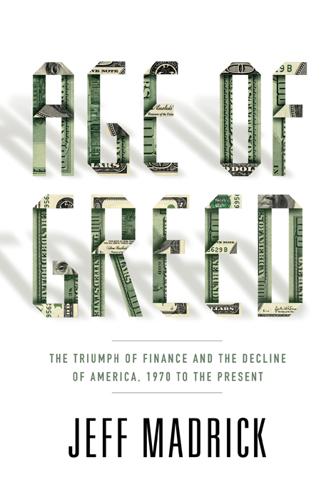
Age of Greed: The Triumph of Finance and the Decline of America, 1970 to the Present
by
Jeff Madrick
Published 11 Jun 2012
When interest rates rose in an overheating economy—or were raised by the Fed to forestall inflation—depositors put their money elsewhere because banks could not raise their own rates under Regulation Q. This diversion of funds was known as disintermediation, and the result was a credit crunch as bank lending to businesses would dry up. Wriston realized that the Fed now feared disintermediation and the economy needed him as much as he needed the economy. But not all his competitors were in favor of the negotiable CD. Unlike Wriston, they feared challenging the Federal Reserve and were also concerned with a possible rate war, in which banks would keep raising rates competitively to attract depositors.
…
There were still restrictions on the rates paid, and the minimum size of a CD was $100,000, but bank credit increased far faster than the economy in these years, lending rising from $30 billion to $200 billion between 1962 and 1965. By the mid-1960s, new negotiable CDs were not adequate to ward off likely disintermediation and resulting credit crunches. Spending on the Vietnam War was pushing the federal budget into deficit at a time when the economy was growing strongly, new social programs were under way, and U.S. business was booming. The negotiable CDs actually contributed to higher inflation and interest rates, a fact that was not well recognized by either policymakers or economists.
…
Inflation kept rising, doubling in 1966, to 3.5 percent. The Federal Reserve, eager to staunch inflation, raised its discount rate sharply to suppress the ongoing business lending. When the banks raised rates to the maximum allowed to be paid even on the negotiable CDs, and market rates went still higher, disintermediation again began and a credit crunch was unavoidable. Large depositors fled the banks, and placed their money in commercial paper or in overseas investments. The volume of CDs shrank rapidly. Corporate lending and mortgage underwriting dried up, and the economy slowed down. A recession seemed likely.

What's Mine Is Yours: How Collaborative Consumption Is Changing the Way We Live
by
Rachel Botsman
and
Roo Rogers
Published 2 Jan 2010
After all, major credit card companies don’t put all their eggs in the same basket, either. In Zopa, money moves from Person A to Person C (without the need for Big Bank B in the middle). This path follows the basic economic law of disintermediation, the removal of middlemen from a process or supply chain to create more efficient markets. But it’s not the concept of the efficiency behind disintermediation that is important in collaborative lifestyles. It’s the significant shift the transparency creates in generating new levels of peer-to-peer trust, even between strangers. “Ten years ago some people thought it would be mad to send money to someone in the post in the expectation that they would receive a parcel in return, but that collaboration led to the development of the largest retailer in the world,” current CEO Giles Andrews says.
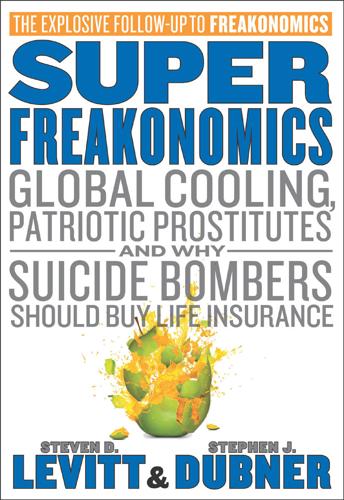
SuperFreakonomics
by
Steven D. Levitt
and
Stephen J. Dubner
Published 19 Oct 2009
In the old days, Allie probably would have worked for someone like the Everleigh sisters, who paid their girls handsomely but took enough off the top to make themselves truly rich. The Internet let Allie be her own madam and accumulate the riches for herself. Much has been said of the Internet’s awesome ability to “disintermediate”—to cut out the agent or middleman—in industries like travel, real estate, insurance, and the sale of stocks and bonds. But it is hard to think of a market more naturally suited to disintermediation than high-end prostitution. The downside was that Allie had no one but herself to screen potential clients and ensure they wouldn’t beat her up or rip her off. She hit upon a solution that was as simple as it was smart.

The Autonomous Revolution: Reclaiming the Future We’ve Sold to Machines
by
William Davidow
and
Michael Malone
Published 18 Feb 2020
tab=2&code=DNK (accessed on June 26, 2019). 39. “Quality of Life Rankings by Country 2019,” Numbeo, https://www.numbeo.com/quality-of-life/rankings_by_country.jsp (accessed on June 26, 2019). Chapter Five COMMERCIAL TRANSFORMATION 1. Tom Goodwin, “In the Age of Disintermediation the Battle Is All for the Customer Interface,” Techcrunch, March 3, 2015, https://techcrunch.com/2015/03/03/in-the-age-of-disintermediation-the-battle-is-all-for-the-customer-interface/ (accessed on June 26, 2019). 2. “Employment by Major Industry Sector,” Bureau of Labor Statistics, https://www.bls.gov/emp/ep_table_201.htm (accessed June 26, 2019). 3. Jordan Weissmann, “How Wall Street Devoured Corporate America,” The Atlantic,, March 5, 2013, https://www.theatlantic.com/business/archive/2013/03/how-wall-street-devoured-corporate-america/273732/ (accessed June 26, 2019); and Erin Duffin, “Corporate Profits in the United States in 2018, by Industry,” Statista.com, June 26, 2019, https://www.statista.com/statistics/222122/us-corporate-profits-by-industry/ (accessed June 26, 2019). 4.
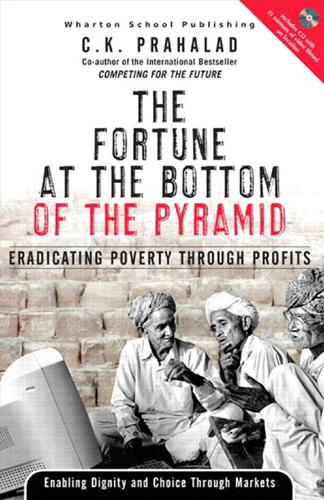
The fortune at the bottom of the pyramid
by
C. K. Prahalad
Published 15 Jan 2005
The ITC e-Choupal Story: Profitable Rural Transformation 339 The Samyojak The commission agents earned profit from two sources. The first was through provision of value-added logistical services that substituted for the lack of rural infrastructure. The second was by blocking information flow and market signals on the trading transactions. Complete disintermediation would result in the loss of a legitimate and essential service in the rural context. The goal was selective disintermediation so that agents would participate, but only as providers of essential services, not as principals in a trading transaction. In this incarnation, the agent was christened the samyojak. The samyojak’s collaboration began right from the selection of the first sanchalaks.
…
Farmers mentioned simple touches such as a shaded area with chairs to await their paperwork as indicators of ITC’s respect for them and their produce. Even though intangible in the short term, the self-confidence created by the professional treatment is changing the way farmers conduct themselves. Sanchalaks and even a commission agent noted this change in farmer attitudes. ITC Gains ■ Disintermediation savings. The commissions paid to the agents were not excessive, but the true cost of intermediation, including the rent seeking, was between 2.5 percent and 3 percent of procurement costs. A 0.5 percent commission to the sanchalak has replaced this. ■ Freight costs. Direct reimbursement of transport costs to the farmer is estimated to be half of what ITC used to pay the commission agents for transport to their factory

Data and Goliath: The Hidden Battles to Collect Your Data and Control Your World
by
Bruce Schneier
Published 2 Mar 2015
Chircu and Robert J. Kauffman (1998), “Analyzing market transformation in the presence of Internet-driven disintermediation: The case of online travel reservation providers,” Management Information Systems Research Center, http://citeseerx.ist.psu.edu/viewdoc/download? doi=10.1.1.196.4820&rep=rep1&type=pdf. in some cases—advertising: Tim Williams (3 Jun 2013), “The disintermediation of the advertising agency business,” LinkedIn, http://www.linkedin.com/today/post/article/20130603205503-2042198-the-disintermediation-of-the-agency-business. Google CEO Eric Schmidt said: Eric Schmidt and Jared Cohen (2013), The New Digital Age: Reshaping the Future of People, Nations and Business, Knopf, http://www.newdigitalage.com.

The Rise of the Network Society
by
Manuel Castells
Published 31 Aug 1996
Electronic communication networks and the widespread use of the Internet revolutionized financial trade between firms, between investors and firms, between sellers and buyers, and, ultimately, the stock exchange markets.127 One major consequence of the transformation of finance was the global integration of financial markets, as analyzed above in this chapter. Another major development was the process of financial disintermediation; that is, the direct relationships between investors and securities markets, bypassing traditional brokerage firms, on the basis of electronic communication networks (ECNs). While Internet technology was crucial in allowing this trend to happen, a major institutional change made possible electronic trading.
…
The on-line brokerage industry in the US in 1999 had about 9.7 million accounts, three times the number in 1997, with customers’ assets of nearly half a trillion dollars – a figure that is likely to be dwarfed in the early twenty-first century. Electronic trading quickly spread from stocks to bonds. In November 1999, the city of Pittsburgh used the opportunity of electronic disintermediation to offer $55 million worth of municipal bonds directly to institutional investors over the Internet, thus bypassing Wall Street. This was the first time municipal bonds were directly sold electronically. The entry of electronic trading into the $13.7 trillion bond market is likely to change financial markets even further.
…
On the other hand, if there is trust in the institutions underlying the market, then expectations of the potential future value of a future stock will increase its value. In the case of Russia, neither trust nor expectations were inducers of value in 1999. In the case of Amazon, in spite of losing money, the institutional environment of the new economy (essentially characterized by deregulation and disintermediation) had won the approval and trust of investors. And expectations were high on the ability of the on-line selling pioneer to move into e-commerce beyond books. This is why, for firms that bring together a “new economy” flavor with traditional virtues in profit-making and corporate respectability, the rewards are the highest, as shown in Exhibit one.
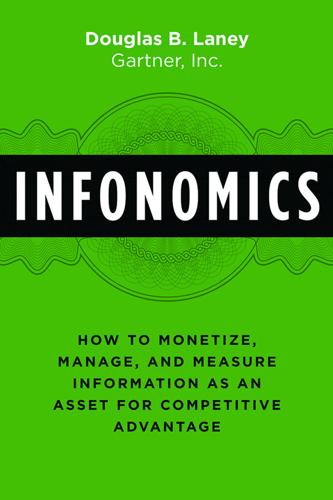
Infonomics: How to Monetize, Manage, and Measure Information as an Asset for Competitive Advantage
by
Douglas B. Laney
Published 4 Sep 2017
However, it’s a tremendous opportunity for business leaders who are looking to invent new disruptive business models, or entrepreneurs looking to invent new digital businesses. Netflix is a classic example of this awareness and opportunism: first identifying the low storage cost and high transportability of DVDs via the postal system, then capitalizing on the improved storage and transportability of streaming films over the internet. Where’s Blockbuster today? Disintermediated by data. The only store I have seen in the past five years is in Anchorage, Alaska, where internet access is still unavailable or spotty for some in the surrounding area. New Business Models and Profitability The long-term value of IT with respect to business investments lies not in the features and functions of a proposed technology or solution, but in the value of the information that the technology or solution creates to drive new business models and profitability.
…
Call it “global business climate change.” This affects information ecosystems to the extent that these changes must be anticipated by any information vision. No longer can organizations afford merely to sense and respond to worldwide or industry changes brought about by widespread digitalization, business model disruption, and disintermediation, nor by the resulting orders of magnitude increases in the volume, variety, and velocity of information. In biological ecosystems, the concept of succession describes wholesale changes to an ecosystem based on major disturbances. To be part of that succession (rather than part of the extinction that often follows), a vision for IAM must either anticipate these disturbances, be flexible enough to handle any disturbances, or recognize your intention to create such disturbances.
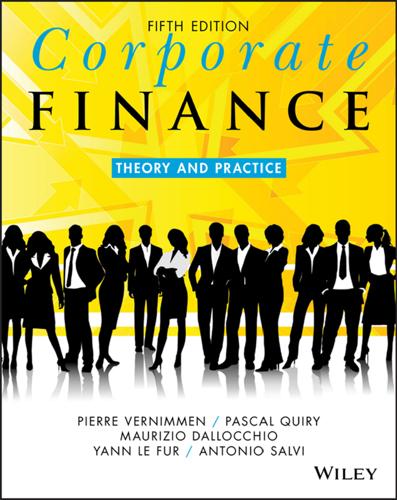
Corporate Finance: Theory and Practice
by
Pierre Vernimmen
,
Pascal Quiry
,
Maurizio Dallocchio
,
Yann le Fur
and
Antonio Salvi
Published 16 Oct 2017
These cash flows appear in its income statement in the form of revenues and expenses. The difference, or spread, between the two constitutes the intermediary’s earnings. The intermediary’s balance sheet and income statement thus function as holding tanks for both parties – those who have surplus capital and those who need it: Today’s economy is experiencing increasing disintermediation, characterised by the following phenomena: more companies are obtaining financing directly from capital markets; and more companies and individuals are investing directly in capital markets. When capital markets are underdeveloped, an economy functions primarily on debt financing. Conversely, when capital markets are sufficiently well developed, companies are no longer restricted to debt, and they can then choose to increase their equity financing.
…
Intermediation gives way to the brokerage function, and the business model of financial institutions evolves towards the placement of companies’ securities directly with investors. In this economic model, bank loans are extended primarily to households in the form of consumer credit, mortgage loans, etc., as well as to small enterprises that do not have access to the capital markets. The growing disintermediation has forced banks and other financial intermediaries to align their rates (which are the rates that they offer on deposits or charge on loans) with market rates. Slowly but surely, market forces tend to pervade all types of financial instruments. For example, with the rise of the commercial paper market, banks regularly index short-term loans on money-market rates.
…
Unlike conventional bank loans, debt securities can be traded on secondary markets (stock exchanges, money markets, mortgage markets and interbank markets), but their logic is the same and all the reasoning presented in this chapter also applies for bank loans. Debt securities are bonds, commercial paper, Treasury bills and notes, certificates of deposit and mortgage-backed bonds or mortgage bonds. Furthermore, the current trend is to securitise loans to make them negotiable. Disintermediation was not the only factor fuelling the growth of bond markets. The increasing difficulty of obtaining bank loans was another, as banks realised that the interest margin on such loans did not offer sufficient return on equity. This pushed companies to turn to bond markets to raise the funds that banks had become reluctant to advance.
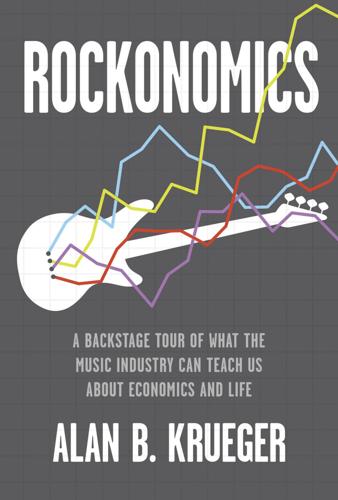
Rockonomics: A Backstage Tour of What the Music Industry Can Teach Us About Economics and Life
by
Alan B. Krueger
Published 3 Jun 2019
The services pay less in royalties than she would have received from full album sales. Her most ardent fans purchased her album. The strategy resulted in over 1.2 million record sales in its first week, edging out Ed Sheeran’s for the strongest sales of any album in 2017.22 Technology is rapidly facilitating “disintermediation,” enabling musicians to produce, record, publish, and distribute their own music without the need of a record label. Companies such as Kobalt are emerging to help independent artists publish music and collect royalties. And services such as DistroKid enable artists to upload their music to streaming services and online stores.
…
But the seven key economic lessons for understanding the music business are likely to endure and continue to be helpful for understanding developments in the industry. Supply, demand, and all that jazz of human desire for fair treatment and government policy relating to copyright and scalping, for example, will always play a central role in determining the direction of the music business. Although technology will enable further disintermediation, and provide new avenues for artists to create, market, and distribute their music, the music industry will likely continue to be dominated by a relatively small number of superstars given the scale of the market, the uniqueness of performers, and the role of networks in determining popularity.
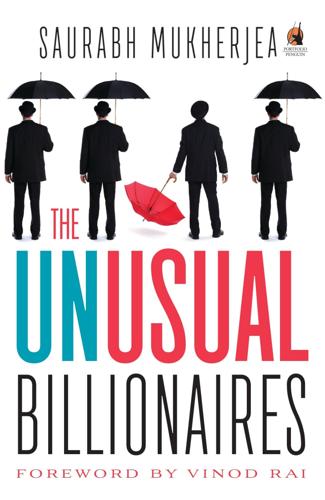
The Unusual Billionaires
by
Saurabh Mukherjea
Published 16 Aug 2016
To put this simply, HDFC Bank has excelled at providing steady customer service using clever technology and well-drilled standard operating processes. Such customer service has, in turn, helped the bank maintain a high CASA ratio. The bank has then lent these funds judiciously, ensuring that its NPAs remain low. With financial technology players trying to disintermediate banks, HDFC Bank’s strong technological platform and data-driven insights into the historical behaviour of its large customer base are key strategic assets. A prime example of how the bank leveraged these assets is the ten-second, pre-approved personal loan for existing customers, the first of its kind, launched in 2015.
…
Although numerous case studies have been written on GCMMF, the following appear to be the dominant factors at the core of this cooperative’s success: (a) its fifty-year-old brand with its distinctive imagery of the little girl in the red polka-dotted dress; (b) the idea of a fair deal for the small farmer and the linked idea of the disintermediation of the unfair middleman; and (c) the spirit of Indian nationalism in an industry dominated by globe-girdling for-profit corporates. A more prosaic but equally effective example of architecture would be the way India’s largest car manufacturer, Maruti Suzuki, is tied up in a common architecture with its suppliers.

MegaThreats: Ten Dangerous Trends That Imperil Our Future, and How to Survive Them
by
Nouriel Roubini
Published 17 Oct 2022
Investor enthusiasm has spawned a growing list of investment vehicles dedicated to fintech, where bullish observers see lofty growth potential in cashless payments. Not everyone welcomes newcomers. Banks trapped in outdated technology face massive costs to convert their legacy systems. If customers bolt for fintech options, money will flow out of traditional banks, draining deposits that underpin lending capacity. By luring money away, disintermediation could put banks out of business. Widespread failures would strain a financial system that barely survived the global financial crisis. A more profound threat to banks may come from the very source of their ability to function. Aware that money has begun departing their jurisdiction for crypto or fintech alternatives, central banks are contemplating the most dramatic innovation yet.
…
They retain a small amount of these deposits in liquid assets and lend the rest in the expectation that depositors will never claim more than a fraction of their assets. This arrangement fuels the fractional reserve banking system. Demand deposits become long-term loans that banks record as assets. In this scenario, CBDCs create two serious risks to financial stability. The first is disintermediation as depositors move funds from commercial banks to central banks. Survival would mean converting banks into financial institutions that replace low-cost deposits with long-term borrowing at market rates to finance their long-term loans and mortgages, squeezing if not eradicating their profits.
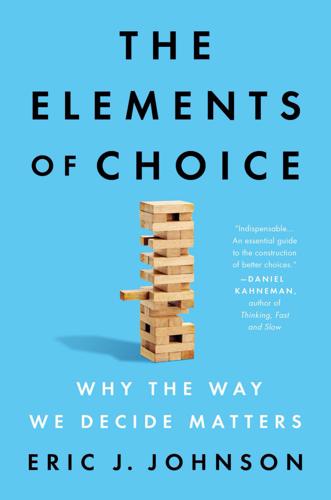
The Elements of Choice: Why the Way We Decide Matters
by
Eric J. Johnson
Published 12 Oct 2021
If you think about this, it could happen both because the big words feel easier to read, and because we believe that the big fonts are easier to read (even if we don’t feel that). While this is an important theoretical distinction, what is central to our discussion is that it affects how easy we think something is to remember, even when there is no difference. 15. Rosenfeld, Thomas, and Hausen, “Disintermediating Your Friends: How Online Dating in the United States Displaces Other Ways of Meeting.” 16. BernieSingles has since become loveawake.com. See Cesar, “Of Love and Money: The Rise of the Online Dating Industry.” 17. Etherington, “Daily Dating Site Coffee Meets Bagel Lands $600K from Lightbank, Match.Com Co-Founder.” 18.
…
Public Relations Quarterly 37, no. 4 (1992): 12–17. http://www.repiev.ru/doc/subliminal.pdf. Rosenblatt, Seth. “Ad Tracking ‘Blocker’ Comes to i0S6.” CNET, September 14, 2012. https://www.cnet.com/news/ad-tracking-blocker-comes-to-ios-6/. Rosenfeld, Michael J., Reuben J. Thomas, and Sonia Hausen. “Disintermediating Your Friends: How Online Dating in the United States Displaces Other Ways of Meeting.” Proceedings of the National Academy of Sciences of the United States of America 116, no. 36 (September 3, 2019): 17753–58. doi.org/10.1073/pnas.1908630116. Rozin, P., S. Scott, M. Dingley, and J. K. Urbanek.
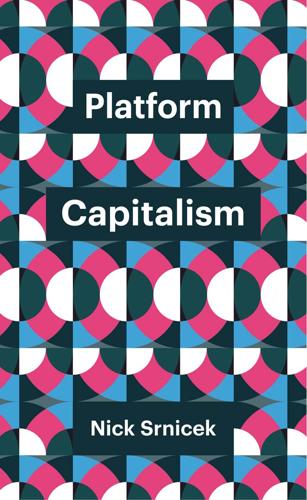
Platform Capitalism
by
Nick Srnicek
Published 22 Dec 2016
Working Paper RHS-06-027. Social Science Research Network, Rochester. SSRN-id929845, downloadable at http://papers.ssrn.com/abstract=825687 (accessed 25 May 2016). Goodwin, Tom. 2015. ‘The Battle Is for the Customer Interface’. TechCrunch. 3 March. http://social.techcrunch.com/2015/03/03/in-the-age-of-disintermediation-the-battle-is-allfor-the-customer-interface (accessed 25 May 2016). Gordon, Robert. 2000. ‘Interpreting the “One Big Wave” in US Long-Term Productivity Growth’. NBER Working Paper 7752. National Bureau of Economic Research. http://www.nber.org/papers/w7752 (accessed 25 May 2016). Greenspan, Alan. 1996.
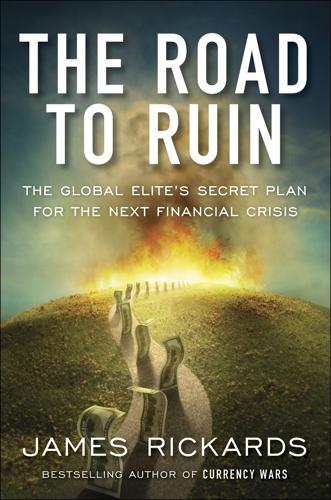
The Road to Ruin: The Global Elites' Secret Plan for the Next Financial Crisis
by
James Rickards
Published 15 Nov 2016
The sole purpose is to provide adequate transparency for the proper exercise of the U.S. government’s duty to maintain functioning capital markets which constitute part of the critical national security infrastructure. … The prime brokers and clearing banks … could be quickly identified and concentration risk in the regulated sector could be ascertained. The past 30 years have witnessed the disintermediation of the regulated financial sector by the less regulated and non-regulated sectors. … Every step in this evolution … has involved a diminution in transparency and an increase in risk. … When derivatives technology drives an exponential increase in the quantum of risk, the risk-increasing effects of scaling and complexity in a non-linear critical system dominate the risk-reducing effects. … A problem cannot be resolved unless the dimensions of the problem are known to some extent.
…
These reasons had in part to do with the unfairness of not giving depositors a decent return on their money while Wall Street bankers used easy money to enrich themselves with leveraged stock buybacks. Stein was subtler. He saw inside the machine. Stein knew that asset swaps—an exchange of junk collateral for good collateral so the exchanging party could pledge good collateral in another deal—were adding hidden leverage. He understood that increased regulation was driving disintermediation—so-called shadow banking—making it worse than what collapsed in 2008. He grasped that derivatives risk was in gross notional values, not net. This was clear from his speeches and writings. Stein saw the bubble dynamics. Then he was gone. No one left on the FOMC seemed to see what Stein saw. My question to Jon was straightforward.

The Industries of the Future
by
Alec Ross
Published 2 Feb 2016
The process of performing a wire transfer, opening a bank account, or setting up a will has remained unchanged.” Joi Ito, director of the MIT Media Lab, expands on this idea: “My hunch is that The Blockchain will be to banking, law and accountancy as The Internet was to media, commerce and advertising. It will lower costs, disintermediate many layers of business and reduce friction. As we know, one person’s friction is another person’s revenue.” Charlie forecasts the elimination of commissions for the sale of stocks or bonds, since they can be transferred on the ledger. He imagines that contracts can also be embedded on the ledger, including proof of ownership for hard assets like land.
…
Much as the Internet was a confusing space largely populated by technologists prior to the creation of the World Wide Web, once the blockchain has safer and more user-friendly wallets, trading platforms, and pricing indexes, its use will expand beyond those who are very adept technologically. As blockchain technology takes off, its impact will be like that of the sharing economy and other forces of digital disintermediation: it will force a rewrite of the compact between corporation, citizen, and government. It is bringing frontier economies onto the global playing field while destroying middlemen and traditional authorities. Amid his enthusiasm, Charlie still cautions, “The unknown unknowns of an experiment like this are massive.
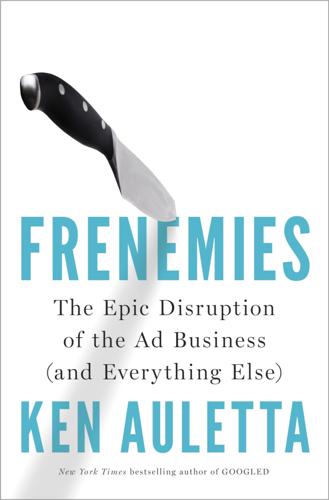
Frenemies: The Epic Disruption of the Ad Business
by
Ken Auletta
Published 4 Jun 2018
He cited how programmatic ad buying, run by machine algorithms that target desired audiences, “may be able to cut out the agency. The agency/client/marketing model is being challenged now the way it has never been challenged before, based not only on technology potentially disintermediating . . . but when you break down the trust barrier,” because the client doesn’t know how its money is being spent, the disintermediation accelerates. So what stance, an executive asked, should we take with clients? “I harken back to my baseball days: get a cup,” Kassan answered. To protect MediaLink, their task is to serve as “a bridge between the buyer and the seller.
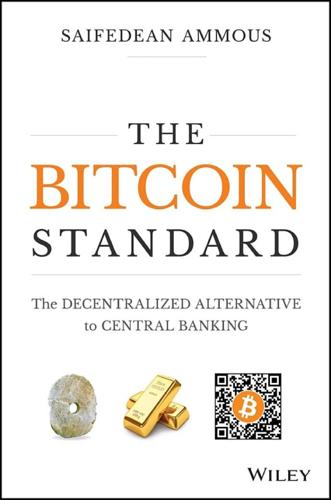
The Bitcoin Standard: The Decentralized Alternative to Central Banking
by
Saifedean Ammous
Published 23 Mar 2018
Second, the nature of sound money, as explained earlier, lies precisely in the fact that no human is able to control it, and hence, a predictable immutable algorithm is uniquely suited for this task. Having thought of this question for years, in no other avenue of business can I find a similar process that is at once so important as to be worth the extra costs for disintermediation, as well as being so transparently simple that removing all human discretion would be a massive advantage. An analogy with the automobile is instructive here. In 1885, when Karl Benz added an internal combustion engine to a carriage to produce the first autonomously powered vehicle, the express purpose of that move was to remove horses from carriages and free people from having to constantly deal with horse excrement.
…
There cannot be wide adoption of blockchain technology in industries reliant on trust in intermediaries, because the mere presence of intermediaries makes all the costs associated with running a blockchain superfluous. Any application of blockchain technology will only make commercial sense if its operation is reliant on the use of electronic cash, and only if electronic cash's disintermediation provides economic benefits outweighing the use of regular currencies and payment channels. Good engineering begins with a clear problem and attempts to find the optimal solution for it. An optimal solution not only solves the problem, but by definition does not contain within it any irrelevant or superfluous excess.
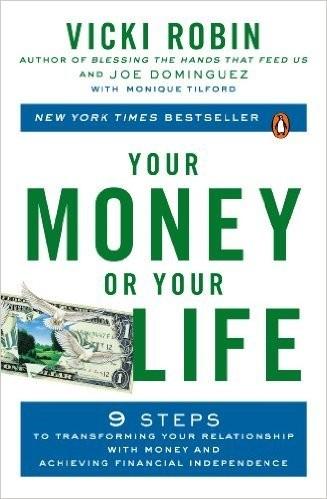
Your Money or Your Life: 9 Steps to Transforming Your Relationship With Money and Achieving Financial Independence: Revised and Updated for the 21st Century
by
Vicki Robin
,
Joe Dominguez
and
Monique Tilford
Published 31 Aug 1992
Treasury bonds, when they are newly issued, can be bought directly from the Federal Reserve, with no commissions whatsoever, through a program called Treasury Direct. This cuts out the middleman: no broker, no added brokerage house fees. Cutting out the middleman by buying bonds directly is called “disintermediation”; it is the act of buying a given security, such as a treasury bond, yourself rather than investing your money in an intermediary (such as a fund, bank or other institution) that will turn around and put it into the same investments while taking a big chunk for itself. You can also buy existing treasury bonds through a broker (for a minimal fee).
…
See Consumer Price Index (CPI) craigslist credit cards crossover point cultural perspective of money cushion for emergencies Dacyczyn, Amy and Jim daily decompression daily money log sample of Dalai Lama Danko, William D. debt denial about getting out of levels of consumer and national See also liabilities Debtors Anonymous decompression, daily Depression, The diet analogy Diets Don’t Work (Schwartz) discernment discount buying discrimination vs. recrimination disintermediation do it yourself investment management job expenditures and learn basic living skills Dominguez, Joe Dovey, Catherine Downshifting: Reinventing Success on a Slower Track (Saltzman) dreams durability, in purchases earnings. See income earth. See planet earth Ebay Ecks, Fred Ecological Footprint economic growth consumerism and full employment doctrine and limits to as recipe for well-being education, college Ehrlich, Paul emergencies, cushion for emotional/psychological perspective of money employment full, doctrine of paid part-time unpaid See also work empowerment end-of-month balancing enjoyment of material world enough components of concept of for everyone and then some entertainment environment.

A Demon of Our Own Design: Markets, Hedge Funds, and the Perils of Financial Innovation
by
Richard Bookstaber
Published 5 Apr 2007
With their limited capital, the specialists were not willing to wait for the process to unfold, and their increasingly aggressive offers ended up backfiring. Prices dropped so violently that many potential buyers started to wonder what was happening and backed off completely. The root dynamic was what I call time disintermediation—the time frame for being able to do transactions in the futures market was substantially different from the time frame in the the equity market, yet these two markets had been linked together through market arbitrageurs. We could see the effect on our trading floor. One of our institutional clients in Boston was bullish on IBM and had discussed strategies for adding more of the stock to his substantial portfolio.
…
Treasury spread position, on-the-run/offthe-run trade, 120–124 Samuelson, Paul, 208–209 Santa Fe Institute, 229 Scharf, Charlie, 123–124 Scholes, Myron, 9, 119 Scribe Reports, 201–202 Securities price behavior, 36 volatility calculation, 14 Self-referentiality, 222 Shaw, David E., 165, 189, 243 Shiller, Robert, 179 Shopkorn, Stan, 181 Shuttle disasters, 159–161 Simon, Jim, 165 Singapore International Monetary Exchange (SIMEX), Osaka Exchange (matched positions), 39 Smith Barney, 75 Solow, Robert, 208–209 Soros, George, 179–180 Speculative traders, economic service, 219 Spread trades, holding periods, 83 Standard & Poor’s (S&P) futures contracts, sale, 20 Statistical arbitrage concept, 194 emergence, 182–188 origination, 184 traders, 191–192 Statistics, objective, 134–135 Stavis, Rob, 53, 59, 70–80, 84 Stock clearance/finance, 27–28 StockGeneration, web site, 168 Stock market crash (1929), 137 Stock market crash (1987), 1–2 demons, 7 impact/meditation, 18–20 mechanism, understanding, 28 meltdown, physics, 25–30 postmortem, 13–14 warning signs, 16–18 Strauss, Thomas, 196 resignation, 199 STRIPS, 40–41 Sunbeam, restatements/liability, 135 SuperDOT, linkage, 189 Swap maturity/rate level, interaction, 47 Systems, interactive complexity, 155 Takeovers, impact, 15–16 Tartaglia, Nunzio, 187–189 Thorp, Ed, 188 Three Mile Island, 159 safety systems, dangers, 147–150 Tight coupling, 143 accidents, 154–157 complexity, combination, 256 failure, cascade, 145–146 interactive complexity, relationship, 157–159 origination, 144–145 reduction, 260 Tilley, Jim, 8–9, 46 Time disintermediation, 21 Toevs, Alden, 9 Too big to fail doctrine, 113 Top-down approach, 167 Travelers brokerage unit, 75 Citigroup merger, 125, 140 Shearson American Express, merger, 78 Tribeca Investments, 204 Tulip mania, 174–177 Turnover, demand satisfaction, 173 Two-plus model, 85–86 U.K. tax code, change (1997), 117, 118 Ukraine Radiological Institute, 163 Unanticipated events, 239 Uncertainty, implications, 257 Uncertainty Principle, 223–227 behavioral analogue, 226 Undecidability Theorem, 223–224 Underwriting, profitability, 33–34 Union Bank of Switzerland (UBS), 48 Epstein, impact, 48–49 Goldstein, impact, 116–118 LTCM impact, 118–120 LTCM losses, 113–116, 120 monetary loss, 49 Swiss Bank Corporation, merger, 49 Unwind/unrealized losses, 68 275 bindex.qxd 7/13/07 2:44 PM Page 276 INDEX U.S. arbitrage, losses, 100 U.S. swap market, 92 U.S.

Digital Wars: Apple, Google, Microsoft and the Battle for the Internet
by
Charles Arthur
Published 3 Mar 2012
They were intermediates between the handset makers and the users: they controlled pricing of devices and data contracts, the timing of software updates, device branding, everything. Within Nokia and other handset makers, the thinking had become more about keeping the carriers happy than delighting the customers who would make calls. To Jobs, they were both ripe for disintermediation. The deal that he negotiated with Cingular (soon to be renamed AT&T) was unprecedented in the history of mobile networks: Apple would control the iPhone’s branding and marketing and the timing of software updates. It was the expression of Jobs’s desire to control the presentation of every item he sold – you can’t let just anyone sell your ties.
…
There are only companies that have good fast decisions.’1 Where Apple hadn’t heard of Google 13 years before, now it had gone from having a common cause against Microsoft to being just a business acquaintance, and frequent opponent; Apple and Microsoft bid together against Google for patents covering the mobile business. Apple was seeking to disintermediate Google from search with the cloud-based voice search of its upcoming iPhone. And they were constantly niggling each other in smartphones and tablets. Even so, by September 2011 the majority of mobile search still came from iPhones, according to Google testimony at the US Senate. Apple had changed.
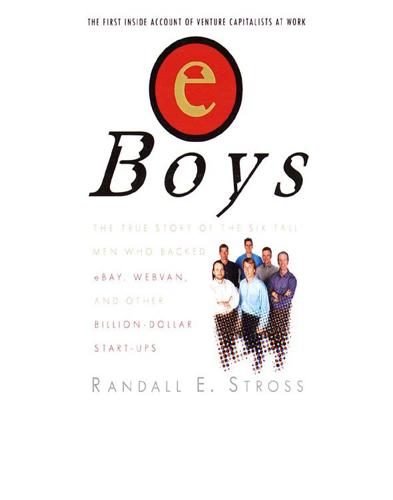
eBoys
by
Randall E. Stross
Published 30 Oct 2008
It was also a category of goods that would lend itself well to the online medium. Conceivably, one could have in a single place listings of every work of original art available for sale in the world and could search by artist, medium, subject, or any other characteristic. What the partners were looking for were categories that were ripe for “disintermediation”—removing a middle layer in the distribution chain. In this case, that layer was the twelve thousand or so art galleries in the country. “Huge market,” Kagle insisted again. “All kinds of bad selling tactics there. Ugliness.” It was ripe for the introduction of a more efficient form of matching buyers with the art they sought.
…
Chicago’s weather didn’t increase its allure, either. “What scares me about this market,” Beirne said, “is kind of the same thing on PlanetRx. When you don’t have a major distributor, you don’t have a major player, you have this real big fragmented industry. You think, Okay, it’s a great opportunity to go in and disintermediate all this bullshit.” Kagle was a one-voice chorus. “Right!” “Then again,” Beirne continued, “there’s a bunch of quirks around traditional, small little nichey businesses like this. They operate that way for a reason.” So maybe what seemed to be a large opportunity was illusory. Undeterred, Kagle returned to Lederer.

Future Crimes: Everything Is Connected, Everyone Is Vulnerable and What We Can Do About It
by
Marc Goodman
Published 24 Feb 2015
As the use of drones and other robotic technologies becomes more commonplace, we can expect them to be leveraged by all members of society, for both good and ill. While 9/11 1.0 was about human beings’ seizing aircraft and flying them into occupied buildings for terrorist effect, 9/11 2.0 makes it possible to disintermediate the humans and use robots in their stead. We, Robot In the future, I’m sure there will be a lot more robots in every aspect of life. If you told people in 1985 that in 25 years they would have computers in their kitchen, it would have made no sense to them. RODNEY BROOKS Throughout the history of film and television, we’ve seen robots presented in a variety of lights.
…
Those who find such a future implausible need only look at the strides already made with synthetic biology and engineered drugs. E. coli bacteria have been genetically engineered and reprogrammed to produce THC (the active ingredient in cannabis), and others have been able to coax baker’s yeast into making LSD and opium. Rapidly advancing changes in digital biology may also disintermediate existing incumbents in the narcotics trade. Just as Microsoft took the personal PC away from IBM, and Apple took the mobile phone from Nokia and BlackBerry, it may be a student at MIT who obviates the need for a Colombia-based Pablo Escobar of tomorrow. Moreover, if Craig Venter is right and we will all have bio-printers at home, why not just print my own THC or oxycodone—evaporating billions in profits from legacy players and creating new leaders in the bio-cartels of tomorrow.
…
The fallen state of our Internet is a direct, if unintentional, consequence of choosing advertising as the default model to support online content and services.” Though our data pay for Gmail, YouTube, and Facebook today, we could just as easily support Internet companies whose goal was to store as little personal data of ours as possible, in exchange for minute sums of cash. Why not just disintermediate the middle man altogether for a much more logical system? We would become Facebook’s and Google’s clients for a dollar a month and could go on to enjoy our lives. Unfortunately today, just as is the case with software vendors, the incentives are misaligned from a public safety and security perspective.

Surviving AI: The Promise and Peril of Artificial Intelligence
by
Calum Chace
Published 28 Jul 2015
Salptre became uneconomic overnight, and you can see trains that were carrying loads of it to the port which were simply abandoned mid-journey. Today’s disruption is caused by the digital revolution – the internet, in short – and it is unusual in that it is affecting so many industries simultaneously. During the dotcom boom and bust at the turn of the century there was much talk of companies being “disintermediated” by the internet, and a continuing example of that is the publishing industry, where publishers no longer dictate whose books get read because Amazon has enabled authors to publish themselves. Kodak The poster child of digital disruption is Kodak. At its peak in the late 1980s it employed 145,000 people and had annual sales of $19bn.
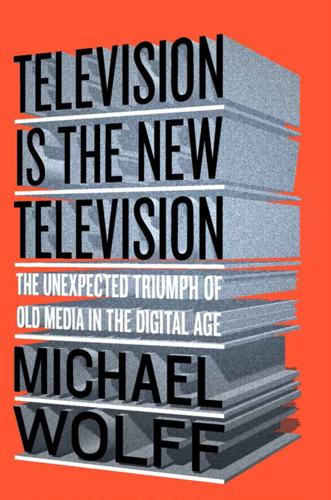
Television Is the New Television: The Unexpected Triumph of Old Media in the Digital Age
by
Michael Wolff
Published 22 Jun 2015
Kvamme, sure that Funny or Die would trump in its over-the-top distribution and bare-bones economics the $2-million-an-episode South Park with its cumbersome and costly Viacom–Comedy Central relationship (the South Park creators had just negotiated a 50/50 deal to split digital profits with Viacom, which had committed to handling advertising), got up and went to the whiteboard and brusquely erased “media companies” on the triangle, replacing it with just “consumer”—emphasizing this new, disintermediated world. The Google guys were even more direct, pointing out, with some impatience, that there was quite some lack of understanding in the room about the nature of the revolution that was under way. It was Andreessen, whose word alone would come nearly to have the power to create tech success, who was perhaps most daunting and in the end most frightening—signaling how far apart the two sides were, and how precarious the television business suddenly seemed.
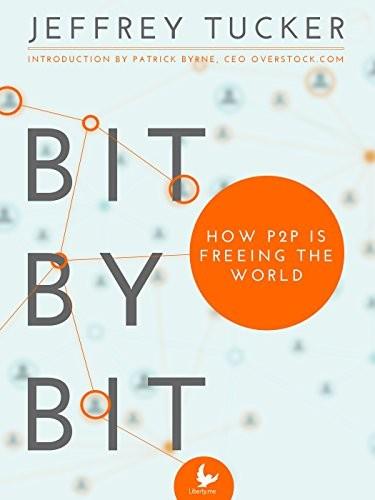
Bit by Bit: How P2P Is Freeing the World
by
Jeffrey Tucker
Published 7 Jan 2015
Given the number of such central institutions that have evolved over time, and attached themselves like barnacles to the ship of civilization, a technology this radically innovative is going to have political effects so profound I am confident that the pace of social change is only going to quicken when those centralized institutions (including various government functions) find themselves disintermediated. Will government slip into a naked rearguard action, as with taxis moving to outlaw Uber? Or will the people remember in time that these institutions were not sent to us from a burning bush, that we created them in order to fulfill functions, and that those functions can now be done within cryptotechnology at a tiny fraction of the price, and without the risk of centralized institutions getting captured?

Jennifer Morgue
by
Stross, Charles
Published 12 Jan 2006
Sockets for vacuum tubes stud its surface, one of them occupied by the broken base of a component; numerous diodes and resistors connect it to an odd, stellate design in gold that covers most of the surface of the board. "This board was taken from a GRU-issued Model 60 oneiromantic convolution engine found aboard the K-129. As you can see, it spent rather longer in the water than was good for it. Ellis reverse-engineered the basic schematic and pieced together the false vacuum topology that the valves disintermediated. Incidentally, these aren't your normal vacuum tubes — isotope imbalances in the thorium-doped glass sleeves suggest that they were evacuated by exposure in a primitive wake-shield facility, possibly aboard a modelthree Sputnik satellite similar to the one first orbited in 1960. That would have given them a starting pressure about six orders of magnitude cleaner than anything available on Earth at the time, at a price per tube of about two million rubles, which suggests that someone in the GRU's scientific directorate really wanted a good signal, if that wasn't already obvious.
…
"Who's the target?" Mo ducks out and stands beside me. "Him!" I pull the trigger. There's an ear-stinging ricochet a fraction of a second after the shot. I'm nowhere near the target. "Damn, missed. "Bob, we've got to get out of here! Can you still feel that Black Chamber bitch? The chromatic disintermediator should have broken your entanglement, but — why are you trying to shoot that cat" "Because — " I squeeze off another shot " — it's possessed!" "Bob." She looks at me as if I'm mad. There's a loud bang from inside the control room, and a human figure in a black beret runs out onto the sealed doors flooring the pool: I shoot instinctively and miss, and he dives for cover.
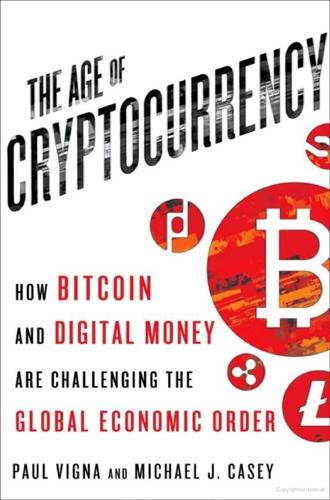
The Age of Cryptocurrency: How Bitcoin and Digital Money Are Challenging the Global Economic Order
by
Paul Vigna
and
Michael J. Casey
Published 27 Jan 2015
Users wouldn’t merely be transferring balances between accounts within a closed system such as PayPal’s, but could exchange full-fledged digitized dollars with anyone, anywhere, as if they were cash. Also like bitcoin and other cryptocurrencies, Rosen’s project ran off a permanent ledger of transactions and allowed for the digital dollar to be cut into smaller pieces so that commerce could occur in whatever denomination was required. Citi’s e-cash was in this sense a disruptive, disintermediating, peer-to-peer currency. It wouldn’t need the extensive network of communications that underpins credit-card payments, so transaction costs would be kept low, providing gains for both consumers and businesses and making micropayments viable. But this is not to say Rosen wanted to cut banks out from the system as, say, Satoshi Nakamoto did.
…
Still, it might not have to be so stark. If we consider that banks simply act as middlemen aggregating the funds of those seeking to lend their excess savings and delivering them to those who are short of money and need to borrow, there’s nothing to say such matching of lenders and borrowers can’t occur in a disintermediated fashion with cryptocurrencies. The new trend of peer-to-peer loans, exemplified by the Lending Club, offers one model that easily scales to cryptocurrency systems, with the checks and balances of the blockchain potentially helping to enhance a system of credit checks and credit reputations. Either way, the flow of credit and money in a cryptocurrency-led financial system would take on a very different form if banks were removed from those flows
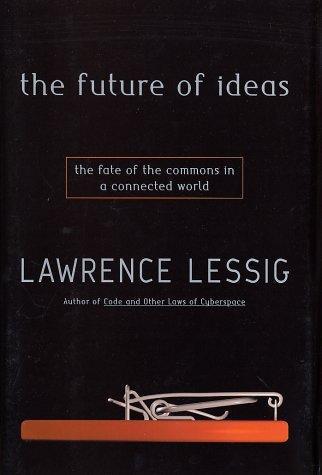
The Future of Ideas: The Fate of the Commons in a Connected World
by
Lawrence Lessig
Published 14 Jul 2001
Preface In 1999, in a book entitled The Control Revolution, journalist and legal scholar Andrew Shapiro described two futures that the Internet might take.1 The first was the familiar story of increased individual freedom, as the network gave us greater control over our lives, and over the institutions, including government, that regulate our lives. The second was a less familiar warning—of the rebirth of technologies of control, as institutions “disintermediated” by the Internet learned how to alter the network to reestablish their control. Shapiro saw good and bad in both futures. Too much dis-intermediation, he warned, would interfere with collective governance; some balance was needed. But likewise, efforts to rearchitect the Net to reenable control threatened to undermine its potential for individual freedom and growth.

Masters of Management: How the Business Gurus and Their Ideas Have Changed the World—for Better and for Worse
by
Adrian Wooldridge
Published 29 Nov 2011
If Tom Peters discovered that it is possible to sell management theory to the masses, Tom Friedman and company discovered that it is possible to reach the lucrative business market through bypassing the conventional suppliers, the business schools, and consultancies. To mimic the language of the industry itself: first Tom Peters turned a B-to-B business into a B-to-C one, then a new generation of entrepreneurs disintermediated the established suppliers and went straight to the consumers. The Rise of the Journo-Gurus The most eye-catching change in the guru business is the rise of the journo-gurus. These are the locust years for the journalistic profession as a whole. Newspapers from the New York Times down are sacking journalists by the hundred.
…
They can no longer hide behind old-fashioned barriers such as huge factories and elaborate distribution networks. Nor can they rely on softer barriers such as deference or loyalty. Technorati determines the “authority” of a blog by the number of people who link to it rather than the institutional connections of the bloggers. Old-fashioned intermediaries such as dealers and brokers are being disintermediated regardless of how much loyalty they have built up over the years. Established companies must keep running in order to stay in the same place. The capital markets are also giving companies a shaking. The markets control vastly more money than ever before: the U.S. Investment Company Institute calculates that the volume of money controlled by American mutual funds increased from $135 billion in 1980 to $12 trillion in 2007.

The Hype Machine: How Social Media Disrupts Our Elections, Our Economy, and Our Health--And How We Must Adapt
by
Sinan Aral
Published 14 Sep 2020
Jackson, and Paolo Pin, “Identifying the Roles of Race-Based Choice and Chance in High School Friendship Network Formation,” Proceedings of the National Academy of Sciences 107, no. 11 (2010): 4857–61. “choice homophily” and “induced homophily”: Kossinets and Watts, “Origins of Homophily.” romantic relationships formed through online algorithms: Michael J. Rosenfeld, Reuben J. Thomas, and Sonia Hausen, “Disintermediating Your Friends: How Online Dating in the United States Displaces Other Ways of Meeting,” Proceedings of the National Academy of Sciences 116, no. 36 (2019): 17753–58. “the entire social network”: Johan Ugander et al., “The Anatomy of the Facebook Social Graph,” arXiv:1111.4503 (2011). Later studies have confirmed homophily in Facebook: For a review of that literature and more primary evidence, see Andreas Wimmer and Kevin Lewis, “Beyond and Below Racial Homophily: ERG Models of a Friendship Network Documented on Facebook,” American Journal of Sociology 116, no. 2 (2010): 583–642.
…
social sharing of Times articles in one city: Sinan Aral and Michael Zhao, “Social Media Sharing and Online News Consumption,” February 4, 2019, https://ssrn.com/abstract=3328864. More romantic partners have been introduced online: Michael J. Rosenfeld, Reuben J. Thomas, and Sonia Hausen, “Disintermediating Your Friends: How Online Dating in the United States Displaces Other Ways of Meeting,” Proceedings of the National Academy of Sciences 116, no. 36 (2019): 17753–58. how the digital breadcrumbs we leave on social dating sites: Ravi Bapna et al., “One-Way Mirrors in Online Dating: A Randomized Field Experiment,” Management Science 62, no. 11 (2016): 3100–122.
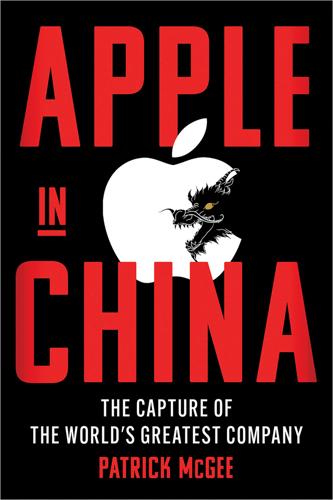
Apple in China: The Capture of the World's Greatest Company
by
Patrick McGee
Published 13 May 2025
Because rather than have the supplier purchase the raw materials needed for whatever component it was manufacturing, Apple procured these components on their behalf—a power move that obfuscated from the supplier what the prices were. The tactic had emerged around 2010, when Foxconn was trying to earn extra money by purchasing components at one set of prices, then billing Apple a higher cost. Apple responded by “disintermediating” Foxconn. Another motivation was simply that, when annual iPhone shipments ran into the tens of millions per year, and then into the hundreds of millions, Apple realized it wasn’t good enough to assume its suppliers would secure enough raw materials—the only way to ensure this was to be involved in negotiations directly.
…
Lost Out on iPhone Work,” New York Times, January 21, 2012, https://www.nytimes.com/2012/01/22/business/apple-america-and-a-squeezed-middle-class.html. Chapter 19: The Apple Shock Years before Uber: I’m riffing on a viral quote from Tom Goodwin, “The Battle Is for the Customer Interface,” TechCrunch, March 3, 2015, https://techcrunch.com/2015/03/03/in-the-age-of-disintermediation-the-battle-is-all-for-the-customer-interface/. first major report was in the UK’s Daily Mail: “The Stark Reality of iPod’s Chinese Factories,” Daily Mail, August 18, 2006, https://www.dailymail.co.uk/news/article-401234/The-stark-reality-iPods-Chinese-factories.html. Supply Chain Top 25: I told a shorter version of this story here: Patrick McGee, “How Apple Tied Its Fortunes to China,” Financial Times, January 26, 2023, https://www.ft.com/content/d5a80891-b27d-4110-90c9-561b7836f11b; the original report is: Tony Friscia, Kevin O’Marah, and Joe Souza, “The AMR Research Supply Chain Top 25 for 2007,” AMR Research Inc., May 2007.
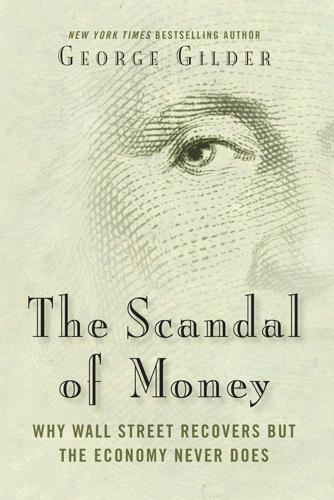
The Scandal of Money
by
George Gilder
Published 23 Feb 2016
Wall Street: The symbol of the financial industry, from investment banks to insurance companies, from credit card vendors to payday lenders, from brokers to hedge funds. Today Wall Street is gorging itself on the HYPERTROPHY OF FINANCE. Ideally, finance intermediates transactions across time through interest rates and across space through currency-exchange rates. But today both these functions are falsified by government manipulation. They face disintermediation by gold, by a new transactions layer in the Internet software stack, and by new cryptographic blockchain currencies. In the hypertrophy of finance, Wall Street was bloated by MONOPOLY MONEY created by the Federal Reserve and channeled to the U.S. Treasury by banks, never touching MAIN STREET.
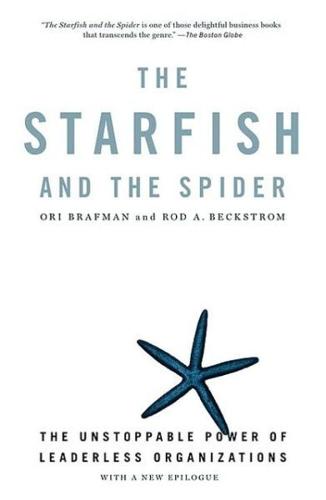
The Starfish and the Spider: The Unstoppable Power of Leaderless Organizations
by
Ori Brafman
and
Rod A. Beckstrom
Published 4 Oct 2006
And for a hundred years they've been paying the artists cents on the dollar, if that. They are starting to try to recharacterize what they do for a living as marketing companies, but you know, how many times have you seen print ads or TV ads or outdoor billboards for music artists? Rarely. They're going to be completely disintermediated at some point." It seems like everyone associated with the labels is losing money. Well, almost everyone. As Sam tells us, "You have to remember who's making money right now in this whole process over the last few years—hands down, it's the lawyers." Don Verrilli isn't complaining. For lawyers, it's a lot of the same old same old—more and more lawsuits.
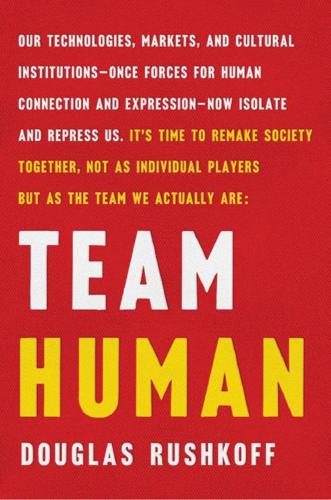
Team Human
by
Douglas Rushkoff
Published 22 Jan 2019
The argument merely reinforces the human obligation to keep consuming, or to keep working for an unlivable wage. More countercultural solutions, such as bitcoin and the blockchain, are no less technosolutionist in spirit. The blockchain replaces the need for central authorities such as banks by letting everyone on a network authenticate their transactions with computer encryption. It may disintermediate exploitative financial institutions but it doesn’t help rehumanize the economy, or reestablish the trust, cohesion, and ethos of mutual aid that was undermined by digital capitalism. It simply substitutes for trust in a different way: using the energy costs of blockchain mining as a security measure against counterfeiting or other false claims.
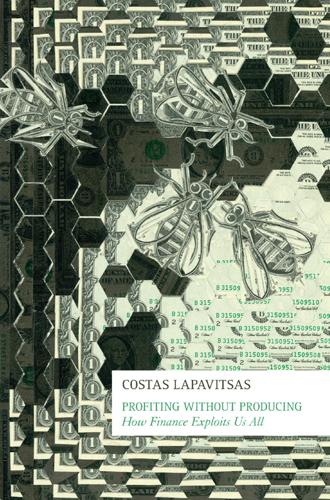
Profiting Without Producing: How Finance Exploits Us All
by
Costas Lapavitsas
Published 14 Aug 2013
Strong growth of ‘shadow banking’ in the US has been a characteristic feature of the 2000s contributing to the bubble and subsequent crash, as is shown in more detail in Chapter 9. Suffice it here to say ‘shadow banking’ reached a comparable size to regular commercial banking in the US toward the end of the 2000s. The relative decline of commercial banks has been perceived by mainstream economists as marginalization, or ‘disintermediation’, often in conjunction with the rise of direct finance through open markets. But commercial banks have also transformed themselves, while ‘shadow’ financial institutions are often dependent on banks for funding. Commercial banks have remained the pivotal institution of the financial system even in the US, as has become apparent in the gigantic crisis that broke out in 2007.7 Pursuing the analysis of financial asset stocks further, figure 4 turns to financial assets held by the non-financial sector – mostly households and non-financial enterprises.
…
Financial assets held by households, for instance, are typically mediated by financial institutions, and generate profits for the latter. Even so, there are considerable differences among the four countries regarding the financial flows associated with the financial and the non-financial sectors. Crude as they might be, the ratios proposed here can still highlight these differences. 7 For analysis of disintermediation and continuing concern about the role of banks see Mark Gertler and John H. Boyd, ‘U.S. Commercial Banking: Trends, Cycles and Policy’, in NBER Macroeconomics Annual, ed. O. Blanchard and S. Fischer, Cambridge, MA: MIT Press, 1993; and E. Gerald Corrigan, ‘Are Banks Special? – A Revisitation’, The Region, The Federal Reserve Bank of Minneapolis, March 2000.
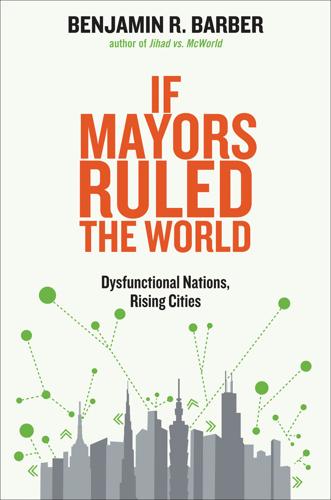
If Mayors Ruled the World: Dysfunctional Nations, Rising Cities
by
Benjamin R. Barber
Published 5 Nov 2013
The web’s creative democratic architecture notwithstanding, it seems more in tune with the commercial character and aspirations of those who developed the new applications than with the ideals of those responsible for the original innovations. In theory, the Internet (though originally a product of the Defense Department) offered a remarkable new social and civic as well as pedagogical and cultural interface. It proffered a horizontal rather than a vertical technology, connecting people directly with one another. It disintermediated authority and gave birth to a crowdsourcing wiki-logic in which knowledge would be subjected to democratic (critics would say anarchic) processes. Yet in application, the technological dreams were diminished. Social media as imagined by a college sophomore named Mark Zuckerberg (obsessed with rating girls and sharing gossip rather than generating a new mode of uplifting civic and social interaction of value to educators, deliberative democrats, or creative artists) instead produced the popular blockbuster Facebook—a product in which, though it defined social media, neither civic culture nor the culture of cities was visible.
…
There can be little doubt that cities are getting smarter and finding ways to use digital technology for outreach, information, and education and for involving citizens in neighborhood business, mainly within but also among towns. The possibilities (and perils) of crowdsourced knowledge—call it Wiki-logic—developed on the horizontal and disintermediated terrain of the Internet has powerful democratic implications. The assault on authority can liberate common women and men and invite them into deliberation, policy making (participatory budgeting), and a greater sense of ownership over government. Or it can unleash prejudice and the shameless promotion of straight-out lies.
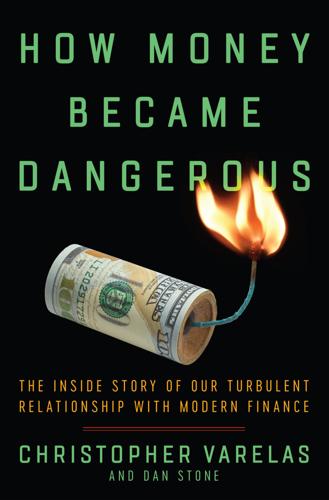
How Money Became Dangerous
by
Christopher Varelas
Published 15 Oct 2019
But, in time, it all turned tragic, as the computer spreadsheet allowed us—or even encouraged us—without any governance other than our own character, to manipulate and push that initial good idea beyond the boundaries of acceptable risk. The second and arguably more troubling change ushered in by the computer spreadsheet was the removal of character from the financial services world. Character doesn’t have a column in a computer spreadsheet. The process of cleansing character from the financial system began with the disintermediation of the bank lending officer, who was essentially replaced by computer analytics. The importance of assessing character diminished, insofar as character meant anything more than paying bills in a timely manner. We eventually reached a point at which the fifth c of credit, character, was replaced with a single measurement called “credit worthiness.”
…
It started with the false magic trick of ATM deposits, then the very idea of money shapeshifted into calling cards and other new forms of currency, and finally the advent of the internet pushed us into an entirely new realm; in a few short years it became possible to execute everyday tasks and transactions—like hailing a ride, buying groceries or clothes or books, ordering food delivery, chipping in for your share of a restaurant meal—with the mere touch of a screen. So many popular apps and tech forces—Amazon, Uber, Venmo, Airbnb—simply provide the means to disintermediate humans from commerce. It’s not uncommon in several cities to see a knee-high robot, basically a fancy cooler on wheels, navigating through pedestrians en route to deliver lunch to some hungry office worker, who not only doesn’t need to offer a gratuity, but can skip the small talk and pleasantries too.

The Stack: On Software and Sovereignty
by
Benjamin H. Bratton
Published 19 Feb 2016
This might lead to a greater modularization and even outsourcing of governmental services to constituents interested in providing and innovating these.38 However, the PRISM/Snowden affair and the general revelation of the core role that consultants like Booz-Allen Hamilton and Palantir play in the federal information complex demonstrate that this disintermediation of the work of the Cloud-based state is not only well underway, and that the more individualistic-entrepreneurial story of “government as a platform,” as told by publisher, Tim O’Reilly and others, is at most a supplemental augmentation of a well-established apparatus. In fact, one shudders at the thought of what a more individually distributed subcontracting of state Cloud surveillance might look like.
…
Speaking of reserve currencies, Bitcoin introduces addressable scarcity not in direct relation to the sum of mined minerals or national currencies, but by the mathematics of solving increasingly difficult problems toward an eventual arbitrary limit of 21 million “coins.” There is much to explore with Bitcoin, blockchains and related initiatives, such as Ethereum, but it is also the monetary platform of choice of secessionist projects for which the metaphysical expulsion of externalities is the paramount program, as important if not more than the disintermediation of central banks. The version of Bitcoin that we have (other currencies may fork or follow) is exemplary of the future-archaic quality of many Stack innovations. It is, as Paul Krugman puts it, “both a 17th century and 21st century currency at once,” a currency mechanism that would freeze the sum total of possible liquid value tokens in the world, now and forever.64 In this regard, for certain persuasions, it is better than magic rocks (like gold) because incrementally more gold can always be mined, allowing rootless cosmopolitans to upset “the natural order” of hierarchical hereditary accumulation.
…
A pinch of governance now saves a pound later, and so the filibustering inaction actually does more to guarantee the arrival of what the right (supposedly) fears most.Responses like this are by no means confined to the right. Now that The Stack has emerged as a globally hegemonic system, we see on the left an unfortunate knee-jerk antidigital technology politics. When “the Internet” was seen as a way to decentralize and distribute power horizontally, disintermediating older institutions, then a “net politics” for the multitude was essential, but now that it is seen instead as an architecture for the consolidation and instrumentalization of power in volumetric space, then the Left falls into familiar stances well suited to critique but not to design or to the possession of power.
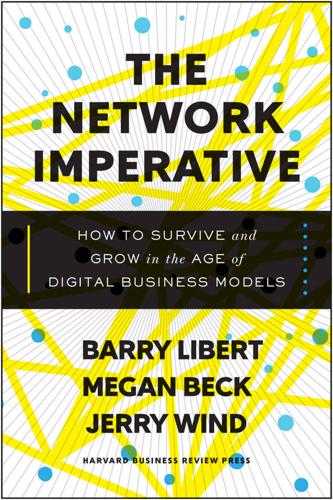
The Network Imperative: How to Survive and Grow in the Age of Digital Business Models
by
Barry Libert
and
Megan Beck
Published 6 Jun 2016
Boisi Professor, Emeritus, the Wharton School “In the new world of crowd sourcing, the sharing economy, and the internet of everything, there is no question that every business is being transformed by a networked world. In The Network Imperative, Libert, Beck, and Wind break down this twenty-first century phenomenon and offer an actionable and effective approach for any business to not only ward off disintermediation, but also to set a path for long-term success.” —MICHAEL DISTEFANO, Senior Vice President and CMO, Korn Ferry; President, Korn Ferry Institute “Networks really are at the heart of our modern economic system. A model spurred by the eponymic GAFA (Google, Amazon, Facebook, Apple) but also encompassing billion-dollar unicorns and all other companies changing our lives through computer technology, The Network Imperative not only reveals the strategic value of networks but also delivers an actionable framework to help industry leaders transform asset-based companies into graph-powered organizations.”
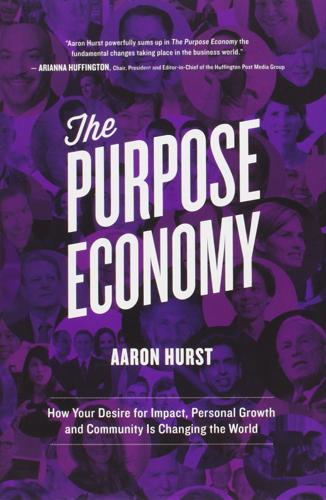
The Purpose Economy: How Your Desire for Impact, Personal Growth and Community Is Changing the World
by
Aaron Hurst
Published 31 Aug 2013
Work Without Managers Debbie is now thinking bigger. Can Mozilla can be a community without managers? How can she create a culture of coaching and support that doesn’t require a top-down hierarchy? How can she build the kind of company that truly serves its community—employees, customers, and investors? A disintermediated workforce is not as radical as it sounds, and is an idea that several companies are experimenting with, most notably Evan Williams’ new company, Medium. Evan wanted to boost creativity from his whole team, solve problems more quickly, spend less time in meetings, speed production, and have the entire team truly understand the business.
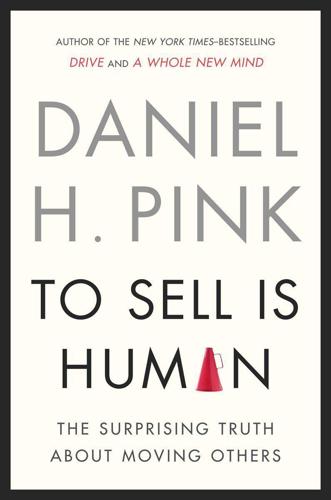
To Sell Is Human: The Surprising Truth About Moving Others
by
Daniel H. Pink
Published 1 Dec 2012
What’s more, the Bureau of Labor Statistics projects that the United States will add nearly two million new sales jobs by 2020. Likewise, the Internet has not had nearly the effect on sales that many predicted. Between 2000 and today, the very period that broadband, smartphones, and e-commerce ascended to disintermediate salespeople and obviate the need for selling, the total number of sales jobs increased and the portion of the U.S. workforce in sales has remained exactly the same: 1 in 9.9 What holds for the United States holds equally for the rest of the world. For example, in Canada, “sales and service occupations”—a broader category than the United States uses—constitute slightly more than 25 percent of the Canadian workforce.
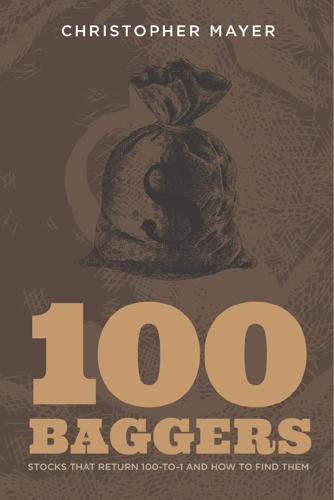
100 Baggers: Stocks That Return 100-To-1 and How to Find Them
by
Christopher W Mayer
Published 21 May 2018
“Generally speaking,” he writes, “stable industries are more conducive to sustainable value creation. Unstable industries present substantial competitive challenges and opportunities.” 126 100-BAGGERS The beverage industry is a stable industry. Trends there unfold slowly over time. Sodas don’t get disintermediated by the Internet. Smartphones, by contrast, constitute a very unstable market. BlackBerry smartphones went from market leader to also-ran status in a few years. Since 100-baggers need time to ripen, Mauboussin’s research indicates you may be better served in industries less susceptible to sweeping changes in the competitive landscape.

Manias, Panics and Crashes: A History of Financial Crises, Sixth Edition
by
Kindleberger, Charles P.
and
Robert Z., Aliber
Published 9 Aug 2011
The document quoted Bagehot, cited the crises of 1825 and 1847, and noted that Britain could no longer act as a lender of last resort; the report recommended that this function be performed by the Bank for International Settlements by the issue of ‘paper gold’, to be called International Certificates.47 The first opportunity to halt the international disintermediation came in May 1931 with the collapse of the Credit Anstalt, the leading Austrian bank. The Austrian central bank had maintained high interest rates to keep money in Vienna which in turn contributed to the softness in the economy and large losses as asset prices declined. The publication of the Credit Anstalt’s statement on 11 May revealed that it had lost 140 million schillings, about three-fourths of its capital.
…
In Britain the foreign secretary Arthur Henderson was attracted to the idea of a loan but Montagu Norman, then the governor of the Bank of England, held that the Bank had ‘already lent quite as much as is entirely convenient’.51 One argument against foreign loans was that the crisis was believed to have been caused by a flight of domestic capital rather than by withdrawals of funds by foreign investors. By 20 July the idea of a loan had been tacitly abandoned, ‘brushed aside as impractical’.52 Instead, the Germans relied on internal measures to halt the disintermediation at home and on a Standstill Agreement, imposed upon reluctant foreign bankers, to halt the external drain. The speculative pressure then turned to Britain. The run began in mid-July 1931, stimulated partly by losses on the Continent, but also fed by the May and Macmillan reports of the large prospective domestic budget deficits and the unexpectedly high estimate of foreign money in London that might be withdrawn.
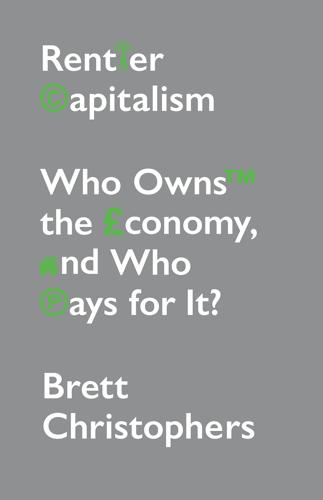
Rentier Capitalism: Who Owns the Economy, and Who Pays for It?
by
Brett Christophers
Published 17 Nov 2020
Financial trading long ago ceased to be a largely tactile, physical, face-to-face activity; it occurs overwhelmingly online, in and through computer networks. To maintain their rent-generating intermediary roles in this changing world, stock exchange operators such as LSEG have had to move with the times or risk rapid disintermediation. Instead of providing a superior physical platform for financial trading, then, exchange operators must provide a superior digital platform; companies’ willingness to continue listing their securities on the London Stock Exchange, and to continue paying handsomely for the privilege, is entirely dependent on the LSEG furnishing an optimal technological trading environment for the world’s major financial institutions.
…
The most satisfactory explanation is that, from the earliest days of the commercial Internet, the UK has offered up a relatively benign and accommodating political, regulatory and legal environment. There have been a few road bumps along the way, but commercial digital platforms have mostly been given relatively free rein to create new markets and disintermediate existing ones – and to do so in the face of growing concerns around, for example, data privacy, labour practices and restraints on competition. When Nikita Malik noted in a 2018 opinion piece that the existing powers and regulations available in the UK to audit and regulate the Internet were ‘unclear’, she was putting it mildly.26 ‘Over a dozen regulators have a remit covering the digital world.
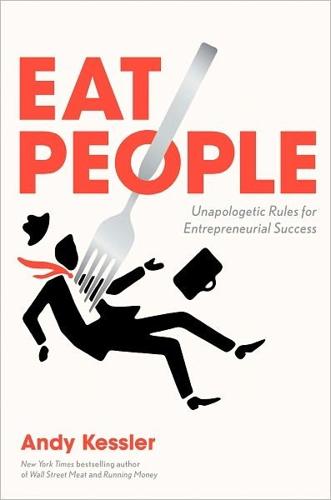
Eat People: And Other Unapologetic Rules for Game-Changing Entrepreneurs
by
Andy Kessler
Published 1 Feb 2011
Because for every stroke of the pen, for every piece of legislation, for every paid-off congressman, there now exists a price umbrella that overvalues what he or any political entrepreneur is doing. Real entrepreneurs, “market entrepreneurs,” recognize the price-to-value gap and jump in. Ignoring legislation, they innovate, disintermediate, compete, stay up all night coding, and offer something better and cheaper until the market starts to shift. Author and Loyola University professor Thomas DiLorenzo defined it best: “A political entrepreneur succeeds primarily by influencing government to subsidize his business or industry, or to enact legislation or regulation that harms his competitors.
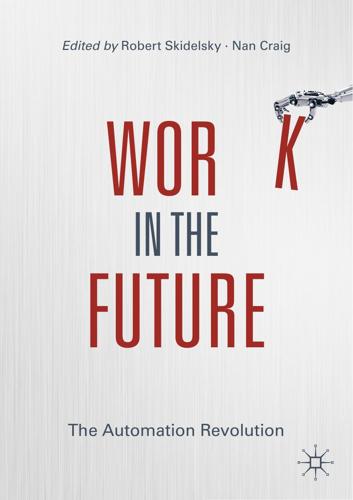
Work in the Future The Automation Revolution-Palgrave MacMillan (2019)
by
Robert Skidelsky Nan Craig
Published 15 Mar 2020
References Farr, C. (2015, October 26). Why Homejoy Failed. Medium. Retrieved from https://backchannel.com/why-homejoy-failed-bb0ab39d901a#.a4l51hejy Goodwin, T. (2015, March 3). The Battle is for the Customer Interface. TechCrunch (blog). Retrieved from http://social.techcrunch.com/2015/03/03/ in-the-age-of-disintermediation-the-battle-is-all-for-the-customer-interface/ Jourdan, A., & Ruwitch, J. (2016, February 18). Uber Losing $1 Billion a Year to Compete in China. Reuters. Retrieved from http://www.reuters.com/article/uber-china-idUSKCN0VR1M9 Jovanovic, B., & Rousseau, P. L. (2005). General Purpose Technologies.

Come and Take It: The Gun Printer's Guide to Thinking Free
by
Cody Wilson
Published 10 Oct 2016
What could we expect with self-replicating, networked, material printers? If man, irrevocably empowered and asserting his unalienable conscience, could dissolve his church, then whither his state? Was ending its domination a matter of mere historical condition? Would it just take a technical disintermediation after all—putting production into the hands of the individual? “Will you have a gun? Will you not have a gun? No one else can decide for you anymore.” That was as comfortable with traditional political reason as I had ever been. “As an Englishman I find this all abhorrent,” said a man seated directly in front of me after the floor had been opened for questions.

Broken Markets: A User's Guide to the Post-Finance Economy
by
Kevin Mellyn
Published 18 Jun 2012
In a world without financial innovation—and, it might be added, financial markets insisting on very high returns on capital—such a regime might have produced a more stable financial system. But the United States had already developed a finance-driven economy in which both governments at all levels and the top tier of corporations had direct access to the capital markets. This process, called by the ugly term “disintermediation,” had become entrenched well before the Basel process. In fact, it was a factor in the embrace of sovereign debt lending by the largest US banks whose core corporate banking franchise had been eroding throughout the 1970s due to competition from the bonds and commercial paper issued by Wall Street firms—a competition that banking systems in other countries did not face to any degree.
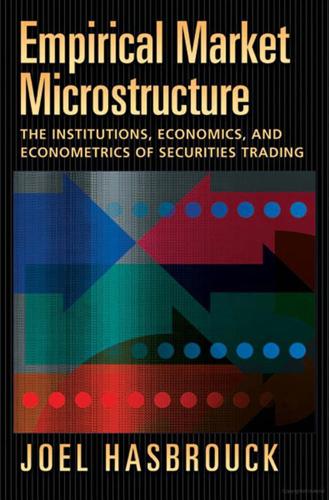
Empirical Market Microstructure: The Institutions, Economics and Econometrics of Securities Trading
by
Joel Hasbrouck
Published 4 Jan 2007
On the other hand, if inventory control is more broadly interpreted as position management, the issues are as pertinent as ever. The underlying concerns of risk and credit exposure, formerly viewed as important mostly (or solely) for dealers, are in fact pertinent for a large number of agents that may, in the course of their trading decisions, act as liquidity suppliers. Finally, although trade has become disintermediated in many markets (such as actively traded equities), dealers remain important in many other markets (bonds, foreign exchange, swaps, etc.). The role they play and how they should be regulated are ongoing concerns of practical interest. 117 12 Limit Order Markets The worldwide proliferation of limit order markets (LOMs) clearly establishes a need for economic and statistical models of these mechanisms.
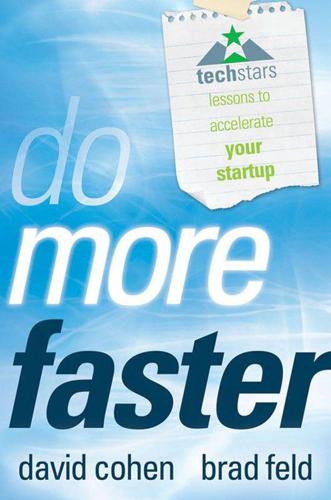
Do More Faster: TechStars Lessons to Accelerate Your Startup
by
Brad Feld
and
David Cohen
Published 18 Oct 2010
Congressman for the second district of Colorado. Ideas are easy to come by. I have had many that I never had time to see through and heard many other good ones from flakes and drifters, but I believe the key to success is focusing on a good idea and implementing it well. In the case of ProFlowers, my idea was to disintermediate the supply chain by sending flowers directly from the grower to the customer, delivering fresher flowers at a better price. From there, it became a matter of focusing on the implementation. I had to invent a system to get the orders to the growers. Since many flower growers were extremely low tech at the time and couldn't be relied upon for Internet access, we created a foolproof way of faxing FedEx labels directly to the growers right on sticky peel-off paper for them to affix to the boxes.
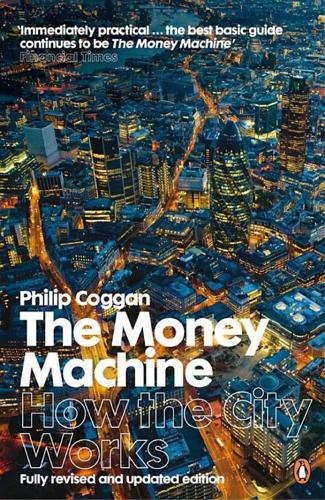
The Money Machine: How the City Works
by
Philip Coggan
Published 1 Jul 2009
For years the channel through which the Bank of England operated to influence the financial system DISCOUNTING The practice of issuing securities at less than their face value. Rather than receiving payment in the form of interest, the holder profits from the difference between the price of the discounted security and its face value DISINTERMEDIATION Process whereby borrowers bypass banks and borrow directly from investment institutions DIVIDEND A payment, representing a proportion of profits, that is made to company shareholders ECGD Export Credit Guarantee Department – government agency which provides trade insurance for exporters ENDOWMENT MORTGAGE Mortgage linked to a life-assurance scheme.

Cogs and Monsters: What Economics Is, and What It Should Be
by
Diane Coyle
Published 11 Oct 2021
In the digital economy, one issue is that GDP is a value-added construct: the intermediate stages of consumption are netted off the final revenues because otherwise there is double-counting: we do not want to count both the flour going into the bread and the bread at the same time. However, this means that the whole process of disintermediation over the last twenty years at least, which is continuing apace with cloud computing and the splitting of supply chains into increasingly specialist activities, is invisible in the GDP statistics. We are netting out all the intermediate stages and somehow the benefits are not appearing in final output.

Immortality, Inc.
by
Chip Walter
Published 7 Jan 2020
The plan to open 50 Health Nucleus centers around the world was no more. Those centers were expensive and burdened by foreign regulatory issues. The way the board saw it, scaling them was not sustainable. Nor would Human Longevity seek any longer to aggressively gather a million integrated genomes—certainly not by 2020. HLI’s new strategy was to disintermediate traditional medicine in the way that Airbnb and Uber had disrupted the hospitality and transportation industries. The current Health Nucleus center in San Diego would remain. But instead of the costly rollout of its own facilities worldwide, HLI began planning partnerships with a variety of institutions: physicians interested in longevity medicine, hospitals and clinics that wanted to prevent or slow the diseases of aging.
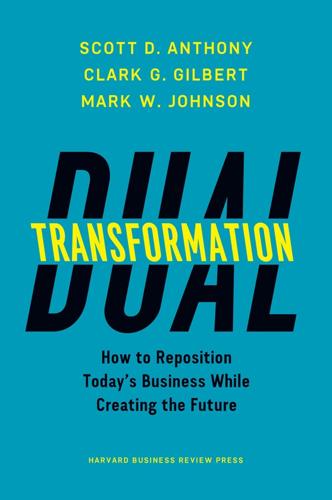
Dual Transformation: How to Reposition Today's Business While Creating the Future
by
Scott D. Anthony
and
Mark W. Johnson
Published 27 Mar 2017
Nestlé and Samsung partnership: Samsung, “Samsung and Nestlé Collaborate on the Internet of Things and Nutrition to Advance Digital Health,” Samsung.com, July 28, 2016, https://news.samsung.com/global/samsung-and-nestle-collaborate-on-the-internet-of-things-and-nutrition-to-advance-digital-health. TechCrunch on platforms: Tom Goodwin, “The Battle Is For The Customer Interface ,” TechCrunch.com, March 3, 2015, https://techcrunch.com/2015/03/03/in-the-age-of-disintermediation-the-battle-is-all-for-the-customer-interface/. Oxford research on job automation: Aviva Hope Rutkin, “Report Suggests Nearly Half of U.S. Jobs Are Vulnerable to Computerization,” Technology Review, September 12, 2013, https://www.technologyreview.com/s/519241/report-suggests-nearly-half-of-us-jobs-are-vulnerable-to-computerization/.
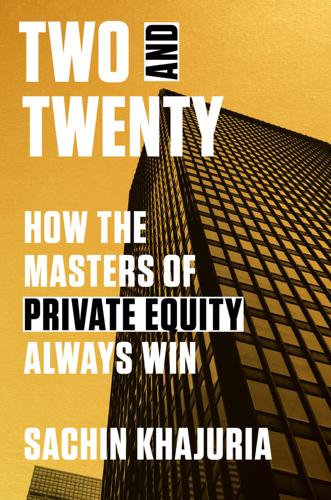
Two and Twenty: How the Masters of Private Equity Always Win
by
Sachin Khajuria
Published 13 Jun 2022
For the lending banks, who did not see such a bold proposal coming, it is also irresistible. Here is a buyer with a multilayered answer to Raptor’s problems, itself a major existing client of many of the lenders, with ample firepower to invest and a track record of swift execution. The family’s support is part of the package, and by disintermediating Wall Street and striking a deal directly, the banks can save themselves perhaps a hundred million dollars in refinancing and advisory fees. That the Firm will charge a one-time fee of ten million dollars for arranging the deal amounts to a rounding error. It seems straightforward for the banks to cancel the pledges and personal guarantees that remain.
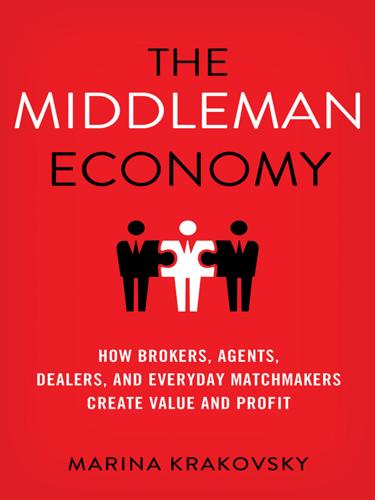
The Middleman Economy: How Brokers, Agents, Dealers, and Everyday Matchmakers Create Value and Profit
by
Marina Krakovsky
Published 14 Sep 2015
Such early conversations probably explain why The Merchant of Venice left such a deep impression when I encountered it in high school: with its multiple merchants, Shakespeare’s most economically oriented play got me thinking more deeply about why some middlemen are admired while others are reviled. Later, living in Silicon Valley during the dot-com boom, I saw my share of headlines about disintermediation—and sensed that the elimination of middlemen was more wishful thinking than economic reality. The rise of companies like Airbnb and Uber in recent years has made it clear to me that the Internet was helping make middlemen more important than ever. The economist Kay-Yut Chen, with whom I had the privilege to collaborate on Secrets of the Moneylab, was an inspiration as well.
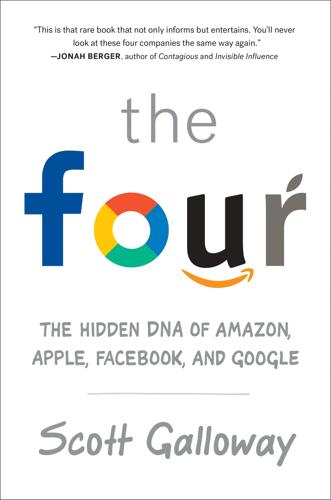
The Four: How Amazon, Apple, Facebook, and Google Divided and Conquered the World
by
Scott Galloway
Published 2 Oct 2017
As if he sat at a lab table in the R&D department at Apple headquarters in Cupertino and soldered chips on a tiny motherboard . . . until boom! he gave the world the iPod. Actually, that was Steve Wozniak with the Apple 1 a quarter century before. Steve Jobs was a genius—but his gifts lay elsewhere. And nowhere was that genius more visible than when business experts everywhere were proclaiming the “disintermediation” of tech—the disappearance of the physical distribution and retail channels as they were replaced by the virtualization of e-commerce. Jobs understood, as none of his peers did, that whereas content, even commodity products, might be sold online, if you wanted to sell electronics hardware as premium-priced luxury items, you had to sell them like other luxury items.

Dogfight: How Apple and Google Went to War and Started a Revolution
by
Fred Vogelstein
Published 12 Nov 2013
“Google’s vision of Android is Microsoft’s vision of owning the operating system of every PC,” a platform monopoly, former Verizon CEO Ivan Seidenberg told author Ken Auletta. “Guys like me want to make sure that there is a distribution of platforms and devices. Is it in Google’s interest to disintermediate us? Yeah.” * * * When Rubin and the Android team were done dealing with the initial shock of how good the iPhone was, little drama surrounded what needed to be done. Rubin is at his core a start-up CEO—messianically convinced that his path is the best one regardless of whether people and circumstance agree with him.
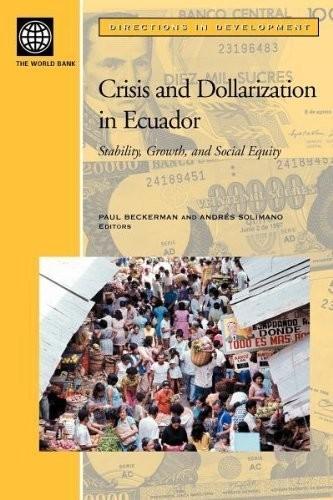
Crisis and Dollarization in Ecuador: Stability, Growth, and Social Equity
by
Paul Ely Beckerman
and
Andrés Solimano
Published 30 Apr 2002
The president’s Democracia Popular Party, although the largest in the Congress, had far less than a majority of the seats in the Congress and relied for support on other parties. The next largest party, the Partido Social Cristiano, opposed tax reform generally but was willing to substitute the transactions tax for the income tax. Although it proved an effective revenue source during 1999 and 2000, the transactions tax encouraged financial disintermediation and set an added incentive for deposit withdrawals at a moment when the banks were already in severe crisis. B. The Deepening Crisis, 1999 In February 1999 the Central Bank floated the exchange rate to limit international-reserve loss.23 Because the 1999 budget incorporated an exchange-rate assumption that the float would have made implausible, the Central Bank delayed the float, at a substantial cost in reserve loss, until the moment the Congress approved the budget.

How to Speak Money: What the Money People Say--And What It Really Means
by
John Lanchester
Published 5 Oct 2014
But as the world is getting flatter and more digitized, the prospect for what once were comfortable and secure means of making a living is much bleaker. We look ahead at the prospect of ferocious competition, remorseless downward pressure on pay, the constant prospect of outsourcing, and the incessant press of technological change threatening to disintermediate and—to use the cant term beloved of Silicon Valley—“disrupt” traditional forms of employment. Flat living standards, flat median income, the disappearance of secure employment. We are told, in the title of a lively recent book by Tyler Cowen, that “average is over.” But most of us in our hearts know that in most important aspects, we are average.
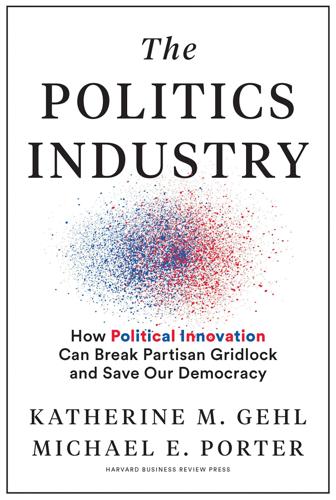
The Politics Industry: How Political Innovation Can Break Partisan Gridlock and Save Our Democracy
by
Katherine M. Gehl
and
Michael E. Porter
Published 14 Sep 2020
Many now ignore, mistrust, or even detest it.18 DISRUPTIVE NEW MEDIA: These new channels, which include social media echo chambers, content aggregators, online forums, and the ever-evolving niche blogosphere, is as powerful and addictive as it is rife with ethical and influence issues on an election-tipping scale. Many of the new media players—Facebook, YouTube, Twitter, and the like—are still far younger than mainstream platforms and unregulated, albeit incredibly powerful as avenues for information and influence. Clearly we live in a dangerous era of disintermediation and confusion—an era arising in part from a sickly mainstream media’s scrambling to find a viable viewership and revenue model for the twenty-first century. . . . The points of intersection among today’s channels now appear to outnumber the once-sacred separations. What constitutes news and what constitutes advertising—or, worse, propaganda—is at times a crapshoot to decipher, especially online.

Skin in the Game: Hidden Asymmetries in Daily Life
by
Nassim Nicholas Taleb
Published 20 Feb 2018
The convexity is implanted in Semitic vocabulary: mishnah, which in Hebrew refers to the pre-Talmudic compilation of oral tradition, means “doubling”; midrash itself may also be related to stamping and repeated grinding, and has a counterpart in the madrassa of the children of Ishmael. Books should be organized the way the reader reads, or wants to read, and according to how deep the author wants to go into a topic, not to make life easy for the critics to write reviews. Book reviewers are bad middlemen; they are currently in the process of being disintermediated just like taxi companies (what some call Uberized). How? There is, here again, a skin-in-the-game problem: a conflict of interest between professional reviewers who think they ought to decide how books should be written, and genuine readers who actually read books because they like to read books.
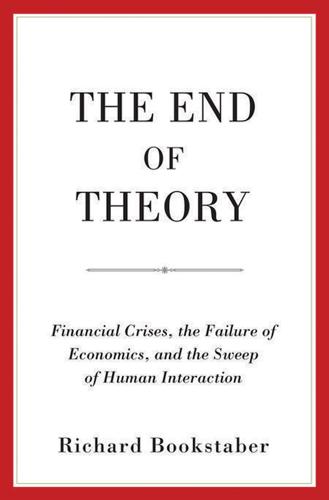
The End of Theory: Financial Crises, the Failure of Economics, and the Sweep of Human Interaction
by
Richard Bookstaber
Published 1 May 2017
These extreme prices occurred for somewhat arcane reasons, but those really were the prices at which you would have had to sell or buy at that moment. They wouldn’t seem to be related, but the Flash Crash had echoes of the 1987 crash. The Flash Crash was another crisis of liquidity, one in which liquidity demand came in faster than the supply—the same sort of time disintermediation as occurred in 1987. The difference was in the available computer power. With the wonders of high-frequency trading, this crash occurred in minutes rather than over the course of hours. There has, not surprisingly, been a lot of ink spilled over the Flash Crash, with various congressional hearings and a months-in-the-making report from the Securities and Exchange Commission and the Commodity Futures Trading Commission (the SEC for the equity markets, the CFTC for the futures).3 These agencies were caught flat-footed because they had no access to the trade-by-trade or order-by-order data, nor did they have the hardware to analyze the millions of data points even if they had had access.
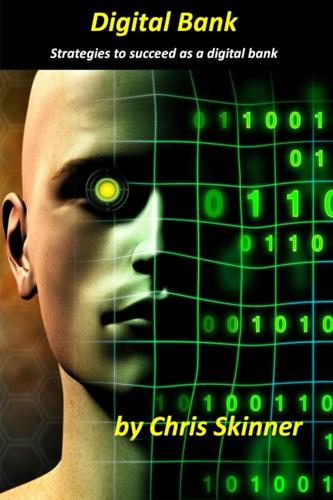
Digital Bank: Strategies for Launching or Becoming a Digital Bank
by
Chris Skinner
Published 27 Aug 2013
Banks should give thanks to Google, Apple and Facebook for enabling our customers to create and share anything at anytime with anyone. Anyone can create anything and, if it’s popular, it is valuable. By way of example, software and information design companies like you (talking about Polaris et al) are now able to design and create anything for banking. In fact, you have the ability to disintermediate IT. You can design new services for banks, you can create and you can put it out there before we, as banks, are even thinking about it. The biggest challenge then is: How to convert the business? How to persuade the bank to change? How to get the organisation to move? How to make the elephant dance?

No Ordinary Disruption: The Four Global Forces Breaking All the Trends
by
Richard Dobbs
and
James Manyika
Published 12 May 2015
This mind-set of traditional players places a higher premium on striking smart partnerships. In emerging markets, mobile reach often exceeds banking access. In countries like Argentina, Colombia, and Ukraine, for example, virtually everybody has a mobile phone, but less than half the population has bank accounts. As messaging apps threaten to disintermediate their core business, telecommunication companies have partnered with banks to offer new payment channels. In Kenya, Safaricom, East Africa’s largest mobile telecommunications provider, partnered with Commercial Bank of Africa to launch m-pesa, Afric’a first SMS-based money transfer service, in 2007.
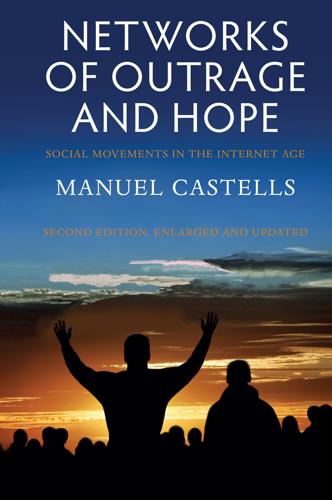
Networks of Outrage and Hope: Social Movements in the Internet Age
by
Manuel Castells
Published 19 Aug 2012
In this sense, it is closer to the tradition of populist movements that ultimately become political actors on the basis of a frontal challenge to a delegitimized political system. Yet, M5S is a most revealing symptom of the crisis of representative democracy in Italy and in Europe, and it also shows the potential of the Internet as an organizing and mobilizing medium with the power to disintermediate traditional forms of political action dependent on party machines and the control of institutions through manipulated electoral systems. It is important to observe that, in Italy, in the midst of the economic and political crises, there were no autonomous social movements similar to those taking place in Spain, Portugal, or Greece.

The Age of Stagnation: Why Perpetual Growth Is Unattainable and the Global Economy Is in Peril
by
Satyajit Das
Published 9 Feb 2016
Lyft's slogan is “Your Friend with a Car.” Airbnb and Feastly urge hosts and guests to share photos and communicate to build trust. Some things remain the same. Researchers have found that, accounting for other variables, Airbnb guests pay black hosts less than they do white ones.8 The sharing economy, in reality, relies on disintermediating existing businesses and minimizing regulatory costs. Amateur chauffeurs, chefs, and personal assistants now perform, at a lower cost, work once undertaken by full-time professionals. Airbnb, Lyft, and others do not always comply with regulations designed to ensure a minimum level of skill, standard of performance, safety and security, and insurance coverage.

How to Fail: Everything I’ve Ever Learned From Things Going Wrong
by
Elizabeth Day
Published 3 Apr 2019
But that is hard to do in a hyper-connected world that always seems more perfect for other people. Social media has been an undoubted force for good in many areas but it comes with obvious difficulties too. A platform such as Instagram enables us to follow almost any celebrity we choose. As a result, we’re given direct, supposedly disintermediated access, to Taylor Swift’s pet cats or Selena Gomez’s friend’s twenty-sixth birthday party or Kourtney Kardashian’s summer spent swanning around on a yacht in Italy. An intimacy is established, however constructed that intimacy might be. We begin to feel closer to said famous people, as if for all their wealth and success and private jets, they are ‘just one of us’ at heart.

Nothing but Net: 10 Timeless Stock-Picking Lessons From One of Wall Street’s Top Tech Analysts
by
Mark Mahaney
Published 9 Nov 2021
Others have succeeded quite well, including Amazon Prime (its express shipping service, launched in 2005, that now has over 200 million subscribers worldwide), Amazon Subscribe & Save (an offering launched in 2007 that enables automatic reordering of a variety of household products), and one of my personal favorites—the Amazon Kindle (its e-reader device, which was launched in 2007 and became the category leader and helped the company hedge against the digital disintermediation of its physical book retail business). For avid readers, Amazon Kindles have been a heaven-sent gift. The ability to download and access almost any book at any time was a huge breakthrough. The first-generation Kindles may have been kludgy and awkward, but they removed friction. They eliminated time between discovering a book and reading it.
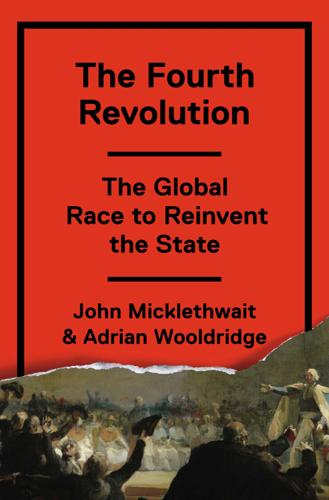
The Fourth Revolution: The Global Race to Reinvent the State
by
John Micklethwait
and
Adrian Wooldridge
Published 14 May 2014
There are equally powerful challenges from below—from breakaway nations, such as the Catalans and the Scots, from Indian states, from Chinese provinces, from American city mayors. They are trying to reclaim powers they surrendered to national governments during the great age of centralization. There are also a host of what Moisés Naím calls “micro-powers,” everything from NGOs to lobbyists, which are disintermediating traditional politics. The Internet is lowering barriers, making it easier to organize and agitate; in a world where people are now used to choosing and voting with a click, parliamentary democracy, where elections happen only every few years, looks increasingly anachronistic. Douglas Carswell, a British member of Parliament, likens traditional politics to HMV, a chain of British record shops that went bust, in a world where people are used to buying music through iTunes.9 The biggest challenge from below comes from the voters themselves.
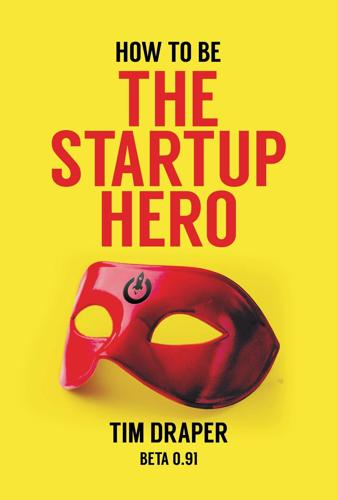
How to Be the Startup Hero: A Guide and Textbook for Entrepreneurs and Aspiring Entrepreneurs
by
Tim Draper
Published 18 Dec 2017
And progress is not linear. Progress is accelerating. Whereas last year, we could do about two-thirds of what we can do today with equivalently priced equipment, 15 years ago we could do about one-one thousandth of what we can do today. We have to anticipate progress. For job seekers, or for those who will be disintermediated in the coming wave of technological change, I recommend projecting out and imagining what the world will look like 2, 3, 4, or more years into the future and decide what will be your highest and best use to society then. If we are to think about what kind of job to get (or to create) today, we have to think about what trends are relevant and what might be an important marketplace in the future.

Been There, Done That: A Rousing History of Sex
by
Rachel Feltman
Published 14 May 2022
Christine Foster, “Punch-Card Love,” Stanford Magazine, March 2007, https://stanfordmag.org/contents/punch-card-love; Alicia M. Chen, “Operation Match,” Harvard Crimson, February 16, 2018, www.thecrimson.com/article/2018/2/16/operation-match. 35. Michael Rosenfeld, Reuben J. Thomas, and Sonia Hausen, “Disintermediating Your Friends: How Online Dating in the United States Displaces Other Ways of Meeting,” Proceedings of the National Academy of Sciences of the United States of America 116, no. 36 (July 15, 2019), https://doi.org/10.1073/pnas.1908630116. 36. Eli J. Finkel et al., “Online Dating,” Psychological Science in the Public Interest 13, no. 1 (2012): 3–66, https://doi.org/10.1177/1529100612436522. 37.
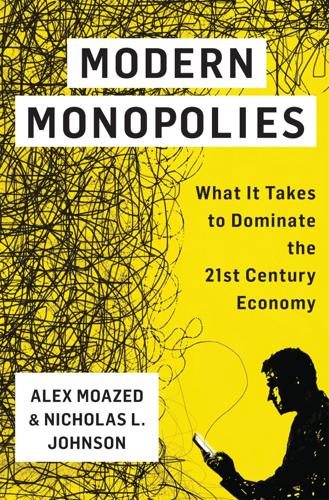
Modern Monopolies: What It Takes to Dominate the 21st Century Economy
by
Alex Moazed
and
Nicholas L. Johnson
Published 30 May 2016
As processing speeds radically increased and transaction costs fell at the end of the twentieth century, some value chains began to break up. With lower transaction costs, there was less need for vertically integrated organizations. Smaller, more agile competitors started to outmaneuver their larger, older rivals. A smaller competitor could attack one piece of an incumbent company’s value chain and disintermediate it or provide the same quality offering at a much lower price (see Figure 2.5). Figure 2.5. As transaction costs fell, value chains broke up, and smaller competitors could attack one component of your business. This is exactly what happened to the encyclopedia industry. In the days of large, leather-bound books, the encyclopedia business was dependent on large sales forces in order to sell its product.

The Singularity Is Near: When Humans Transcend Biology
by
Ray Kurzweil
Published 14 Jul 2005
Yes, it's true that historically low unemployment, high asset values, economic growth, and other such factors are inflationary, but these factors are offset by the exponential trends in the price-performance of all information-based technologies: computation, memory, communications, biotechnology, miniaturization, and even the overall rate of technical progress. These technologies deeply affect all industries. We are also undergoing massive disintermediation in the channels of distribution through the Web and other new communication technologies, as well as escalating efficiencies in operations and administration. Since the information industry is becoming increasingly influential in all sectors of the economy, we are seeing the increasing impact of the IT industry's extraordinary deflation rates.
…
Despite dramatic mood swings on Wall Street, the extraordinary values ascribed to so-called e-companies during the 1990s boom era reflected a valid perception: the business models that have sustained businesses for decades are in the early phases of a radical transformation. New models based on direct personalized communication with the customer will transform every industry, resulting in massive disintermediation of the middle layers that have traditionally separated the customer from the ultimate source of products and services. There is, however, a pace to all revolutions, and the investments and stock market valuations in this area expanded way beyond the early phases of this economic S-curve. The boom-and-bust cycle in these information technologies was strictly a capital-markets (stock-value) phenomenon.

Future Files: A Brief History of the Next 50 Years
by
Richard Watson
Published 1 Jan 2008
Indeed, the insurance business will grow significantly in the future in response to new risks and fears, although quite what companies and individuals will be insuring themselves against is far from clear. Equally, while banks and credit-card companies will be damaged by the digitization of cash and the increase in mobile payments, micro-payments, pre-pay and contactless payments, I don’t foresee banks being disintermediated entirely. They will hold on to larger transactions simply because big-ticket payments require risk management and default and dispute systems, which are generally too expensive and complicated from a compliance point of view for non-banks. Nevertheless, digital money will turn parts of the financial services industry on its head because the banks and credit-card companies will no longer be in sole charge of checkbooks, credit cards, ATMs and branches.
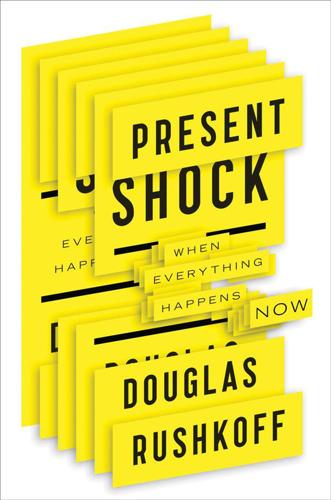
Present Shock: When Everything Happens Now
by
Douglas Rushkoff
Published 21 Mar 2013
Consumers no longer understand why they should settle for frozen bacon during certain parts of the year, and pork suppliers have learned how to accommodate the demand for constant flow. With no need for their ability to translate flow into storage and back again, commodity traders left the pork bellies pit, and the oldest existing livestock futures contract was delisted. Futures traders became disintermediated by a marketplace looking for direct access to an always-on reality. So while local merchants in depressed European economies are abandoning storage-based euros because it is too expensive for them to use, the pork industry stopped using futures because their focus on freshness and flow was no longer compatible with a spring-loaded strategy.

Winners Take All: The Elite Charade of Changing the World
by
Anand Giridharadas
Published 27 Aug 2018
Thus in the Soros meeting, when the talk turned to farm supply chains in a remote region of India, the lingua franca was business language. It was said that there were too many intermediaries in the supply chain: too many traders and brokers and such between the Indian farmer and the Indian dinner plate. The corporate answer was to “disintermediate.” What did not appear to cross anyone’s mind on West 57th Street was the possibility of being wrong about rural India. What if the intermediaries in that area tended to be women, making the job inefficient but also a beachhead of social progress? What if the intermediaries ensured that fresh produce ended up in villages and hamlets along the route to the cities, whereas large trucks would bypass them and increase their reliance on processed food?
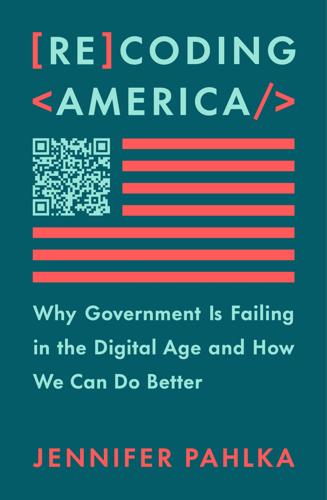
Recoding America: Why Government Is Failing in the Digital Age and How We Can Do Better
by
Jennifer Pahlka
Published 12 Jun 2023
They hand it off to people many rungs down the ladder, or to companies hired to do it for them. At times it almost seems that status in government is dependent on how distant one can be from the implementation of policy. There is a debilitating distance, too, between the people creating government systems and the people who use them. The digital revolution has disintermediated many sectors of our economy and society; you can now buy tickets from an airline instead of going through a travel agent, for instance, or get in touch directly with artists selling their wares on Etsy. But in government, countless bureaucratic processes and procedures—most notably, lengthy and burdensome procurement requirements—have had the opposite effect, putting ever more layers between the people creating the services and those who use them.

Remix: Making Art and Commerce Thrive in the Hybrid Economy
by
Lawrence Lessig
Published 2 Jan 2009
Sony Corp. v. Universal City Studios, 464 U.S. 417 (1984). 5. See Julie Niederhoff, “Video Rental Developments and the Supply Chain: Netflix, Inc.,” Washington University, St. Louis (2002); Michael K. Mills and Jon Silver, “Analysing the Effect of Digital Technology on Channel Strategy, Power and Disintermediation in the Home Video Market: The Demise of the Video Store?” Video Technology magazine (February 2005); IRS, “Retail Industry ATG— Chapter 3: Examination Techniques for Specific Industries (Video/DVD Rental Business),” Small Business and Self-Employed One-Stop Resource, August 2005, available at link #50; “Videotape Rental—Background and Development,” All Business, available at link #51; “Videotape Rental— Current Conditions,” All Business, available at link #52. 80706 i-xxiv 001-328 r4nk.indd 307 8/12/08 1:56:23 AM 308 NO T E S 6.
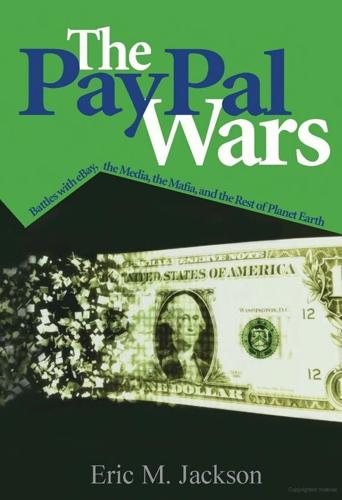
The Paypal Wars: Battles With Ebay, the Media, the Mafia, and the Rest of Planet Earth
by
Eric M. Jackson
Published 15 Jan 2004
Besides once again demonstrating eBay’s ability to flex its muscles whenever a competitor threatened its dominance, it also marked the first time that eBay controlled a trading platform that limited a seller’s payment options. Half.com collected a credit card payment directly from the buyer and told the seller to ship the item with the knowledge that the seller would later receive a check from Half. This disintermediation of the buyer and seller froze PayPal out of the process. If it wanted, eBay could make Billpoint the mandatory payment processor for Half.com, compelling all of Half’s buyers and sellers to open Billpoint accounts while giving PayPal no chance to compete. Fortunately for us, the same slow development cycle that prevented eBay from building its own version of Half.com also impeded Billpoint.
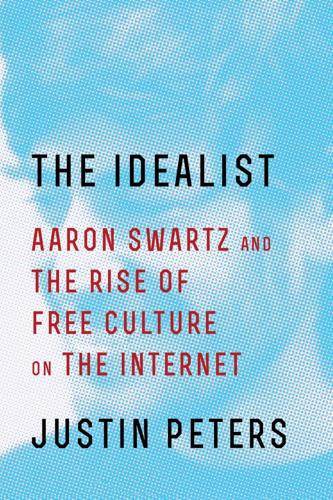
The Idealist: Aaron Swartz and the Rise of Free Culture on the Internet
by
Justin Peters
Published 11 Feb 2013
Today, the Internet is an information smorgasbord, an endless buffet of data sets, research papers, essays, news articles, instruction manuals, annual reports, and myriad other materials that the curious soul can use for edification and self-improvement. But much of this content is inaccessible, consigned to subscription databases or hidden behind paywalls or subject to other impediments. The Internet has simultaneously shrunk and expanded the world with its hyperlinked data and its decentralized, disintermediated communications. And it has consistently confused and frustrated legislators and capitalists who don’t understand why so many users are so insistent on flouting The Rules. Aaron Swartz broke The Rules, consistently and creatively. He did not always explain why, but he broke them, and now his death has led many people to question those rules and wonder why they seem so incongruous with the realities of the digital era, in which information has become untethered to physical formats and it takes only moments for news and legend to permeate the cultural brain.
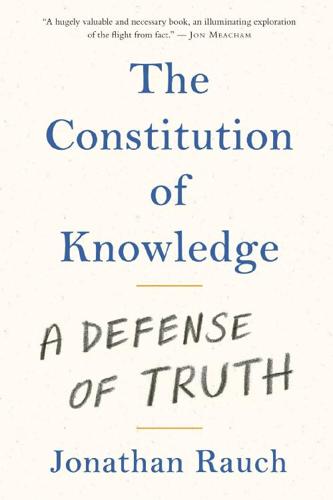
The Constitution of Knowledge: A Defense of Truth
by
Jonathan Rauch
Published 21 Jun 2021
The problem was that most readers would not pay enough to cover the costs of producing news, or at least not as much news as the public had grown to expect. (As the digital-media pundit Frederic Filloux put it, “You can’t sell news for what it costs to make.”) The business model for reality-based journalism had been to use news to attract audiences and then sell those audiences to advertisers. When disintermediation demolished that model by moving advertising to Google and Facebook and Craigslist, news-gathering became a money-losing proposition. Reality-based news outlets began shrinking and shutting in droves. By 2018 newspaper circulation in the United States had fallen to its lowest level since 1940, the first year with available data.
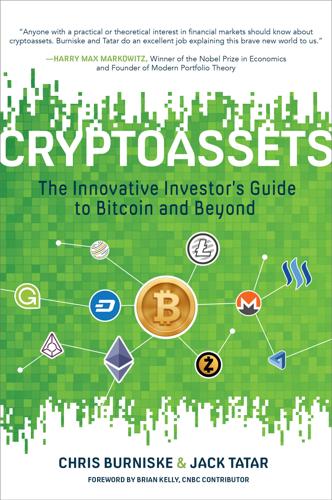
Cryptoassets: The Innovative Investor's Guide to Bitcoin and Beyond: The Innovative Investor's Guide to Bitcoin and Beyond
by
Chris Burniske
and
Jack Tatar
Published 19 Oct 2017
To quote a May 2016 article in Harvard Business Review by Don and Alex Tapscott: “The technology most likely to change the next decade of business is not the social web, big data, the cloud, robotics, or even artificial intelligence. It’s the blockchain, the technology behind digital currencies like bitcoin.”7 Incumbents are sensing the inherent creative destruction, especially within the financial services sector, understanding that winners will grow new markets and feast off the disintermediated. Many startups are eyeing these middlemen with the oft-flickering thought that has been credited to Amazon’s Jeff Bezos: “Your fat margins are my opportunity.”8 If financial incumbents don’t embrace the technology themselves, Bitcoin and blockchain technology could do to banks what cell phones did to telephone poles.

Don't Be Evil: How Big Tech Betrayed Its Founding Principles--And All of US
by
Rana Foroohar
Published 5 Nov 2019
Newspapers and magazines have been hollowed out by Google and Facebook, which in 2018 together took 60 percent of the Internet advertising market.4 This is a key reason for the shuttering of some 1,800 newspapers between 2004 and 2018, a process that has left 200 counties with no paper at all,5 restricting the supply of reliable information that is the oxygen of democracy. And given that digital advertising surpassed TV ads in 2017, it’s clear that TV news will be the next to go.6 While cable news may have gotten a “Trump bump” in recent years, the longer term trend line is clear—TV will ultimately be disintermediated by Big Tech just the way print media has been. But the trouble with Big Tech isn’t just an economic and business issue; it has political and cognitive implications as well. Often, these trends are written about in isolation, but in fact they are deeply intertwined. In this book, my goal is to connect the dots—to tell the whole story, which is far bigger than the sum of its parts.
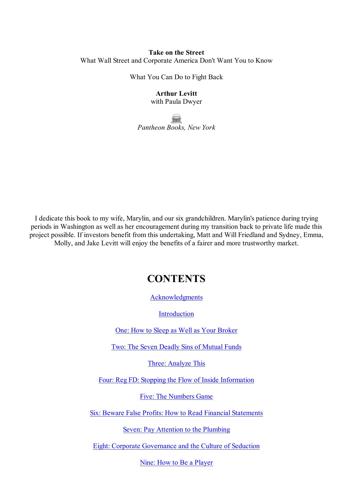
file:///C:/Documents%20and%...
by
vpavan
Remember earlier when I said that the NYSE is much like an auction, and that Nasdaq resembles a flea market? Well, ECNs are akin to eBay, the Internet auction company that lets buyers and sellers meet directly in cyberspace. ECNs are cheaper because they are designed to cut out the middlemen. This is what the fancy term "disintermediation" means. Investors, through their brokers, send ECNs their orders, and within seconds they appear on the ECN's screen, along with many others'. The ECNs are transparent because they aren't looking to hide orders, or to trade on the knowledge gained from an advance peek at orders, as middlemen sometimes do.

You've Been Played: How Corporations, Governments, and Schools Use Games to Control Us All
by
Adrian Hon
Published 14 Sep 2022
This means that a charismatic technology does not even need to be present or possessed to have effects.”34 It didn’t matter that the OLPC’s specifications were disappointing, or that it lacked the originally charming hand crank that would recharge its battery, or that software updates would regularly delete children’s data. The OLPC’s charisma transcended such material concerns through its promise to transform education for the world by literally airdropping millions of cheap laptops around the world. These laptops would disintermediate teachers from the educational process, allowing children to achieve their full potential, just in the same way that the OLPC’s founders and funders reached their own potential: by learning how to programme computers at home. Ames calls this “nostalgic design”: “Key features of this laptop—focused on play, freedom, and connectivity—were based on how a number of OLPC developers nostalgically remembered their own (often privileged and idiosyncratic) childhoods rather than on contemporary childhoods in the Global South.

Boom: Bubbles and the End of Stagnation
by
Byrne Hobart
and
Tobias Huber
Published 29 Oct 2024
In recent years, the effect of taxes on R&D has become harder to measure because globalization has made it easier for companies to earn their profits in jurisdictions where taxes are low. Today, the biggest tech companies invest heavily in R&D because the markets adjacent to their core businesses change so quickly. A company that dominates, say, search but ignores what’s happening in smartphones could easily find itself disintermediated. 240 This term was applied to several companies, partly because of the publication of a 1934 book, Merchants of Death, covering the history of the arms industry. Perhaps because Du Pont was not purely a weapons company—its explosives were also used for mining, and over time chemicals came to dominate gunpowder as a source of revenue—the criticism stung.

Atrocity Archives
by
Stross, Charles
Published 13 Jan 2004
A fairly simple circuit is inscribed around the radius and ulna and the fingertips are ignited. What it does is a limited invocation that results in the bearer becoming invisible. In effect. There are variations, like the inversion laser--stick a phase-conjugate mirror on the base and it makes a serious mess of whatever the hand's pointed at--but the original use of the hand is as a disintermediating tool for observer/subject interactions. Or so Eugene Wigner insisted. How many people have you got?" The airlock door is cycling: Alan crouches, gun levelled on the door. He waves me off to one side impatiently. It's Howe. No luminous worms behind his face plate; he hefts a lumpy, misshapen sack and my basilisk gun as he steps through the door.
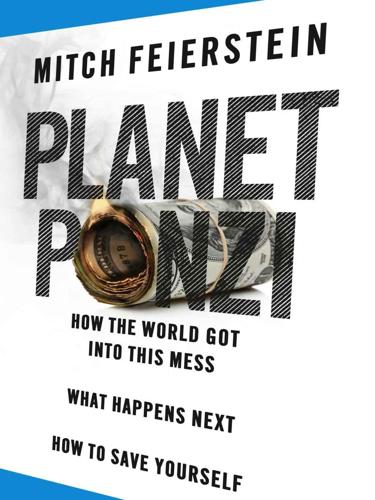
Planet Ponzi
by
Mitch Feierstein
Published 2 Feb 2012
First, the advent of floating exchange rates in 1971 had gradually led to the dismantling of international controls on the movement of capital. As capital started to become ever more mobile, Wall Street firms were ideally placed to skim a little froth from the river of money as it passed on through.2 Secondly, Wall Street had perfected the art of ‘disintermediation.’ The term is ugly and obscure, but its meaning is startlingly simple. In the old days, if large borrowers—industrial companies, for example—wanted to borrow money, they were, on the whole, obliged to get it from banks. Banks, for their part, acted as middlemen: taking money on deposit from investors, lending it on, making a spread.
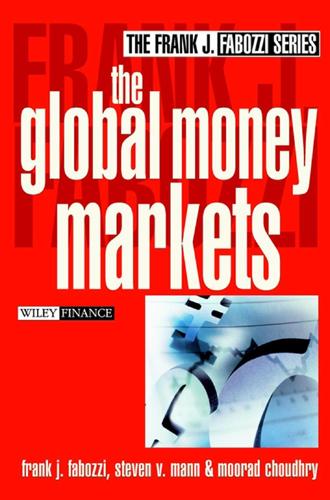
The Global Money Markets
by
Frank J. Fabozzi
,
Steven V. Mann
and
Moorad Choudhry
Published 14 Jul 2002
Bankers acceptances have declined in importance in recent years in favor of other forms of financing. Exhibit 6.8 presents the total amount of bankers acceptances outstanding in billions of dollars each year for the period 1980-2000. There are several reasons that account for this decline. First, the rise in financial disintermediation has reduced corporations’ dependence on bank financing in that they now have access to wider range of funding options (e.g., commercial paper). Second, the vicious circle of low liquidity leads to less issuance and so on. Third, in July 1984, the Federal Reserve discontinued the use of bankers acceptances as collateral for repurchase agreements when conducting open market operations.3 The Creation of a Bankers Acceptance The most efficient way to explain the creation of a bankers acceptance is by an illustration.

The Economics of Enough: How to Run the Economy as if the Future Matters
by
Diane Coyle
Published 21 Feb 2011
Different genres emerged, and record companies became big business. The technology has moved on again. The Internet has made the cost of distributing music digitally essentially free. But artists still want to make a living—or preferably a fortune—and the record companies and some musicians are even more upset about being disintermediated. U2’s lead singer Bono sounded off about it in the New York Times: “A decade’s worth of music file-sharing and swiping has made clear that the people it hurts are the creators.”13 Is this true? They (or their record companies) do have to cover some high upfront costs. Marketing to turn an artist into a big name and publicize new albums is expensive, and there are costs in the initial recording.

The Age of Entitlement: America Since the Sixties
by
Christopher Caldwell
Published 21 Jan 2020
In hundreds of cities across the country, Limbaugh’s most ardent listeners would spend their lunch hours in barrooms and diners that carried the show. “Rush rooms” were harbingers of internet-age sociability. It was not enough to follow politics in your community—now the politics you followed were your community. Already in the 1970s, as noted earlier, Our Bodies, Ourselves had been an exercise in anti-authoritarian “disintermediation.” Women whose doctors wouldn’t give them the whole truth could assemble it from bits and pieces available somewhere in the wider world. By the 1990s, few professions were as walled off from their clienteles as gynecology had been two decades before. But all professions were on watch. The Reaganite hostility toward government agencies—the belief that they were full of time-servers, featherbedders, rent-seekers—fed into a wider cynicism toward retailers, agents, and middlemen of all kinds.

Fire and Fury: Inside the Trump White House
by
Michael Wolff
Published 5 Jan 2018
But Flynn had become quite a maniacal partisan, part of the Trump traveling road show, one of the ranters and ravers opening Trump rallies. This all-in enthusiasm and loyalty had helped win him access to Trump’s ear, into which he poured his anti-intelligence-community theories. During the early part of the transition, when Bannon and Kushner had seemed joined at the hip, this was part of their bond: an effort to disintermediate Flynn and his often problematic message. A subtext in the White House estimation of Flynn, slyly insinuated by Bannon, was that Defense Secretary Mattis was a four-star general and Flynn but a three-star. “I like Flynn, he reminds me of my uncles,” said Bannon. “But that’s the problem: he reminds me of my uncles.”

Machine, Platform, Crowd: Harnessing Our Digital Future
by
Andrew McAfee
and
Erik Brynjolfsson
Published 26 Jun 2017
cid=AEN20160223003651315. 6 “I kind of felt powerless”: Jordan Novet, “Go Board Game Champion Lee Sedol Apologizes for Losing to Google’s AI,” VentureBeat, March 12, 2016, http://venturebeat.com/2016/03/12/go-board-game-champion-lee-sedol-apologizes-for-losing-to-googles-ai. 6 “Uber, the world’s largest taxi company”: Tom Goodwin, “The Battle Is for the Customer Interface,” TechCrunch, March 3, 2015, https://techcrunch.com/2015/03/03/in-the-age-of-disintermediation-the-battle-is-all-for-the-customer-interface. 7 over a million people: Ellen Huet, “Uber Says It’s Doing 1 Million Rides per Day, 140 Million in the Last Year,” Forbes, December 17, 2014, http://www.forbes.com/sites/ellenhuet/2014/12/17/uber-says-its-doing-1-million-rides-per-day-140-million-in-last-year. 7 one of 300 cities in 60 countries: Anne Freier, “Uber Usage Statistics and Revenue,” Business of Apps, September 14, 2015, http://www.businessofapps.com/uber-usage-statistics-and-revenue. 7 640,000 different lodging options: Chip Conley, “Airbnb Open: What I Learned from You,” Airbnb (blog), November 25, 2014, http://blog.airbnb.com/airbnb-open-chips-takeaways. 7 191 countries: Airbnb, “Airbnb Summer Travel Report: 2015,” accessed January 11, 2017, http://blog.airbnb.com/wp-content/uploads/2015/09/Airbnb-Summer-Travel-Report-1.pdf. 7 a yurt in Mongolia: Airbnb, “Nomadic Life in the Countryside,” accessed January 11, 2017, https://www.airbnb.com/rooms/13512229?
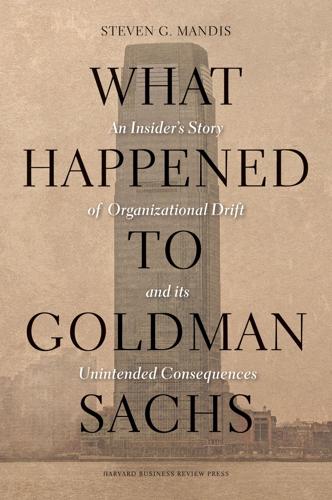
What Happened to Goldman Sachs: An Insider's Story of Organizational Drift and Its Unintended Consequences
by
Steven G. Mandis
Published 9 Sep 2013
It wasn’t only Goldman’s US competitors; foreign banks were buying US banks (Deutsche Bank bought Bankers Trust/Alex Brown, UBS bought Warburg and Dillon Read, etc.). Goldman also faced competition from the advent of electronic execution and alternative trading systems, lowering commissions. It also faced disintermediation by hedge funds, alternative asset management companies, and other unregulated firms in providing or raising capital. Goldman also began facing stiff competition in attracting and retaining employees. “We live in a competitive environment,” said David Viniar during his tenure. “We still have people leaving for multiyear offers away from us, some from our competitors, some from other industry participants.”47 Goldman’s client base also began to change.
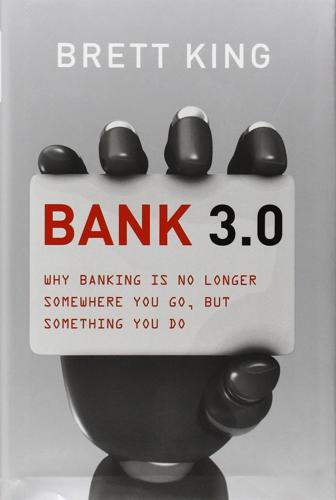
Bank 3.0: Why Banking Is No Longer Somewhere You Go but Something You Do
by
Brett King
Published 26 Dec 2012
By the measure of financial inclusion alone, then Kenya has shown a far more constructive and socially responsible approach to the community. It has also produced more positive economic activity, reduced crime (with respect to cash) and increased the savings of participating constituents. What has the South African approach done? Well, it has reduced the risk of disintermediation of the banks, and reduced the risk of possible fraud in the mobile payments space. I would argue that the Kenyan approach is therefore far more positive for the economy and individuals. The emergence of the mobile wallet This is what Visa and MasterCard already know: that mobile payments and the behaviour required to drive mobile payment adoption are already widespread.

The Future of Technology
by
Tom Standage
Published 31 Aug 2005
Similarly, Motorola went too far down the outsourcing route and has since retreated to gain more control: around 35% of its manufacturing is now outsourced, says Mr Lynch. Northstream predicts that, in the long run, odms will account for around half of all handsets manufactured. Another extreme outcome – the complete disintermediation of handset-makers by operators – also seems highly unlikely. Operators like to have someone to blame when handsets go wrong, and with handsets becoming ever more complex and more reliant on software they are unlikely to want to take on servicing and support. So while some operators will use some own-branded odm handsets in particular niches, they will not want to do away with traditional handset-makers altogether.
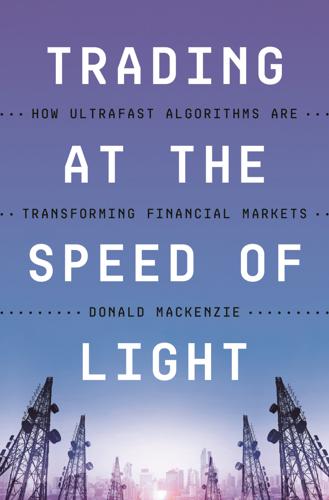
Trading at the Speed of Light: How Ultrafast Algorithms Are Transforming Financial Markets
by
Donald MacKenzie
Published 24 May 2021
In 1999, however, Cantor made its internal electronic system (rechristened “eSpeed”) “accessible through your own keyboard and through your own ability to input trades” (interviewee YD), giving dealers direct access to Cantor’s electronic interdealer Treasurys order book. FIGURE 4.3. Traders’ desks at a Treasurys dealer, late 1980s. Photograph courtesy of interviewee XU. Dealers’ clients, though, were still not given access to eSpeed. Dealers nevertheless feared that sooner or later Cantor “was going to disintermediate banks” (interviewee XO) by granting clients access, thus turning Treasurys into an all-to-all market. “[W]e [major dealers] got together,” says XO, “and said let’s put this consortium [of dealers] together so that [clients] can directly access our bids and offers and not go through Cantor.” The result was Tradeweb, launched in 1998, an electronic trading system (similar in structure to the later Bloomberg FIT system described at the beginning of this chapter) that was not an anonymous order book, but rather a means of automating the process whereby an institutional-investor client telephoned a small number of dealers to ask them to quote prices, in an interaction in which each party knew the other’s identity.

Shadow Libraries: Access to Knowledge in Global Higher Education
by
Joe Karaganis
Published 3 May 2018
Increasingly, educational publishers understand their competition not as other publishing companies, but as telecommunications companies, software companies, information retrieval providers, and the like. Unlike the music and film industries, however, the educational publishers have had more time, less pressure to evolve toward digital media, and markets that remain largely embedded in institutions, which are more resistant to disintermediation and reliance on individual textbooks than the various consumer markets for “content.” As a result, they have so far remained in control of these markets even as their roles are changing. In the student focus groups, OER curricula and resources intersected the paths of only a handful of students—notably those who had experience with the digital commons.

Traders, Guns & Money: Knowns and Unknowns in the Dazzling World of Derivatives
by
Satyajit Das
Published 15 Nov 2006
The arbitrage age The party almost never got started – the banks stopped selling credit risk almost as soon as they started. They didn’t actually have a lot of the better quality risks needed to make CDOs work; these clients had long ago bypassed the banks and raised money from investors directly. The banks had been ‘dis-intermediated’. The capital freed up proved difficult to redeploy. Opportunities didn’t seem to be abundant. Repurchasing shares was okay but it was starting to reach absurd levels. CDOs also reduced reported earnings. Equity analysts wanted banks to improve RAROC and keep earnings growing at an unrealistic rate.
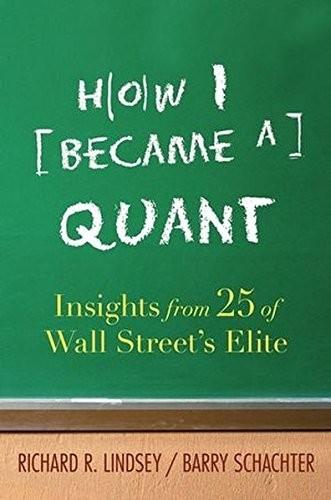
How I Became a Quant: Insights From 25 of Wall Street's Elite
by
Richard R. Lindsey
and
Barry Schachter
Published 30 Jun 2007
The Great Strategy Debate: From the 1990s to Today In parallel with the development of the derivatives market in the early 1990s, many traditional commercial banks were faced with a fundamental strategic issue: After watching the corporate loan market become commoditized due to intense competition and disintermediation in the capital markets, many commercial banks seriously considered changing their strategic focus. Some leaders such as Bankers Trust and JP Morgan underwent a fundamental transformation from a commercial bank to trading institutions. As with any transformation of this magnitude, the process was difficult and required strong commitment by senior management.
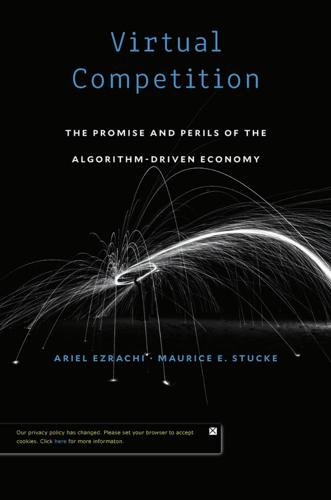
Virtual Competition
by
Ariel Ezrachi
and
Maurice E. Stucke
Published 30 Nov 2016
For instance, they can reduce costs by optimizing inventory levels; “to have the right amount of stock in the right place at the right time.”28 Manufacturers, distributors, and retailers can rely on sensors to track products and components throughout the supply chain from 8 Setting the Scene production to point-of-sale. Moreover, online platforms can unleash economic value on several levels. The sharing economy, for example, promises to increase efficiency through greater transparency and disintermediation. People can immediately profit from assets currently being underutilized—our cars, houses, power tools, or spare time. As more people rely on ride-sharing apps, fewer people will need to buy cars. Fewer cars, or individual car trips, mean less space devoted to garages and parking lots; space in high-rent urban centers like San Francisco now can be used for housing and other productive endeavors.

Narrative Economics: How Stories Go Viral and Drive Major Economic Events
by
Robert J. Shiller
Published 14 Oct 2019
No one can predict the effects of labor-saving and intelligent machines on livelihoods and work in the future, but the narratives themselves have the potential to drive amplified economic booms and recessions, as well as public policy. The narratives at the time of this writing about artificial intelligence and machine learning replacing human intelligence and disintermediating skilled workers lend an instability to expenditure and entrepreneurship patterns. These and other economic narratives may show up in the speculative markets, notably the real estate markets and the stock markets, to which we turn in the next two chapters. Chapter 15 Real Estate Booms and Busts Real estate narratives—stories about the often tantalizing increase in value of land, housing, locations, and homes—are among the most prominent economic narratives.
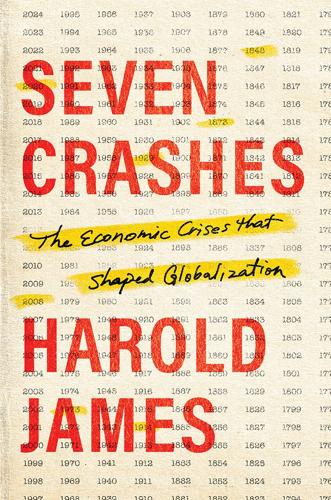
Seven Crashes: The Economic Crises That Shaped Globalization
by
Harold James
Published 15 Jan 2023
There might be parallels to the fiscal struggles of Depression-era European governments: for instance, one press article listed the details of the “unanimous opposition against the proposal to cash veterans insurance adjustment certificates expressed by Industrial and financial leaders throughout the country.”57 The press also delved into concerns about the congressional investigations, by a committee under Carter Glass, of the brokerage loans (“loans for others”) that had driven the surge in speculation in 1928 and 1929.58 In the summer of 1931 bad financial news from Europe added to the prevailing anxiety. The banking and the stock market crises fed into each other in a complex transmission channel. The reduced wealth as a consequence of the stock market panic reduced the collateral on which individuals and corporations could borrow, and thus pushed the process of credit disintermediation that characterized the Great Depression. Banks lent less, and as they cut back their loan books, they forced borrowers to liquidate stock and other assets, and drove prices down further. This is the process identified at the time by Irving Fisher as debt-deflation, one that was later built into a model of transmission mechanism as the credit channel by Ben Bernanke.

The Social Animal: The Hidden Sources of Love, Character, and Achievement
by
David Brooks
Published 8 Mar 2011
This phrase was apparently a buzzword that had been circling around in the company propaganda. As the session went on, he turned into a little jargon machine. “At the end of the day, we try not to boil the ocean but just look for the best win-wins,” he told her. Apparently people at this company were always drilling down and disintermediating the dialogue. They were driving maximum functionality, with end-to-end mission-critical competence to incent high-level blue-ocean change. Erica sat there with a smile pasted on her face. She appeared eager and supplicating. She debased herself. When he asked her what she wanted to do at the company, she slipped into the argot and threw it all back at him.

An Empire of Wealth: Rise of American Economy Power 1607-2000
by
John Steele Gordon
Published 12 Oct 2009
Wall Street brokerage houses and mutual funds began offering money market funds that paid a far higher rate of interest than savings accounts. People increasingly withdrew money from savings banks and savings and loan associations and moved it to the new money market funds, a movement referred to by the sonorous economic term “disintermediation.” Commercial banks, most of whose deposit base was in noninterest-bearing checking accounts, could cope. The other banks could not. Faced with a rapidly declining deposit base and with long-term real estate loans paying low interest, they went to the federal government for help. Congress was anxious to do so.
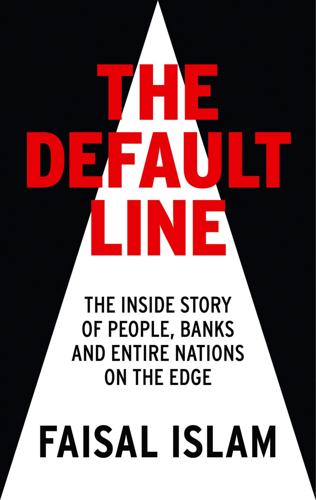
The Default Line: The Inside Story of People, Banks and Entire Nations on the Edge
by
Faisal Islam
Published 28 Aug 2013
I remember sitting in her living room with her children’s belongings boxed up ready for repossession, as I commentated on various elements of global financial crisis, including the sharpest collapse in world trade in a century. I thought: ‘How did we get here? Who let this happen?’ The answer was, a chain of disintermediation that started with savings in the East, and in particular in China. This book follows the root canals of Esther’s mortgage up through the securitisation department at Northern Rock, the shadow banking system centred on London, bad regulators, conflicted politicians, broken formulaic self-regulation emerging out of Basel, mistakes in the setting of interest rates by central bankers, concurrent problems in Spain, Cyprus, Iceland and Greece, and the prolonging of the crisis in a reluctant Berlin.

Amazon Unbound: Jeff Bezos and the Invention of a Global Empire
by
Brad Stone
Published 10 May 2021
Years ago, Jeff Bezos had given his marketplace team a few simple instructions: remove all friction to selling on Amazon; eliminate the barriers to cross-border trade; address any problems with innovative technology and automated systems, not costly manpower. One result was an explosion of low-priced selection that fueled the historic growth of Amazon’s e-commerce business. But another was the disintermediating forces of globalization that crushed Western sellers and created a dynamic that made it exceedingly difficult to protect intellectual property, prevent fraud, and fairly adjudicate disputes. Amazon knew about these problems but disguised them with its unrelenting corporate communications machine, which insisted that the company was a friend to entrepreneurs.
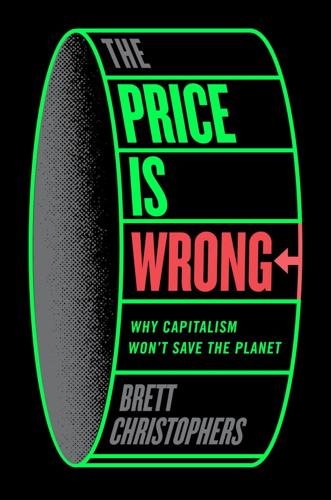
The Price Is Wrong: Why Capitalism Won't Save the Planet
by
Brett Christophers
Published 12 Mar 2024
Instead of relying on wholesale markets to procure all the electricity that they resell to users, retailers can procure some of that electricity under so-called ‘utility PPAs’. The second main type of buyer is a large-scale institutional electricity user of some kind, which, unlike the aforementioned resellers, buys the electricity for its own consumption – thus allowing it precisely to disintermediate such resellers to one extent or another. Such a PPA is referred to as a ‘corporate PPA’, but it is important to recognize that, even though the buyer is indeed typically a private sector firm, it does not have to be; what matters is that the purchase is for their own use. In 2019, for example, twenty UK universities collectively signed a ten-year PPA to take (and use) electricity generated at a portfolio of Scottish and Welsh wind farms owned by Norway’s Statkraft.4 The following year, the City of London Corporation, the UK capital city’s municipal governing body, entered into a fifteen-year off-take deal with a solar farm in Dorset owned by the French power producer Voltalia.5 While utility PPAs have existed for decades and are a feature of the worlds of both conventional and renewable power generation, corporate PPAs are of more recent vintage – dating to the late 2000s – and are largely a renewables phenomenon.
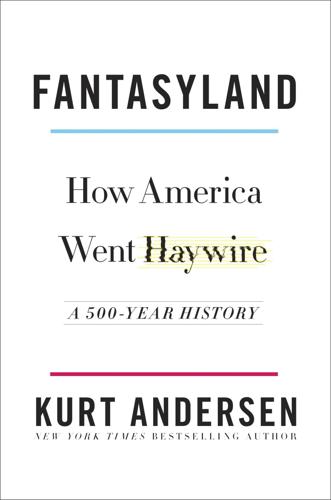
Fantasyland: How America Went Haywire: A 500-Year History
by
Kurt Andersen
Published 4 Sep 2017
But by the time Luther launched the Reformation in 1517, sixty years later, twenty million books had been printed—and more of them were Bibles than anything else. Print it, and they will come. During the century after printed English Bibles appeared, the literacy rate among English people tripled. Now millions of Christians were able to make good on Luther’s DIY Christianity. The Catholic Church and its priestly elite were disintermediated. Disruptive innovation? No new technology, during the thousand years between gunpowder and the steam engine, was as disruptive as the printing press, and Protestantism was its first viral cultural phenomenon. Apart from devolving religious power to ordinary people—that is, critically expanding individual liberty—Luther’s other big idea was that belief in the Bible’s supernatural stories, especially those concerning Jesus, was the only prerequisite for being a good Christian.
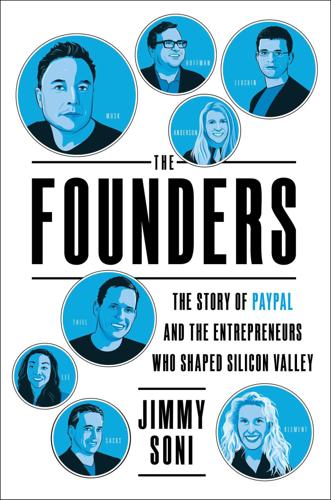
The Founders: The Story of Paypal and the Entrepreneurs Who Shaped Silicon Valley
by
Jimmy Soni
Published 22 Feb 2022
On April 8, Thiel and his team met with Peter Davison and Graeme Linnett, two of Confinity’s investors. In an email sent to Davison and Linnett, Thiel outlined the main takeaways from their discussion, including: “We will investigate further whether (and what kind) of collaboration with eBay might be possible—especially given the consumer-to-consumer disintermediation model that our two companies share.” However, the team shelved the idea for the rest of 1999. “eBay was such a sketchy company,” Thiel later told a Stanford audience, “multilevel marketing people selling junk on the internet.” Confinity, on the other hand, built cutting-edge mobile payment technology.
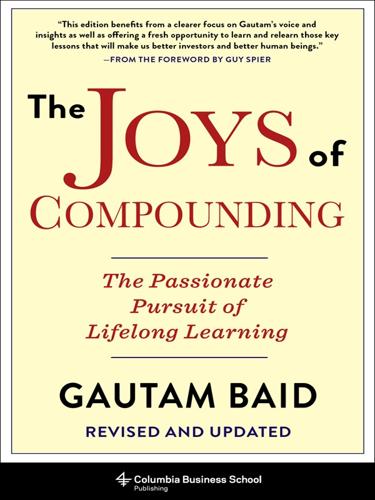
The Joys of Compounding: The Passionate Pursuit of Lifelong Learning, Revised and Updated
by
Gautam Baid
Published 1 Jun 2020
Glassman, James K., and Kavin A. Hassett. “Dow 36,000.” The Atlantic, September 1999. https://www.theatlantic.com/magazine/archive/1999/09/dow-36-000/306249. Goodwin, Tom. “The Battle Is for the Customer Interface.” TechCrunch, March 3, 2015. https://techcrunch.com/2015/03/03/in-the-age-of-disintermediation-the-battle-is-all-for-the-customer-interface/. Govindarajan, Vijay, Shivaram Rajgopal, and Anup Srivastava. “Why Financial Statements Don’t Work for Digital Companies.” Harvard Business Review, February 26, 2018. https://hbr.org/2018/02/why-financial-statements-dont-work-for-digital-companies.
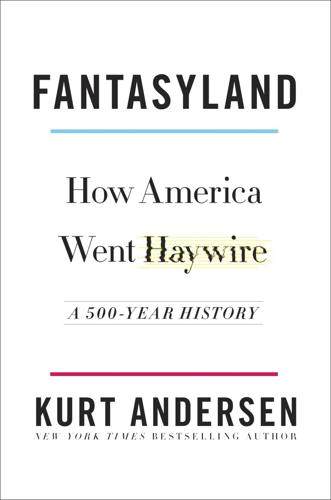
Fantasyland
by
Kurt Andersen
Published 5 Sep 2017
But by the time Luther launched the Reformation in 1517, sixty years later, twenty million books had been printed—and more of them were Bibles than anything else. Print it, and they will come. During the century after printed English Bibles appeared, the literacy rate among English people tripled. Now millions of Christians were able to make good on Luther’s DIY Christianity. The Catholic Church and its priestly elite were disintermediated. Disruptive innovation? No new technology, during the thousand years between gunpowder and the steam engine, was as disruptive as the printing press, and Protestantism was its first viral cultural phenomenon. Apart from devolving religious power to ordinary people—that is, critically expanding individual liberty—Luther’s other big idea was that belief in the Bible’s supernatural stories, especially those concerning Jesus, was the only prerequisite for being a good Christian.

The Singularity Is Nearer: When We Merge with AI
by
Ray Kurzweil
Published 25 Jun 2024
BACK TO NOTE REFERENCE 164 Alex Shashkevich, “Meeting Online Has Become the Most Popular Way U.S. Couples Connect, Stanford Sociologist Finds,” Stanford News, August 21, 2019, https://news.stanford.edu/2019/08/21/online-dating-popular-way-u-s-couples-meet; Michael J. Rosenfeld, Reuben J. Thomas, and Sonia Hausen, “Disintermediating Your Friends: How Online Dating in the United States Displaces Other Ways of Meeting,” Proceedings of the National Academy of Sciences 116, no. 36 (September 3, 2019): 17753–58, https://doi.org/10.1073/pnas.1908630116. BACK TO NOTE REFERENCE 165 Even if a 2024 smartphone didn’t have access to 2024 cell service, it could still store all the text on the English-language Wikipedia in its native memory.

Valley of Genius: The Uncensored History of Silicon Valley (As Told by the Hackers, Founders, and Freaks Who Made It Boom)
by
Adam Fisher
Published 9 Jul 2018
There was no concept of the user; that was not part of the metaphor at all. Mark Pincus: I mark Napster as the beginning of the social web—people, not pages. For me that was the breakthrough moment, because I saw that the internet could be this completely distributed peer-to-peer network. We could disintermediate those big media companies and all be connected to each other. Steven Johnson: To me it really started with blogging in the early 2000s. You started to have these sites that were oriented around a single person’s point of view. It suddenly became possible to imagine, Oh, maybe there’s another element here that the web could also be organized around?

The Making of Global Capitalism
by
Leo Panitch
and
Sam Gindin
Published 8 Oct 2012
Available at bea.gov. 57 Edwin Dickens, “A Political-Economic Critique of Minsky’s Financial Instability Hypothesis: The Case of the 1966 Financial Crisis,” Review of Political Economy 11: 4 (1999), pp. 392–3. 58 “In addition to limiting the buildup of dollar assets in foreign official hands, these goals included easing Treasury financing operations, limiting financial disintermediation, promoting the growth of bank credit, especially mortgage loans, discouraging inflation, and clearly the top priority, encouraging a more complete utilization of the nation’s [resources].” Richard N. Cooper and Jane Sneddon Little, “US Monetary Policy in an Integrating World: 1960 to 2000,” New England Economic Review 3 (2001), p. 86. 59 Quoted in Hawley, Dollars and Borders, p. 97. 60 See Aaron Major, “The Fall and Rise of Financial Capital,” Review of International Political Economy 15: 5 (December 2008). 61 Hawley, Dollars and Borders, pp. 112, 119–20. 62 Joanne Gowa, Closing the Gold Window: Domestic Politics and the End of Bretton Woods, Ithaca: Cornell University Press, 1983, p. 99. 63 These are the words of a Federal Reserve official interviewed in Gowa, Closing the Gold Window, p. 145. 64 Ibid., pp. 63, 129.

Money Changes Everything: How Finance Made Civilization Possible
by
William N. Goetzmann
Published 11 Apr 2016
Alignment of incentives to promote growth works a lot better than a control-and-command approach. Keynes, of course, posited a central role for government in solving the disjunctions caused by unchecked financial globalization and bad savings habits. His legacy is a financial architecture designed to blunt the potential for colonial exploitation by disintermediating lenders and sovereign borrowers—replacing that relationship with a collective institutional financial organization. Did Bretton Woods save the world from a revival of imperialism? Did it bring more nations into the fold of prosperity? Whether it did or not, it undeniably altered the way that nations interact with one another and with the capital markets.

The Marshall Plan: Dawn of the Cold War
by
Benn Steil
Published 13 Feb 2018
Less developed countries, in contrast, tend to be run by governments that lack the capacity and, frequently, the will to deliver public goods. Foreign aid, as Nobel economist Angus Deaton has emphasized, not only fails, all too frequently, to develop such local capacity but to undermine it. Aid can be designed to bypass governments, and to go directly to the population, but disintermediation does nothing to address the problem that effective government is necessary for development—something Marshall’s State Department took as a given.145 It should not be surprising that large-scale American aid has not had transformative effects in more recent post-conflict societies. As of January 2015, U.S. relief and reconstruction aid to Afghanistan totaled $110 billion; to Iraq, $61 billion.146 The combined nominal total of $171 billion is about $40 billion more than the present value of all Marshall aid.
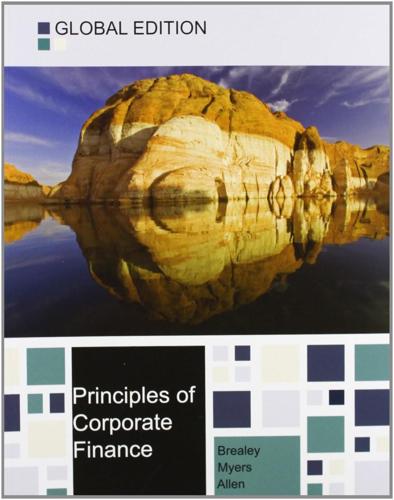
Principles of Corporate Finance
by
Richard A. Brealey
,
Stewart C. Myers
and
Franklin Allen
Published 15 Feb 2014
Discount rate Rate used to calculate the present value of future cash flows. Discounted payback rule Requirement that discounted values of cash flows should be sufficient to pay back initial investment within a specified time. Discriminatory price auction Auction in which successful bidders pay the price that they bid (cf. uniform price auction). Disintermediation Withdrawal of funds from a financial institution in order to invest them directly (cf. intermediation). Dividend Payment by a company to its stockholders. Dividend discount model Model showing that the value of a share is equal to the discounted value of future dividends. Dividend reinvestment plan (DRIP) Plan that allows shareholders to reinvest dividends automatically.
…
Interest rate parity Theory that the differential between the forward exchange rate and the spot exchange rate is equal to the differential between the foreign and domestic interest rates. Interest tax shield The extra after-tax income that results from the tax deductibility of interest. Intermediation Investment through a financial institution (cf. disintermediation). Internal finance Finance generated within a firm by retained earnings and depreciation (cf. external finance). Internal growth rate The maximum rate of firm growth without external finance (cf. sustainable growth rate). Internal rate of return (IRR) Discount rate at which investment has zero net present value.
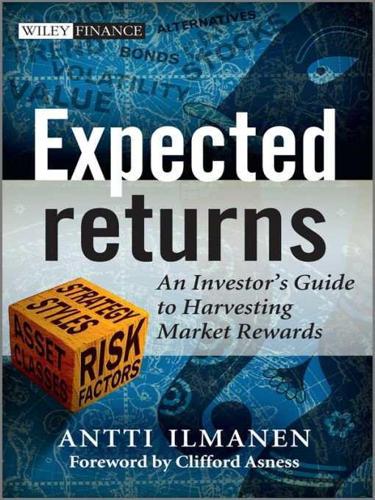
Expected Returns: An Investor's Guide to Harvesting Market Rewards
by
Antti Ilmanen
Published 4 Apr 2011
These unsustainable developments reversed sharply in 2008 (see Figure 27.4). Figure 27.4. U.S. financial sector’s share of corporate profits and market cap. Source: Haver Analytics. Financialization is related to several other trends: rising leverage and asset richening; securitization and its flip side (i.e., disintermediation from banks); deregulation and active financial innovations; expansion of the delegated asset management industry (institutionalization of asset holding and trading); the finance sector’s increasing political influence; widening income inequality within countries; and globalization and integration of capital markets.

The Golden Passport: Harvard Business School, the Limits of Capitalism, and the Moral Failure of the MBA Elite
by
Duff McDonald
Published 24 Apr 2017
In 1993–94, a boom year for the economy, nearly half of all firms laid off an average of 10 percent of their workforce.6 “Not only did the uppermost managers of the nineties now receive compensation packages that towered over those of their predecessors,” observes Thomas Frank, “but as Wall Street placed a very predictable value on layoffs and downsizing, CEOs often saw their own pay rise in direct proportion to the number of employees they could expel from the firm. . . . This equation was the origin of many of the big management ideas of the decade: delayering, disaggregating, outsourcing, reengineering, disintermediating.”7 Having achieved most of their objectives—including the freedom to hire and fire at will and the weakening of regulations—it is at this point, Mizruchi argues, that the American corporate elite lost any vestiges of cohesiveness, whether that was its moderately liberal stance of the postwar years, or its viciously probusiness response to the economic crisis of the 1970s.